Top 10 China Travel Itineraries
Are you looking for a suitable China travel itinerary, which matches your vacation time?
Here, we offer the top 10 China travel itineraries including lengths of 1 week, 10 days, 2 weeks, 3 weeks, and more. Read on to find which is best for you.

1. 1-Week in China (Beijing–Xi'an–Shanghai)
Spending 1 week in China has a basic itinerary. You can choose three representative cities to help you learn about the country. Our 1-week China travel itinerary is suitable for first-time travelers in China.
Beijing is the first choice. It is the best gateway for foreign tourists to learn about China. Hike on the Great Wall, which is the symbol of the Chinese nation. Explore the Forbidden City — the largest and best-preserved ancient imperial palace complex. Appreciate the imperial garden at the Summer Palace, which was originally used as a summer retreat for the imperial court.
As the ancient capital city of 13 dynasties, Xi'an is a place to learn about Chinese history and civilization. Discover the secrets of the Terracotta Army, which was buried with China's first emperor.
Experience China's development in Shanghai. Visit the Shanghai Tower — the tallest building in China. Walk along the Bund to see different types of buildings and listen to their stories.
2. 10-Day China Itinerary (Beijing–Xi'an–Guilin–Shanghai)
10 days in China will give you a relaxing traveling pace. You can choose several different types of cities, such as historical cities and scenic cities. Our 10-day China itinerary is designed for first-time travelers in China.
Immerse yourself in Chinese history and culture in Beijing and Xi'an. Appreciate the stunning night view on the Great Wall. Learn about the stories of the Chinese emperors who lived in the Forbidden City. Visit the Terracotta Army and the ancient city wall.
The picturesque scenery and relaxing countryside lifestyle in Guilin will amaze you. Walk along the Longji Rice Terraces accompanied by the breeze and the sound of birds singing. Take a cruise along the Li River to see graceful bamboo groves, rice paddies, and lumbering water buffalo in the river. Explore a local market in Yangshuo to learn about the real countryside life in China.
In Shanghai, you will experience China's economic development via an in-depth Bund culture discovery tour, which is in sharp contrast to the relaxed ambience in Guilin.
Discover real reviews of Highlights Travel Family 's best-rated service across trusted platforms.
3. 2-Week China Itinerary (Beijing–Xi'an–Chengdu–Shanghai)
It's not enough to just go sightseeing as part of a 2-week itinerary. Fun and cultural activities should be added. Our 2-week China travel itinerary focuses more on cultural experiences. If you have a deep interest in Chinese culture and language, or are planning a family trip, you will enjoy it.
In Beijing, visit the Temple of Confucius and Beijing Imperial Academy to learn about China's traditional education system. Learn about five gigantic Chinese characters on a hillside by the Great Wall. Practice tai chi with a local master to learn about Chinese culture and its traditional health science.
Visit an ancient academy in Xi'an to learn about China's traditional national costume and try on the traditional dress of the Han Chinese people, imagining what life was like in ancient times.
See cute pandas at a breeding research base in Chengdu and go to Chengdu's last remaining farmers' market where you can try using Chinese to purchase some special delicacies from the locals.
Discover how Shanghai impacts China and how China impacts the world by exploring the Bund, which witnessed the golden age of Shanghai in the 1920s, taking a ferry across the Huangpu River, and ascending Shanghai's tallest building — the Shanghai Tower.
Get more ideas on our 2 Weeks in China: 3 Top Itinerary Ideas for Couples and Families
4. 3-Week China Itinerary (Beijing–Silk Road–Shanghai)
Three weeks allows you to experience a more colorful China. After a 4-Day Beijing Highlights and Great Wall Night Tour , you can travel to West China, where you can feel a sense of exploration and freshness.
You will see many relics along the Silk Road . Discover the secrets of the Terracotta Army in Xi'an. Appreciate the Rainbow Mountains in the Zhangye National Geopark — a special landform in West China. Marvel at the Mogao Caves and desert scenery in Dunhuang.
Explore the ruins of the ancient city of Jiaohe in Turpan. Visit Erdaoqiao Market — the biggest bazaar in Urumqi. Explore Kashgar Old City, which was made from yellow mud bricks and stands on a small hill.
Then begin a 5-day relaxing and comfortable tour in Shanghai, Hangzhou, and Suzhou to see elegant classic gardens and tranquil water towns.
5. 5-Day Yangtze Delta Itinerary(Shanghai–Hangzhou–Suzhou)
Five days in China may be a little hurried. So our 5-day itinerary includes three important cities that are close to each other in the Yangtze River Delta from where you can experience China's classic beauty. There is no need for a visa with this itinerary.
In Shanghai, visit Yu Garden to see its exquisite layout and beautiful scenery. Walk around the former French Concession precinct to learn about Shanghai's history.
In Hangzhou, enjoy a quiet boat trip on West Lake. Visit Meijiawu Tea Plantation to learn about the process of making tea.
Visit Tongli Water Town — a quiet and classic Chinese town in Suzhou. Take a boat trip along the canal to see the old town and wander through alleys to appreciate its ancient architecture.
6. 4-Day In-Depth Panda Tour in Chengdu
Chengdu is home to giant pandas. A trip to China without seeing pandas is incomplete.
A 4-Day In-Depth Panda Tour will impress you. Hike in Dengsheng Gorge to explore the habitat of wild pandas. Visit at night to see what the cute pandas do at night without tourists and noises to distract them. Be a one-day panda keeper, which includes cleaning the enclosure, weighing and cleaning bamboo, and making panda cakes.
7. 4-Day Yangtze Cruise
This itinerary is completely comfortable and leisurely.
A cruise traveling slowly along the Yangtze River between Yichang and Chongqing will let you enjoy the magnificent Three Gorges scenery while drinking a cup of coffee or glass of wine. Appreciate sunrises, sunsets, and starry nights on the sundeck. Learn how to play Chinese mahjong, a popular Chinese recreational activity. Take part in Chinese painting lessons and traditional Chinese medicine lessons.
You can also take some shore excursions. Visit Fengdu Ghost City , which is linked with the ghost culture, the Three Gorges Dam, which is the largest dam in the world, and Shennong Stream, where you can see rushing waterfalls.
8. 6 Days in Guizhou: Ethnic Culture
You can experience the centuries-old ethnic civilization and world-leading technical miracles in Guizhou.
Wander along the flagstone pavements and enjoy a peaceful time under the shade of ancient trees in Qingyan Ancient Town. Get ready for a special welcoming ceremony from the Miao people — drinking their homemade rice wine at the village's entrance. Learn how to make paper from wood pulp and how to make a fine batik in the village.
Pay a visit to FAST (Five-hundred-meter Aperture Spherical radio Telescope), the world's largest aperture, and learn more about it at the museum.
9. 8 Days in Tibet: Highland Scenery and Religion
If you have more time in China, start a tour to Tibet . The fresh air, mysterious Tibetan culture, and breathtaking scenery will bring you great peace of mind.
You can admire the Potala Palace, which is the symbol of Tibet. Visit the Jokhang Temple and take part in a special local prayer ritual, going clockwise around it with prayer wheels. Take a stroll along Barkhor Street and see some Tibetan handicrafts. Appreciate the beautiful scenery at Yamdrok Lake, which shines turquoise in the sunlight.
10. 8 Days in Yunnan: Nature and Ancient Towns
If you can't get used to the altitude sickness in Tibet but want to experience the pure beauty of nature, then go to Yunnan . There is similar natural beauty there that makes you feel peaceful and close to nature, and it has well-preserved ancient towns and villages.
Visit the Stone Forest in Kunming, where you can see various shapes of limestone and the Naxi people's colorful embroidery and minority dances. Wander along the lakeside of Erhai in Dali, bathed in the breeze and appreciating the crystal-clear water sparkling in the sunlight. Take a stroll in the Old Town of Lijiang and see handicrafts made of silver, leather, and textiles.
Explore an Authentic China with Us
We have escorted 10,000 customers traveling across China every year since 1998. We aim to create your own unique trip, which will show you an authentic China in an insightful way.
Tell us your interests and needs in our Create My Trip service. Our travel adviser will tailor-make a professional and satisfying China travel itinerary for you. You can check our Top 10 China Tours for reference.
- Best China Tours 2024/2025: Top Tours for First & Return Trips
- 9-Day Beyond the Golden Triangle
- 2-Week Beijing, Xi'an, Chengdu, Shanghai Educational Family Vacation
- 14-Day China Natural Wonders Discovery
- 15 Best Places to Visit in China (2024)
- Best (& Worst) Times to Visit China, Travel Tips (2024/2025)
- How to Plan a 10-Day Itinerary in China (Best 5 Options)
- 8 Days in China: Top 15 Tours and Itineraries (2024/2025)
- China Weather in January 2024: Enjoy Less-Crowded Traveling
- China Weather in February 2024: Places to Go, Costs, and Crowds
- China Weather in March 2024: Destinations, Crowds, and Costs
- China Weather in April 2024: Where to Go (Smart Pre-Season Pick)
- China Weather in May 2024: Where to Go, Crowds, and Costs
- China Weather in June 2024: How to Benefit from the Rainy Season
- China Weather in July 2024: How to Avoid Heat and Crowds
- China Weather in August 2024: Weather Tips & Where to Go
- China Weather in September 2024: Weather Tips & Where to Go
- China Weather in October 2024: Where to Go, Crowds, and Costs
- China Weather in November 2024: Places to Go & Crowds
- China Weather in December 2024: Places to Go and Crowds
Get Inspired with Some Popular Itineraries
More travel ideas and inspiration, sign up to our newsletter.
Be the first to receive exciting updates, exclusive promotions, and valuable travel tips from our team of experts.
Why China Highlights
Where can we take you today.
- Southeast Asia
- Japan, South Korea
- India, Nepal, Bhutan, and Sri lanka
- Central Asia
- Middle East
- African Safari
- Travel Agents
- Loyalty & Referral Program
- Privacy Policy
Address: Building 6, Chuangyi Business Park, 70 Qilidian Road, Guilin, Guangxi, 541004, China
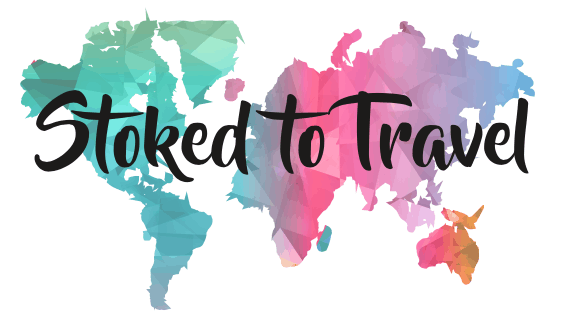
China Itinerary: The Perfect Two Week Itinerary in China
China, the second largest country in the world, is one of the most diverse and contrasting destinations on the planet. Ancient traditions and complex history are sharply contrasted with the modern and futuristic architecture and transport. China can be loud and chaotic, and also rustic and remote. Having travelled extensively through the country, it really is like nowhere I’ve even been. And planning our China itinerary was one of the biggest challenges.
The country is vast, with so many stunning national parks and natural wonders, bustling cities and ancient UNESCO World Heritage Sites. It’s certainly overwhelming to work out where to include in your China itinerary.
I travelled around China with my Dad, which was incredible. Despite the extreme July temperatures we faced, we kept up with each other and were definitely on the same page when it came to deciding where to go and what to do.

So here’s my suggested China itinerary. It’s ideal for first-time visitors who are keen to absorb as much as possible in two weeks. This itinerary will take in the bustling metropolises of Beijing, Shanghai and Chengdu, home to an awesome panda sanctuary. Away from the cities, it will take in Suzhou, known as the ‘Venice of the Orient’ and the magical riverside town of Yangshuo. It will also visit the otherworldly landscapes of Zhanjiaje National Park and the dizzying heights of Tianmen Mountain.
Let’s jump in!
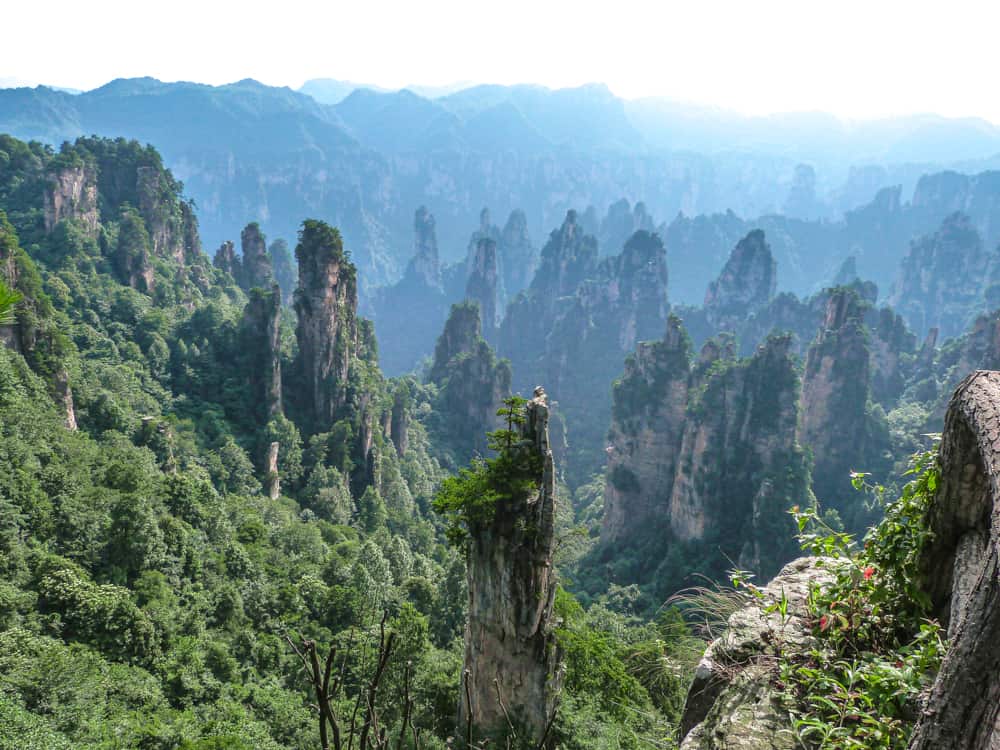
China Itinerary: Essential Information
Visa requirements for china.
First things first, how to travel to China!
Most nationalities need a visa to enter China, including those from the US, the UK, EU and Canada. It’s most likely you need to visit your nearest Chinese embassy to get this.
In the UK, the Chinese embassies are located in Manchester and London . Check the latest on China entry requirements on the FCO website here.
Top tip: Your passport needs to be in good condition in order to apply for visa. Mine had water damage from 5 years prior, and was rejected. Luckily, I had enough time to apply for another one!
Some countries’s citizens are exempt from needing Chinese visas, including Singapore and Japan. Definitely check the most up to date information at your relevant country’s travel advice page.
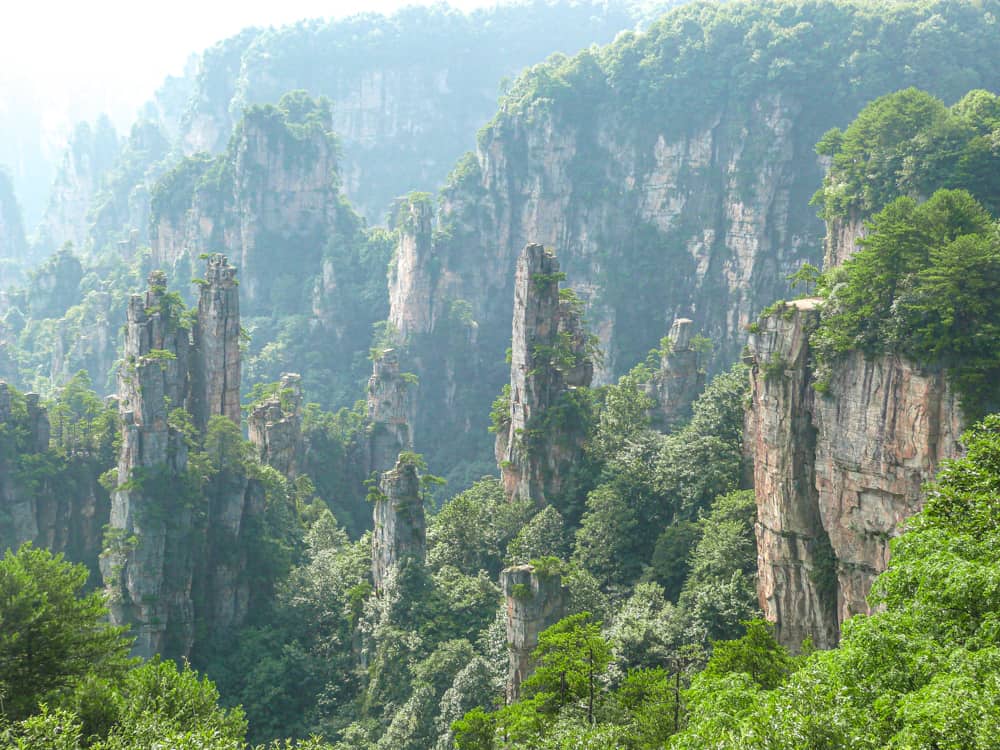
How to get to China
There are a large number of international airports in China, with many offering direct flights to the UK. However, for tourism purposes, it makes most sense to land into Beijing Airport (PEK) which is the capital of China. Alternatively, you could land into Shanghai Pudong Airport (PVG).
Other airports with direct routes to the UK, and other major international destinations include Chengdu and Guangzhou.
For this itinerary, I suggest flying into Beijing and departing from Chengdu. We found this straight forward to book with British Airways, who offers direct flights for both of these airports.
Other airports serving the main airports in China including:
- China Southern
- China Airways
- China Eastern
- United Airlines
- American Airlines

Getting around China
China is vast, but fortunately, well connected. Flying is the most efficient and convenient way to travel around China, and the domestic network is very comprehensive.
The main airlines covering domestic routes include:
- Shanghai Airlines
- Sichuan Airlines
- Shenzhen Airlines
To explore the country, we used a mixture of domestic flights and train travel to ensure an authentic experience. I’ve flown on Air China, Shanghai Airlines, China Southern and China Eastern. I can definitely recommend all these airlines for a safe and comfortable flight, but they can all be a little delayed sometimes.
Train travel
Trains in China are awesome – especially the high speed trains, many of which reach speeds of up to 400mph. I recommend including several trains throughout a China itinerary for the experience. It can also be more convenient as the stations are typically closer to the town/city centre than airports.
Whilst the train experience is often air conditioned and comfortable, the ticket purchasing experience is not.

You can book the tickets in advance online , but there’s two challenges here. Firstly, the official website is nearly entirely in Chinese. Then, there are tiny subtle differences in the language that can mean you book the wrong station. For example, Suzhou and Suzhou. One is the popular town consisting of beautiful waterways near Shanghai, and the other is in the middle of nowhere. But their names are the same.
Furthermore, the tickets either need to be collected at the station, or be delivered to a Chinese address. For many travellers this wouldn’t be feasible.

After making the above mistake, we chose to arrange the rest of our train tickets at the train station the day before. Some of the train stations in China are massive, particularly Beijing and Shanghai. So we found this to be a great way to familiarise ourselves with the station beforehand and without bags.
The high-speed trains in China aren’t cheap, but are efficient, comfortable and an exciting experience. You definitely pay a premium for business class too.
If you’re travelling around China on a budget, then consider opting for the older trains which still operate. They’re a fraction of the cost.
The Seat61 guide is the ultimate resource for booking all train travel in China.
The Maglev train
This train serves Shanghai’s Longyang Road Station to Pudong International Airport (PVG). It’s an 8 minute journey, covering 30km at a top speed of 430km/h (267mi/h).
The unique element of this train is that it runs on magnetic levitation and Shanghai is the only place in the world to have this kind of train.
The Maglev train reaches its ultra-high speeds by using magnets’ opposite poles on the railway track to create levitation. In fact, it is the world’s fastest train!
Fares for the Maglev train in Shanghai are CNY50 (approx. £5.75/USD$7) which is more expensive than subway the whole way. But for the unique experience of travelling by maglev train, I highly recommend!
You can buy tickets at a machine at Longyang Road Station, and the train departs every 15-20 minutes.

Travelling by bus is the cheapest way to get around China, but definitely the slowest. In a two week trip, I wouldn’t recommend opting for buses as it will highly impact the time you can spend in each place.
Furthermore, bus stations (particularly the one in Beijing) are huge and confusing, with few signs in English. It could easily become a stressful experience with luggage if you’re running late.
Buses within the cities are often modern, clean and frequent, but again the language barrier can prove challenging on the bus system.
The subway is an extremely efficient way to get around, and it nearly always has the station name translated into English. Subway trains are modern, clean and fast and easy to navigate for first time visitors.
We used the subway extensively in Beijing and Shanghai and found it to be excellent. And despite the sheer number of people using it, they manage to scan every bag and every person before you head underground on the escalator. Very impressive!
Like many cities around the world, you need a rechargeable smart card which you can buy from a machine or a cashier. The fares are super cheap (normally around 2-5 CNY) which is 20-50p or USD$0.30-0.70).

Taxis are plentiful and generally quite cheap. The drivers rarely speak English, even in Beijing or Shanghai so always take a business card from your hotel with the address on it.
We found some taxi drivers to be somewhat unwilling to take us as foreign tourists. We’re still unsure why, but one driver even refused to take us from the bus stop to the Great Wall of China, despite us pointing at a picture of it in a guidebook.
When is the best time to travel to China?
As China is such a vast country, spanning five different time zones and dozens of different climate zones, deciding when to go very much depends on what you’re planning to see and do, and personal preferences.
Generally, the best times to visit are during the transition seasons of spring (April and May) and autumn (September to October). During these months, the temperatures are warm but comfortable. Best of all, the crowds are lower!
The summer months, particularly July and August can be scorching hot, with extreme humidity and heavy rainfall. The crowds can also be high during this time.
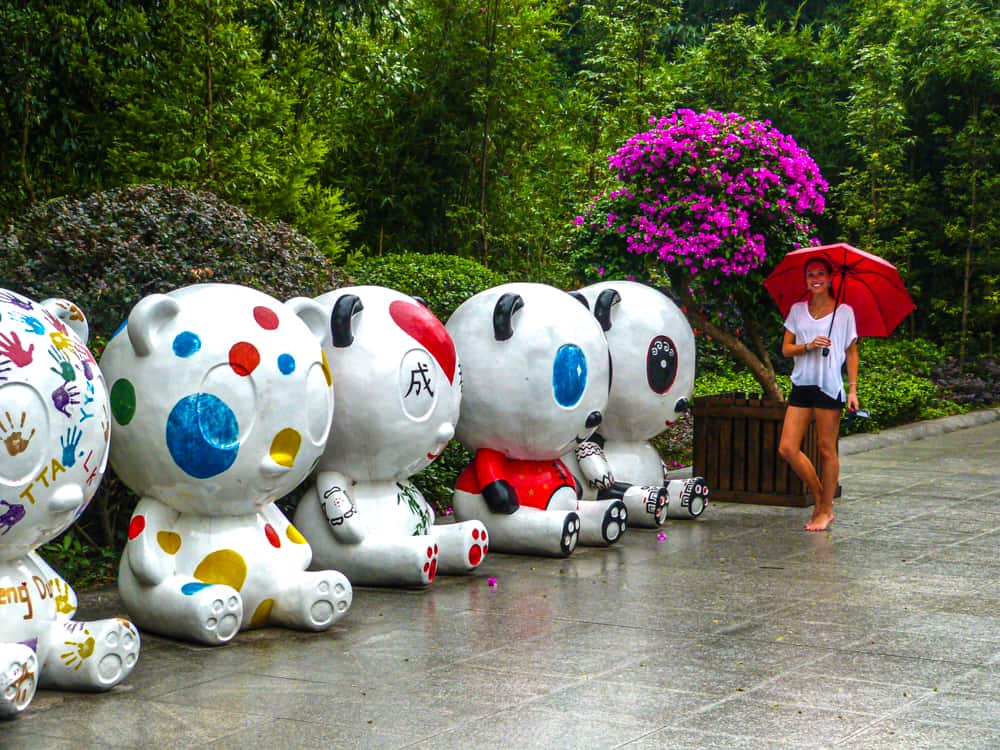
I wouldn’t necessarily say avoid visiting during these months. But I’d prepare for extreme heat and humidity. I went in July and although we experienced a heatwave with daily temperatures in excess of 45c (113 degrees), we had an amazing time.
A key time to avoid visiting is during the Chinese New Year, which depending on the lunar calendar, tends to fall in January or February each year. Lasting around 10 days, this is a major holiday period for Chinese people and everywhere gets seriously busy.
Visiting China in the winter means much of the country is very cold, particularly Beijing. However, if you want to see the Great Wall of China covered in snow, then this is a great time to visit!

Other useful information
It’s a well known fact that China is very strict on internet and social media use. Internet use is heavily controlled and sites such as Facebook, YouTube and Instagram are blocked. However, the way around this is to use a VPN (Virtual Private Network). You can set this up in your home country before arriving. Some of the best VPN apps for your phone or laptop are:
This guide here on the best VPNs in China may be useful, as well as this detailed guide to the best Apps in China .
In terms of WiFi on the go, I found it could be quite hit and miss. I would generally recommend a local prepaid SIM if you want to stay connected whilst travelling in China. You can arrange this in arrivals at the airport, as you need ID and you’d already have your passport on you.
You can arrange a 30-day SIM card to be delivered to your hotel using this service, which I highly recommend.
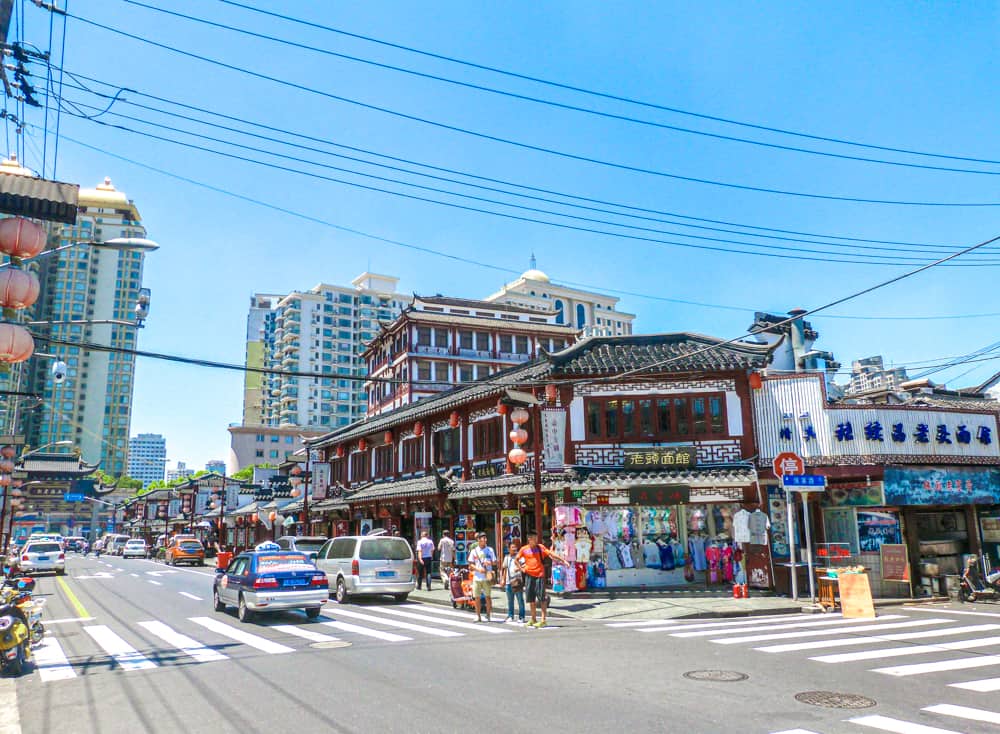
Food in China
Everyone in the world knows something about Chinese food. Whether it’s the familiarity of your local takeaway, or the much discussed fact that the Chinese eat meats such as dog.
I’m pleased to report that I found it fairly easy to avoid unusual meats I didn’t want to eat. You can avoid going to the markets that sell and prepare these meats, and you can opt for the vegetarian option on menus.
We often selected chicken with our meals, and as much as we certainly hope we only ate chicken, we can’t ever be 100% sure.

If you are very unwilling to eat anything too foreign, it’s best to politely refuse any gestures from locals to eat at their homes. This could happen, and if it does, you may run the risk of being presented with a meat you don’t want to eat.
You could join a foodie tour, such as this small-group Lonely Planet food in Beijing tour with a local guide. This is a great way to get to grips with the cuisine, with the guidance of a local!
We found a good mix of international and Chinese restaurants all over China. In some more rural places, such as Zhangjiajie, there was a short street of restaurants, so we picked one and hoped for the best. In other places, such as Chengdu or the other big cities, there is a great variety of restaurants.

Yangshuo, the penultimate place in my China itinerary is famous for mangos during the summer months. This charming town is packed with smoothie stands, so you can enjoy the most fresh and delicious mango drinks all day long.
Food is generally really affordable throughout China, but at major tourist attractions, such as the Great Wall of China, we found the food to be extortionate.
We also found beer was readily available throughout China, even in cafes during the day.
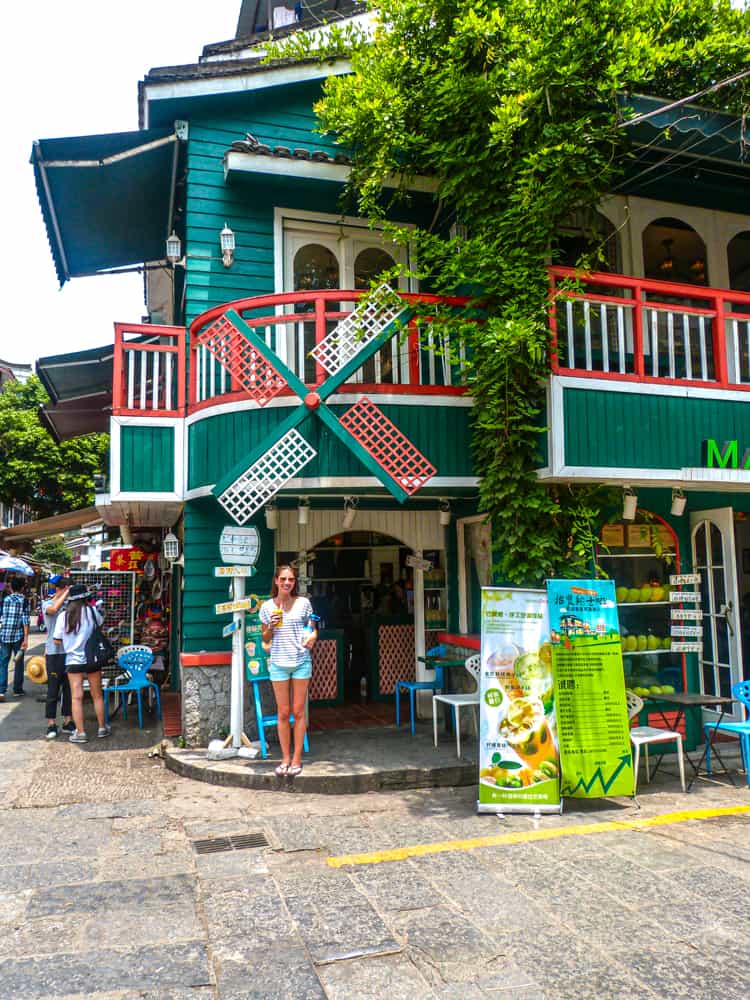
Language in China
One of the most challenging aspects of travelling in China is the language barrier.
The official language of China is Mandarin, which differs to Hong Kong, where the main language is Cantonese. There are also hundreds of dialects throughout the country. We quickly found out that actually, speaking English is quite uncommon, even in the big cities. In more rural areas such as Zhangjiajie, it was rare.

Unfortunately, we found more local people who didn’t want to try and help us than those that did. I don’t want to say this is a poor reflection of the Chinese people, but few people wanted to let us even attempt Mandarin using the translations from our guidebooks.
We also found entire receipts passed to us in Mandarin, and to be honest, we had no idea what they said or what the amount came to.
Overall, I would say China is the most challenging place I have travelled around. With so little written in English, and often little help from locals, there were times we spent totally lost and wandering around.
Google Translate app has definitely helped things along, you just need to find someone who’s willing to stop and help you.
Cultural customs
Although China isn’t conservative like the Middle East, I do recommend dressing without bearing too much skin if you’re a woman. I wore shorts and a t-shirt most days and this was fine.
In terms of the Chinese people, it depended where we were as to our interactions. At a colourful night fair in Yangshuo, a local family thrust their baby into my arms and crowded round me for a photo and were so friendly, despite the language barrier.
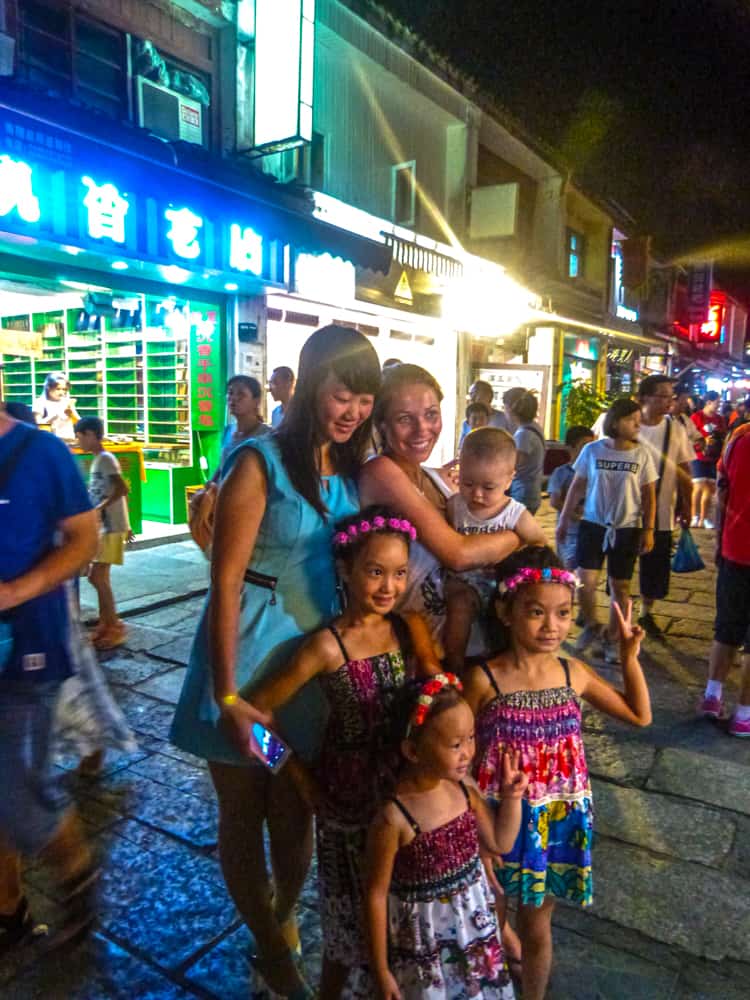
But in Zhangjiajie, we couldn’t get a single local to stop and help us with the walking routes on a map. In Ghangzhou, we had our only really bad experience where some airport taxi drivers were nasty verbally. They even put their middle fingers up when we asked how much to a hotel.
On the other hand, we had some wonderful experiences where despite the total language barrier, a train station steward patiently helped us when we had got on the train to the wrong Suzhou. He allowed me to type into Google Translate to ask questions and responded back by typing in my phone. Another man at an airport hotel which was fully booked in Ghangzou arranged for a friend to pick us up and take us to a hotel in town, for a very good rate.
You will also notice things like spitting in the street and throat hacking, but it isn’t normally as bad as you might have expected.
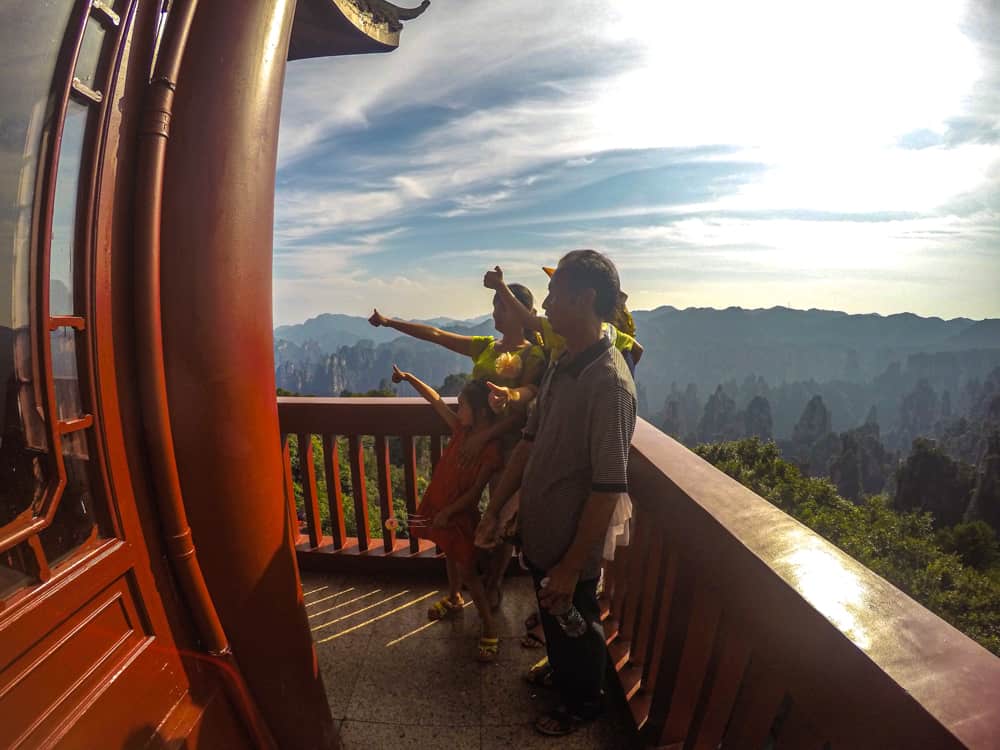
Travel independently or join a tour?
Joining a tour to explore China can be a great idea, especially to help you navigate the very tricky language barrier. With a local guide leading the way, it can be a great way to visit all of the top places without getting too lost or stuck along the way. You also have the added benefit of a wealth of local knowledge, particularly around the dinner table or at cultural attractions.
We travelled independently, which made for an exhausting but rewarding experience. It allowed us to also make last minute changes, such as deciding to forfeit a night in Guilin and add an extra night in Yangshuo, as it was so amazing. We were also able to add in down time when we needed to, or upgrade hotels when we urgently needed an extra good shower.
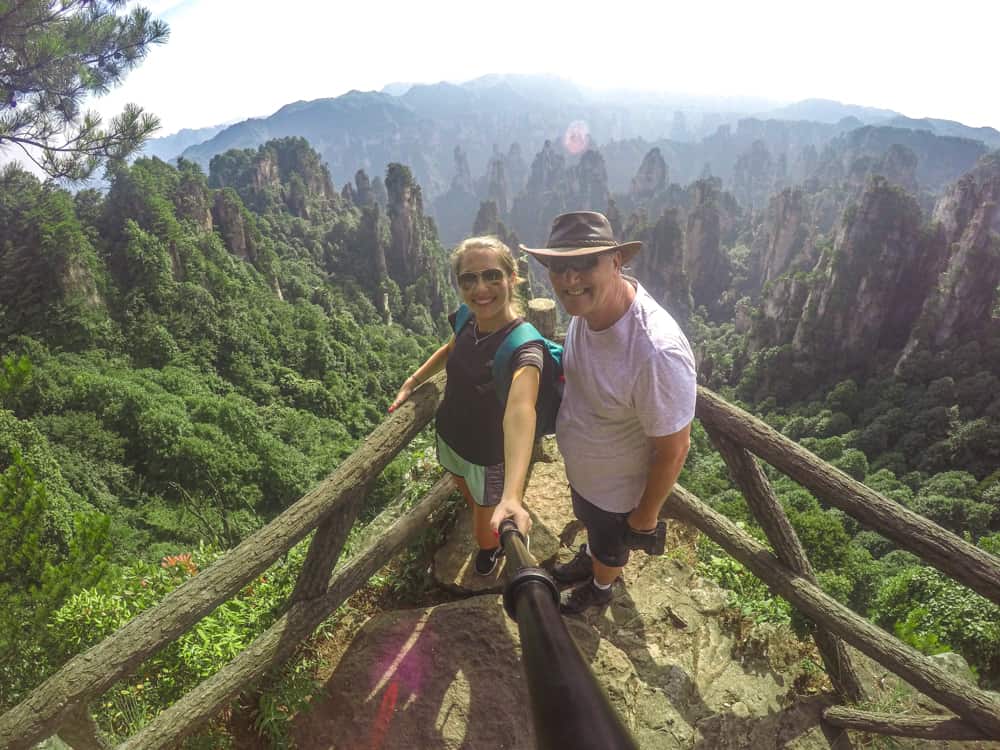
So it is definitely down to personal preference, and if you’re looking to travel around China solo, it may be nice to join a tour. We didn’t often see that many other Western tourists along our way.
Alternatively, you could travel around China independently, and joining guided tours to complement this. For example, the Great Wall of China is actually a bit of a headache to get to on local bus and taxi, and this is a great example of an activity best done as a tour.
Ultimate China 2 Week Itinerary
So let’s go! This China itinerary is aimed at first-time visitors who want to take in some of the country’s best known destinations, such as Beijing, Shanghai and Chengdu as well as lesser known charming corners. I’ve picked Zhangjiajie for its incredible landscape and scenic routes, as well as Yangshuo, my personal favourite place in China. However, I’ve also included some alternative destinations in China to visit.
I suggest using a mixture of trains and planes to keep the travel times lower, but this China itinerary will still be fast-paced and action-packed!
If you’d prefer to slow this itinerary down, I recommend removing one destination and spending longer in other places.
Here’s an overview of the route:
- Beijing: Day 1-3 (including a day trip to the Great Wall of China)
Suzhou: Day 4
Shanghai: day 5-6, zhangjiajie: day 7-8, tianmen mountain: day 9, yangshuo: day 10-12, chengdu: day 12-14.
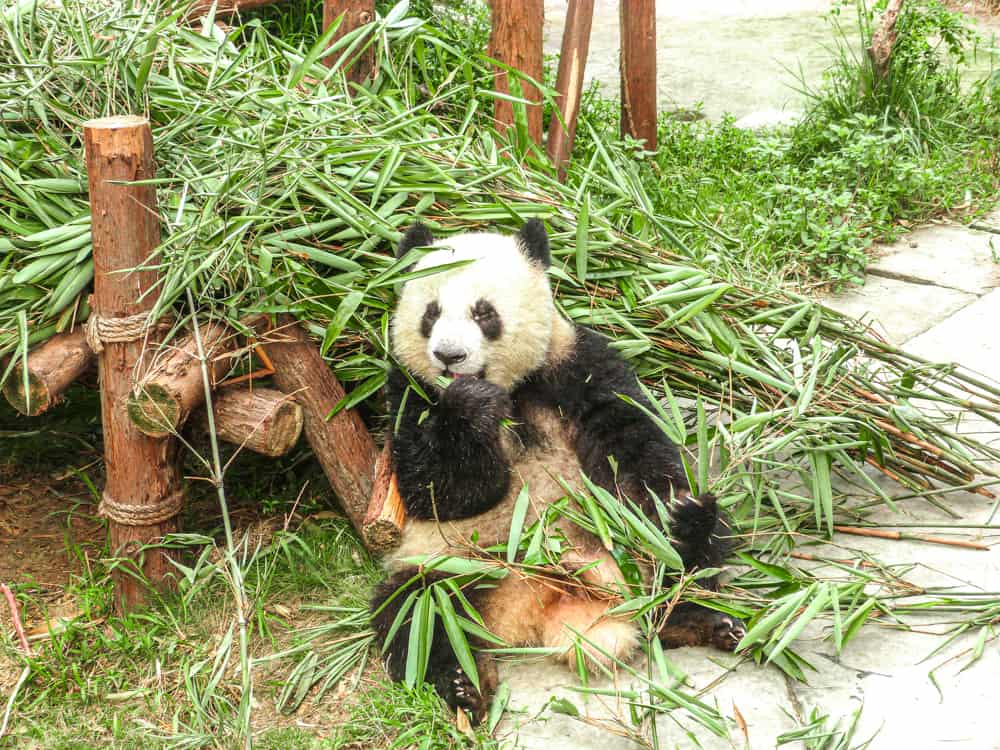
Beijing: Day 1-2
The capital of China and an ancient city dating back over 3,000 years. Today, Beijing is a city of extreme scale and size, both traditional and technologically advanced.
For one, it is the world’s most populous capital city with almost 21 million residents, but the second most populous city in China (after Shanghai). Beijing is also home to the world’s busiest and longest subway, as well as the second busiest airport in the world.
To put simply, Beijing is both vast and hectic, but also organised and contained. That being said, as a tourist, the main sites to see are in a fairly concentrated area in the heart of Beijing. It is easy enough to see the key tourist attractions over the course of two days, complemented by a day trip to the Great Wall of China . So let’s dive in on what there is to see in Beijing in three days.
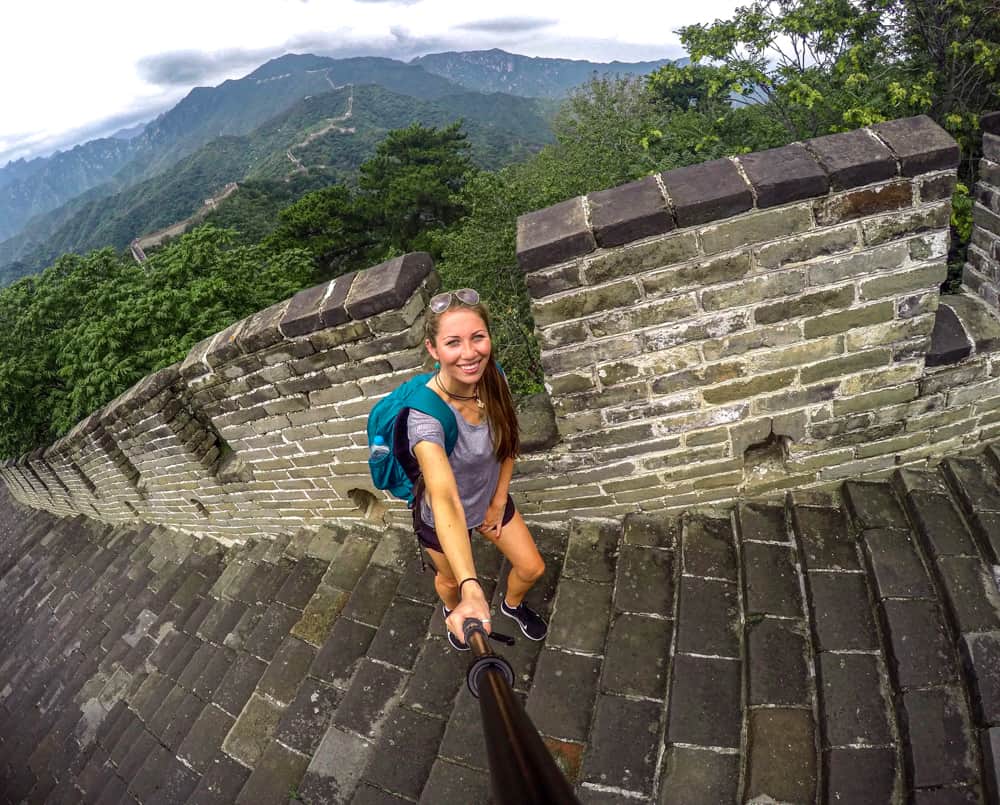
Forbidden City
This was the first attraction in Beijing that I visited after landing at Peking airport, and I found it fascinating, despite the poor weather we endured that day.
Visiting the Forbidden City was a great crash course in Chinese history, as this imperial palace has served as the home of Chinese emperors for almost 500 years. The whole complex is vast, but due to the extreme July heat and some impending jetlag, we managed to explore the highlights of the Forbidden City in a full afternoon.
Arriving at lunchtime, (which I wouldn’t normally recommend for a key tourist attraction), actually worked in our favour and we got through the line to buy tickets quite quickly.
However, if you are visiting in the morning for a full day, I would strongly recommend booking a guided tour which includes skip-the-line access too.

Tiananmen Square
Opposite the Forbidden City is the famous Tiananmen Square. Take in the huge Mao Portrait over the entrance to the Forbidden City. This has been the setting for many protests, particularly those in 1989 pushing for democracy. There is no entry fee here, and you may find yourself here several times throughout your visit, as it is located above a central and convenient subway station.
If you visit at dawn or dusk, you’ll have the opportunity to see the huge national flag raised or lowered by the guard, which is a great spectacle.
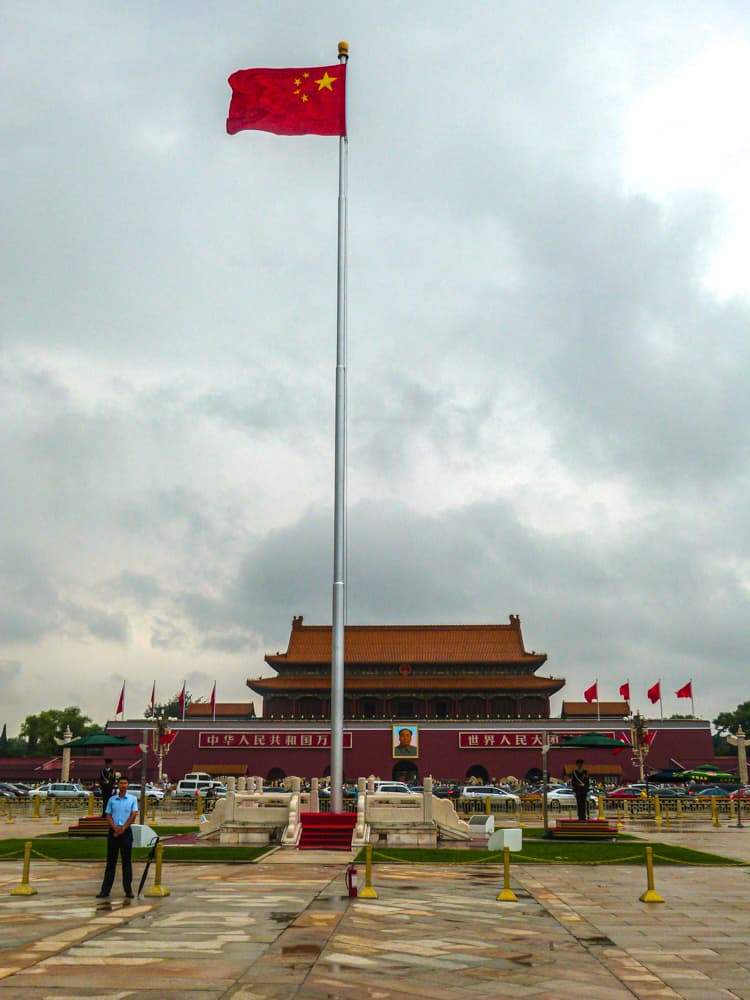
Jingshan Park
Located behind the Forbidden City is Jingshan Park, a former private imperial garden. There is no entry fee here either and you’ll regularly see locals practicing tai chi or walking in small groups.
Inside, there is also a small hill to climb for excellent 360 degree views of the city and the recently restored Shouhuang Temple, which was originally built in 1749.
This excellent tour here takes in the Forbidden City, Tiananmen Square and Jingshan Park with a local English-speaking tour guide over a half day.
Explore the Hutongs
Hutongs are older-style residential areas based around a network of traditional alleyways. There are several sprawling hutongs throughout Beijing, but some are more geared towards tourists.
We loved spending a half day exploring Nanluogo Xiang . It’s packed with boutique stores, cafes and restaurants, that is equally popular with locals and tourists. You’ll see lots of young cool Beijing locals and plenty of interesting fashion.
Nanluogo Xiang is the home of hip cocktails bars tucked away in hidden courtyards, alongside locals gossiping and catching up over xiangqi , a version of Chinese chess.
Another hutong area worth visiting is Wudaoying Hutong which is quieter and offers a more authentic experience.
These are easily self-explored, but you can join a local rickshaw driver for a guided tour which is awesome or a small group cycling tour .
Eat at the Wangfujing Street Market
We loved this market, although we stumbled upon it by accident as our hotel was very close. Turns out, this is one of the best places to go to in the evening in Beijing. The street food section is an curious array of insects and seafood on sticks, but there are some more normal options too, such as delicious fruit salads.
This market is loud and chaotic but a great way to feel part of local life.
Make sure to also try the famous Peking duck at a local restaurant such as Sheng Yong Xiang.
This awesome evening foodie tour by tuk tuk takes in the best of the Beijing food scene, from peking duck to street food and locally brewed beer.

Visiting the Beijing Olympic Park
As a huge fan of the Olympics, this was a must for me. Seeing the Bird’s Nest stadium was awesome, and this is now a popular area for locals to spend their evenings amongst the fountains and enjoying the light display.
You can also see the Water Cube venue, which came back into use for the 2022 Winter Olympics.
You can visit the Olympic Park and the nearby Beijing Zoo with this excellent tour here .

798 Art District
This neighbourhood is home to the burgeoning artistic scene in Beijing, and there are dozens of world-class art galleries here to peruse. Located within a former factory complex, this area has been transformed to house exhibitions from local artists, to world-famous artists.
Where to stay in Beijing
There are a huge number of places to stay in Beijing, covering all budgets and preferences. I’ve popped some suggestions here:
Budget hotels:
For those looking for great value, but authentic stays, one option is to stay in a small guesthouse along one of the narrow alleys of a hutong. My suggestion for this would be The Orchid , in the local hutong of Gulou, where a double room starts from £91 (USD$111).
Another option is LeZai Hotel located in Shajing hutong, where rates start at about £40 per night (USD$40).
Mid-range hotels:
We chose to stay in the Crowne Plaza Wangfujing for its excellent location and comfortable stay, and would highly recommend.
The Hotel Eclat offers amazing bang for buck, with 20 of the rooms offering private pools in the heart of the city. The rooms are also themed so book ahead for greater variety to choose from. Rooms start from £147 per night (USD$180).
Luxury hotels:
PuXuan , also in Wangfujing and opened just last year. It has a fabulous spa and excellent views across the city. Double rooms start from £215 per night (USD$263)
Or for the ultimate luxury stay, consider the Rosewood Beijing where double rooms start from £225 per night (USD$276).
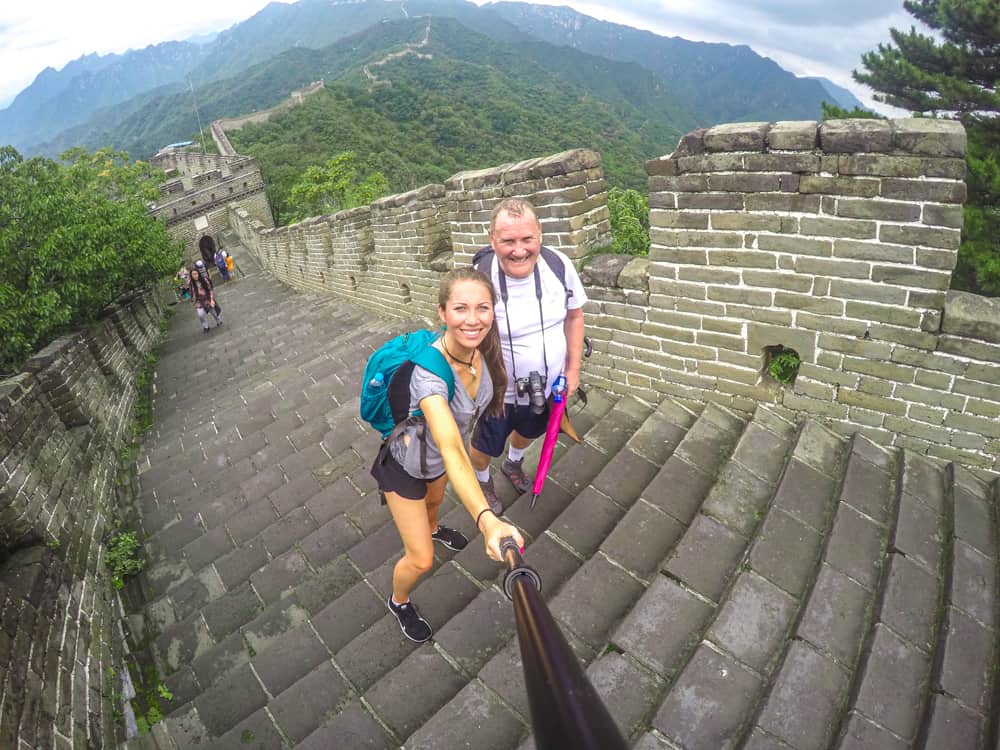
Great Wall of China: Day 3
The iconic Great Wall of China is highly likely to be top of your list of things to do and see in China. And for good reason. It’s an incredible day trip, and one I’d love to go back to do again. We chose to do it our trip entirely by public transport, which was quite fiddly however we were some of the first to arrive and therefore had an incredible experience of being some of the few people on the wall.
How to get to the Great Wall of China
There are several points where you can see the Great Wall of China – after all, it is over 13,000 miles long!
The area of Badaling is the closest to Beijing’s city centre, and unsurprisingly is the busiest section. It’s also very touristy.
Mutianyu is a little further, and although it is still really popular, it is far less busy than Badaling. There’s also the added bonus of a cable car to head up to the Great Wall, and the thrill of a luge to descend again.
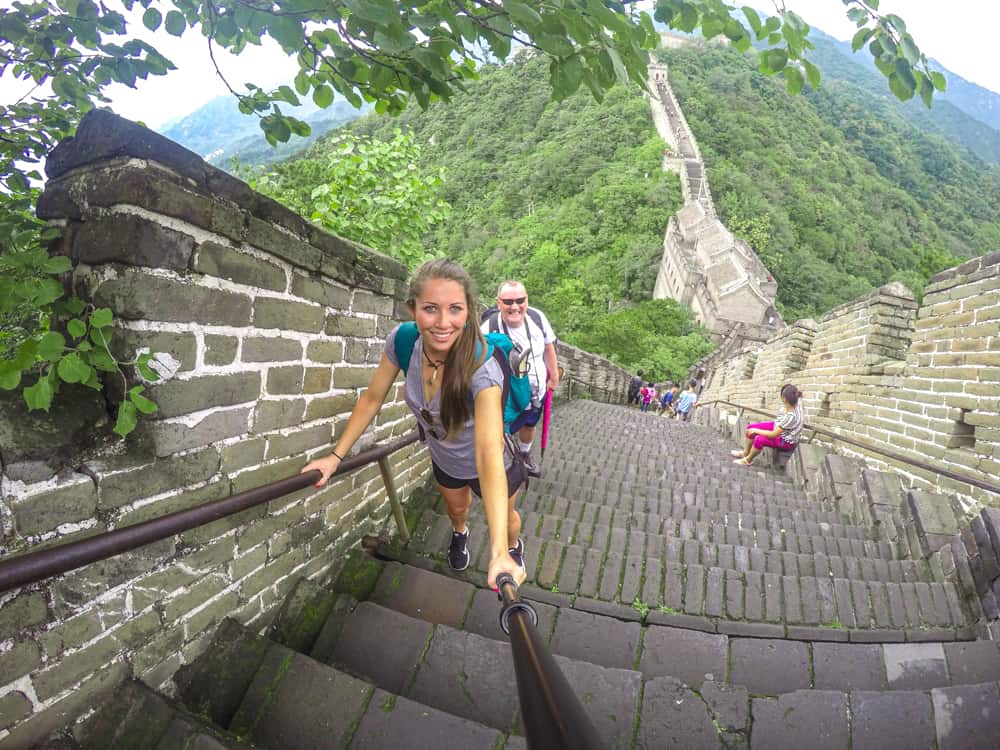
If you want to see the Great Wall with far less crowds, the sections you should consider are Jiankou, Simatai, Gubeikou, Jinshanling and Huanghuacheng. These take a little longer to get to, but a return trip can still be done in a day. You could also take a day trip to these sections:
- Badaling Great Wall and Ming Tombs Coach Tour from Beijing
- Beijing: Jinshanling Great Wall Group Tour with Lunch
- Simatai Great Wall and Gubei Water Town Transfer with Ticket
- Mutianyu Great Wall Full-Day Group Tour
- Great Wall Hiking: Small Group to Jinshanling and Simatai
- Jiankou to Mutianyu Great Wall Small Group Hike
- Ming Tombs Underground Palace & Mutianyu Great Wall Bus Tour
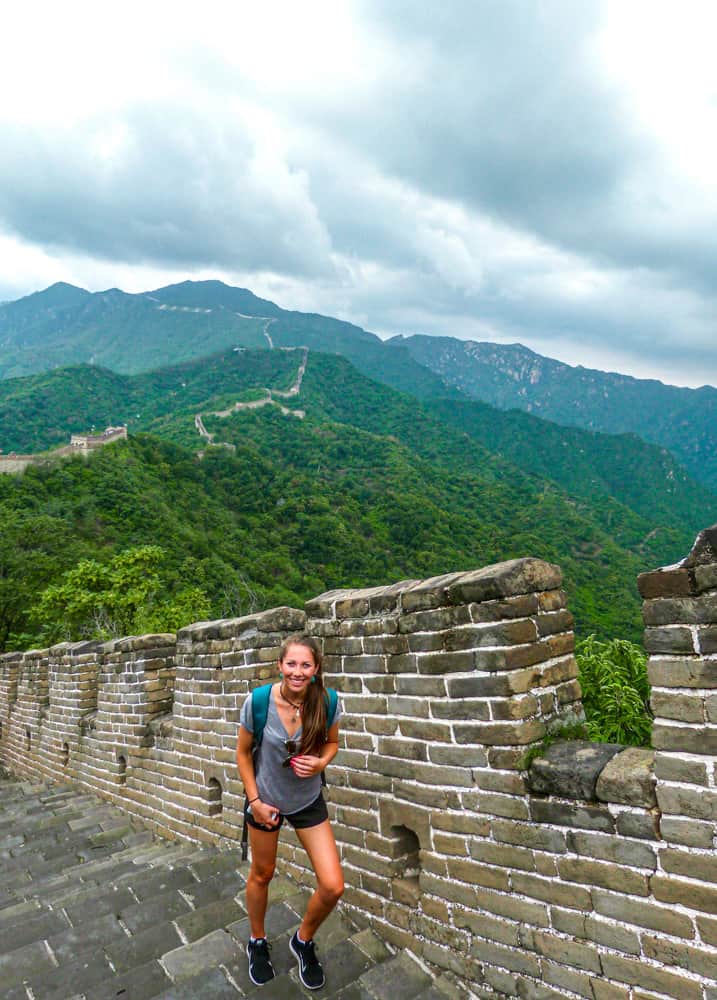
We chose to go to the Mutianyu section. Although we followed instructions to the bus station and onwards, we actually found it a very frustrating journey. The route is:
- Take the subway to Dongzhimen 东直门 Station.
- From here, head to ground level and to the Dongzhimen Bus Station (Jiaotongju 交通局) to take the #916 to Huairou 怀柔
- Take a taxi on the street to Mutianyu 慕田峪
So this sounds wonderfully straight forward, I know.. I wish it had been though.
We got to the Dongzhimen Bus Station fine, but spent probably 30 minutes or more on a wild goose chase around the station looking for the right bus stop. We asked locals and were sent in so many different directions. However, we eventually boarded and carefully watched for 怀柔 (Huairou) to come up on the electronic board at the front of the bus, so we knew when to disembark.
When we finally got to Huairou, we had a far harder job getting a taxi than we expected. We actually found a local hospital and waited to jump into a taxi there instead, but once in it, our taxi driver really struggled to understand where we wanted to go. Despite us pointing to a very clear picture of the Great Wall of China (that was displayed in his taxi..).
Somehow, we made it to Mutianyu fine, and fortunately were some of the first people to arrive that day. We were there well before the tourist buses. You can buy tickets on the day as the gates, before proceeding through to the tourist village. Naturally, there’s every kind of souvenir under the sun to buy.
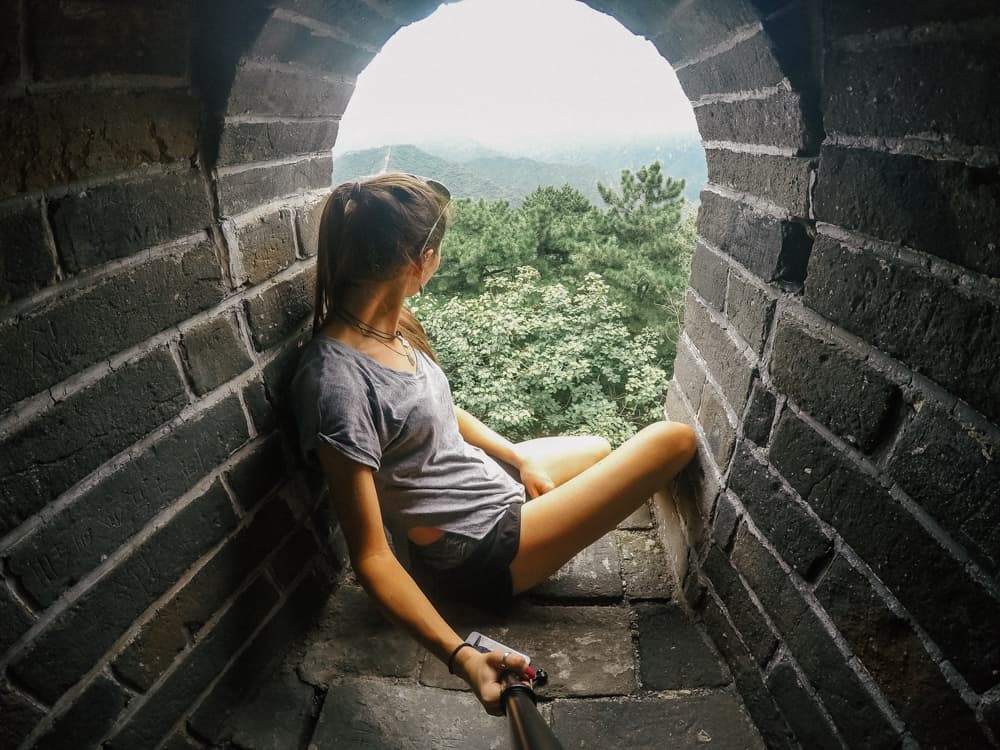
There is a cable car to take you from the tourist village at Mutianyu to the actual Great Wall which was awesome. The views were phenomenal. At the top, we explored in both directions, but there’s only so far you can go, as some of the wall has crumbled and the path has been destroyed.
Arriving early is definitely the way to go, as well as going on a midweek day. The proof is in my photos!
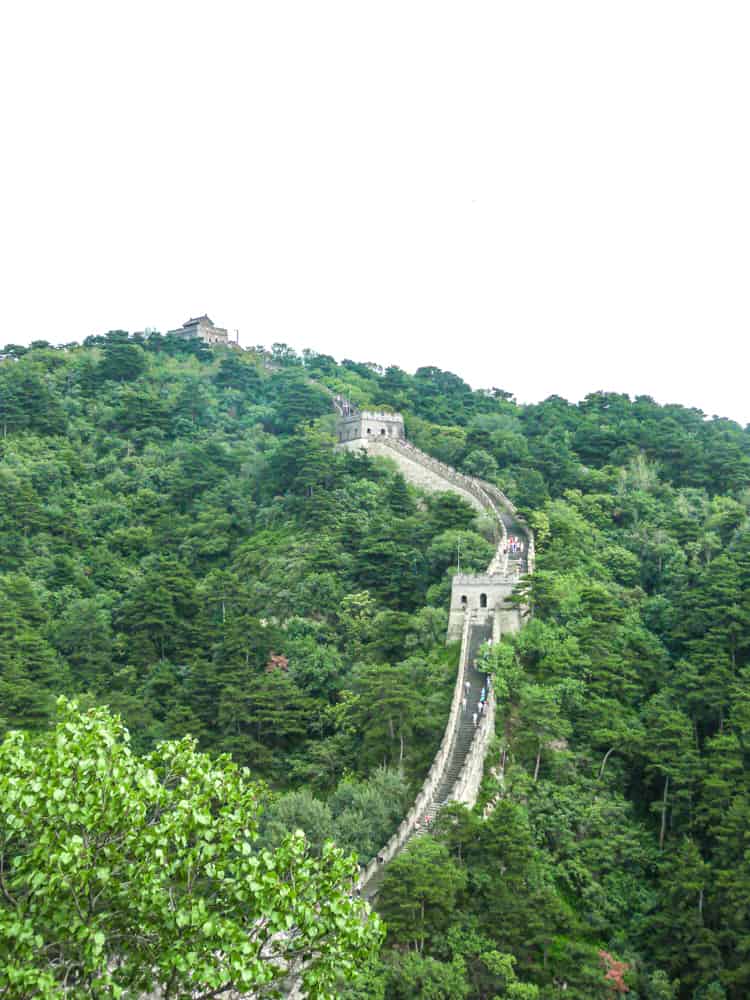
When we were ready to head down, we joined a short queue for the luge (like a toboggan on a metal shute). I highly recommend doing this – it was thrilling and a totally unexpected highlight of our day.
Back in the tourist village, we stopped for a very overpriced lunch before navigating the bus system back to Beijing city centre.
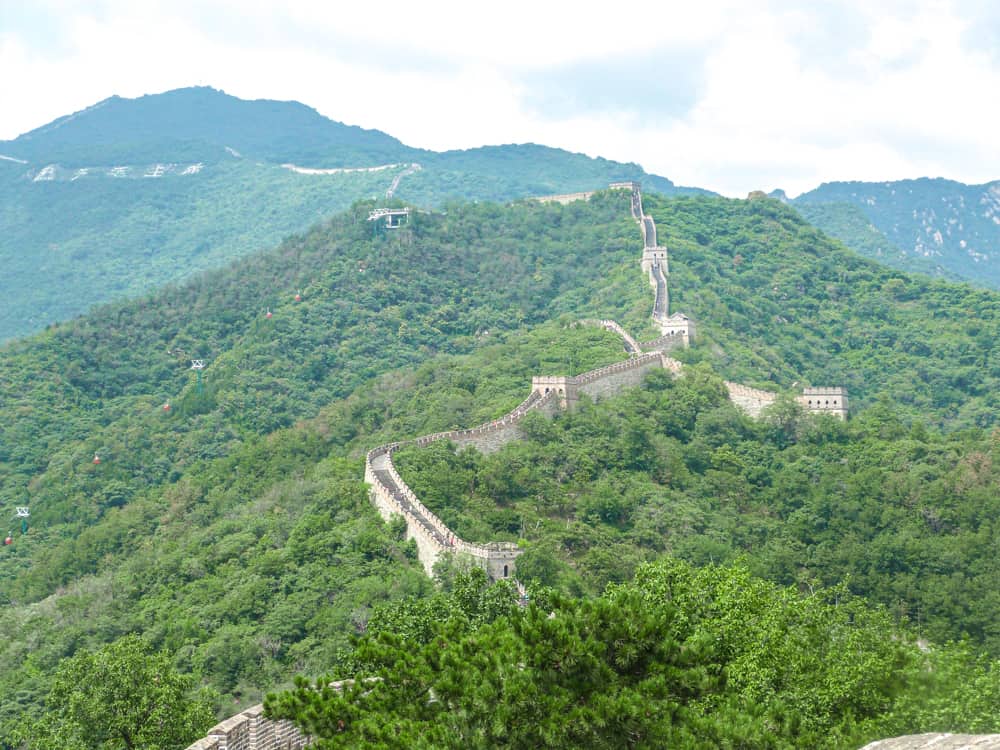
It’s time to leave the hustle and bustle of Beijing. Suzhou is a logical next stop as it is on the train route between Beijing and Shanghai.
This beautiful town is made up of waterways and is referred to as the ‘Venice of the Orient’. I personally thought it was a little bit like Hoi An in Vietnam.

I would recommend a full day and night in Suzhou, so you can explore this beautiful town in light and darkness, when all the red lanterns are lit up. You could alternatively visit as a day trip from Shanghai , but it means coming back on yourself if you travelled there from Beijing.
When leaving Beijing, ensure you have the correct Suzhou on your ticket so you don’t repeat the mistake we made (see travelling by train above).

Just under half of this city’s area is covered by water, including streams, ponds and waterways. The city dates back more than 2,500 years, with the traditional design of the city still preserved today.
The best things to do in Suzhou are centred around boat rides on the Shantang River or exploring one of the 60 beautifully kept gardens, with the Humble Administrator’s Garden being my favourite. It dates back to 1509 and was built under the rule of the Ming Dynasty. The entrance fee is CNY90 (£10/USD$12.50).

Suzhou is also a wonderful place to soak up day-to-day life by stopping by local teahouses, sampling the local Jiangsu Style dishes or buying some of the best silk products in the world.
I recommend staying in the Holiday Inn Express Suzhou New District .

Wow, Shanghai. What a city. Shanghai is China’s largest city and is positioned on the Yangtze River Delta. It serves as the economic and trade centre in China, and is one of the key economies in Asia.
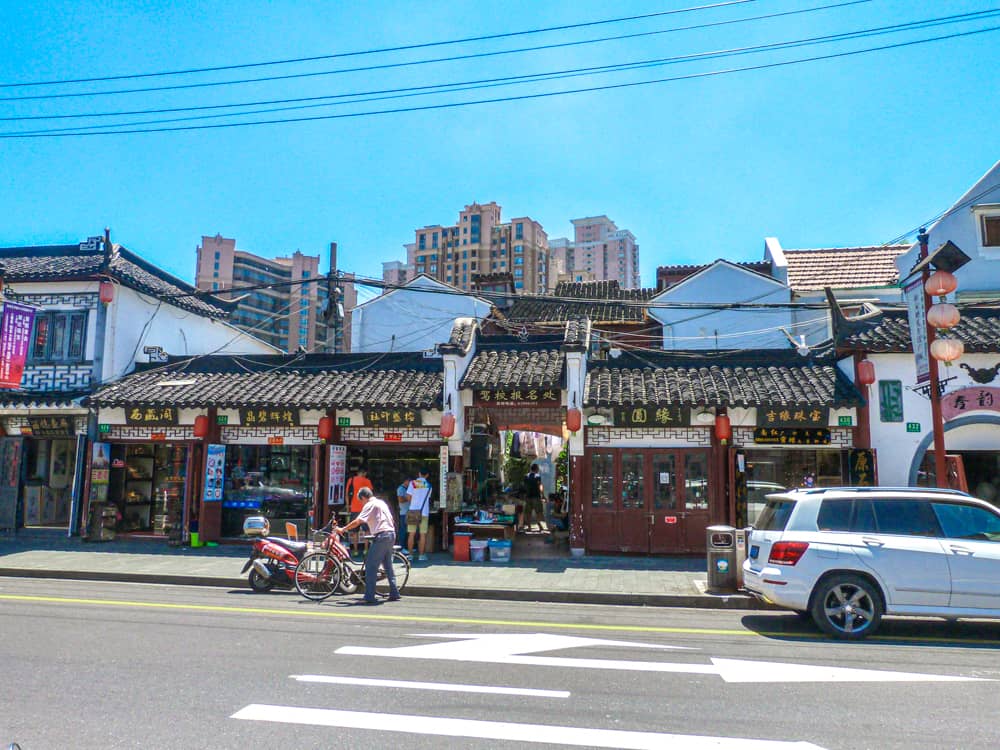
People say you either love or hate Shanghai. I really liked it and preferred it to Beijing. Although I enjoyed my time in Beijing, and particularly all the sightseeing, I did find the city felt rather grey.
Shanghai on the other hand is full of colour and light, and there is a real a buzz and energy around this cosmopolitan city.

Whilst there are less historic attractions in Shanghai, the city is considered one of the cultural hubs in China with a world renowned opera and popular cuisine.
A really nice way to see the city is on a hop-on hop-off bus tour , which will give you live commentary from a guide on board as you drive around the city.
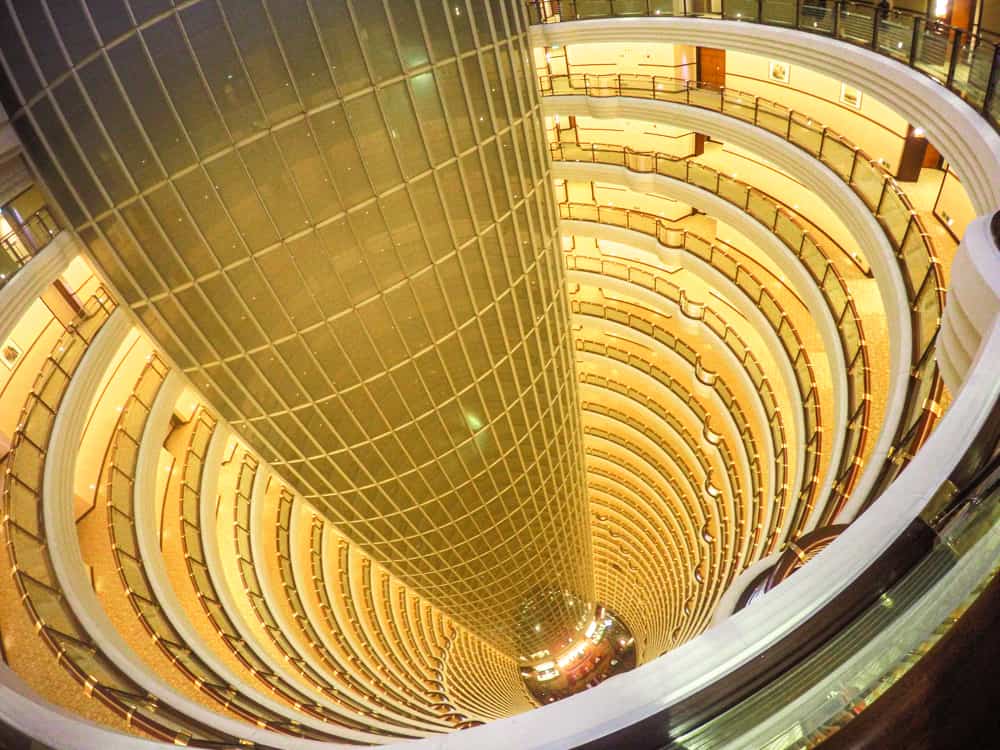
Visit the Bund and Modern Shanghai
The Bund is a wide promenade along the river, where visitors can experience stunning panoramic views of the city. On one side is the futuristic skyline, comprising some of the tallest skyscrapers in the world and the dazzling Oriental Pearl TV Tower. Did you know, you can go to the top of this awesome building? Buy your skip-the-line ticket to its viewing platform here .
On the other side, behind the promenade are beautiful colonial buildings, offering a true contrast of old and new.
Book a half-day Bund sightseeing tour here.

Explore the French Quarter
One of the oldest parts of Shanghai is the Former French Concession (FFC), an area known for its unique architecture blending European style with old-style Chinese homes, called Shikumen.
This area is big (almost 8km wide), and stretches west from the Bund. One of my favourite aspects of the French Quarter are the beautiful tree-lined avenues, which also provide some much needed shade. There’s also countless cafes, bars, restaurants, boutique stores, art galleries and antique stores to browse, and even some hip breweries. This area is popular with expats in Shanghai and also with tourists.

In my opinion, one of the most beautiful streets is Wukang Lu, which has cafes with plentiful outdoor seating and is very charming. Other highlights of the FCC include Fuxing Lu, which is full of cool art galleries or Wulumuqi Road, which has some awesome antique stores.
The French Concession can easily be explored on a self-guided tour using a paper map, but it’s also an excellent idea to consider a guided tour to learn more about the history of the area. Here’s a few suggestions:
- Craft Beer Tasting in Former French Concession
- Evening Walking Food Tour in the FFC
- Half-Day Old Shanghai Small Group Bike Tour (Day & Night)
- Shanghai French Concession 2-Hour Walking Tour
- Shanghai 3-Hour Afternoon Tea Tasting and Dessert Tour
- 3.5-Hour Old Shanghai City Tour
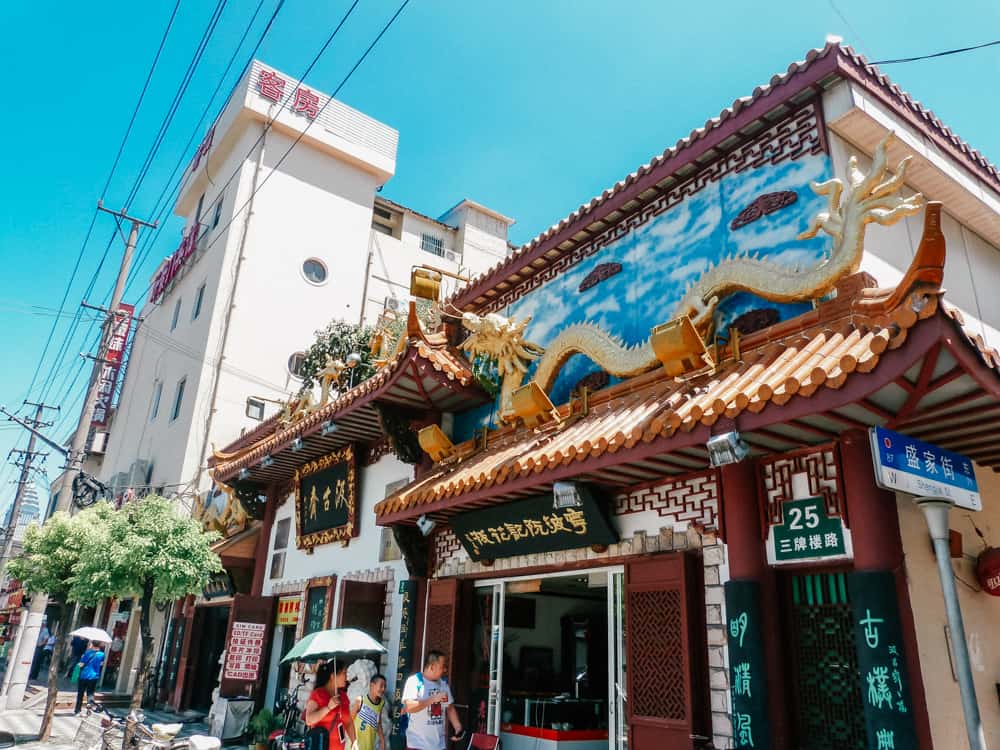
Find zen in Shanghai’s Gardens and Temples
Shanghai, like most cities in China has countless gardens, each housing traditional Chinese buildings or classic temples.
Some of the gardens are like finding an oasis in the heart of the city, and one of the best is Yu Yuan (Happiness Garden). Another highlight is visiting the serene Jade Buddha Temple, surrounded by peaceful Chinese Gardens.
Arrange a 2-hour walking tour of the beautiful Yu Yuan gardens here.
Where to stay in Shanghai
If your budget can stretch to a stay in one of the hotels lining the Bund, then this certainly would make for an incredible stay. Not only is this close to many of the main attractions in Shanghai, but is an amazing opportunity to sleep in one of the beautiful buildings.
We stayed in the InterContinental Shanghai Pudong , which is an amazing luxury stay near the main train station, which is also an excellent location. Make sure to read my review of the Intercontinental Shanghai Pudong here .
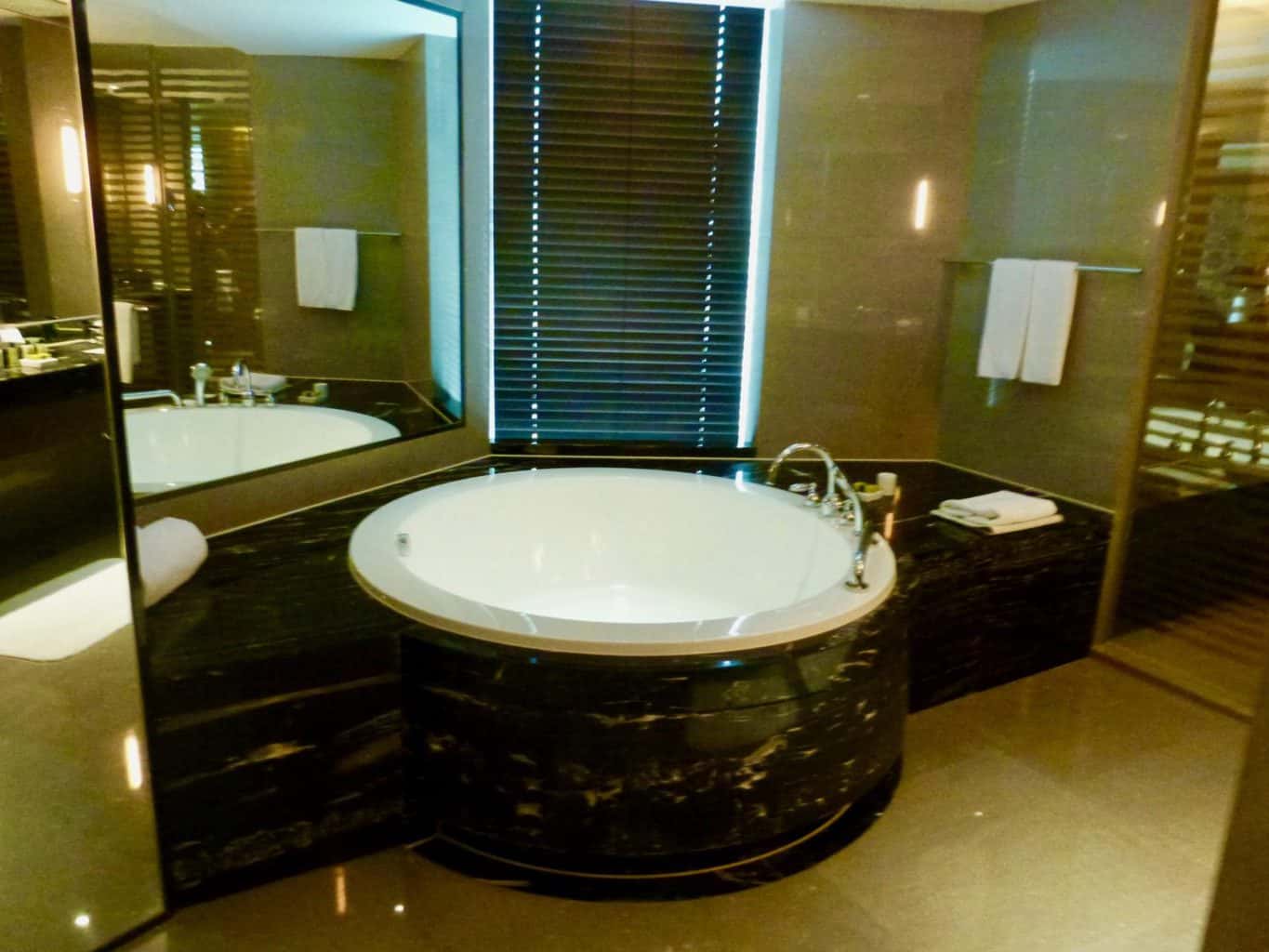
Here are my suggestions of the best hotels in Shanghai, covering all budgets:
Affordable: Shanghai Fish Inn East Nanjing Road . At around £11 per night, this is a great value stay, in an excellent location with some very good reviews. Also, the Bund Riverside View also has some great reviews (from £26 per night).
Mid-range: The Radisson Blu Shanghai New World Hotel (£64 per night) or the Ji Hotel (£63) a night for comfortable stays, with a few extra amenities.
Luxury: There’s no shortage of luxury hotels in Shanghai. As well as the Intercontinental Shanghai Pudong , these are some of the best:
- Waldorf Astoria
- The Peninsula
- Mandarin Oriental Pudong
- The Ritz Carlton Pudong

We knew with our two weeks in China that we wouldn’t want to spend the whole time visiting different cities. We researched for hours to decide which natural wonder or national park to visit in China.
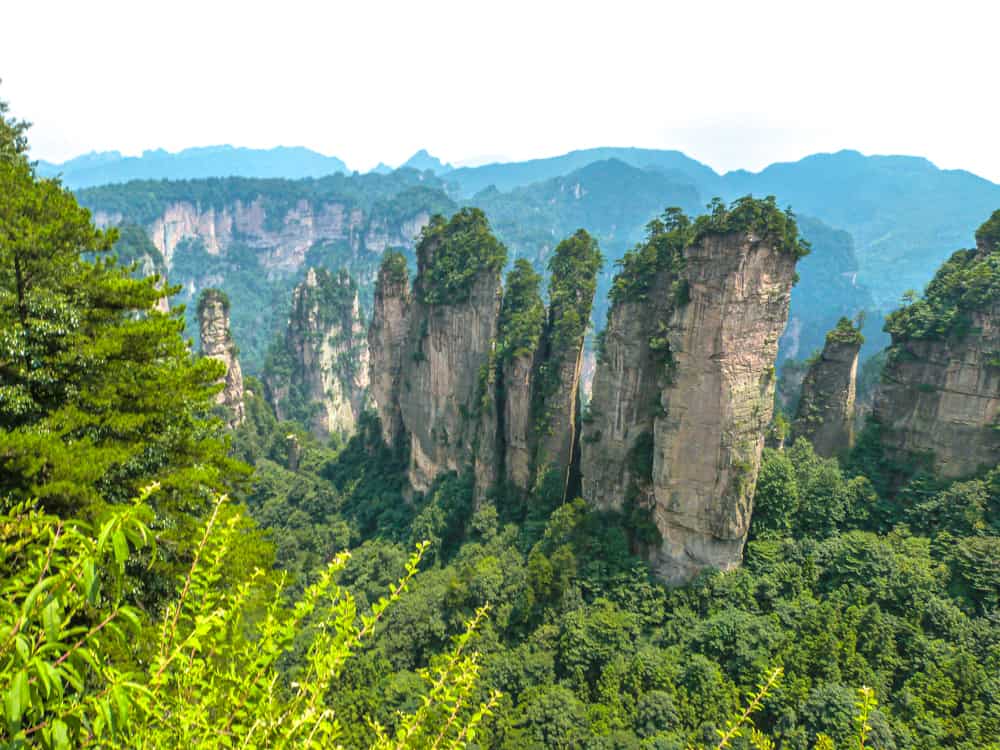
Zhangjiajie was chosen in the end for its otherworldly landscape, which are huge towering karst pillars, some of which reach dizzying heights of over 1,000m. This national park is also said to have been the inspiration for the popular movie ‘Avatar’, although this has led to a huge increase of daily tourists to the park.
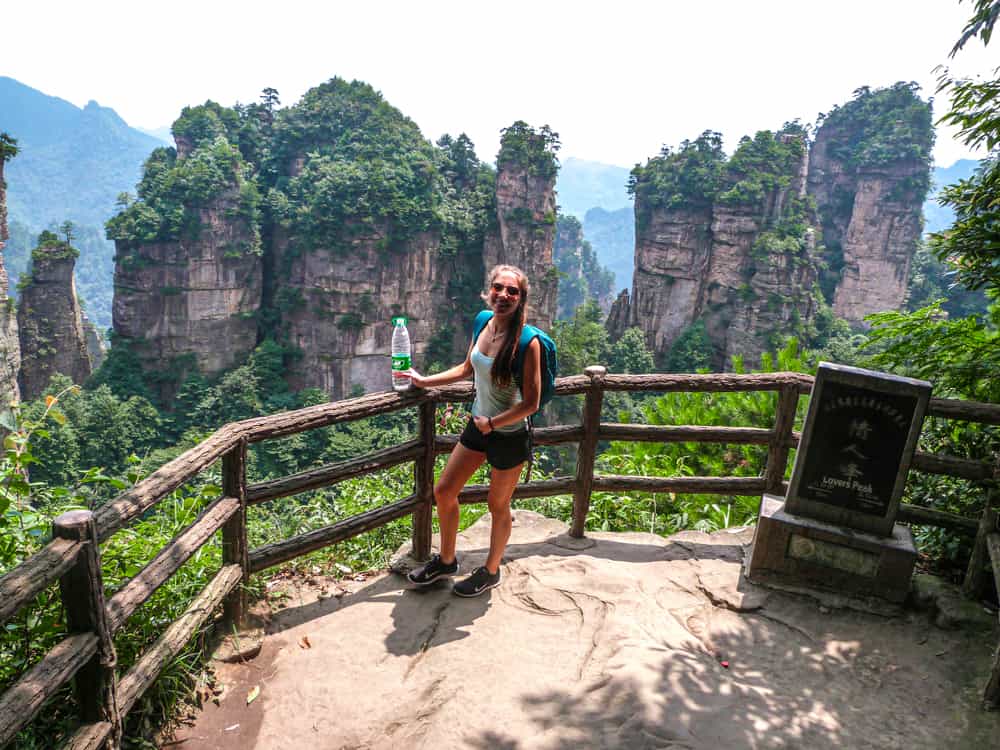
Zhangjiajie is actually China’s first designated national forest park (awarded in 1982), and it clear to see why. Spread across 30sqkm within the wider Wulingyuan Scenic Area of Hunan Province, days in Zhangjiajie national park can easily be spent exploring and hiking through this magnificent natural wonder.
We flew from Shanghai to Zhangjiajie, so this section of the trip could easily be switched for another national park in China, if you prefer.
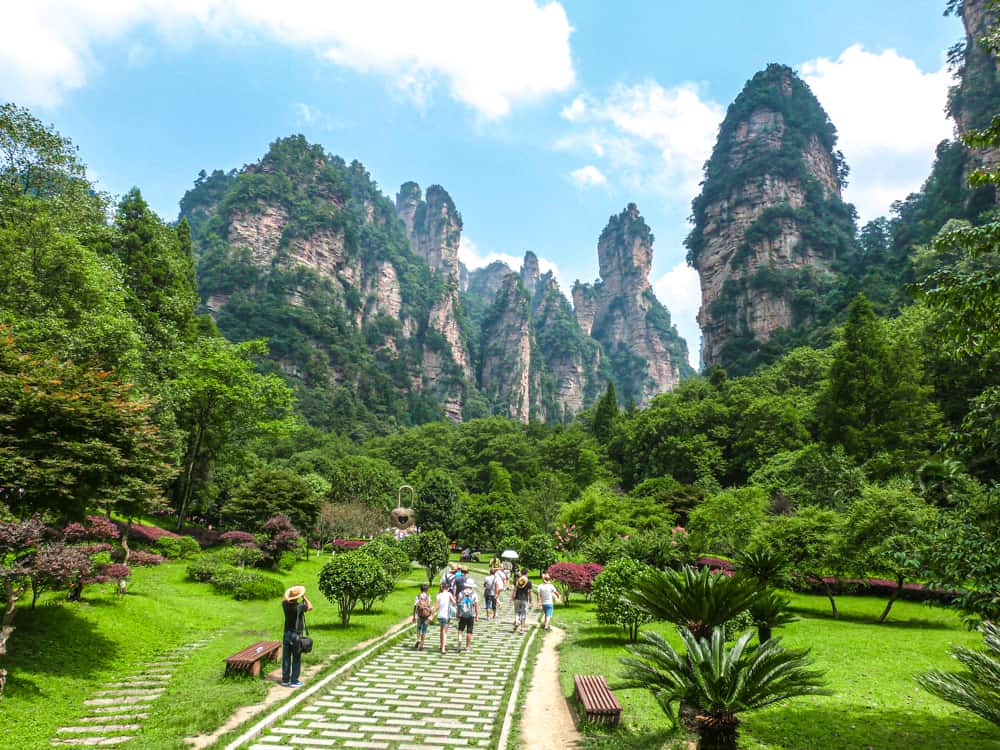
Hiking in the national park
Our days in Zhangjiajie were some of our most challenging, as it was very hard to know where to go and how to do it. For example, the maps have very little English on them, and a lot of the routes are inaccurate. There are also shuttle buses to jump on, but these were not clear which route they were going to and as mentioned, few people were keen to stop and help us. The queuing system was also hectic with a bit of pushing and shoving.

In the end, we spent two full days hiking in Zhangjiajie. We chose to start early and make long full days of exploring. At the entrance were always huge Chinese groups waiting to start walking and they always had a guide with a flag on a stick and a huge speakerphone. We just felt we had to get away from the sheer number of people and noise quite quickly. It would take just 10 minutes to be in complete peace and quiet. Honestly, despite trying to use the map/incorrect signage and work out the shuttle bus systems, we never really knew where we were going.
But somehow, we managed to hike nearly 35km each day, plus more than 50,000 steps and saw all of the amazing sites. The temperature was around 35c in July, and it was definitely exhausting work as most the paths are staircases. It can be very tiring and taxing on the legs, especially in the heat. But there are plenty of local stalls on the paths selling food, snacks, water, ice lollies etc, so you don’t need to carry too much with you.
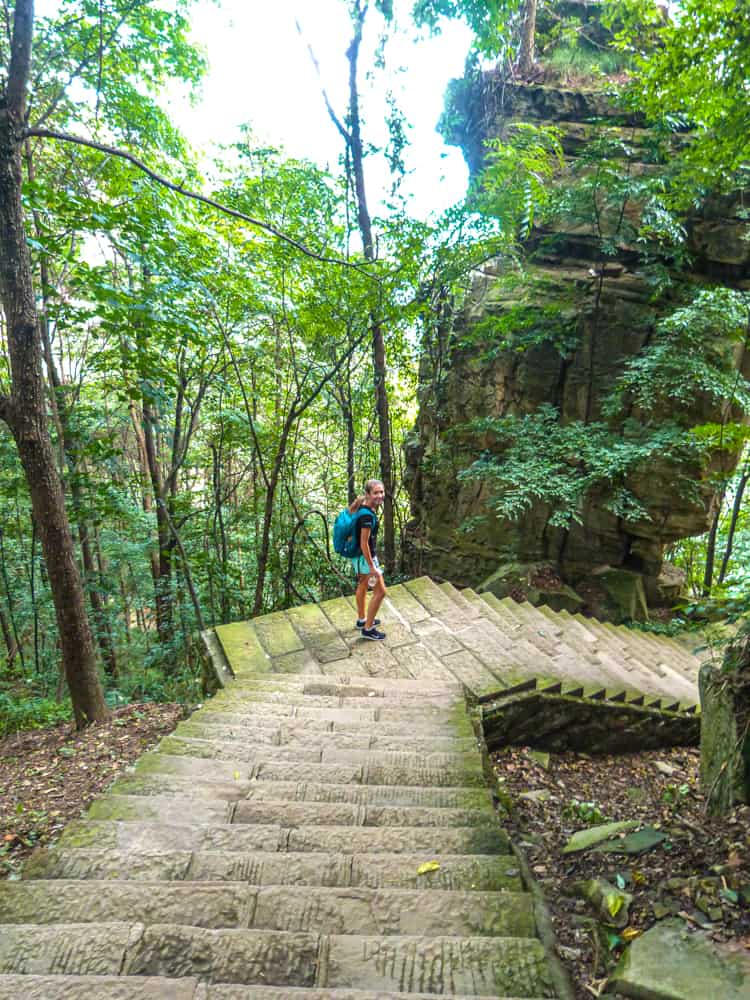
On the second day, we did end up finding a cablecar to take us all the way back to the entrance which saved our legs, but cost a little extra. There is also a huge elevator (lift), called the Bailong Elevator. It’s said to be the longest outdoor elevator in the world, stretching nearly 330m up the cliffside. We considered it for a while, but at 72 CNY (£8.50/USD$10) each way, we chose to walk. I don’t think we fully appreciated the extent of walking we were set to do in Zhangjiajie National park, but it was sure worth it – especially to avoid the crowds.
There is also the world-famous glass bridge at Zhangjiajie National Park. We didn’t do this, but you can read a full guide to the bridge walk here .
You can definitely arrange day tours to Zhangjiajie in advance, which could be a good idea if you don’t do well with getting lost or confused! Here are a few ideas:
- 3-Day Tour to Zhangjiajie National Forest Park (from Zhangjiajie city)
- Full-Day Private Tour of Zhangjiajie National Forest Park
- Zhangjiajie Grand Canyon Ticket with Glass Bridge and Cruise
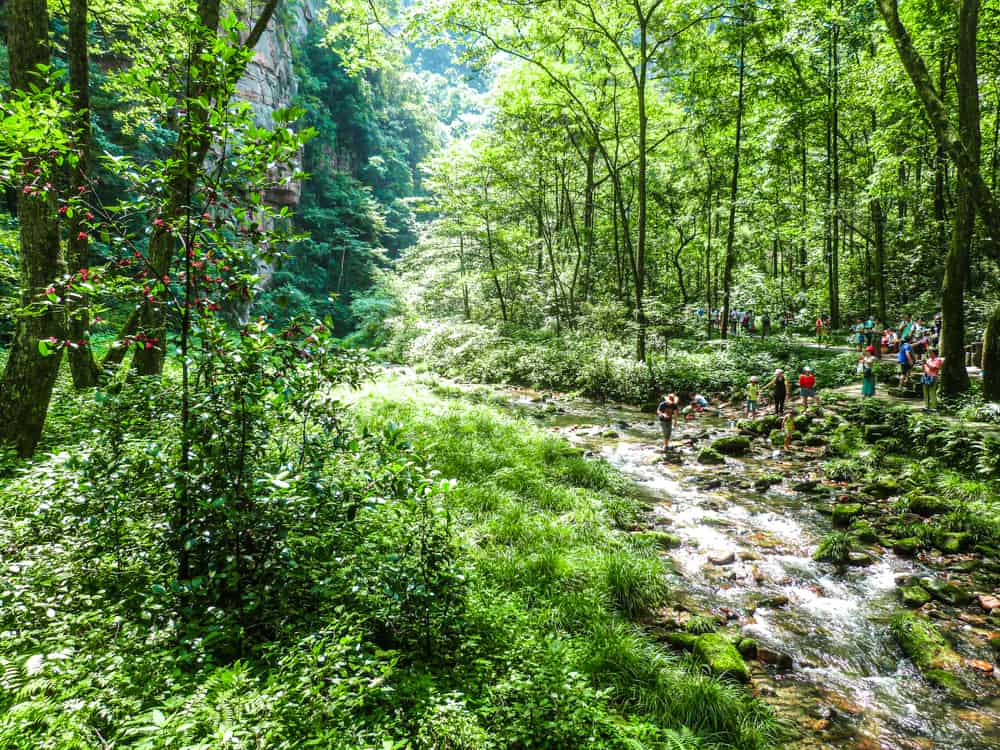
Or, if you don’t fancy walking, you can pay for a lift on one of these seats carried by local guides (when they’re not napping!).

Entrance fee
The entrance fee to Zhangjiajie national park is CNY245 (£28/USD$35). Although the ticket covers you for unlimited entry over 3 days, you’re likely to only use it for a couple of days. The entry fee, together with the elevator ticket can make it a more expensive few days. But, I really do believe it’s well worth the cost and the landscape is like nowhere else on the planet.
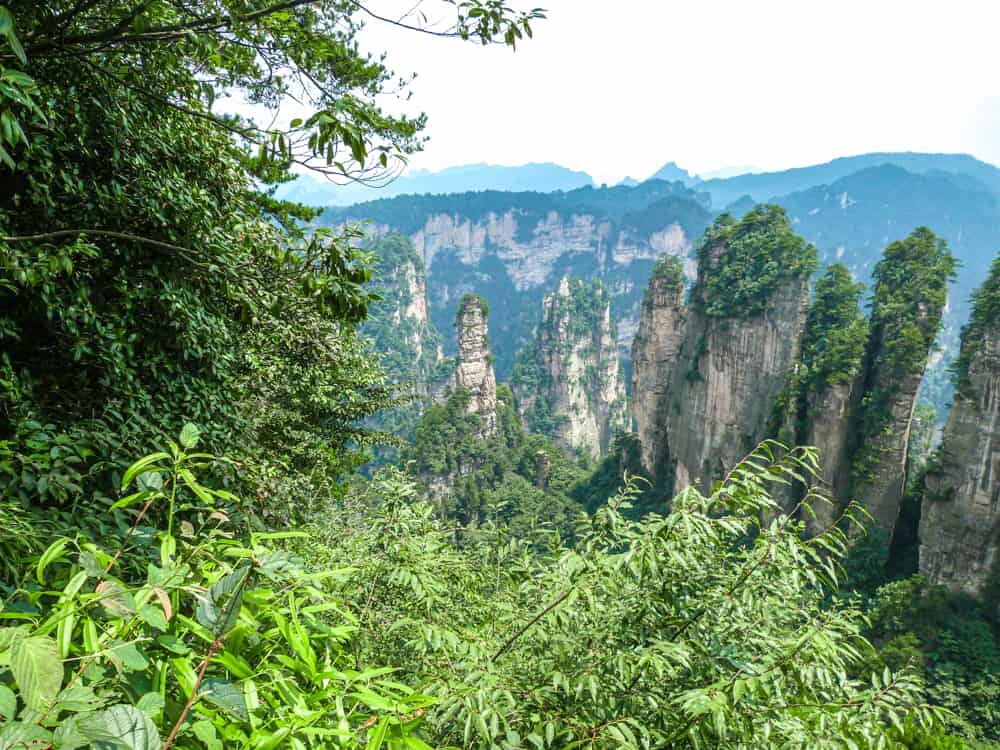
Which routes to take?
Our favourite day was following the Golden Whip Stream trail. It took us straight away from the crowds, and pass trickling streams, crystal clear lakes and along the base of the huge towering cliffs. The path was flat for the first few kms, going over stunning bridges before ascending steeply into the mountains. Choosing to hike means you’ll also see far fewer people on the route, but we did see a few elderly Chinese locals actually speed past us in both directions which was quite disconcerting!
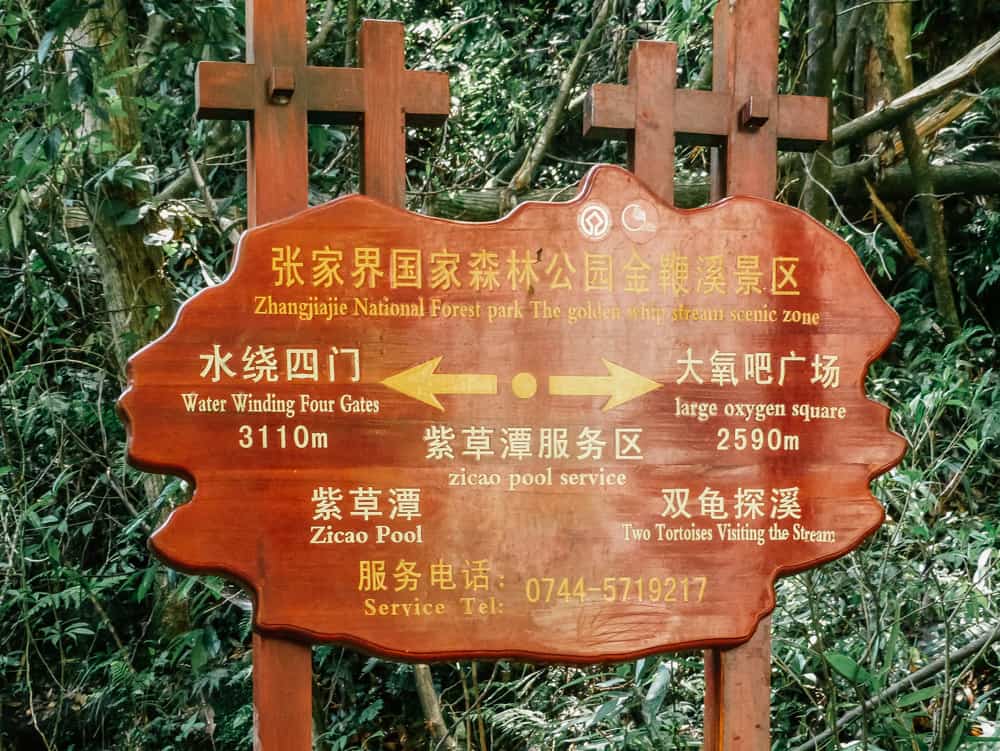
Where to stay in Zhangjiajie National park
You can’t actually stay in the park, but the main accommodation area is in the nearby town of Wulingyuan. From here, it’s a 20 minute walk to the park entrance.
I would really make sure to pick a comfortable hotel here, even though you’ll only be in the hotel to sleep. You’re likely to come back from the hiking so exhausted, hot and sweaty, you’ll want a proper shower and a comfortable bed.
My top suggestions would be:
- Pullman Zhangjiajie (£48 per night)
- Crown Plaza Zhangjiajie Wulingyuan (£71 per night)
- Whispering Mountains Boutique Hotel (£29 per night)
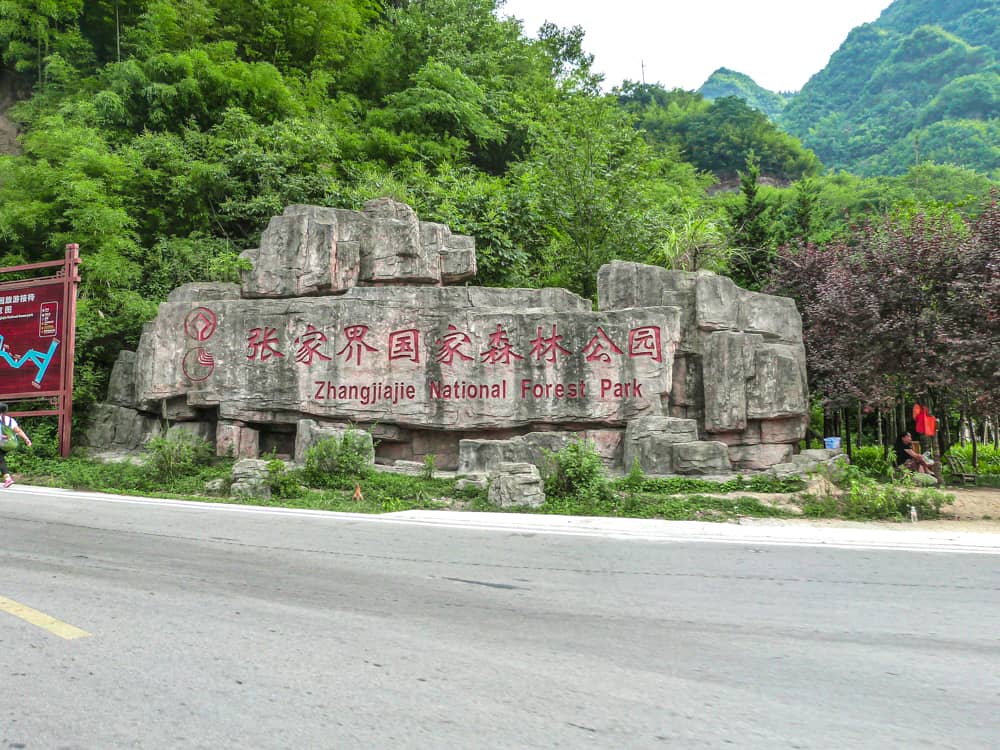
This beautiful mountain is located back in Zhangjiajie and is well worth visiting during your time in the area. It is not in Zhangjiajie National Park.
We managed to visit Tianmen Mountain as a full day outing, before heading onto the airport in the evening. So therefore we didn’t need to stay in Zhangjiajie overnight. We simply took a taxi arranged by our hotel in Wulingyuan back to Zhangjiajie early in the morning, which took around 40 minutes. Then we left our bags at a local hotel right by the cable car ticket office (for a small cost), before collecting them at the end of the day and before going to the airport. The cable car ticket office is very close to the bus station and train station, so this works really well.

Although left luggage is not a formal service they offer, they were happy to do so and others had done the same thing.
Tianmen Mountain is also known as ‘Heaven’s Door Mountain’, due to the huge opening at its summit. It’s the largest hole of its kind, almost like a giant doorway at the top of the mountain. Known as the ‘Stairway to Heaven’, there are 999 stairs up to this huge hole, and it’s a challenging climb!

The main things to do at Tianmen Mountain is to enjoy the journey to the summit (an adventure in itself), as well admire the stunning views from the top. There’s a cliff edge walkway, which winds its way around 1.6km along the cliff face with a drop of more than 1,400m. The railing is pretty sturdy, but this is not for those with a fear of heights! This one has a solid floor, but there are two other glass walkways for those looking for a thrill!
There are two options to ascend to the summit: take the world’s longest cable car or one of the world’s most precarious drives – with 99 hairpin bends! If you are prone to car sickness, I do not recommend doing this drive!
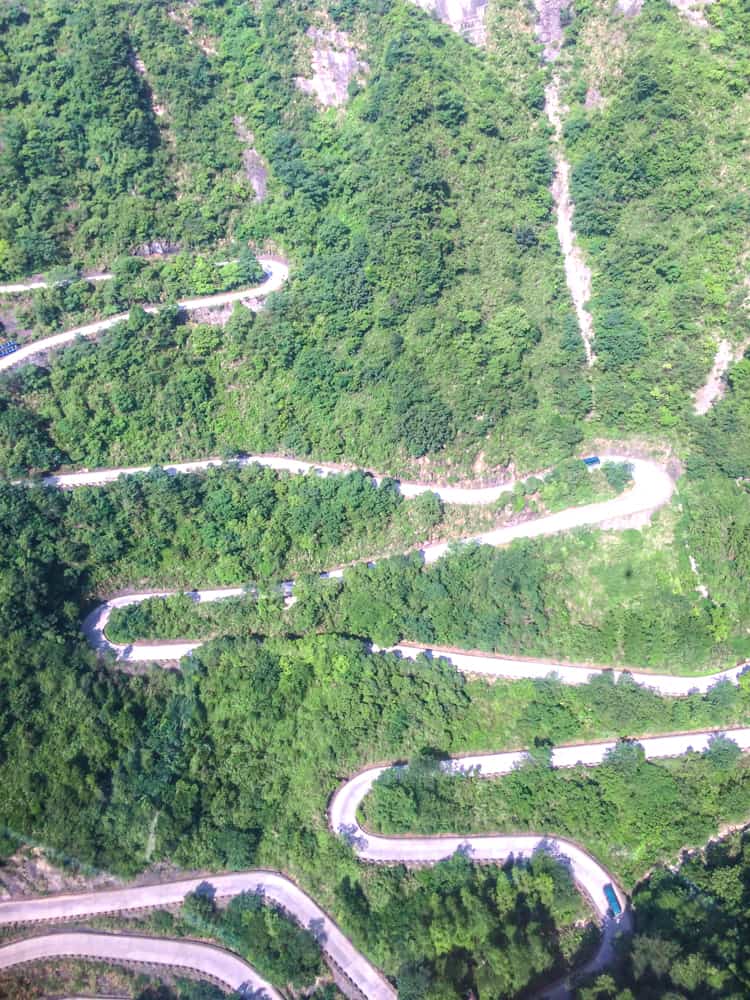
We chose to jump in a minibus for the drive up (doing this road downhill seemed way too scary), and then take the cable car for the descent. The cable car is very steep, and covers 7kms in about 30 minutes.
The cable car starts at 7.30am in the summer months (8am in winter) and I strongly recommend getting there at least 30 mins before this opens. The lines can get very long and the Chinese tour groups join en masse, making it very noisy and chaotic.

My favourite place on this China itinerary! We initially planned to do one night in Yangshuo, and one night in Guilin. But upon arrival, we were just so blown away by Yangshuo, we decided to cancel visiting Guilin.

Yangshuo is like a South East Asia backpacking town, but in China. It is charming, quaint and a wonder to explore, but the best bit is the humour of the locals. At some point, someone must have decided to place a giant stuffed teddy bear at a bar stool at the front of their restaurant. And before long, all other venues in Yangshuo followed suit. So now as you explore the pretty town, nearly every bar or restaurant has an oversized bear sitting at the front! Sometimes he has his big paw wrapped around a beer glass or he might be sitting at a table waiting for you to join. We even saw one bear with his head in his paws. He must have had too much to drink…
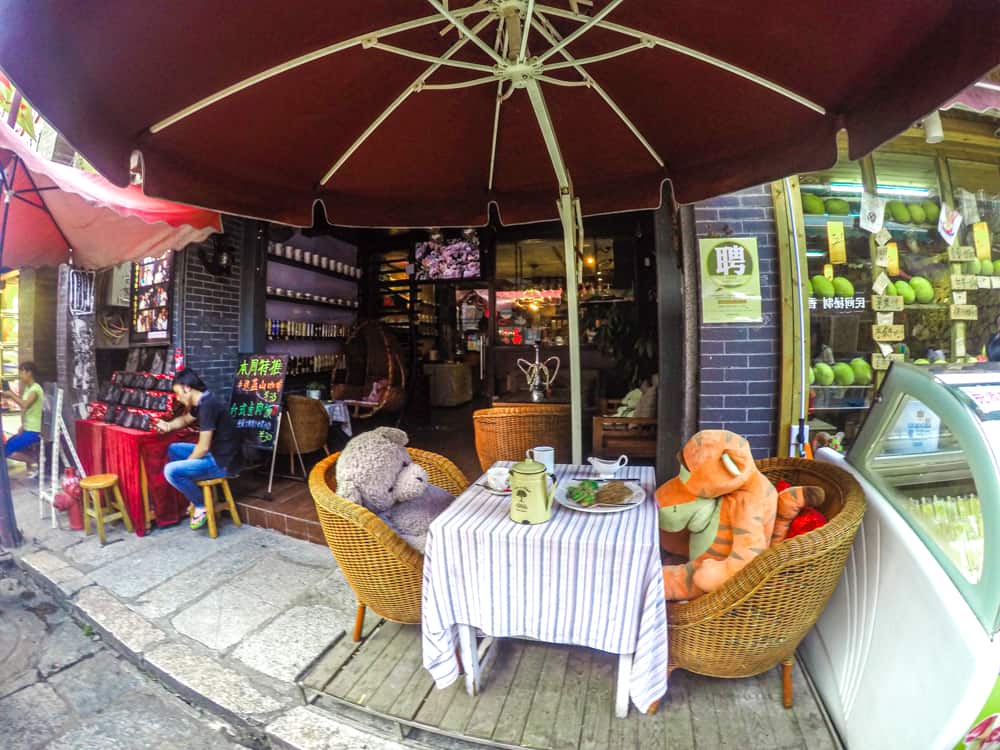
Aside from the local humour, and the charming laneways, Yangshuo has a lot to offer. The mesmerising Li River winds through both Guilin and Yangshuo. It is flanked on both sides by towering limestone karst mountains, and teeny villages.
Days in Yangshuo can be spent exploring the beautiful countryside and calming riverside settings backed by the magnificent karst scenery. We chose to hire bikes to cycle alongside the river to rice terraces. It was a lovely, relaxing day where we jumped in the river to cool off.
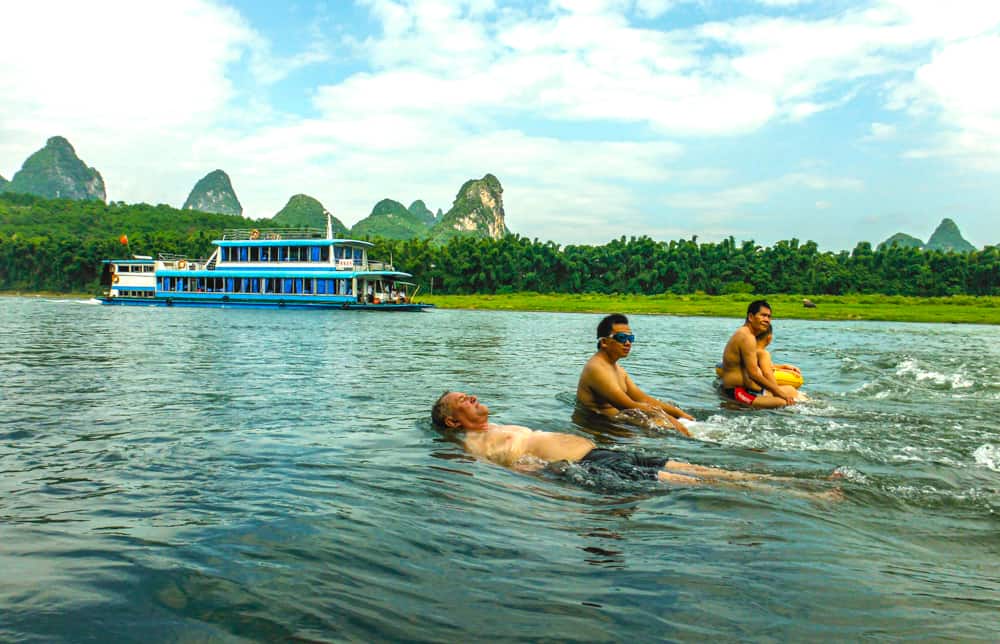
In the evenings, make sure to head back to the river at sunset to watch the local fisherman . The age-old technique uses their beautiful cormorant birds who assist them in the fishing.
We explored ourselves but we did get quite lost at times along the river and amongst the karst towers. One idea would be to join a guided hiking tour with a local English-speaking guide . Not only can you take in the scenery whilst following them, but they will share interesting facts about the area.
If you end up being short on time you can visit Yangshuo from Guilin on a full day guided tour along the Li River .

Longji Rice Terraces
An iconic image of China is of course, the rice terraces located a few hours from Guilin. Construction of the Longji Rices Terraces started back in the late 1200s during the Yuan Dynasty. However, they were not completed until the Qing Dynasty in the early 1500s.
We chose not to visit after deciding to spend more of our time in Yangshuo, but these are highly impressive and often a highlight on visitors’ itineraries in China.
A day at the Longji Rices Terraces can be spent hiking along the maze of trails between the terraces. There are stunning viewpoints along the way.
If staying in Yangshuo, it’s likely to be easier to join a tour to the Longji Rices Terraces to take care of the logistics and planning.

Where to stay in Yangshuo
As a huge fan of the Banyan Tree group, I highly recommend staying at Banyan Tree Yangshuo (£226 per night) for the best luxury stay in Yangshuo.
Other great options covering all budgets in Yangshuo include:
- Yangshuo Mountain Retreat
- The Bamboo Leaf Yangshuo
- Yangshuo 11 Hostel

Another city we loved in China was Chengdu. Famed as the home of spicy Sichuan cuisine, Chengdu is also the place to go in China to see pandas!
Together with the Great Wall, seeing the pandas in Chengdu was one of things I was most excited about. It was an incredible day out, and even better than I expected. Chengdu itself is also a great city to spend some time in too, with some awesome shopping and markets.

Chengdu Panda Reserve
Where do I start! This is one of the best things to do in China, and in my opinion, totally unmissable.
The panda centre is easy to get to from Chengdu . Simply jump on bus #198 or #198A from the Chengdu zoo stop in the city. Or grab a taxi for CNY 50, which takes 30 minutes from the heart of Chengdu, depending on traffic. Or arrange a 4-hour private your with drop-off and pick-up here .
Ensure to arrive early in the morning in order to see the pandas at their most active. They’re lazy creatures and after spending the morning tumbling, rolling around and chomping on bamboo, they often snooze for the rest of the day. The park opens at 7.30am and ticket entry is CNY 58 (£7/USD$8.50) per person, with children under 1.3m free.

The panda reserve in Chengdu is awesome, and you can easily spend a full day here. There are plenty of huge enclosures to see the pandas, and they have lots of climbing frames and toys. My favourite part was the baby enclosure, were we even saw tiny baby pandas in an incubator!
If you want to interact and hold pandas, you can visit as a volunteer for the day. However, it is rather expensive and we didn’t do this. You can book this online here , and it is approximately £285 per person for the full day interaction.

Explore Chunxi Lu
This 1km long pedestrianised shopping street is a must-visit in Chengdu. From authentic antiques and local goods, to boutique stores, there are 700 shops to tackle. Make sure to also visit the six storey Chunxi Road Market too.
An evening foodie and beer tour is a great way to explore Chunxi Lu.
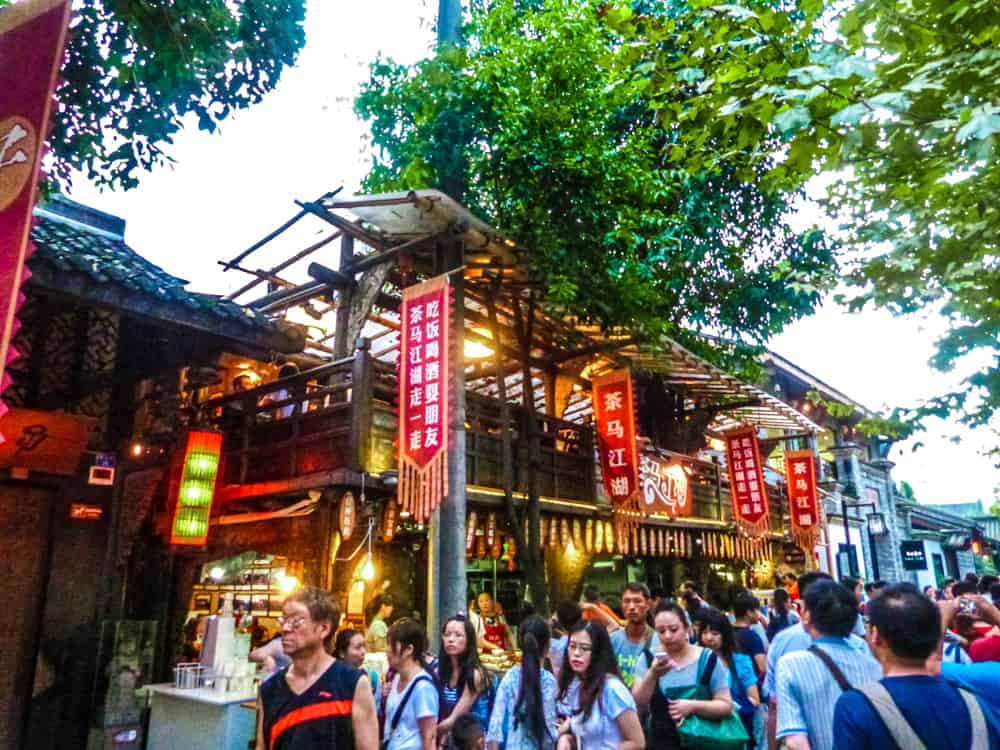
Leshan Buddha
Leshan, which is a 1.5hr bullet train ride from Chengdu, is home to the world’s largest carved stone Buddha in the world. You can visit this as a day trip yourself on one of the tourist buses, or book onto a local tour such as this one .
The sheer size of the Buddha is overwhelming, as he stretches more than 71m into the sky.
Where to stay in Chengdu
As with the other big cities in China, there’s a huge number of places to stay in Chengdu. You can definitely find some excellent value hotels in Chengdu. Here’s my pick of the best:
- The Temple House (from £188 per night)
- Crowne Plaza City Centre (from £47 per night)
- InterContinental Century City Chengdu (from £76 per night)
- Shangri-La Chengdu (from £79 per night)
- Renaissance Chengdu (from £46 per night)
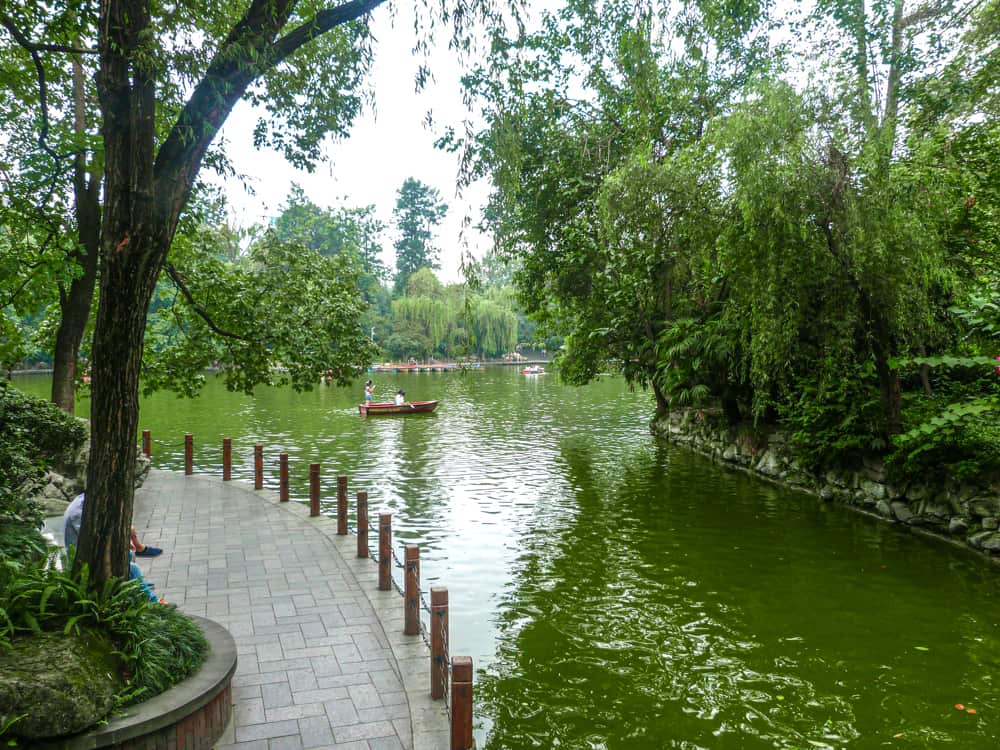
Other Places to Visit in China
In my opinion, this suggested two week China itinerary covers a number of the key highlights. If you have 3 weeks in China or longer, or if Zhangjiajie or Yangshuo do not appeal perhaps, then you could consider the below destinations:
Xi’an was once known as the gateway to the Silk Road, today it is best known for the Terracotta Warriors. There are over 8,000 life-size statues who were created during the reign of China’s first emperor to guard his tomb. Another highlight in Xi’an is to explore the old city walls and enjoy the view across the city and of everyday life.
You can book your train ticket easily online using this tour service from Beijing to Xi’an here.
Mt. Hua Shan is a great place to visit for thrill-seekers, and visiting here can be easily done as a day trip from Xi’an. The infamous Hua Shan plank walk is located here, where you side step along a plank fixed to the side of a cliff. This is considered the world’s most dangerous hike and supposedly over 100 people have died here. If anything, the mountains themselves are worth visiting even if you don’t do the plank walk and you can ascend to the summit of Hua Shan by cable car. You can visit all five peaks which each having stunning views and provide glimpses of the Yellow River below on several different hiking routes.
Jiuzhaigou and the Jiuzhai Valley National Park
Located north of Chengdu in Sichuan is this magnificent world of crystal clear alpine lakes, stunning cascades and ancient forests. At the heart of the national park is the multi-coloured, striking Five Flower Lake.
There is a limit of 5,000 people per day to this national park, so it could be a good idea to join a tour from Chengdu or to arrive very early.
The national park is both a UNESCO World Heritage site and a UNESCO Biosphere Reserve.
To get to the national park, you need to fly to Jiuzhaigou from Chengdu (or other cities in China). As it is located high in the mountains, there is no train here but there are long distance buses going from cities around China to Jiuzhaigou.
You can also arrange this excellent 4-day tour in advance from Chengdu taking in both Jiuzhaigou and Tibet.
Two weeks in China
So there’s my guide to two week China itinerary for a first-time traveller. As you can see, there are some amazing experiences on offer in this China itinerary and that’s just selecting a handful of places to see in China.
There are countless destinations to visit in China, but we picked each of our places for very distinct reasons. Beijing and Shanghai to visit the two biggest cities in China, both of which are packed with history and culture. Zhangjiajie and Yangshuo to explore rural China and enjoy some outdoor adventures, and then Chengdu for the pandas, of course!
And Suzhou and Tianmen Mountain were included in our China itinerary as they slotted in nicely to our plans.
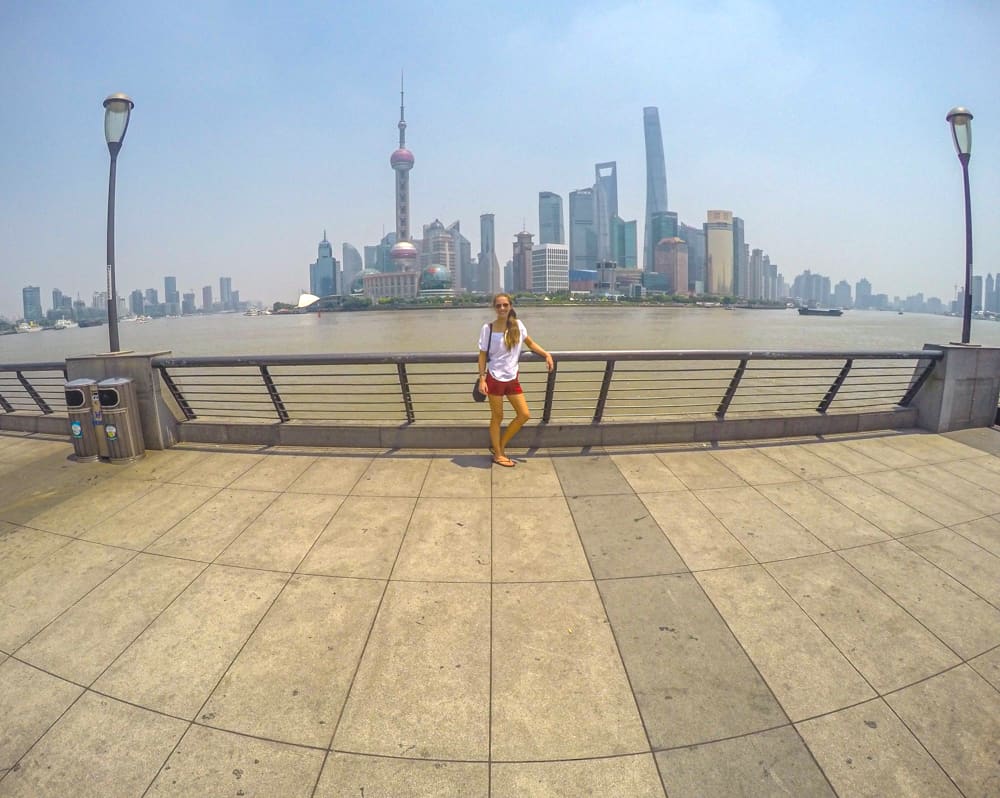
I hope this proves useful in planning for your trip to China!
Feel free to drop me a line if you would like any further advice on anything to do with travel in China. And if you’ve enjoyed this guide, then please do share using the below links!
Wanna see more? Check my Instagram here , my Facebook here or my Twitter here !
Disclaimer: This visit to China was entirely paid for by myself, and there was no involvement from the tourism board or a hotel. This is an independent guide.
Enjoyed my China itinerary guide? Pin it!
You may also enjoy:
Visiting the phi phi islands from …, the best beach clubs in bali – …, uluwatu beach guide – the best beaches …, guide to el nido: the best ….
Hi, thankyou so much for sharing your trip. your blog is amazing also all the pictures makes me want to visit there very soon. your blog is very helpful 🙂
Thank you so much for sharing your 2 week Itinerary!
It’s made me super eager to get back to Beijing as I loved it so much and would love to explore more and see how things are now. You’ve included some amazing`ing sounding ideas which I’d love to do!
China is really one of the most beautiful country filled with lots of modern and historical attractions. I had a chance to visit China with tourist group from Abu Dhabi and we had a great stay their, we especially liked the Great China Wall. I am planing to visit again with next group.
Hi, Thanks for the detailed explanation and tips. I’ve been reading a lot about the country and your posting is the most helpful and inspiring. I am planning to travel solo to China next November starting in Shanghai and ending in Beijing, for two weeks. is it safe for a solo female to travel around China? Thanks again
Great tour. Thanks so much. We are planning for May 2024.
Quick question: How did you get from Zhangjiajie to Yangshuo or Guilin? I did some research and it’s not easy by train or plane.
Sorry for the late reply! I flew between the two, with a stopover in Guangzhou – it wasn’t overly easy! Landed in Guilin and travelled by bus to Yangshuo!
Great Itinerary!!!
Leave a Reply Cancel reply
Your email address will not be published. Required fields are marked *
Let’s connect
Top Itineraries for Touring Different Parts of China
:max_bytes(150000):strip_icc():format(webp)/EBC_pose-591232dc5f9b586470fb3268.jpg)
The following itineraries are perfect starting places for traveling in China. You can tailor them to your own needs or put them together to create a complete China Travel plan for your trip.
When planning a trip to China, visitors should ask themselves what they want out of a trip.
- Do you just want to go to China and see the big sights?
- Are you more adventurous and want to get into nature?
- Were you hoping to mix cuisine into your travel?
- Do you want to see the countryside and avoid big cities?
- Are you active and want to include some trekking in your trip?
The answers to these kinds of questions will help you choose an itinerary that is perfect to what you are interested in and what you'd like to see and do.
Seeing the "Big Five" - A Ten-Day China Itinerary
This is a ten-day itinerary that takes visitors to China to the main "big five" sights that are on every first-time traveler's list. You'll see Beijing (the Forbidden City and the Great Wall), then on to Xi'an (the Terracotta Warriors). You'll then move on to the Yangtze River for the Three Gorges Dam cruise and wind up in Shanghai for the historic Bund and then some amazing food and city life.
This is a very basic itinerary and can be used as a starting point for China Travel.
Chengdu Travel Itineraries
Chengdu is a big draw for first-time visitors to China. Answering the call of the Giant Panda , many China travelers want to visit Chengdu and Sichuan Province .
There is a lot to see and do in the city of Chengdu and its surroundings.
Explorations in China's Northwest Gansu Province
Gansu Province has so much to offer travelers to China it would be easy to spend an entire trip just exploring the province from north to south .
In the north, visitors can travel the ancient Silk Road routes on the edges of the Gobi Desert, visit UNESCO-listed Mogao Caves and ride camels through the dunes. From there, travel the Silk Road's famous Hexi Corridor to visit the westernmost reaches of the Great Wall and other famous sights.
In the center of Gansu, visitors can tour more Buddhist caves in Bingling and visit the fabulous provincial museum to see excavated Silk Road treasures.
Farther south, one travels through largely Muslim counties until one reaches the Tibetan Autonomous Counties where Labrang Monastery is located.
Yellow Mountain Itinerary From Shanghai
The Yellow Mountains (or Huangshan in Mandarin) are incredibly famous in China for the mountain and pine tree landscape. Going to the Yellow Mountain area is an easy addition to any itinerary, especially if you're going to be in Shanghai.
Yunnan Province Travel Itineraries
Yunnan Province in the south of China is another place that should be on every traveler's list if they've got the time and inclination to do some exploring.
Incredibly diverse, travelers can experience various cultures: Tibetan culture in the northwest , Dai ethnic culture in Lijiang, Bai culture in Xizhou and many other ethnic minorities that populate the lush mountains and fertile valleys of this tea-producing region.
Great Activities for Kids Visiting China
Your Trip to Shanghai: The Complete Guide
The 15 Biggest Chinese Cities
20 Best Things to Do in Shanghai
What You Can See and Do in Gansu Province
A Visitor's Guide to Touring Yunnan Province - Itineraries and Sights
Maps of China's Mainland Provinces
Choosing Between Shanghai's Puxi and Pudong Neighborhoods
Visitor's Guide to the Terracotta Warriors Museum in Xi'an
Weather in Northwest China: Climate, Seasons, and Average Monthly Temperature
Your Guide to Hiking China's Tiger Leaping Gorge
6 Historical Journeys You Can Still Take Today
The World's Highest Places and Attractions That You Can Visit
The 10 Best Hikes in China
Best Summer Activities in China
The Best Countries in the World for Adventurous Travelers

All Destinations , Asia , China , Overland Itineraries , Plan Your Trip
One month in china itinerary for first timers.
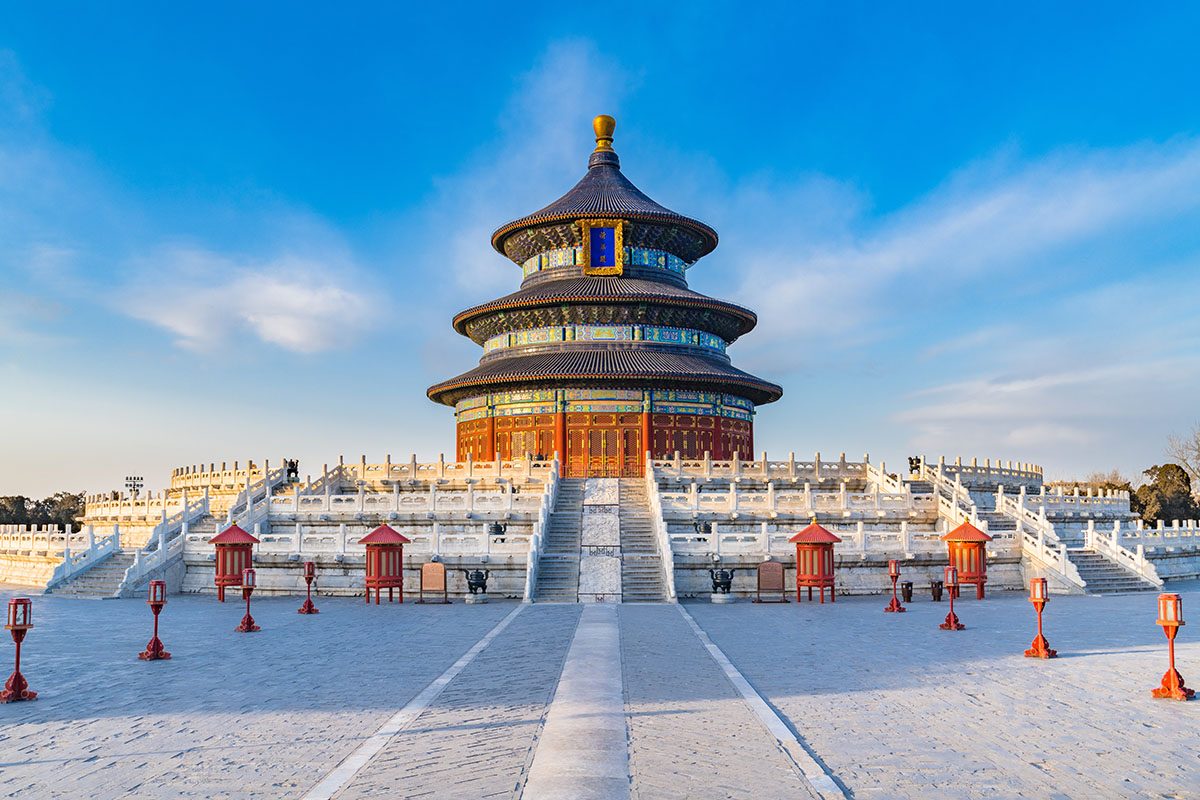
If you’re reading this China itinerary, I’m guessing you’re planning a trip to the country. China is one of my favourite countries to travel in. It’s brimming with history and culture, from the Terrcotta Warriors to its many, many temples, but it has the most dynamic modern scene in cities like Shanghai and Guangzhou. It has desert, beaches and mountains (lots of the latter!), as well as some of the most impressive megacities you’ll likely ever see. I’ve been to China four times now, so I know a thing or two about planning a China itinerary.
Planning Your China Itinerary
First up, don’t feel overwhelmed.
On my first time in China, I landed in Beijing with no guidebook, no phrasebook and I only knew how to say ‘ this is my foot’ , ‘ you are very beautiful ‘ and ‘ make me a cup of tea ‘ in Mandarin.
These phrases are probably only useful to a flirty shoe model with a caffeine addiction and didn’t help me at all when I was navigating the airport, buying a subway ticket and finding my way to my hostel. But I still made it, not only to my hostel but travelling around for two whole months.
I am lucky to have family from China – my stepmum was born here, and I did spend some of my first two months in China with her and her family (although I arrived alone).
I have had some help in that regard, but I’m going to pass on all that I’ve learnt about travel in China from my family in this post and others.
You don’t have to know Mandarin to spend 1 month in China, but I do recommend some forward planning.
First thing first – get your Chinese visa sorted. It’s a bit of a complicated process, but you can check out this handy guide on how to get a Chinese visa for some great pointers.
The second step is to think about the best places to visit in China and work out exactly where you want to go. Luckily for you, I’ve done all the hard work! Here’s a month’s China itinerary to see the main highlights of the country, including tips for travelling to each destination.

Travelling in China Essentials

(there’s a lot of long bus rides), a rain mac (it can rain at any time of year!), a good first aid kit, a bumbag to keep all of my valuables in and a good smartphone to download some useful apps for China.
One Month in China Itinerary
This one month in China itinerary includes every place that I visited in the country on my first trip, when I was keen on seeing all of China’s highlights. I have returned and visited other places since. On my first trip I also spent a week in Liaoyuan, a non-touristy city in China, visiting family. I loved visiting and would recommend that anyone add a trip to a non-touristy city to their China itinerary, but because this post discusses the highlights, I haven’t included it. But read this post to learn about why I think everyone should visit a non touristy city in China ! This China itinerary covers the following cities:
- Beijing (and the Great Wall of China)
- Xi’an (and Huashan Mountain)
- Guilin (and the rice terraces of Longsheng)
It’s a very packed one-month itinerary for China, but it is feasible. If you have more time in China, I’d also recommend the following places that I have since visited:
- Yunnan: Travel in Yunnan takes you through a diverse landscape that shifts from dramatic snow-capped mountains to sprawling rice terraces. The province is a mosaic of ethnic cultures, with the Naxi of Lijiang and the Bai of Dali offering rich traditions and vibrant festivals. Your trip isn’t complete without visiting the Stone Forest, a natural wonder of towering limestone formations. Plan to explore the ancient town of Lijiang, a UNESCO World Heritage Site, known for its maze-like streets and canals. When hunger strikes, indulge in local flavors like “Crossing the Bridge Noodles,” a must-try dish. .
- Chongqing : a popular layover destination, Chongqing has some attractions within the city, like the old quarter and various temples, and is also the gateway to the Yangtze River.
- Guangzhou : one of China’s crazy megacities, Guangzhou has modern architecture twinned with a compelling and multicultural history.
- Hangzhou : one of China’s most beautiful cities, Hangzhou has various scenic areas arranged around a beautiful lake.
- Nanning : again, a good jumping place if you’re travelling into/ out of South East Asia (you can take a direct train from Hanoi to Nanning), Nanning is a modern city with not all that much in the way of attractions – but it’s still quite interesting to check out local life.
- Erlian : right at the border of Mongolia in the Gobi Desert, Erlian is famed for prehistoric dinosaur history and is a great place to enjoy Mongolian culture without actually crossing over. If you are crossing into Mongolia, check out my guide to Ulaanbaatar , its capital.
- Zhangjiajie : famed for being the inspiration to Avatar, Zhangjiajie has beautiful mountains and some great hiking opportunities. You can check out my YouTube video below:
Below is a sample one-month China itinerary that I have put together from my four trips to the country and conversations with my Chinese relatives.
As you can see, this itinerary covers a lot of ground in a month.
It includes a fair amount of overnight trains that you might find very tiring.
That being said, I’d recommend thinking about your own travel style.
If you need to omit some of these places, then do so.
If you’re not sure what to omit and what to include, here’s my advice: on a first trip to China, Beijing, Shanghai and Xi’an are must-see cities to understand the nation’s culture and history.
Guilin is probably the most accessible place for nature, and from there it’s an easy jumping-point to Hong Kong.
Jiuzhaigou is my favourite nature spot in China, but you do need to go to Chengdu to get there.
Zhangjiajie is stunning, and worth seeing if you’ve got time.
Hangzhou is a really special Chinese city and worth seeing to prove that cities in China can be beautiful.
Nanjing has a lot of WW2 history, a very sombre but significant message from China’s dark past.
These are all destinations that are worth visiting in their own right.
However, if you think that your one month in China itinerary will be too rushed with all these destinations, it might be worth prioritizing what you want to see.
That being said, it’s entirely possible to do this China itinerary in one month, and even have a couple of days wiggle room!
So let’s get into this one month China itinerary.
Beijing and the Great Wall – 5 days
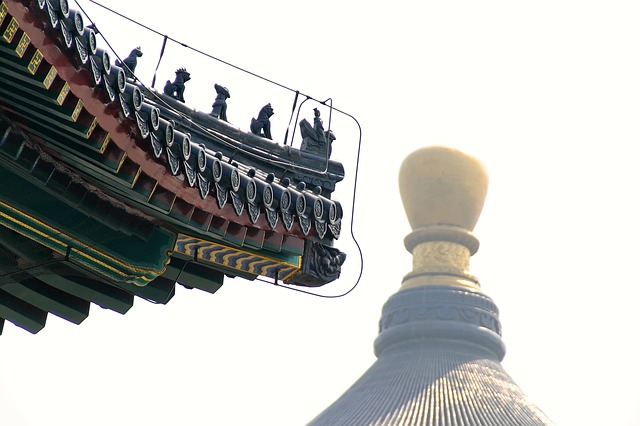
Start your China trip in its lively and chaotic capital. Beijing is perfect for China first-timers because it has all the conveniences of any large city but is still bursting with culture and history. From Beijing airport, you can take a metro all the way to the city centre, where a lot of hostels and hotels are located.
For the sake of this one month in China itinerary I’m recommending you spend three days in Beijing to see the highlights – but you could easily spend much longer. If you want to take your time to soak in the Chinese capital, 5 days in Beijing is perfect – if you want to take a more leisurely pace (which is a bit of an oxymoron in Beijing, but we’ll go with it), you could spend over a week here.
Day One: Tiananmen Square and the Forbidden City

Spend your first full day in China visiting two of its most famous attractions: Tiananmen Square and the Forbidden City.
Be amazed at the vastness of Tiananmen Square, and snap a photo of the famous gates which are looked over by a portrait of Mao Zedong.
You can even visit his Mausoleum if you arrive early enough! Then walk through to the Forbidden City, an area filled with magnificent architecture and grandeur. Spend your afternoon wandering around the National Museum of China, which will definitely inspire you to learn more about this compelling country!
Day Two: The Summer Palace and the Temple of Heaven

On day number 2 in Beijing, I’d recommend visiting the Summer Palace and the Temple of Heaven. If you thought the Forbidden City was grand, the Summer Palace will blow your mind away. Wander around this royal park and be amazed at both the enchanting pagodas and the stunning gardens. After a morning here, be transported to the equally compelling Temple of Heaven – one of the most instagrammable places in Beijing – a medieval religious site used by historic emperors. In the evening, check out the Beijing Opera – you can purchase tickets here.
Day Three: Historical and Cultural Beijing
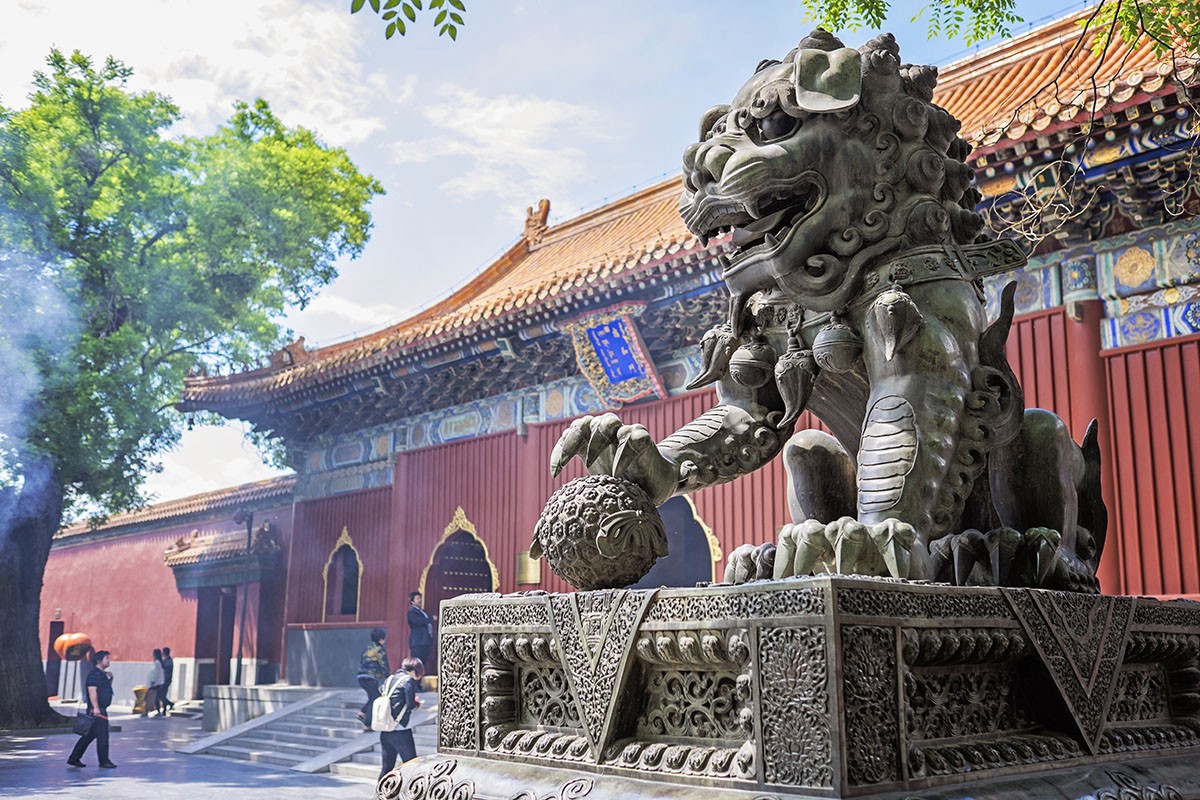
Start your day at the Silk Market, where you can see some of the finest examples of Chinese Silk – which caused all sorts of cultural connections throughout the 12th century including the establishment of the Silk Road in places like Uzbekistan and the introduction of Islam to Central Asia and Western China. It was largely down to this Chinese product that one of the best land routes was ever made. Here you can check out the silk products, and buy some for yourself if you want some souvenirs. Next, head to Lama Temple. This temple sees fewer tourists than the ones that you saw the day before, but it’s actually one of my favourites. Then you can spend the afternoon exploring Beijing’s hutongs, like Nanluoguxiang, and checking out its art scene at the 798 Art district.
I go into this itinerary in much more detail in my three days in Beijing post – check it out!
Where to Stay in Beijing
Day four and five: the great wall of china.
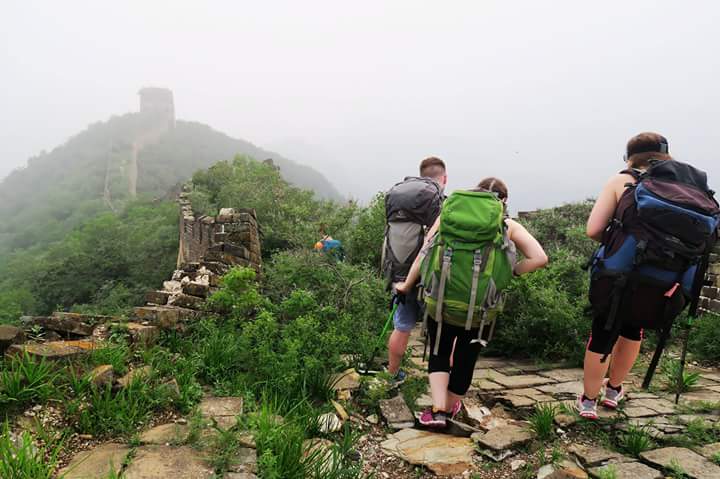
Visiting the Great Wall of China is a must on anyone’s Chinese wish list. But camping on the Great Wall is even more compelling, right? Take an overnight camping tour with China Hiking to Jiankou, a completely unrestored section of the Great Wall. Relish in the serenity that comes with being at such a quiet area of this wall, and enjoy the architectural marvel that so many people associate with this Asian country.
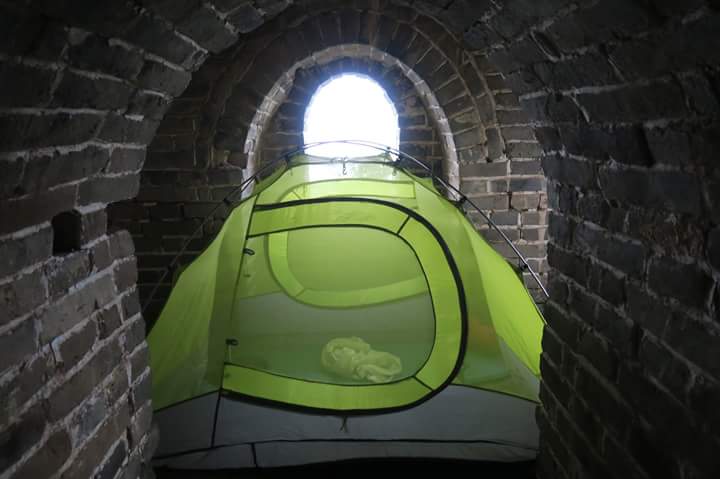
You will camp overnight on the Great Wall, and a transfer back to Beijing will be organized in the morning. Spend the rest of the day visiting some spots you’ve missed out, or just chilling out ready for your overnight train to Xi’an. Take an overnight train from Beijing – Xi’an. I’d definitely advise booking trains in advance for your first time in China – it is very daunting to try to negotiate buying tickets with no Chinese and they often sell out. Use this link to see the latest deals .
Xi’an – 3 days
Xi’an is probably my favourite Chinese city – I love the merge of cultures, the delicious street food, and the fairly compact layout of it all. It’s steeped in history – it’s one of the four ancient capitals of China, after all – and most of your China itinerary here will be spent exploring the stories that the city has to offer. Of course, there’s a trip out the city to see the world-famous Terracotta Warriors, and a day trip to Huashan Mountain as well.
Day Six: Xi’an City
Once upon a time all cities in China were walled. Xi’an is one of few cities whose walls have not been abolished and can be explored at your own leisure.
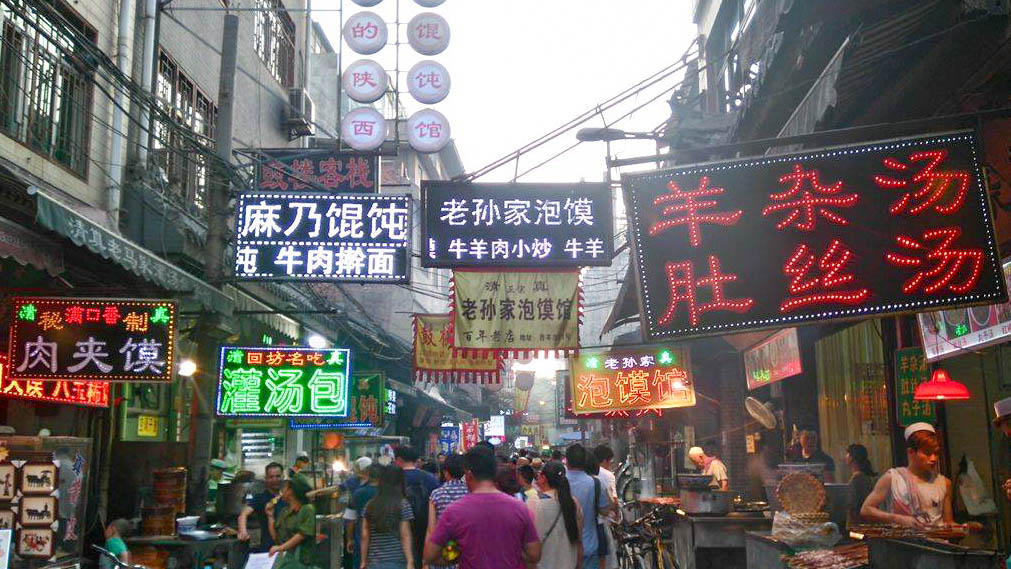
Spend the morning on top of these walls, either walking along them or exploring the walls by bike (they can be rented from the top of the walls), before descending into the city’s Muslim Quarter. Here you can enjoy the delicious and cheap street food and walk around Xi’an’s Great Mosque.
Day Seven: The Terracotta Warriors

On day two, take a transfer to the Terracotta Warriors, an ancient selection of soldiers that were made with the intention to protect an emperor after his death. The ensemble of figures is an amazing feat – be sure to snap lots of pictures before leaving! Spend the afternoon wandering around the Wild Goose Pagoda, an ancient building from the Tang Dynasty.
Day Eight: Huashan Mountain

For you last day in Xi’an, take an early transfer to Huashan Mountain, a sacred Daoist mountain (and thought by some to be the most dangerous mountain in China!). The path around it can be easily navigated and it offers some spectacular views. But be sure to descend to catch the last bus back to Xi’an that night at 7pm! Read my full guide on a day trip to Huashan Mountain and my thoughts on its safety here .
Where to Stay in Xi’an
Overnight train from Xi’an to Chengdu – use this link to see the latest deals .
Chengdu – 2 days
Day eleven: chengdu panda base.
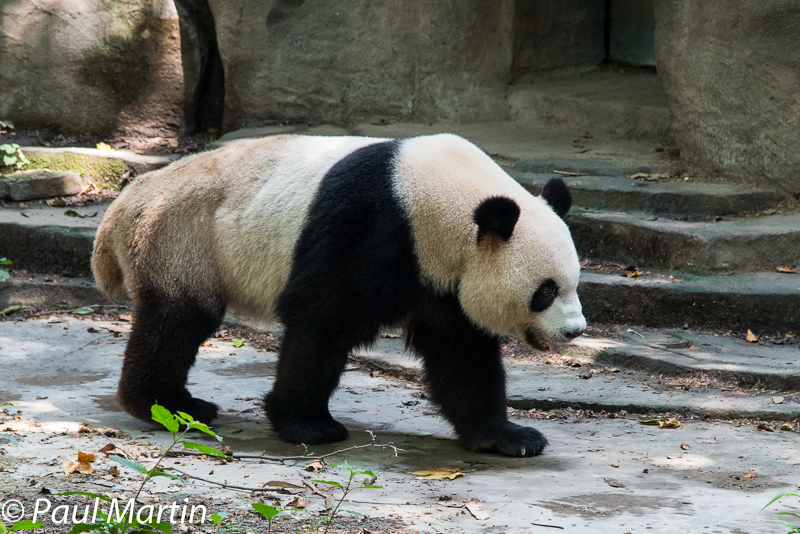
Day Twelve: Leshan Giant Buddha
The next day, you could visit the world’s largest Buddha at Leshan, which is 2 hours away. Spend the day exploring the scenic area and the many Buddhas it contains, as well as marvelling at the Big Buddha itself.
Where to Stay in Chengdu
Day thirteen: bus to jiuzhaigou.

Day Fourteen: Jiuzhaigou National Park

Spend the day exploring Jiuzhaigou National Park . With gorgeous waterfalls and outstandingly blue lakes, this park shows off the very best of China’s nature.
Day Fifteen: Exploring Jiuzhaigou’s Surroundings
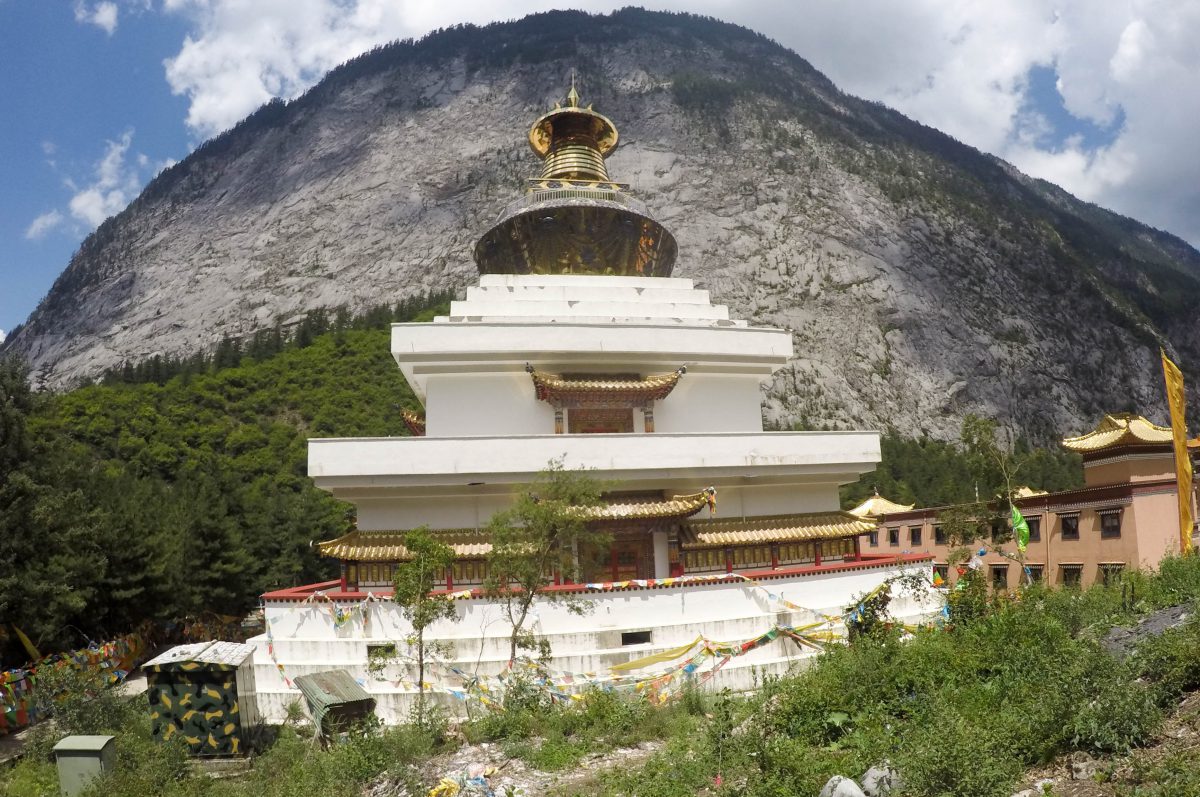
Jiuzhaigou isn’t technically in Tibet, but it’s culturally as close as you can get without a separate visa. Spend the day exploring the surroundings of Jiuzhaigou and enjoying the sub-Himalayan culture of this area of Asia. You can do so by hiring a driver (you’re unlikely to get an English-speaking driver, but if you ask your hotel/ hostel for someone to show you some local spots they will be happy to oblige and recommend places).
Where to Stay in Jiuzhaigou
Day sixteen: bus to chengdu.
Take the bus back from Jiuzhaigou to Chengdu. Once you’re off the bus, transfer to the train for an overnight journey from Chengdu to Nanjing. Use this link to find the best deals .
Nanjing – 1 day
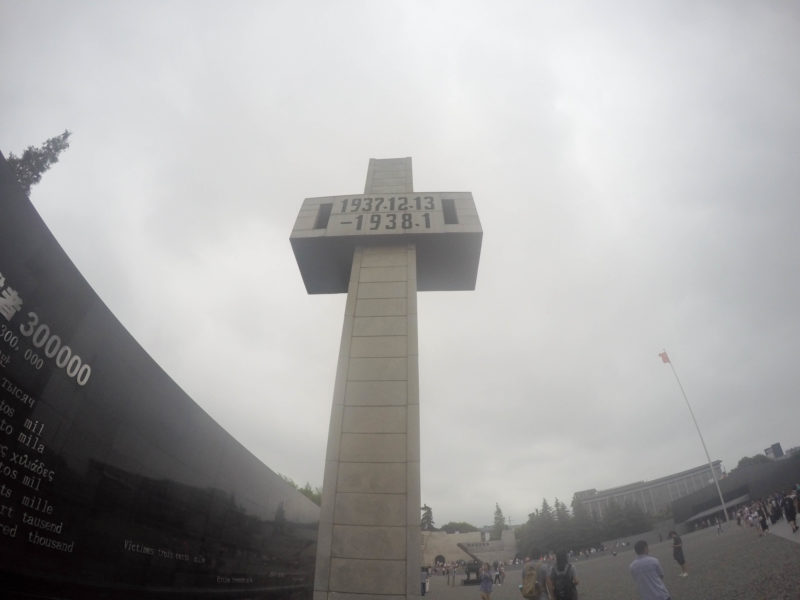
Day Ten: Nanjing Massacre Memorial
During your one day in Nanjing, the Nanjing Massacre Memorial . This is a difficult place to visit but a very important one. Here you will learn all about one of the most gruesome genocides of the Second World War, and the story of the war in Asia. The attached museum is fantastic and gives a real insight to WW2 in this part of the world, which is very important to learn about, especially if you only studied European WW2 history in school like most schools in Britain. Take an overnight train from Nanjing – Guilin. Use this link to purchase tickets .
Where to stay in Nanjing
Shanghai – 3 days.
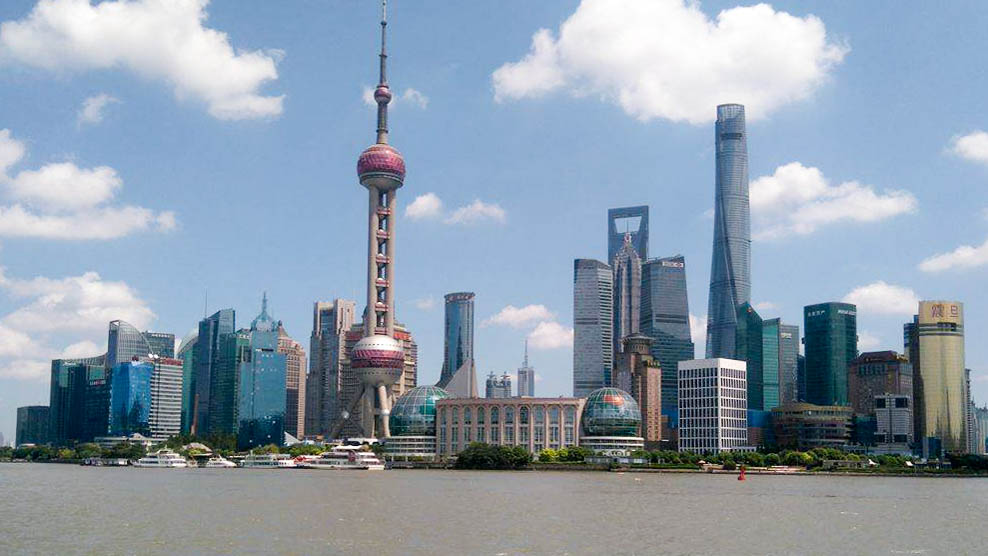
Shanghai is one of China’s most-visited cities, and the most western-friendly. The city is a huge, glittering, metropolis, with over 23 million inhabitants, but its land size, city planning and public transport make it relatively easy to both enjoy its urban attractions and green spaces – and there are also plenty of day trips from Shanghai that enjoy its nearby nature, that you can do if you have more time in the city.
Day Nine: Shanghai Highlights
Start your time in Shanghai by enjoying the intriguing skyline of The Bund. Even if you only have one day in Shanghai , this should be your first stop. A stark contrast to the ancient temples of Beijing, The Bund showcases futuristic China. After taking some snaps of this modern marvel, take a walk down East Nanjing Road, the busiest road in Shanghai. And if you want some serenity after the chaos, take a stroll down to Yuyuan Garden which is a calm oasis in the middle of the mad city.
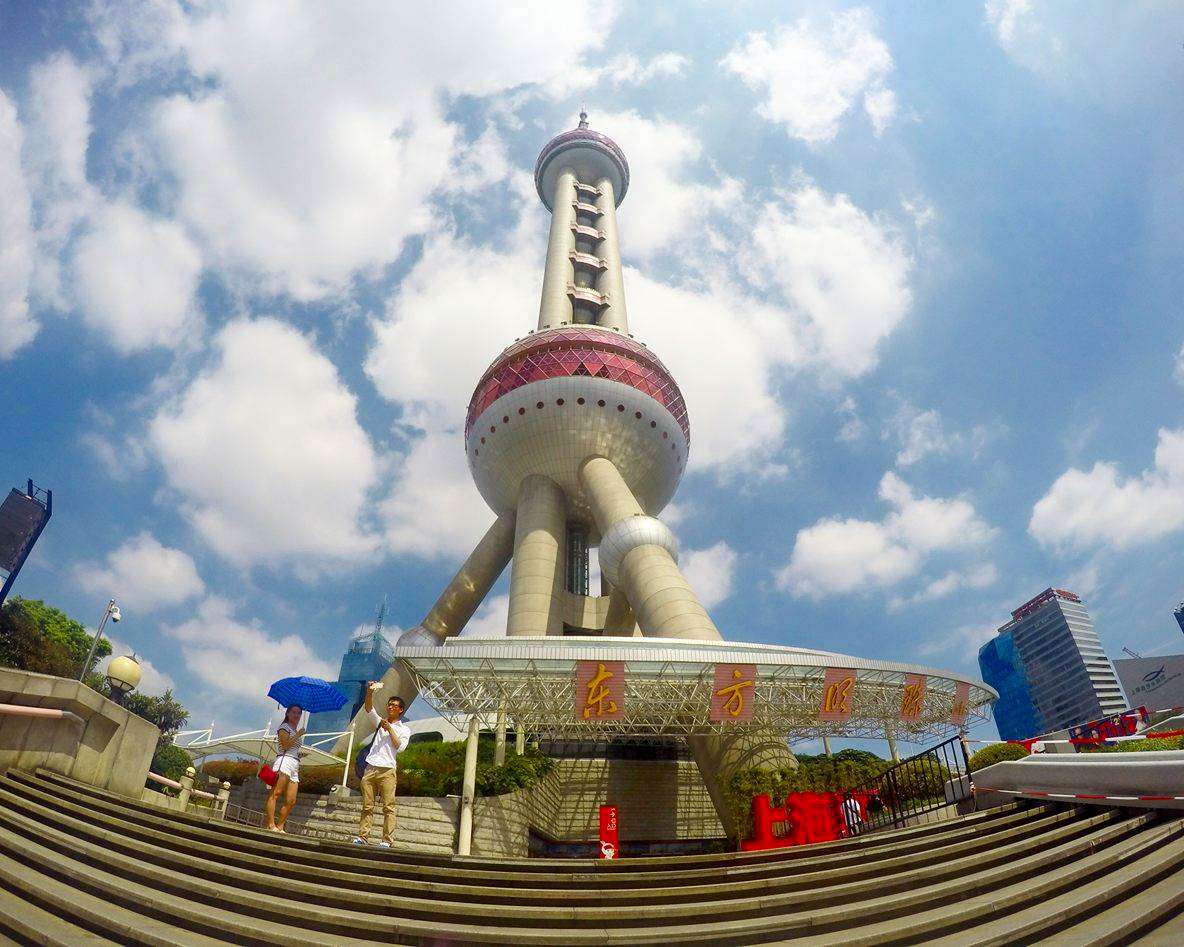
Day Eight: Alternative and Historical Shanghai
The next day, take a walk around the French Concession and visit the alleyways brimming with shops and restaurants of Tian Zi Fang. Then head out and explore one of the city’s most unusual museums – the Propaganda Poster Museum! Afterwards, learn all about China’s modern city at the Shanghai Museum. You can also ascend the TV tower for a great view over the city – this is best done at sunset, but do be aware that there are sometimes queues of an hour or more to reach the top of the TV tower.
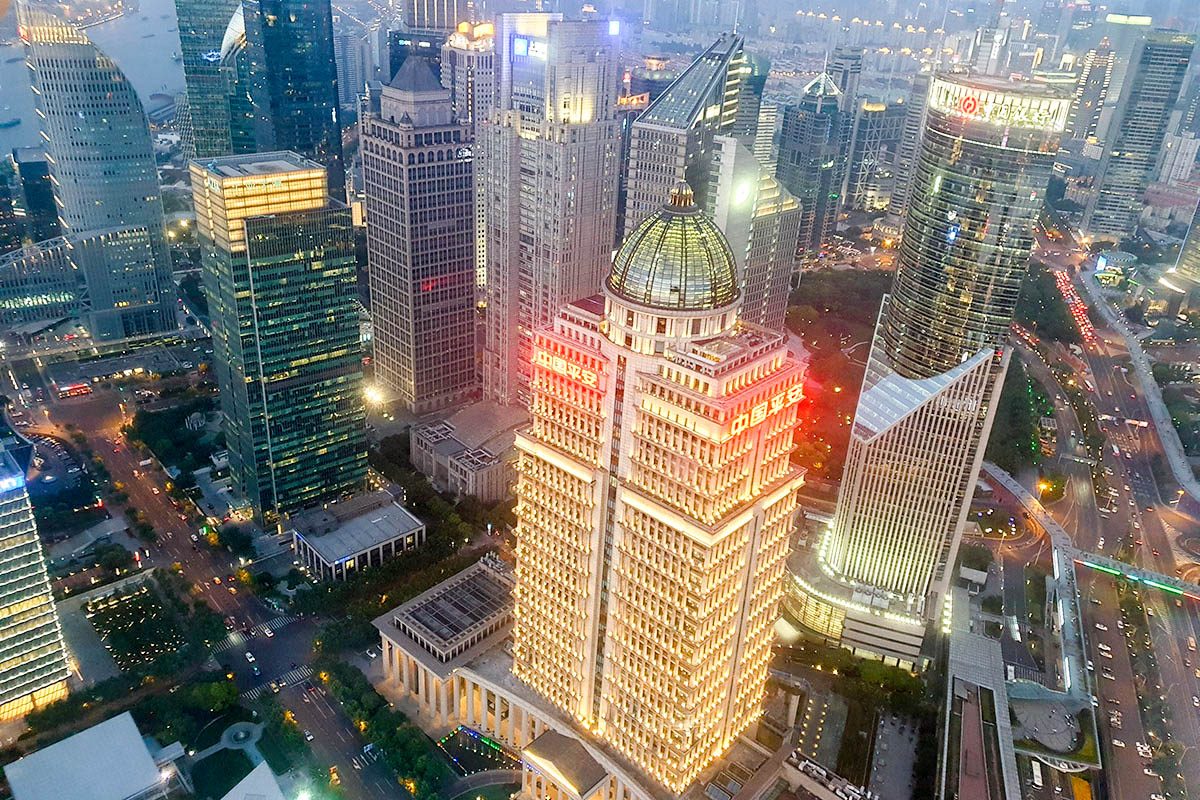
Day Nine: Zhujiajio Floating Village
On your last day in Shanghai, consider getting out of the city and exploring the water village of Zhujaijio, which is home to a network of scenic canals, as well as cute cafes and bars and authentic culture. Then head back to the city for an evening bullet train to Nanjing! You can check out my YouTube video to see what to expect from the bullet trains below and use this link to find some awesome deals .
Where to Stay in Shanghai
Mid-Range Hotel: San Want Hotel Shanghai is located in the Xujiahui commercial center close to metro line no. 9 (Guilin Road subway station) to easily roam around Shanghai. From standard to superior to suites, it has options for all type of budget travelers.
Complimentary mini-bar snacks and drinks, free broadband Internet, In – House Spa, 2 Authentic Chinese Dining places, Banquet hall to accommodate up to 600 people for conference or Marriage purpose. Grand Lobby, a separate tea room, special festival celebration keeps the guest engaged throughout the day. Being part of a Taiwanese Hotel Chain, the facilities and hospitality is uniform across the places of stay. Click here for rates and to book. By Chandresh from Family on the Wheels
Day Seventeen: Guilin City
Arrive in Guilin and spend the first day exploring the city, maybe doing a free walking tour . Visit the famous elephant trunk hill and walk around the varied and interesting food markets, enjoying some street food for dinner.

Day Eighteen: River Li and Yangshuo
The next day, get a transfer to the River Li and take a cruise around the river.
Afterwards, spend some time enjoying the natural scenery around Yangshuo . If you have some spare time on your China itinerary, consider staying here ofr a night to enjoy the scenery. Or if you’re in a rush, take a transfer back to Guilin for the evening.
Day Nineteen and Twenty: Longsheng
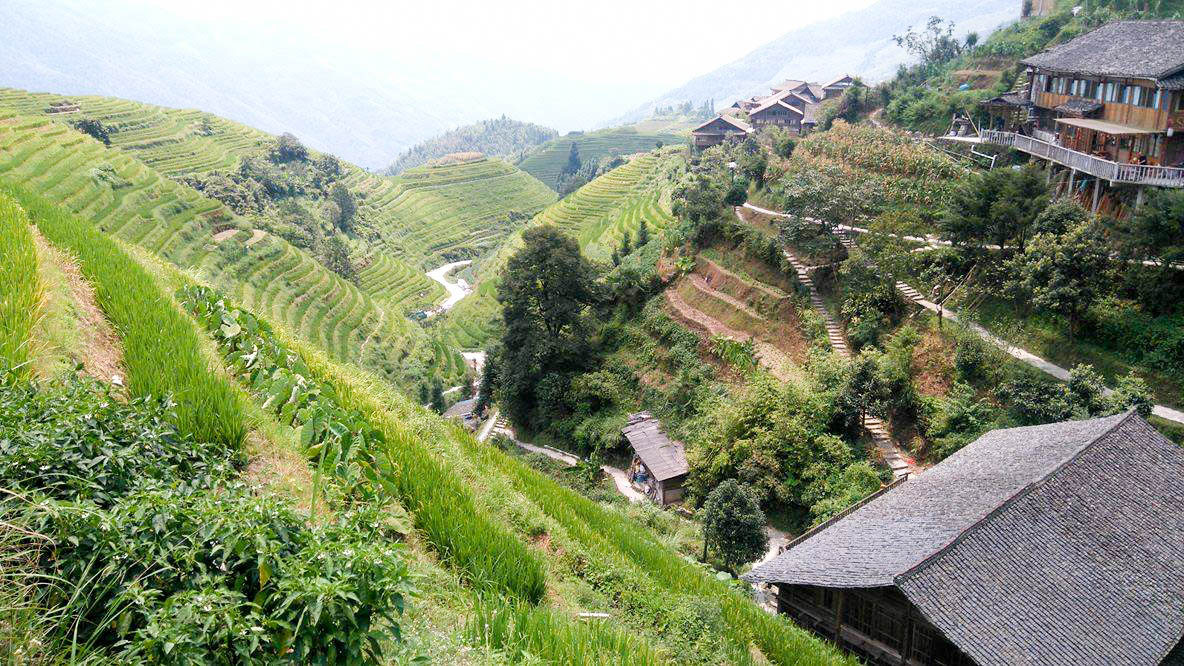
Take a bus to the Longji Rice Terraces and spend the day walking around the stunning area. Enjoy both the scenery and the rustic village atmosphere, and spend the night there for a sunrise over the picturesque rice terraces. Here are some reasons why you should favour staying in Yangshuo and Longsheng over Guilin!
Where to Stay in Longsheng
Day twenty one: hong kong.

Take a train from Guilin to Shenzhen in the morning – book tickets by clicking here – and then cross the border into Hong Kong (I personally couldn’t stand Shenzhen, but some travellers do spend time here).

Spend the first afternoon in the Kowloon area, visiting the Temple Markets as they open at night.
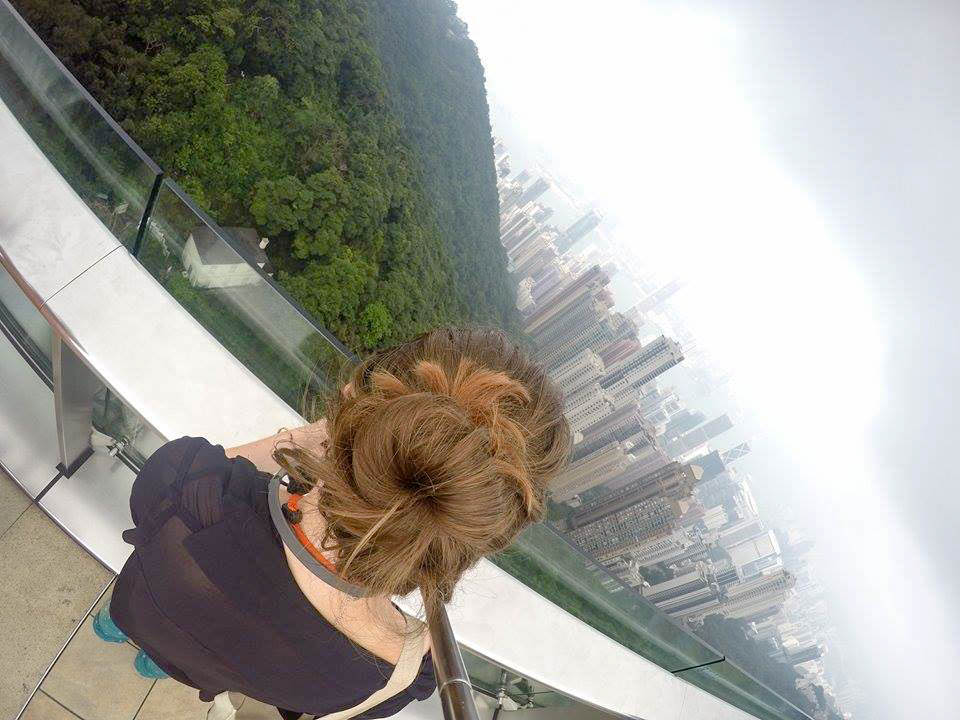
Day Twenty-Two: Hong Kong Highlights
The next day, take the Peak Tram up to Victoria Peak and enjoy the impressive cityscape of Hong Kong laid out in front of you. In the afternoon, take a trip to the Hong Kong museum to learn more about the city. And be sure to catch the Symphony of Lights at 8pm.
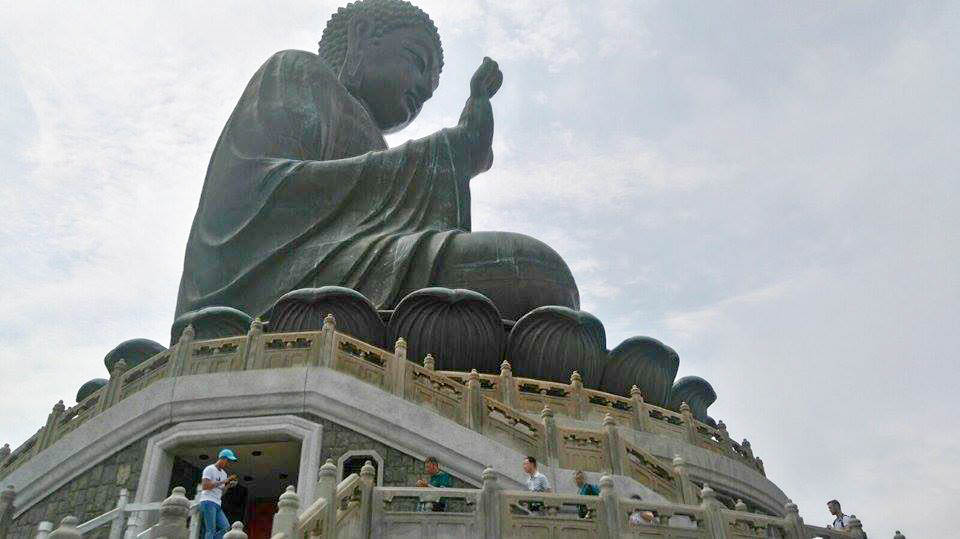
Day Twenty-Three: More Hong Kong
On your next day in Hong Kong, take the cable car up to the Hong Kong Buddha and visit the Po Lin Monastery. Spend your last afternoon in Hong Kong exploring the Tsim Sha Tsui area of the city. If you have a bit more time in Hong Kong and the surrounding areas, check out this detailed itinerary for Hong Kong and Macau .
Where to Stay in Hong Kong
Where to go from hong kong.
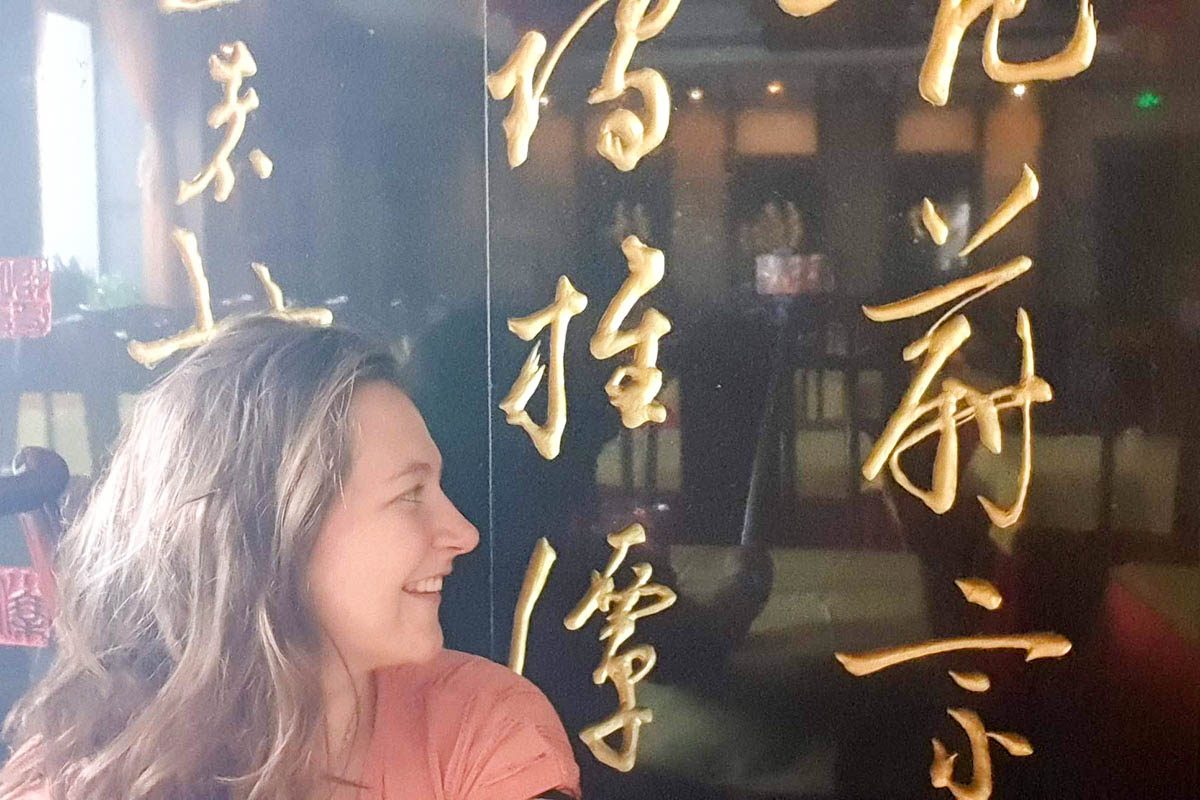
Your first time China trip ends today! Hong Kong has a very well connected airport that can take you to global destinations. Alternatively, cross back over into China (if you have a multiple entry visa) to explore more of the country, or have an overland adventure to South East Asia! Still have questions? Check out my other China posts…
- Solo Travel in China – tips on how to navigate the country if you’re travelling alone (also useful if you’re not!)
- Train Travel in China – taking the trains through China? Be sure to read this article to learn about everything you’ll need to know
I hope you found this China travel itinerary useful. I’ve got loads of deeper resources on each destination mentioned – click on the hyperlinks for more information! And please do not hesitate to contact me, either in the comments box below or over on Facebook if you have any China-related questions! Have you ever been to China? Wh at were your highlights if so? If not, what is the #1 thing you want to do in the country? If you liked this first time in China backpacking itinerary, please share it or follow me on Facebook!
10 thoughts on “ One Month in China Itinerary for First Timers ”
So many friends are packing to go on a China trip… and I still feel lost because I don’t know this beautiful country enough. Your article was such an interesting read, thank you for posting it!
China is quite high on the bucketlist, but there is so much to see. Hard to make a choice. This post is very useful.
China is on my bucket list as well! It has so many beautiful places to visit, but I also heard a lot about the communication and navigation problems. Your article gave me motivation to try it though! Thanks for sharing this!
China’s an amazing country to visit and it’s really not as tough as I thought it was going to be!
This post is brilliant. I am currently learning Mandarin with the dream of traveling to China and speaking with the locals. This was just the motivation boost I needed just now! I’ve set up a new blog, your welcome to check it out http://www.myputonghua.com Thanks
Nicely written Claire! I haven’t made it into China yet (as you said, it’s daunting) but this itinerary seems to lay everything out in a way that isn’t too rushed but still see’s a lot of a large country in a (relatively) short timeframe! Keep it up!!
Hopefully you’ll make it someday it’s an amazing country! Be sure to check back with this itinerary if you do! 🙂
Oh your camping on The Great Wall looks so interesting and strange. It might be the memory that we can’t forget in the lifetime. It seems that you miss a very beautiful part of China in this trip such as Yunnan. Or you want to combine it with the expedition to Vietnam & Laos? Anyways, thanks so much for the great post!
This was extremely helpful, thanks fro your advice !! Thanks
China has been one of most most favorite backpacking trips!! And a month definitely wasn’t long enough. And second trip is on top of my list!! Next time round I would organize a VPN for both my phone and iPad. And install wechat.
Comments are closed.
- New Zealand
- The Philippines
- The Netherlands
- United Kingdom
- Inspiration
- Overland Itineraries
- Packing Lists
- Travel Tips
- Working Abroad
- Accomodation Guides
- Overland Travel
- Preserving Cultures
- Protecting Animals
- Living Abroad
Simon Lewis | 24 July 2019
China trip planner: 5 epic itineraries from east to west.
Blimey, it’s big. But don’t be deterred. China is also wild, bustling, ancient, modern, scenic and full of surprises. Get your head around it all with the best routes and more top itinerary ideas...
A comprehensive guide to the best of China is impossible. It’s a vast land, encompassing mountains, deserts, forest and enormous cities ; it’s one of the world’s great civilisations, with 5,000 years of history; and, as the nation swaggers its way to the front of the world stage, the contemporary landscape is changing faster than anywhere else in the world.
China’s headlong plunge into modernity has made things better – the country is open as never before, new road and rail links make travel smooth and easy, English is more widely spoken and, as the populace embraces a consumer society, food and nightlife have vastly improved. It would be easy to simply list China’s headline acts, but it’s the country’s smaller, quirkier destinations – with their haphazard charm and air of the unpredictable – that are often the more rewarding. It is more exciting to hike along a crumbling section of the Great Wall than to take the cable car to a reconstructed length; a cute little temple thronging with devotees lighting incense is more atmospheric than one full of snap-happy tourists.
All the itineraries below try to mix smaller sights with the grand big-hitters, to offer a tastier bite of this indigestible nation...
Skip ahead to your the route that spikes your curiosity most:
The south west: Yunnan (2 to 3 weeks)
The wild west: Qinghai & Xinjiang (3 weeks)
The Great Wall: East to west (3 weeks to one month)
The classic: Hong Kong to Beijing (2 to 3 weeks)
Central China: The Yellow River (3 weeks)
1. The south-west: Yunnan

Jade Spring Park, Lijiang, Yunnan province, China (Shutterstock)
Best for minority culture & natural beauty
Duration: 2-3 weeks Route: Kunming > Yuanyang > Jinghong > Dali > Erhai Lake > Lijiang > Tiger Leaping Gorge > Zhongdian
Yunnan is China’s coolest province, a traveller’s favourite. It offers a wide variety of scenery and peoples: half the population belongs to one of around 27 minorities, each with its own culture. Such diversity means you can pack a lot into a short trip.
Start in Kunming, the clement provincial capital, then head south to view the spectacular rice terraces of Yuanyang, before heading into steamy Xishuangbanna, which borders Laos. Base yourself in sleepy Jinghong, and arrange a three-day trek to the fascinating villages nearby, many of which nestle in deep jungle.

Rice terraces of Yuanyang, Yunnan (Shutterstock)

Shaxi, Dali, Yunnan (Shutterstock)
Fly north to Dali for a complete change of scene. This is the capital of the Bai people and a popular tourist spot. Escape the crowds by hiring a bike and explore the lovely Erhai Lake – all the quiet villages here have small accommodation options.
A few hours north by bus, nestling at the base of Jade Dragon Mountain, is Lijiang, homeland of the Naxi people. It’s a charming town of cobbled streets and wooden houses; though something of a tourist theme park, the local culture is fascinating. Head into the countryside for gorgeous scenery – at its best at Tiger Leaping Gorge, which can be hiked in two days; there are homestays en route.
The road north winds uphill, to the edge of the Tibetan plateau, and another minority homeland, the Tibetan town of Zhongdian. The old town isn’t very authentic, but Ganden monastery, on the outskirts, is lovely, and the rugged terrain offers good hiking. You can continue from here into Tibet, though (due to restrictions) only as part of a pricey organised tour.
2. The wild west: Qinghai & Xinjiang

Qinghai Lake (Shutterstock)
Best for minority culture & wilderness
Duration: 3 weeks Route: Lanzhou > Xiahe > Xining > Qinghai Lake > Jiayuguan > Turpan > Urumqi > Kashgar
China’s wild west is a rugged wilderness of mountains, desert and grassland. Though making up almost a third of China’s area, it contains less than 5% of the population.
And much of that population is made up of minorities, who have distinct cultures of their own – most notably Tibetans, whose Buddhist traditions link them to Nepal and Mongolia, and Muslim Uyghurs, whose language is closer to Turkish than Chinese. Add Kazakhs and Kyrgyz, among others, and you have an area that feels very different from the rest of China.
Start in dusty Lanzhou, roughly in the middle of China, and take a day to see the Buddhist carvings at Bingling. Then bus to Xiahe, on the edge of the Tibetan plateau. This laidback friendly town is home to one of the most important holy sites of Tibetan Buddhism, the Labrang Monastery.
Though the town is Tibetan, thronging with pilgrims and monks, you’re technically outside Tibet, so there are none of the travel restrictions that apply in that territory. From here, head west to charming Tongren, then on to Xining, a base to visit scenic Qinghai Lake. It’s the biggest in China, and home to rare birds, including the migratory black-necked cranes that stop here in spring.

Dunhuang, China (Shutterstock)

Labrang Monastery (Shutterstock)
Continuing west by train into the Uyghur heartlands, you reach Jiayuguan, the last lonely outpost at the end of the Great Wall. Then it’s the welcoming tourist town of Dunhuang, best for visiting the spectacular Buddhist cave paintings at nearby Mogao.
Continue west by train from here, along the route of the old Silk Road to mellow Turpan, an oasis town dotted with archaeological curiosities and famed for grapes; their vines provide shade all over town.
It’s a short hop from here to Urumqi, the capital of the region, and as such rather more Chinese in feel than the surrounding towns. The last long leg of the journey is a 10-hour train ride, skirting the Taklamakan Desert, to Kashgar, a city right at the edge of the Chinese world – it’s over 4,000km from Beijing. The Central Asian influence is everywhere in evidence. Make sure you’re here on a Sunday, to see the huge and colourful bazaar.
3. The Great Wall: East to west

The Great Wall of China (Dreamstime)
Best for ancient monuments, grassland & diverse landscapes
Duration: 3 weeks to 1 month Route: Beijing > Datong > Hohhot > Shapotou > Lanzhou > Jiayuguan
What better landmark on which to hang a trip around China? Admittedly, you won’t see all that much of the wall itself, but tracing its route across the north of the country allows you to see a snapshot of modern China as well as a host of spectacular historical monuments.
Starting in Beijing, you can visit the Great Wall itself as a day trip, easily arranged with a tour agency. Avoid over-touristed Badaling and do the walk from Gubeikou to Jinshanling; if you’re intrepid (and fit), hike the ‘wild wall’ at remote, beautiful Jiankou. Then, a four-hour train ride to the coast takes you to sleepy Shanhaiguan, where the wall meets the sea.

Buddhist cave carvings at Yungang (Shutterstock)

Beijing food market (Shutterstock)
Turn inland, and take trains west to Datong, a gritty coal town. Cycle the rebuilt ramparts then take a day tour out to the gravity-defying Hanging Temple and the spectacular Buddhist cave carvings at Yungang. Further west, stop at Hohhot in Inner Mongolia and use the town as a base to investigate the vast grasslands to the north – preferably on horseback. You’ll meet the descendants of the people the wall was built to keep out: organise a yurt stay with a local agency.
A natural next break in the long ride west is at the curious resort town of Shapotou, where you can watch the Huang He (Yellow River) flowing between sandy dunes. A day south takes you to Lanzhou, a former garrison town with a big Muslim population – a great introduction to the people and cuisine of the far west. Finally, head to the town of Jiayuguan, where the wall terminates in memorable style, with a lonely desert fort looking out at formidable mountains.
4. The classic: Hong Kong to Beijing

Hong Kong (Shutterstock)
Best for monuments & landscapes
Duration: 2 to 3 weeks
Route: Hong Kong > Yangshuo > Chengdu > Three Gorges > Xi’an > Pingyao > Beijing
This grand tour ticks all the boxes – a little of everything, and all the big sites. It should take three weeks, two if you rush it.
Hong Kong is China’s easiest entry point: it’s a thriving, ultra-modern city with one of the world’s greatest skylines as well as fantastic food and some areas of great natural beauty close to the centre (take a ferry to Lamma if you have time).
Yangshuo is very different: a traveller’s oasis on the Li River, nestled amid dramatic limestone peaks. Chengdu follows, in the Sichuan Province. Sample fiery cuisine, take in some opera and sup at a teahouse; you could also coo over pandas at the rehabilitation centre. You can get a boat down the mighty Yangtze River from near Chengdu – a three-day cruise through lush landscapes ends at the vast Three Gorges Dam.

Yangshuo, China (Shutterstock)

The Terracotta Army at the tomb of Qin Shi Huang (Shutterstock)
Next, tick off another must-see in Xi’an, where the 2,000-strong, lifesize Terracotta Army guards the tomb of the first Emperor, Qin Shi Huang. Pingyao, to the north, provides a refreshing change of scale. It’s one of the best-preserved ancient towns in China, offering the chance to stay in a Ming Dynasty courtyard.
The last stop is Beijing, which is full of monuments – as well as the Temple of Heaven and the Forbidden City, don’t miss the Summer Palace. Take the chance to explore the nightlife scene – head to Houhai. Also, browse the galleries at the huge 798 Art District and be sure to take a day trip to the Great Wall.
5. Central China: The Yellow River

Hua Shan Mountain (Shutterstock)
Best for monuments, museums & mountains
Duration: 3 weeks
Route: Xi’an > Hua Shan > Luoyang > Song Shan > Kaifeng > Qufu > Tai Shan
The Yellow River Valley is the cradle of Chinese civilisation, where remains of vanished dynasties scatter a landscape of loess terraces.
Start in Xi’an, the most spectacular of the historic capitals, where the Terracotta Army stands guard at Qin Shi Huang’s tomb. It’s a short trip east to Hua Shan, the holy mountain, which offers some of the best mountain scenery in China – though it’s hardly a wilderness experience, as the trails are busy with pilgrims.

Luoyang Old Town (Shutterstock)

Luojun Laochuan Mountain Scenic Area, Luoyang (Shutterstock)
Luoyang, a couple of hours east by train, has a fantastic museum of dynastic artefacts; just outside town are the Longmen Caves, a beautiful parade of Buddhist figurines and reliefs. A little further east, Song Shan is a holy mountain, and hosts the legendary Shaolin Temple, home of Chinese kung fu.
To the east, Kaifeng – another ancient capital – offers architectural treasures and an intimate, human scale that’s missing in the large cities. Similar attractions are on offer at Qufu, birthplace of Confucius. Finish the trip with a hike up Tai Shan, a holy mountain whose steep trails are lined with grand imperial monuments.
For more help on planning your trip to China, read:
10 things to do for free in beijing, travel in china: frequently asked questions, why you should add shenzhen to your china trip, related articles, looking for inspiration.
Join our newsletter
Get the very best of Wanderlust by signing up to our newsletters, full of travel inspiration, fun quizzes, exciting competitions and exclusive offers.
Nomadic Matt's Travel Site
Travel Better, Cheaper, Longer
China Travel Guide
Last Updated: April 29, 2024

China is a country filled with micro-cultures, languages, cuisines, and ethnicities. Rapid change has attracted curious people from around the globe and there is a thriving expat scene for anyone looking to teach overseas.
While I dislike the pollution of many of the big cities, the countryside, the food, people, and the history you’ll discover here will leave you in awe and forever changed. This is a country with layers where everything is filled with meaning and history.
This travel guide to China can help you plan your visit to this gigantic country (there’s over a billion people here covering 9.5 million square kilometers) with advice on things to do, how to get around, stay safe, save money, and much, much more!
Table of Contents
- Things to See and Do
- Typical Costs
- Suggested Budget
- Money Saving Tips
- Where To Stay
- How to Get Around
- How to Stay Safe
- Best Places to Book Your Trip
- Related Blogs on China
Click Here for City Guides
Top 5 things to see and do in china.
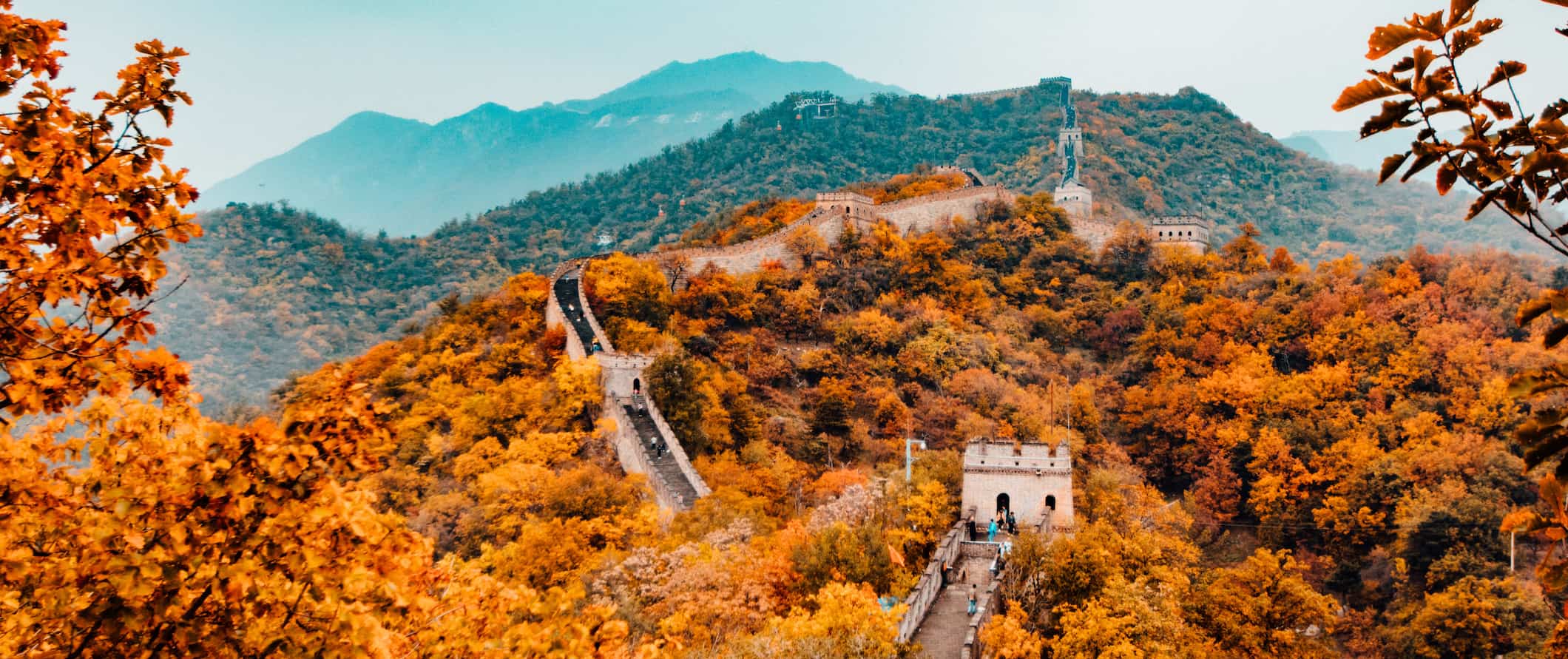
1. Visit Hong Kong
Hong Kong is bustling metropolis that combines high rise buildings with traditional street markets and temples. You have a large expat population, good shopping, fantastic nightlife, and delicious food. It’s one of my favorite cities in the world and I never get tired of visiting!
2. Explore Shanghai
One of China’s largest, busiest, and most visited cities, Shanghai is like visiting the future — fast trains, lights everywhere, efficient organization, and a cosmopolitan vibe. I love Shanghai. To get a sense of historical China, head to the Old City and see the YuYuan Gardens. For some of the best shopping in China, head to Nanjing Road.
3. Wander Beijing
Visit Tian’anmen Square, the Forbidden City, countless shopping malls, the Temple of Heaven, Summer Palace, and of course, the Great Wall. There’s nothing like Beijing in the world, and, though horribly polluted and with awful air quality, it’s still a city you have to visit in order to understand modern China and its dynamism.
4. The Great Wall of China
Stretching over 21,000 kilometers, the Great Wall offers both busy tourist sections as well as secluded ruins (you can even camp beside it in some areas). If you’re on a budget, you can take the public bus to the wall near Beijing. The bus is 12 CNY and admission to the wall is 40 CNY (45 CNY in the summer).
5. See Xi’An
Xi’an is one of the ancient capitals of China and home to the famed Terracotta Army (which is over 2,000 years old), city wall, and architecture of the Muslim quarters. Those three things are pretty much why everyone comes here but there’s also an incredible hike on Mount Hua if you’re looking for adventure.
Other Things to See and Do in China
1. tian’anmen square.
You’ve no doubt seen it in films and on TV, but it is hard to get an idea of the sheer size of this square until you’re standing square in the middle of it. There’s plenty to see here including the Tiananmen Tower, the Great Hall of the People, the People’s Heroes Monument, the National Museum and Mao Zedong’s mausoleum. While you are allowed to take photos in the square itself, you cannot use your camera in the mausoleum.
2. Gorge on food
China is a food lover’s paradise. Eating here will certainly put your take-out back home into perspective. In such a huge country, it’s no surprise that different areas have different culinary delights. It’s entirely possible to enjoy the four styles of Chinese cooking (Cantonese, Beijing, Shanghai, and Sichuan) while on your trip. For spicy food, head to Sichuan or Hunnan in Central China (be sure to try the hot pot while you’re there).
You’ll find more salty items like dried meats and pickled vegetables in the north (where fresh produce is less common) while in cities like Beijing, Hong Kong, and Shanghai you can pretty much find everything!
There are plenty of options for vegetarians in China as well, and even vegans can get by without too much difficulty.
3. Cruise the Li River
For a true sense of natural beauty, cruise down the Li River. The river is 272 miles long and has dozens of places to explore along the way. Some of the best photography spots can be found in Xiaolong, Laozhai Hill, and the karst mountains near Guilin. For tours, prices start at 500 CNY per person, depending on how long (or luxurious) of a cruise you want.
4. Visit the Forbidden City
This famous attraction in Beijing was the imperial palace from the time of the Ming Dynasty to the Qing Dynasty (1420-1912 CE). The “city” covers over 175 acres and is a UNESCO World Heritage Site, welcoming over 16 million visitors each year. Today, the Palace Museum holds artifacts from both dynasties and is a great place to learn about China’s history. The buildings, which cover over 180 acres, have been heavily renovated over the years but it’s still an epic complex worth visiting.
5. Travel (part of) the Silk Road
Dating back over 2,000 years, this unofficial route is a must-see for visitors looking to get off the main tourist trail. There is no “official” road to follow, but you can trace your way along the traditional route as far and wide as you’d like (the Silk Road originally spanned from Chang’an to Romend, Italy). Its total length was over 3,800 kilometers (2,400 miles), half of which was within Chinese territory. Be sure to see the Mogao Caves in Dunhuang, the ancient city of Turpan, and the Rainbow Mountains near Zhangye.
6. Explore Tibet
Also known as “the Roof of the World”, this area is perfect for adventurous travelers that are looking for unique attraction. Explore the snowy mountains, exotic customs, and Buddhism. Tibet has had tumultuous past, so during your visit, it’s wise not to bring up the Dali Lama. The region was annexed by China in the 1950s, forcing the Dalai Lama and his government into exile. Some 400,000 Tibetans were killed directly or indirectly by the occupation, with other estimates placing that number over 1 million. Avoid talking about the history and politics of the region as is it understandably a very sensitive subject for both sides. You’ll need a special permit to visit the region as well.
7. Potala Palace
This Tibetan palace was home to the Dalai Lamas up until 1959, when he was forced to flee or be killed. Established as a holy site in the 7th century, the many halls, temples, and courtyards have been constructed from wood and stone. The current building, which is now a UNESCO World Heritage Site, dates to the 17th-century and has poured copper in its foundation to stabilize it against earthquakes.
8. Take in the Karst mountains
Illustrated on the back of the 20 yuan banknote, these mountains are a stunning sight to see in person. They’re huge! You can take a boat trip down the Li River, and enjoy the breathtaking views of the mountains. You can also rent a bicycle to explore the quieter backroads and take in the picturesque landscape. Prices begin around 20 CNY for a half day. Guilin is a great hopping-off place for this.
9. The Mogao Grottos of Dunhuang
Also known as the Thousand Buddha Caves, these grottos are home to the largest, best-preserved, and richest Buddhist art in the world—the first cave was carved here in 366 AD. There are almost 500 individual temples here and it’s one of the main stops on the Silk Road if you are tracing the footsteps of Marco Polo.
10. Take a free walking tour
All of the major cities in the country offer various types of walking tours, many of which are free and last a few hours. If you want to learn about the history of China’s major cities, this is a great way to start! Whenever I land in a new city, this is how I kick off my trip as it helps me get the lay of the land. Free walking tours are available in Beijing, Shanghai, Hong Kong, Xi’an, and many other cities around the country. Just Google “free walking tour in X” to find the companies that are available during your visit. Just be sure to tip your guide at the end (that’s how they get paid!).
11. Let loose in Macau
Macau is considered the “Las Vegas of Asia” and is a fun destination for anyone looking to splash out. Macau started as a Portuguese colony and remained one for over 300 years so the city has an interesting mix of Chinese and Portuguese cultures. Like Hong Kong, Macau is a “Special Administrative Region” which means it has a lot of autonomy from the mainland government It is also home to the highest bungee jump in the world, boasting a plunge of a whopping 233 meters (764 ft)! I don’t love the city as much as I do Hong Kong but you’ll find a lot of good food and architecture here. If you’re not here to gamble, you only really need one night here!
12. Visit the Pandas in Chengdu
Pandas are an endangered species and rare to see in the wild. If you want to get your fix while in China, head to the Panda Research Base in Chengdu. If you get there early you can beat the crowds and watch the pandas relax, eat, and sleep (that’s all they really do — but it’s still worth seeing!). Admission is 55 CNY per person.
13. Take a class
Calligraphy classes, cooking classes, tea ceremonies — you can find all sorts of amazing, culturally-enriching classes and lessons in all of the major cities in China. Some last an hour, some last multiple days, but no matter what you’re interested in you can find a class to teach you something new! Expect to pay between 300-900 CNY for a calligraphy class while cooking classes start at around 300 CNY per person. You’ll find the most options in Beijing, Shanghai, and Hong Kong. Viator.com is a great resource for finding classes near you. You can also use cookly.me to find cooking classes and prices all around the country as well.
China Travel Costs
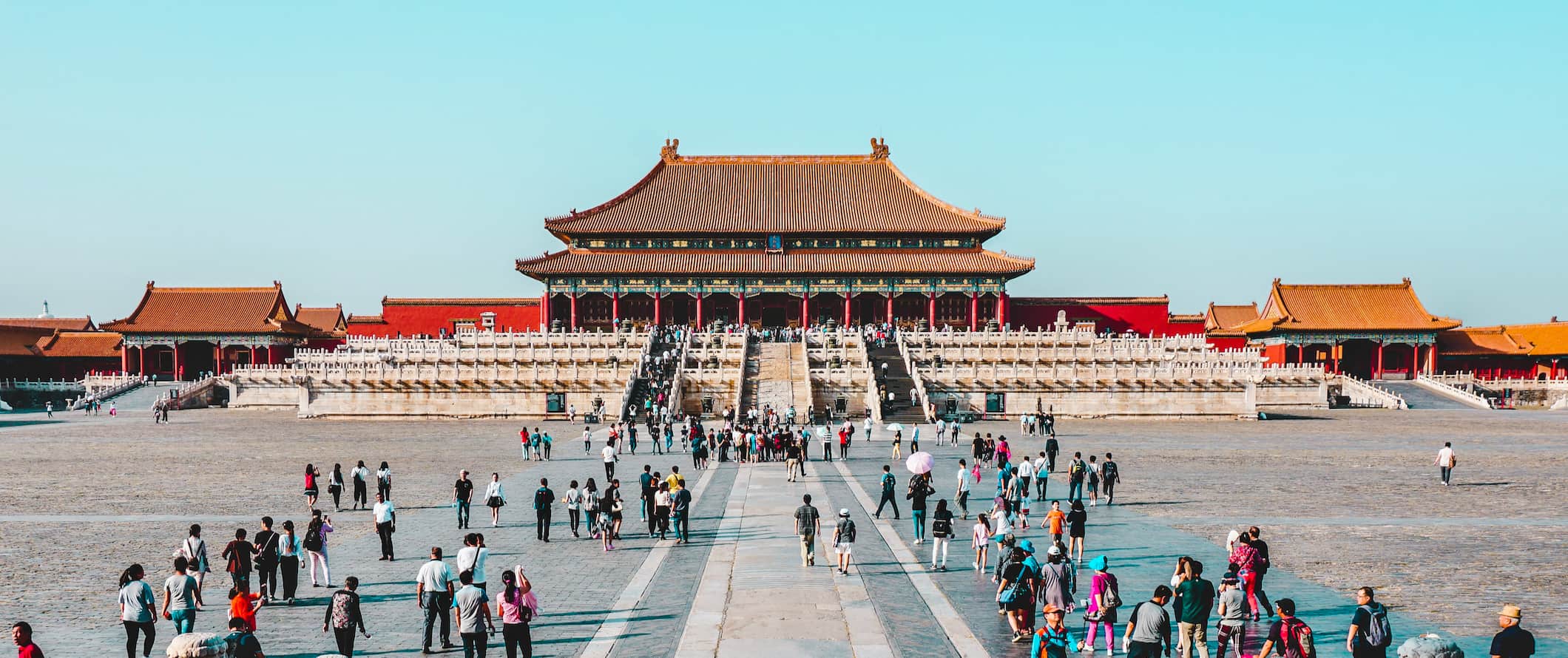
Accommodation – Prices start at around 30 CNY for an 8-10 bed dorm in many of the smaller cities. Expect to pay closer to 85 CNY in Hong Kong and Beijing. For a private room, prices begin around 110 CNY though expect to pay almost double that in the larger cities. Hostels here are generally well equipped and have free Wi-Fi, drinking water, lockers, and even warm blankets in the winter! Hostels in cities will have western-style toilets, though in more remote parts of the country you may find squat toilets more common.
Budget hotels begin around 75 CNY per night for basic accommodations, with higher prices in Hong Kong. Budget hotels will usually include heat or AC, your own bathroom, a kettle, and TV (though you’ll only get Chinese stations). Keep in mind that any hotels offering free breakfast will likely be serving a Chinese breakfast (dumplings, rice congee, vegetables, etc.).
Airbnb is plentiful in China and can be found in all the major cities though it’s much less common in rural areas. Prices range from 175-750 CNY depending on the city and the type of apartment.
There are plenty of campgrounds around the country. Expect to pay around 20 CNY per night for a basic plot. Wild camping is a grey area; it’s both legal and illegal at the same time to allow local authorities the final say. I would avoid wild camping and stick to official campgrounds as to avoid any problems.
Food – Food in China is cheap. I mean, really cheap. A meal from a street vendor usually goes for around 7-14 CNY. For this, you might get noodles, rice, pork buns, or soup. A full meal in a sit-down restaurant will cost between 15-54 CNY plus the fee for a bowl of rice and clean bowls (yes, these cost extra!), which is often around 4 CNY. If you stick to the local food, you’ll find it hard to go broke. You could spend less than 70 CNY for an entire day’s worth of food.
In western China, southwestern China, and the interior, food is much cheaper than in the big cities and you can eat for under 35 CNY per day — about half the costs of the big cities as long as you stick to street food/local restaurants.
For Western food, you can expect to pay much higher prices for food that will be a disappointment compared to home — especially if you’re outside of the more Westernized cities like Hong Kong. A western-style sandwich or fast food meal can run about 40 CNY and a cup of coffee can be similarly-priced to back home — sometimes more!
Vegetarians and even vegans will be able to get by relatively easily in the cities with a little planning as China’s history with Buddhism has made the country quite veg-friendly.
Since food is so cheap, there’s no need to self-cater or cook your own meals. You are better off eating the street food and at the restaurants. Moreover, many hostels don’t have kitchen facilities for you to use even if you did go grocery shopping. Therefore, self-catering is not something I recommend. The food is cheap and plentiful, so enjoy it! If you will be buying your own groceries, expect to spend between 250-400 CNY depending on your diet.
Activities – In general, sights are affordable in China — even popular attractions such as the Great Wall or the Forbidden City are under 68 CNY. While the Great Wall never kept out invaders, it’s beautiful and is only 45 CNY, the Forbidden City is 60 CNY (40 CNY if you visit between November and March). Smaller temples, activities, and sights are much more reasonably priced and cost under 20 CNY.
While attractions and temples are less than 70 CNY, prices for hikes and outdoor activities tend to be more expensive, often costing around 200 CNY. For example, a trip to the Jade Dragon Snow Mountain costs around 200 CNY, a visit to the Jiuzhai Valley is also 200 CNY (as much as 2,000 CNY if you want to go as part of a tour) and a three-day pass to the Wuyi Mountains in Fujian province is 140 CNY while admission to the Yellow Mountains in Anhui province is 190 CNY. You’ll still need to pay for transportation to these places as well.
Backpacking China Suggested Budgets
How much does it cost to visit China? Here are some suggested budgets you can use to help you plan, based on your individual style of traveling. Keep in mind that if you’re staying in cities like Hong Kong, Beijing, or Shanghai you should expect to spend at least 20% more.
On a backpacker’s budget, you should plan to spend between 215-285 ($30-50 USD) per day. This is a suggested budget assuming you’re staying in a hostel dorm, eating fast food occasionally but mainly cooking your own meals, using public transportation, and participating in basic activities like visiting museums.
On a mid-range budget of 645-1,000 CNY ($90-140 USD) per day, you can stay in budget hotels, take buses between destinations, eat fast food, and do more excursions.
For a luxury budget of 1,500 CNY ($210 USD) per day, you can afford to stay in nice hotels, take the high-speed train, do some guided tours, and eat out for every meal.
You can use the chart below to get some idea of how much you need to budget daily, depending on your travel style. Keep in mind these are daily averages — some days you’ll spend more, some days you’ll spend less (you might spend less every day). We just want to give you a general idea of how to make your budget. Prices are in USD.
China Travel Guide: Money-Saving Tips
Given the size of China as well as its general affordability thanks to cheap food and accommodation, there are plenty of ways to save money when you visit here. Here are some of the best ways to save money during your next trip:
- Use sleeper trains – Use sleeper trains (doorless compartments with bunks) to travel overnight since distances between cities can be quite large. Spending a night on the train will save you paying an extra night of accommodation. Lower bunks are less expensive, so purchase a few days in advance to take advantage of these savings. Some stations have ticket offices for foreigners if you need help navigating your options.
- Ask for Xiao Pan – If eating alone, ask for “xiao pan”. These are small portions and work out at 70% of the size and price of a normal dish.
- Hard Seats – Travel on the “hard seats” on trains or buses. These are the cheapest and most basic seats but are not “hard” as the name would lead you to believe (they’re just regular seats).
- Take a walking tour – Free walking tours are available in most Chinese cities. They generally last a couple of hours and are a great way to get the lay of the land and learn some of the local history.
- Avoid Golden Week – Golden Week is the busiest holiday of the year and is a time when the entire country is off. Held at the start of October, prices will rise, transportation is booked out weeks in advance, and the large cities are essentially gridlocked. Avoid visiting during this time. (Or, at the very least, avoid the big cities!)
- Stick to public transportation – You can get pretty much anywhere in all the major cities by bus or subway — and it’s super affordable. Do as the locals do if you want to save money.
- Buy water jugs – Instead of buying bottled water every day (as the tap water is not potable), bring a reusable water bottle and buy the biggest jugs you can find. They are only around 15 CNY and will last weeks. If you’re not staying that long, get your fellow travelers to chip in. You’ll save money and prevent more single-use plastic from ending up in a landfill. Conversely, bring a LifeStraw or SteriPen to purify your own water.
Where To Stay in China
Hostels are common all across China. Here are my recommended places to stay in the country:
- Hong Kong Hostel (Hong Kong)
- Kelly’s Courtyard (Beijing)
How to Get Around China

While most cities in China are great to discover on foot, the pollution can be quite hard on the body for extended periods. Be sure to check the air quality every morning before heading out.
Bus – Buses are generally cheaper than trains when it comes to intercity travel so they are your best bet for short distances (anything under 8-10 hours). For example, the 9-hour ride from Beijing to Anshan is around 220 CNY while the train is between going to be at least 350 CNY (and the train only saves you 90 minutes). The two-hour bus ride from Beijing to Tianjin is around 80 CNY while the trip from Shanghai to Hangzhou is 3 hours and costs around 120 CY.
To find bus routes and prices, use BusBud .
Train – For long-distance travel around the country, trains are an affordable and often unique choice. On a high-speed train, the ticket from Beijing to Shanghai is around 555 CNY for 2nd class, around 935 CNY for 1st class, and around 1,800 CNY for a VIP seat. The journey takes around 4.5 hours.
For the full-day train that takes between 14-22 hours, a soft sleeper ticket is 525 CNY while a superior sleeper is 880 CNY. You can also get a regular hard sleeper seat for just 180 CNY but 22 hours in a seat is asking a lot!
The 5-6 journey ride from Beijing to Xi’an will cost 515 CNY for a second-class seat, 825 CNY for a first-class seat, and 1,630 CNY for a VIP ticket.
For overnight trains, keep in mind that the lower bunk is usually cheaper as it is closer to the noise. Top bunks will be more expensive, though they occasionally have very little space to offer (even though you pay more); it is not uncommon to be unable to sit all the way up. But you do get more privacy, which is worth it in my opinion!
Flying – There are plenty of regional carriers in China when it comes to flights. In fact, there are over 30 domestic airlines in the country! Some of the larger ones are Air China, China Eastern, China Southern, and Southwest Airlines. Just keep in mind that many flights rarely leave on time, so be mindful of your connections when booking!
Round-trip flights from Beijing to Shanghai can cost as little as 1,150 CNY for the two-hour journey.
From Beijing to Hong Kong will cost at least 900 CNY and take just under four hours. Xi’an to Shanghai will cost at least 950 CNY and take just over two hours. Beijing to Taipei will cost around 1,600 CNY and take just over three hours.
Car Rental – China does not recognize the International Driving Permit, making it virtually impossible to rent a car here unless you apply for a Chinese license. I don’t advise renting a car here.
When to Go to China
Since China is such a large country, climate and temperature change drastically from region to region. Sub-tropical Hong Kong is going to have much different weather than the steppes of Inner Mongolia or the mountain ranges of Tibet and Western China.
Summers in China (June-August) is the peak time to visit, though it also the hottest time. Temperatures will soar into the 30s (87-92 F) and can get quite humid. The pollution and air quality can also be ongoing concerns during this time. Expect inflated prices and larger crowds during these months.
September-October is a great time to visit China, as long as you can dodge the hectic Golden Week holiday in early October. The weather will cool to just under 20C (68 F), which is much more pleasant for hiking and exploring.
Traveling to China in the winter is rare, unless you’re heading to Hong Kong where the weather is still pleasant at 20C (68 F). Places like the Great Wall are occasionally closed due to weather, and regions like Tibet can drop to -13 C (9F) overnight. That being said, China has a fun winter festival called the Harbin Ice and Snow Festival where you’ll find huge, record-breaking ice sculptures.
How to Stay Safe in China
China is quite safe for travelers owing to its heavy crack down on crime and the fact that it is a full-on surveillance state. However, there are still a few things you’ll want to keep in mind to stay safe during your visit.
For starters, watch what you eat. Sanitation standards are not exactly the most stringent here, so always use hand sanitizer before you eat and make sure you only go to restaurants that appear clean. Street food — while delicious — can also cause some upset so be prepared. You may need some time to adjust to the local cuisine upon arrival.
Petty theft is rare, though you should still take precautions. Don’t flash your valuables or leave them in unsecured pockets. Most petty thefts occur when travelers don’t pay attention to their things. Don’t be one of those travelers!
As a tourist, you’ll also likely get ripped off here and there. Expect to see inflated prices often, so be sure to ask your hostel/hotel staff for price estimates in advance if you need to go to a market. While commercial supermarkets and shops won’t be an issue, local markets and small stores might try to fleece you. Be firm and barter hard when you have to.
As for scams, they are unfortunately common here. The most common is when someone approaches you and asks to practice their English with you (they are usually a “student.” You’ll head to a café, have some tea and food, and then you’ll be stuck with the bill. As a general rule, if folks ask you to practice English with them just politely decline.
Traffic in China can also be a bit of challenge. Pedestrians don’t have the right of way, so always look both ways before crossing. When in doubt, stick to the locals and follow their lead. They know what to do!
China cracks down on drug use very hard, dishing out hard labor and death penalties to anyone caught with large amounts of drugs. You may also get extorted by the police for a bribe if you’re caught with drugs, so it’s generally a good idea to avoid all drugs while you’re here.
When you’re here, you’ll also want to avoid talking politics — especially when it comes to regions like Tibet and Hong Kong. Information about these regions is highly censored and political discussions are highly monitored online. Play it safe and avoid talking politics.
Lastly, try to avoid using illegal taxis. Marked taxis will use a meter and have set prices, so stick to them (or use the ride-sharing app DiDi). When looking for a cab you’ll likely get approached by illegal taxis. Avoid them if you can unless you’re comfortable negotiating a fare and taking an illegal ride (which I don’t recommend).
Worried about travel scams? Read about these 14 major travel scams to avoid .
The most important piece of advice I can offer is to purchase good travel insurance. Travel insurance will protect you against illness, injury, theft, and cancellations. It’s comprehensive protection in case anything goes wrong. I never go on a trip without it as I’ve had to use it many times in the past. You can use the widget below to find the policy right for you:
China Travel Guide: The Best Booking Resources
These are my favorite companies to use when I travel. They consistently have the best deals, offer world-class customer service and great value, and overall, are better than their competitors. They are the companies I use the most and are always the starting point in my search for travel deals.
- Skyscanner – Skyscanner is my favorite flight search engine. They search small websites and budget airlines that larger search sites tend to miss. They are hands down the number one place to start.
- Hostelworld – This is the best hostel accommodation site out there with the largest inventory, best search interface, and widest availability.
- Booking.com – The best all around booking site that constantly provides the cheapest and lowest rates. They have the widest selection of budget accommodation. In all my tests, they’ve always had the cheapest rates out of all the booking websites.
- Get Your Guide – Get Your Guide is a huge online marketplace for tours and excursions. They have tons of tour options available in cities all around the world, including everything from cooking classes, walking tours, street art lessons, and more!
- SafetyWing – Safety Wing offers convenient and affordable plans tailored to digital nomads and long-term travelers. They have cheap monthly plans, great customer service, and an easy-to-use claims process that makes it perfect for those on the road.
- LifeStraw – My go-to company for reusable water bottles with built-in filters so you can ensure your drinking water is always clean and safe.
- Unbound Merino – They make lightweight, durable, easy-to-clean travel clothing.
- Top Travel Credit Cards – Points are the best way to cut down travel expenses. Here’s my favorite point earning credit cards so you can get free travel!
China Travel Guide: Related Articles
Want more info? Check out all the articles I’ve written on China travel and continue planning your trip:
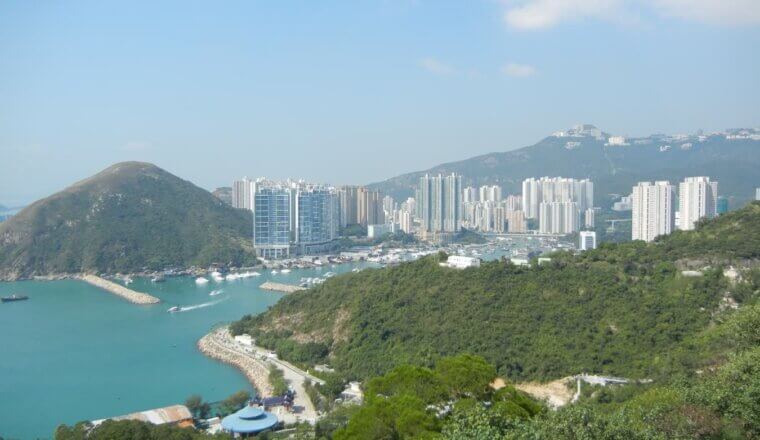
The 23 Best Things to Do in Hong Kong
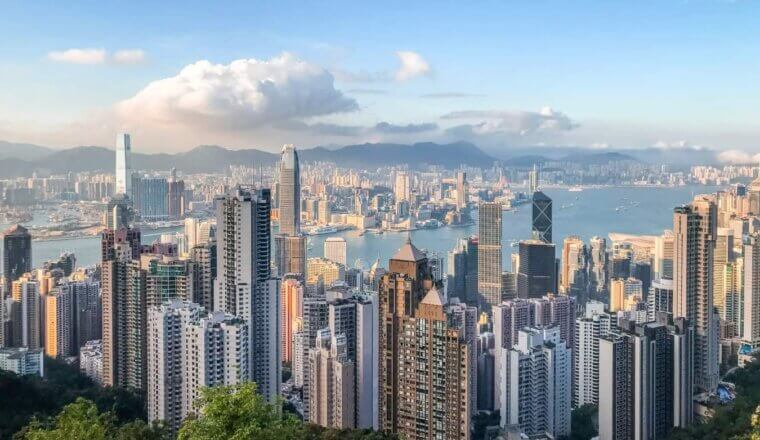
Hong Kong Itinerary: What to Do in 4 (or More) Days
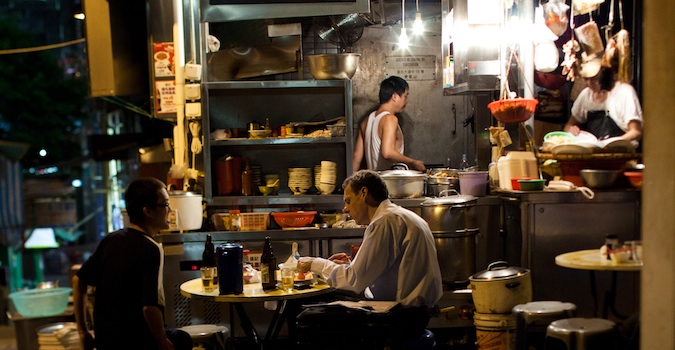
My Favorite Restaurants in Hong Kong
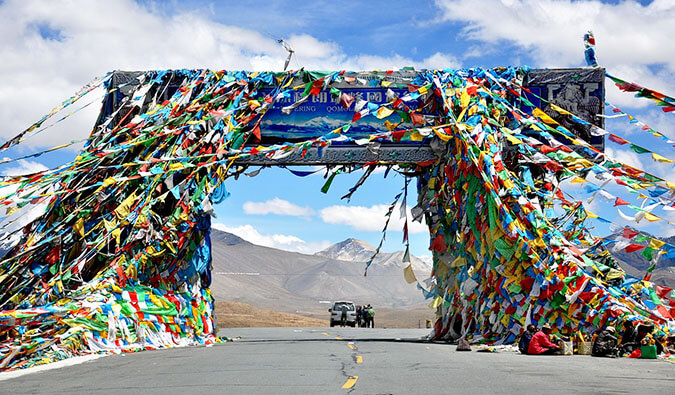
What Hitchhiking Solo as a Female in China Taught Me
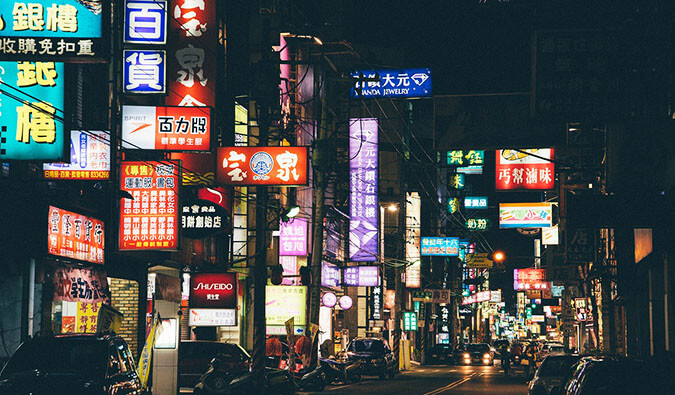
7 Lessons Learned from 3 Months in China
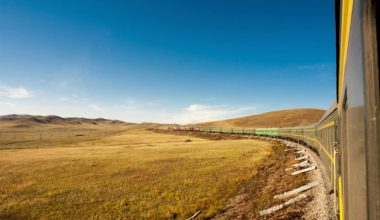
How to Travel the Trans-Siberian Railway
Get my best stuff sent straight to you, pin it on pinterest.
- Transportation
- Booking Resources
- Related Blogs
The first timer's guide to China: where to go and what to do
Recently updated on July 24th, 2023 at 10:53 am
China is a massive country filled with ancient traditions, diverse cultures, extraordinary landscapes and enormous cities. It can be overwhelming when planning your trip to China , so we’re here to help with our China travel guide. From the best things to do, to cultural norms and what to wear, here are all the things you need to know before travelling to China.
Best places to visit in China
View this post on Instagram A post shared by @visitbeijingofficial
As the capital city of China, bustling Beijing is packed with treasures. You can go from the historic Tiananmen Square, the world’s largest public space, to the ancient hutongs, the beautiful alleyways around the traditional courtyard residences. Your China travel guide will show you around it all, and even take you on a scenic rickshaw ride!
Forbidden City
View this post on Instagram A post shared by @visitchina
We’ll take you back in time to the Ming dynasty era when we explore the UNESCO-listed Forbidden City in Beijing. You’ll walk in the path of emperors and learn how the aptly named city was a private complex for the elite imperial families for over 500 years. Your China travel guide will reveal all the ancient traditions and history of this palace complex-turned-museum and share China’s spiritual culture at the Buddhist and Taoist shrines
EXPERIENCE IT FOR YOURSELF: Classic China
Temple of Heaven
View this post on Instagram A post shared by BeautifulChina (@chinadestinations)
This stunning UNESCO-listed temple is another highlight of Beijing and we’ll take you exploring through this incredible religious complex. It’s one of the most important imperial temples in China, and one of the most remarkable examples of traditional Chinese architecture. It was designed to represent the belief that the earth is square and heaven is round.
You’ll walk in the footsteps of royalty here too. The emperors of the Ming and Qing dynasties once came to the Temple of Heaven for annual ceremonies to pray for good harvests and guidance.
Great Wall of China
Hailed as one of the world’s top bucket list experiences, you can’t miss seeing the UNESCO-listed Great Wall of China . This 21,000-kilometre engineering marvel is one of the greatest feats of the Ming Dynasty. With nearly 3,000 years of history held in these stones, it’s a truly special experience.
You’ll get to walk a part of the Great Wall, taking in the lush green valleys and the incredible wall snaking for miles into the distance. As you learn the history of the wall from your local China travel guide, you’ll come to appreciate the enormous man-power it would have taken to build these fortifications so many years ago. You’ll also get to walk the Sacred Way. Here the stone statues guard the Ming Tombs and the remains of the 13 emperors of the Ming Dynasty.
Xi’an
As the starting point of the ancient Silk Road trading route and the former capital of 13 dynasties, Xi’an packs a serious historic punch. We’ll show you around all it’s iconic relics, including the Great Mosque, one of the largest, oldest and best-preserved mosques in the country.
You can’t miss the UNESCO-listed Terracotta Army, with thousands of hand-moulded, life-sized warrior figures. We’ll take you to see this ancient wonder in Emperor Qin Shi Huang’s underground tomb.
You’ll also visit a jade factory and learn how the revered stone is considered more precious than gold in China. Cycle around the ancient City Wall of Xi’an or learn the elegant art of T’ai Chi with a Local Specialist… Whatever you do, Xi’an will be unforgettable.
If you love all things cute and cuddly, you’re in for a treat in Chengdu. It’s the hometown of the giant panda, and you’ll get to visit the incredible Chengdu Research Base of Giant Panda Breeding .
Your China travel guide will show you around this non-profit facility and share how they rescue these endangered pandas. Snap some adorable photos of these gorgeous bears, and leave knowing your visit made a difference to this groundbreaking centre.
But Chengdu isn’t just about pandas. We’ll also take you to the People’s Park to see the stunning Chinese gardens and teahouses, and enjoy a spot of people-watching as the locals enjoy games of mah-jong and relaxing neck massages. We’ll then switch up the pace with a visit to the vibrant Jinli Old Street. Here you’ll find all kinds of exquisite handicrafts including paintings and calligraphy.
You’ll even have the chance to visit the Jinsha Site Museum, where you’ll discover the ancient archaeological treasures found on the Jinsha site. These precious relics date back up to 3,000 years and display the amazing skills of the Ancient Shu people. You’ll see everything from jade and gold objects, to bronze and stone tools and ivory carvings.
Shanghai is a breathtaking experience for any visitor and your China travel guide will show you the best of this dazzling city. Famed as the Paris of the East, we’ll take you down the famous trading hub, the ‘Bund’. Here, you’ll admire the elegant French colonial buildings that have sat along the waterfront since the early 1900s.
We’ll then explore the lively markets of old Shanghai and see how the locals preserve their traditional lifestyle. For something more modern, we’ll head to the top of the 88-storey Jinmao Tower. You’ll be amazed by the spectacular views over the Shanghai skyline, the most populated city in the world.
Head back down to earth and admire the antique façades and trendy boutiques and bars of the Xintiandi district. Or, enjoy a mesmerising performance by the Shanghai Acrobatic Troupe.
Zhujiajiao Water Town
Famed as the Venice of China, this ancient water town has been around for over 1,700 years. Originating as a busy market town, today it’s one of the best-preserved ancient towns in the country. We’ll take you here to marvel at the historical buildings like spice stores, rice shops, banks and a Qing Dynasty post office.
View this post on Instagram A post shared by PRIOR (@prior)
See the charming terrace homes dotted with red lanterns and stroll over the stone bridges that cross the canals. You can even take a paddleboat ride to see the sights from the water or indulge in the town’s famous cuisine like lotus roots, braised pork leg and homemade sweets. After lunch, you might like to relax under the old willow trees and soak up the tranquillity of the town that floats.
Top things to do in China
Cruise the beautiful yangtze river.
A Yangtze river cruise is one of the most memorable experiences you can have in China. We’ll take you to some of the most extraordinary stops on the Yangtze, including the 12-storey cliff-top temple of Shibaozhai, and the mystical shrines and monasteries of Fengdu’s ‘Ghost City’.
You’ll also sail through the Three Gorges Dam, starting with the spectacular Qutang Gorge. Then it’s Wu Gorge, with its green forests and sheer cliffs, and lastly, beautiful Xiling Gorge. Hop on board a small motorboat and cruise to the enchanting Goddess Stream, a tributary of the Yangtze. Here you’ll discover lush limestone cliffs rising out of the glowing emerald water – a truly magical experience.
EXPERIENCE IT FOR YOURSELF: Best of China with Yangtze Cruise
Enjoy the Tang Dynasty Show
View this post on Instagram A post shared by CCTV (@cctv)
The Tang Dynasty show is the ultimate entertainment experience in China. It starts with a mouthwatering Tang dumpling banquet, followed by a performance of music and dance that originated centuries ago. You’ll be swept away in time with traditional music, vibrant choreography and dazzling costumes telling the incredible story of the Tang Dynasty.
Learn the art of making dumplings
You can’t miss tasting the scrumptious dumplings of China and we’ll show you how to make your own at a local restaurant. After watching a dumpling-making demonstration, including fried, steamed and boiled dumplings, you’ll get to enjoy them for lunch. Yum!
RELATED CONTENT: 6 local and immersive food experiences you can do with Trafalgar in China
Enjoy a foot massage at the Foot Reflexology Centre
Feeling a little weary after all your travel adventures? There’s no better remedy than a Chinese massage. We’ll show you where to go for a soothing foot reflexology session, where you can kick back, relax and feel your qi energy come alive.
Spend an evening at the Sichuan Opera
You’re in for a spectacular evening at the Shufeng Yayun Sichuan Opera House in Chengdu. The dazzling Sichuan opera performance features many different shows including a puppet show, fire spitting, a comedy act and the famous face changing show. With live music and traditional Chinese instruments bringing the courtyard setting to life, this will be an evening to remember.
Learn about China’s tea-making ritual s
Tea making is one of the most important traditions in China. We’ll take you to a teahouse where your China travel guide will share the history of tea-making. You’ll also get to learn how to prepare and serve authentic Chinese tea, and sample some of the warming brews yourself.
Watch the Legend of Kung Fu Show
We’ll take you to the Red Theatre in Beijing to see the Legend of Kung Fu, a show of traditional martial arts, dazzling dance and acrobatics. Performed by incredible Kung Fu artists with an average age of just 17, you’ll learn the story of a young boy who dreams of becoming a true master of Kung Fu. You’ll be amazed by the graceful moves, fearless acrobatics, and the beautiful story of a child overcoming his fears.
Learn how to cook Sichuan cuisine in Chengdu
Sichuan cuisine is famed for its rich spices and you’ll learn how to wield these bold flavours when we take you to a cooking class at the Museum of Sichuan Cuisine. Your local chef will show you the ancient kitchenware and cookbooks, then teach you how to crush chilli into powder using a historic Qing Dynasty pestle and mortar.
You’ll dive into your culinary creations with a local chef on hand every step of the way. And of course, you’ll get to enjoy your delicious meal for lunch, and leave feeling totally satisfied in both stomach and soul.
Things to know before travelling to China
China is a land of ancient traditions and customs, and it’s important to travel this incredible country with an open mind. Here are some of our top China travel tips to help you prepare for your adventure.

Apply for your Chinese visa early
Unless you’re from Japan, Singapore or Brunei, you’ll need a visa to stay in China for over 72 hours. The process for getting a tourist visa differs between countries, but you’ll likely need to visit your local Chinese consulate. Prepare for the visa process to take around a month or more.
Once you’re in China, make sure you keep a photocopy of your passport and visa everywhere you go. You’ll need it when checking in to hotels, and it’s best to have identification on you at all times.
Get camera ready
The Chinese love to take photos! China welcomes millions of international travellers every year but many people are still fascinated by new faces, so don’t be surprised if a local asks to take a photo with you. If you’re the one taking the photos, always ask permission before snapping a photo of someone. You should also never take photos of government buildings or officials.
Personal space
With a population of around 1.4 billion, China is a very crowded place. Most locals are used to having less personal space and it’s common to experience jostling or queue jumping. The best thing to do is be patient and remember it’s the cultural differences that make each country unique.

Spitting in China
In China, it isn’t considered rude to burp or spit in public. In fact, burping after eating is a sign you enjoyed the meal, and the locals prefer to spit to clear their noses instead of using tissues. You might be a bit shocked at first, but remember that the Chinese are just as confronted when visitors blow their nose in a handkerchief and put it back in their pocket!
You don’t need to tip in China
Tipping culture doesn’t exist in China, and you should never leave cash tips on the table.
Haggle at the markets – but not in stores
If you’re shopping at the local Chinese markets, you’ll need to learn the art of haggling. Save the bargaining if you’re in a shop with price tags however, as it’s considered rude.

Don’t drink the tap water
Most locals don’t drink the tap water in China and you shouldn’t either as it can make you sick. Always drink bottled water or, ideally, bring your own reusable bottle and fill it up at water filter stations. You can often find these at your hotels.
Bring toilet paper and hand sanitiser
Squat toilets are the norm in China and most bathrooms do not provide toilet paper, except for hotels and nicer restaurants. It’s a good idea to carry a roll of toilet paper or some tissues, and a bottle of hand sanitiser.
What to wear in China
When travelling in China, you can generally wear whatever you normally wear back home – with a few exceptions.

Religious sites
When visiting temples and holy sites, you should wear modest clothing that covers your shoulders and knees. You may also need to remove your shoes before entering a temple or sacred site. If you’re not sure, watch what the locals do or ask your China travel guide.
Dress for the weather
China has four distinct seasons that vary across the regions, from sweltering heat to icy snow. Check the weather forecast before your trip, and pack clothes to keep you comfortable.
Conservative clothing
While the locals in the major cities like Beijing, Shanghai and Xi’an are very fashionable and less conservative, they still generally show less skin, so it’s best to leave the short shorts at home. If you’re travelling to rural areas, it’s more important to wear modest clothing with not much skin showing.

Walking shoes
From wandering the Great Wall to exploring the big cities, you’re sure to do a lot of walking in China. It’s best to bring a comfortable pair of shoes that have already been broken in. The last thing you want is blisters!
Many of the largest cities in China, like Beijing and Shanghai, have problems with smog and air pollution. Do as the locals do and wear a face mask on days with bad air pollution.
Are you dreaming of a trip to China? Do you have any China travel tips to share? Let us know in the comments below!
Want to hear more from us?
Sign up to receive inspiring travel articles, offers & news
" * " indicates required fields
Privacy Overview
Sign up for our emails.
- Meet the Team
- Work with Us
- Czech Republic
- Netherlands
- Switzerland
- Scandinavia
- Philippines
- South Korea
- New Zealand
- South Africa
- Budget Travel
- Work & Travel
- The Broke Backpacker Manifesto
- Travel Resources
- How to Travel on $10/day
Home » Asia » China » Backpacking Guide
Backpacking China Travel Guide (Tips + Secrets for 2024)
Backpacking China is an attack on the senses. From the unbelievable sight of the Great Wall stretching off to infinity to the mouth-numbing sensation of hot pot, to the soothing sounds of an old man playing an erhu in the park. Get ready for sensory overload on any visit to China.
China is a country of vast contrasts. It’s one of the oldest civilizations on the planet and at the same time one of the most rapidly developing countries. Here you’ll find ancient temples right down the street from megamalls and shiny skyscrapers towering above traditional courtyard homes.
While China is a fascinating country to explore, it’s definitely not the easiest place to visit. Having lived in the country and traveled extensively for six years, I can definitely attest to this.
But successfully making it through an extended backpacking trip in China feels like a massive accomplishment. You will have traveled in one of the largest and most intimidating countries in the world and seen some truly unique sights along the way.
I’m here to help you do just that: visit China like a pro! I’ve written this epic travel guide to China in hopes that it will help you, my fellow broke backpacker, ace this country. Read this guide closely and sure to have an excellent time in this country.
Why Go Backpacking in China?
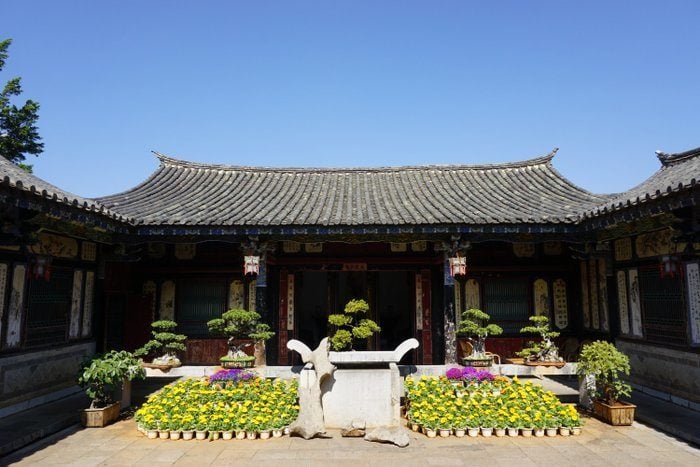
The Broke Backpacker is supported by you . Clicking through our links may earn us a small affiliate commission, and that's what allows us to keep producing free content 🙂 Learn more .
China is an absolutely massive country with just about every environment imaginable. The country is full of mega-cities, epic mountains, barren deserts, lush forests, and sandy beaches. When backpacking China, you’re definitely spoiled for choices.
In a country so huge, it’s best to stick to a specific region if you’re strapped for time. You could spend an entire lifetime exploring China and not see it all. Trust me – I lived there for 6 years and traveled extensively, but still only scratched the surface.
Best Travel Itineraries for Backpacking China
Places to visit in china, top things to do in china, backpacker accommodation in china, china backpacking costs, best time to travel to china, staying safe in china, how to get into china, how to get around china, working in china, what to eat in china, chinese culture, some unique experiences in china, final advice before visiting china.
Below I have highlighted the best travel itineraries for traveling around China. It’s no secret how massive China is, so don’t even try to see most of the country in one trip. Instead, check out my 5 itineraries below for some inspiration!
Backpacking China 7 Day Itinerary #1: Beijing to Chengdu
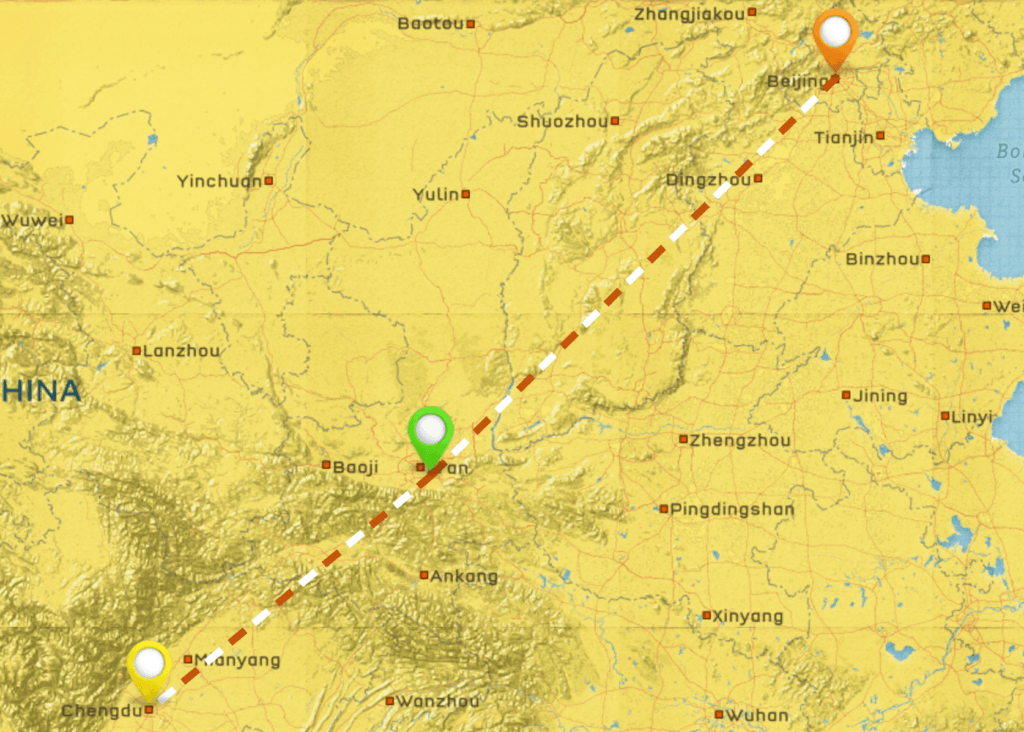
Let’s start by acknowledging that one week in China definitely is not enough time to explore this country. That being said, you can still hit some of the highlights of the country with just seven days.
You’ll want to fly into Beijing and spend a few days taking in the famous sights such as the Great Wall and Forbidden City. Hop on an overnight train to save time and head to the historical city of Xi’an to see the Terracotta Warriors.
From there, make a beeline for Chengdu to visit the giant panda reserve and eat the mouth-numbingly spicy hot pot. You can catch a flight out of the country from Chengdu, most likely to Southeast Asia.
Backpacking China 10 Day Itinerary #2: Beijing to Huanglong
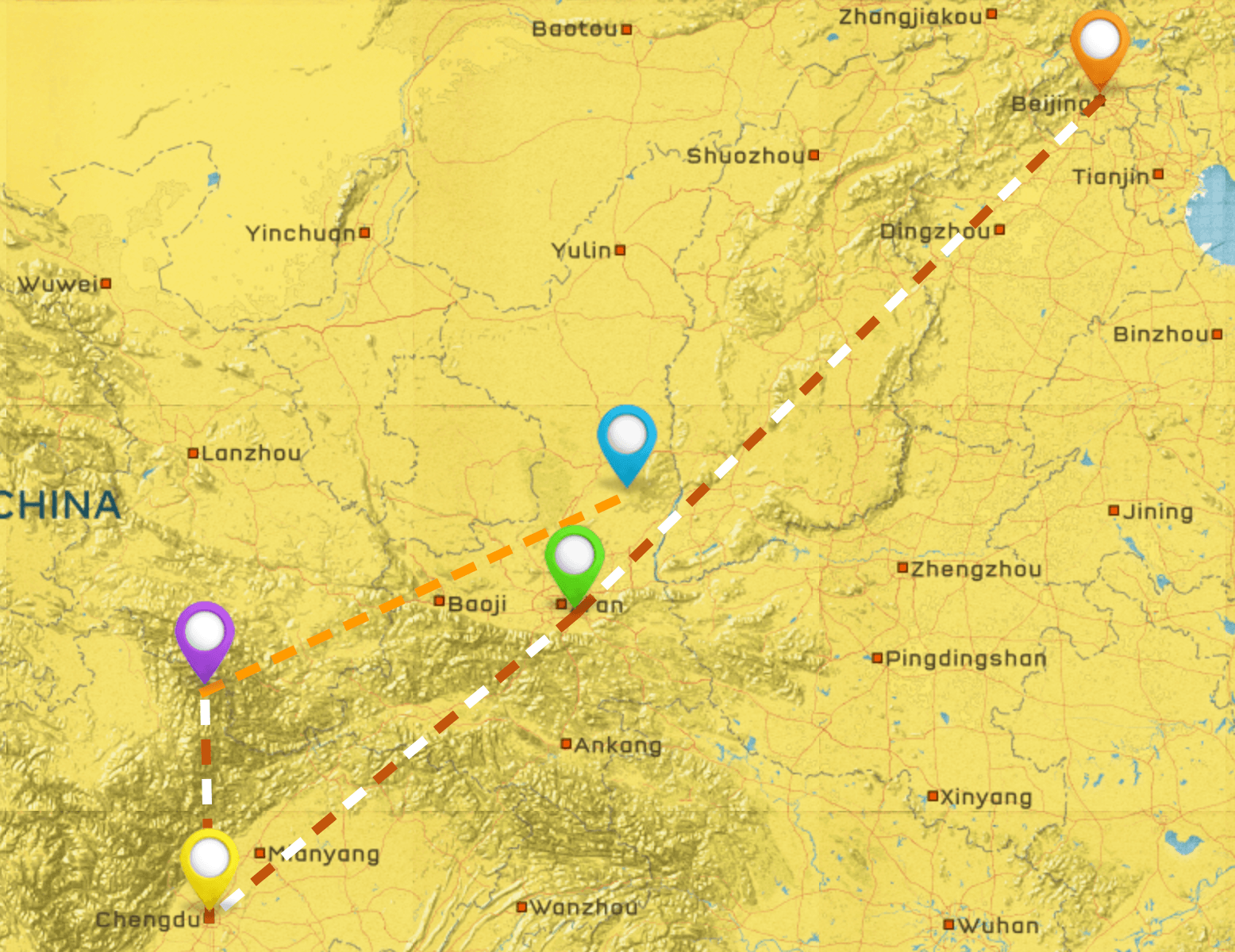
With ten days, you can follow the above itinerary (Beijing, Xi’an, and Chengdu) but add a visit to some of Sichuan’s magnificent national parks. A short flight from Chengdu will get you to the dreamlike Jiuzhaigou , where you can spend a day exploring the stunning landscapes and taking in the Tibetan culture .
Pay a visit to Huanglong (Yellow Dragon) the next day to see the incredible terraces that are said to resemble a dragon coming down the mountain.
Backpacking China 2 Week Itinerary #3: Yunnan and Guangxi
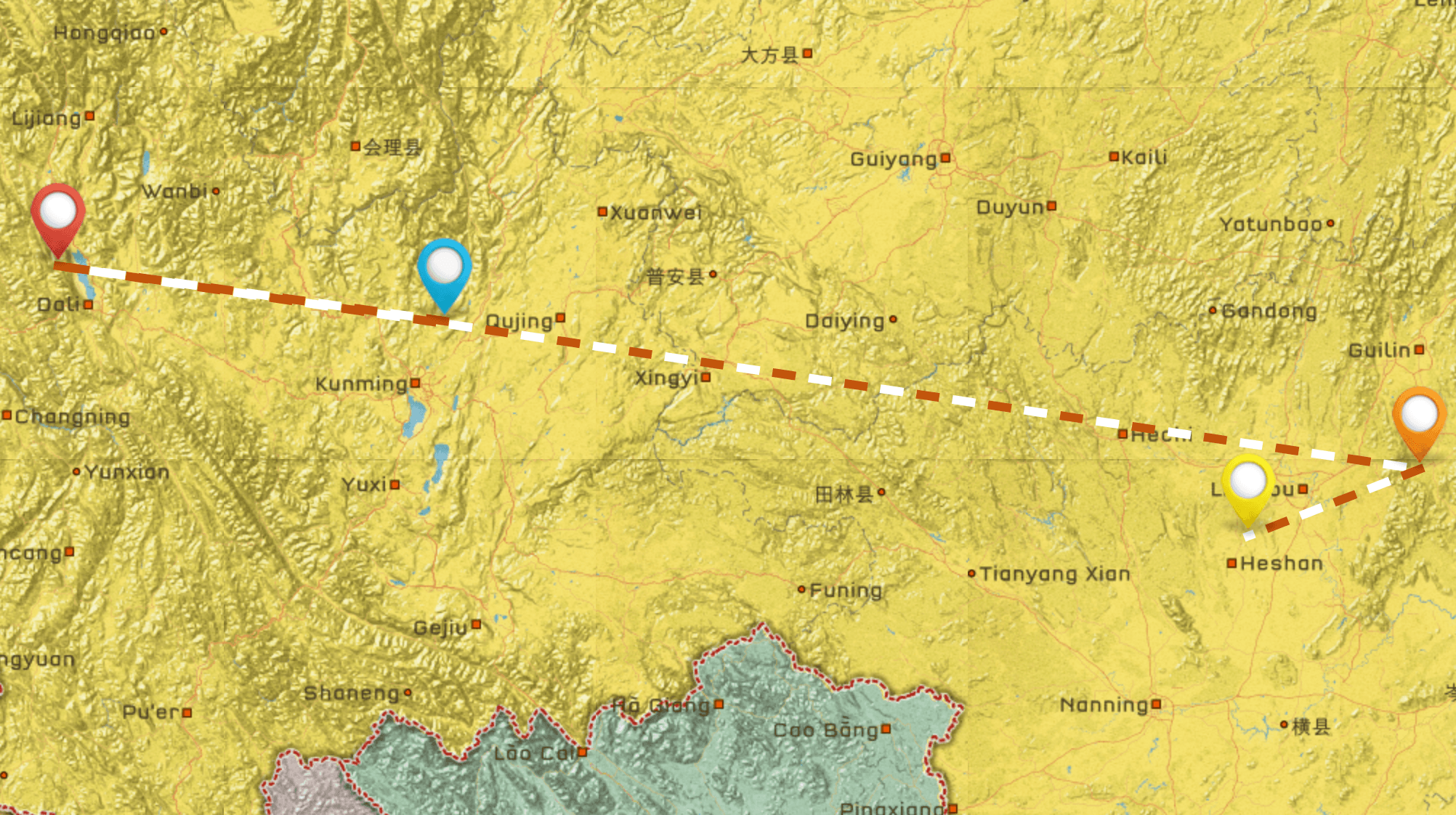
If you have two weeks to spare in China, I highly recommend you spend a majority of your time in the southwest part of the country. Yunnan province alone offers enough to fill two weeks. Start in the provincial capital of Kunming , which is known as the Spring City for its pleasant weather.
The city is great, but you’ll want to venture out quickly to dedicate more time to places like Dali , Lijiang , and Shangri-la . Spend your days cycling around massive lakes or trekking around snow-capped mountains.
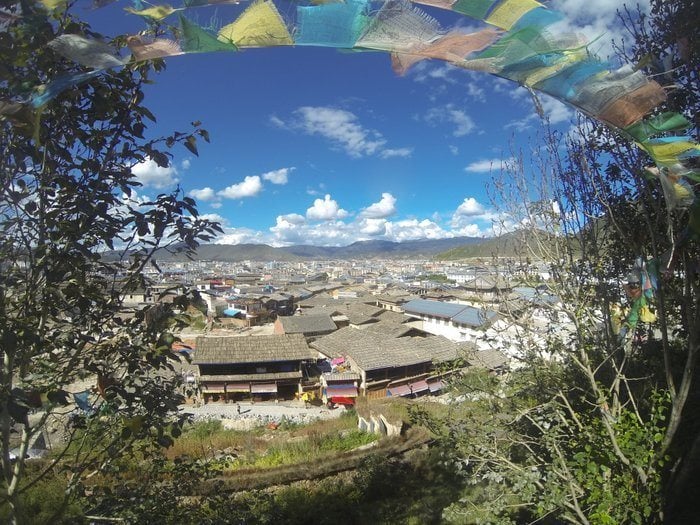
From Yunnan, you can catch a flight or overnight train to Guilin , the capital of Guangxi . A short bus ride will take you to the backpacker haven of Yanghsuo , where you can cruise on a bamboo raft down the Li River past majestic karst mountain peaks. There’s also cycling, hiking, and rock climbing on tap here, in addition to some seriously wild nightlife.
Backpacking China 1 Month Itinerary #4: The Full Loop
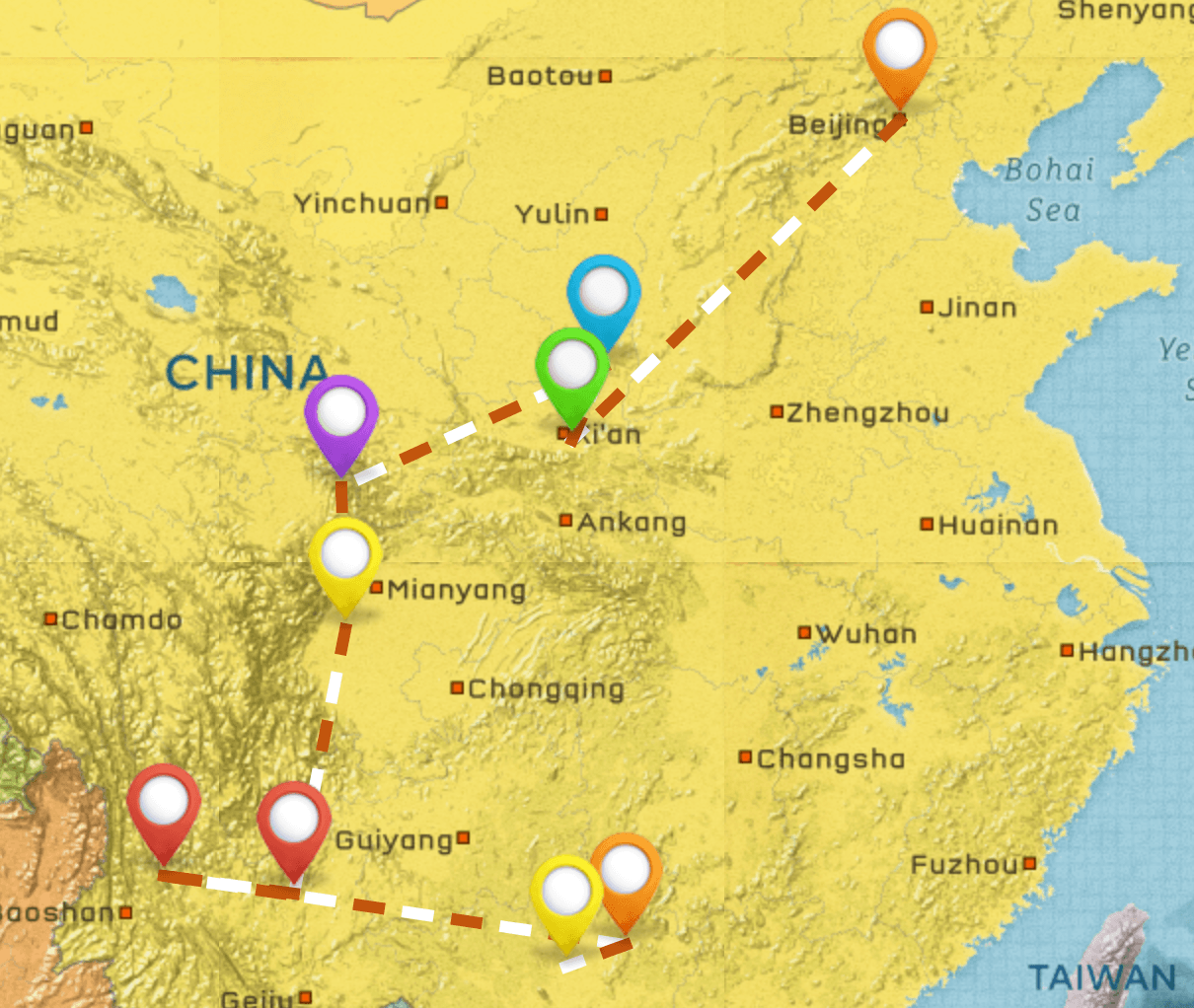
So you have a whole month in China, do you? That’s great news, as you’ll be able to cover some serious ground thanks to the country’s extensive rail network. Based on my experiences traveling all over the country, I’d combine the above-mentioned itineraries and add a bit more.
In addition to Beijing, Xi’an, Sichuan, Yunnan, and Guangxi, you can tack on a backpacking trip to Hong Kong , which is technically part of China but feels worlds apart. From here, you’ve got unlimited options for onward travel.
You could also travel to Macau as well. That’s super close to Hong Kong and a whole other adventure.

Backpacking China 1 Month Itinerary #5: Beijing to Hong Kong
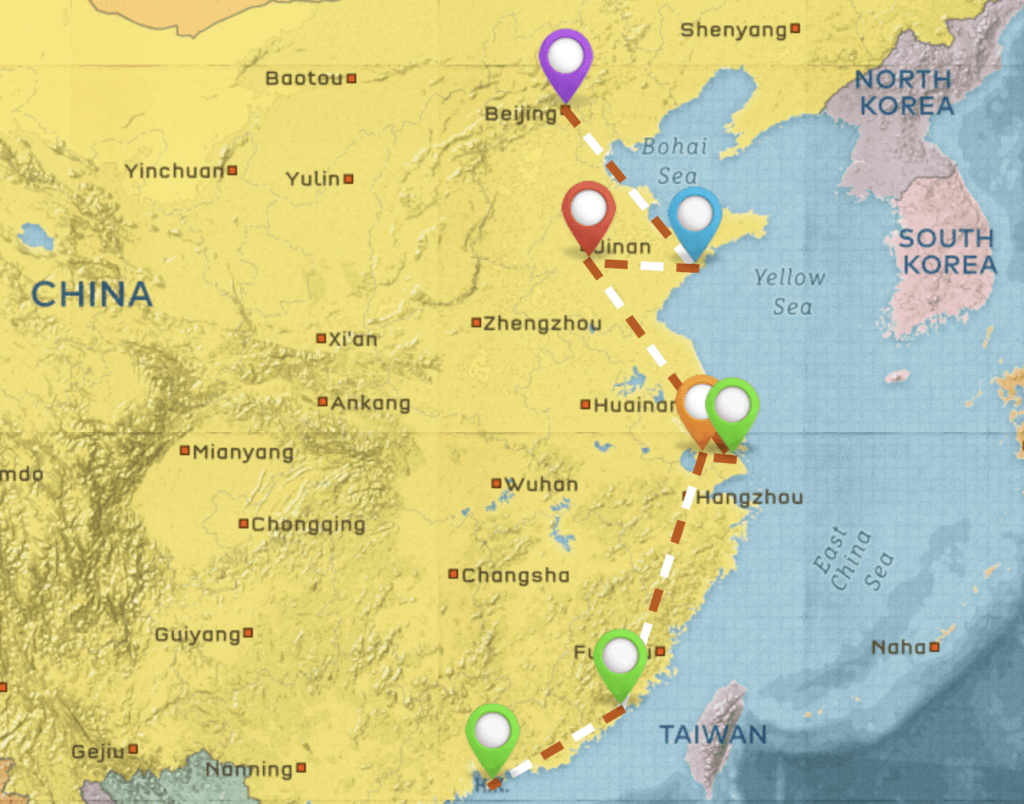
Backpacking Beijing
To say that Beijing is a mega-city is an understatement. This sprawling metropolis has a population of around 25 million and seems to go on forever and there are just so many epic places to visit in Beijing . Here you’ll see the clash between ancient and modern China up close, as ancient landmarks such as the Forbidden City are contrasted with futuristic high-rises.
As with much of China, Beijing seems to have one foot firmly planted in the past and the other in the future, resulting in a bit of confusion as to what exactly the present is.
When backpacking China, you should definitely start your adventure here in the capital. Beijing offers so much that you could easily spend an entire month here and not do it all. Chances are you aren’t blessed with that much time to spend in one city, though.
Never fear, as I’ve put together an epic guide on what to do with 72 hours in Beijing . This itinerary takes you to most of the major landmarks and also has some solid recommendations for dining and nightlife.
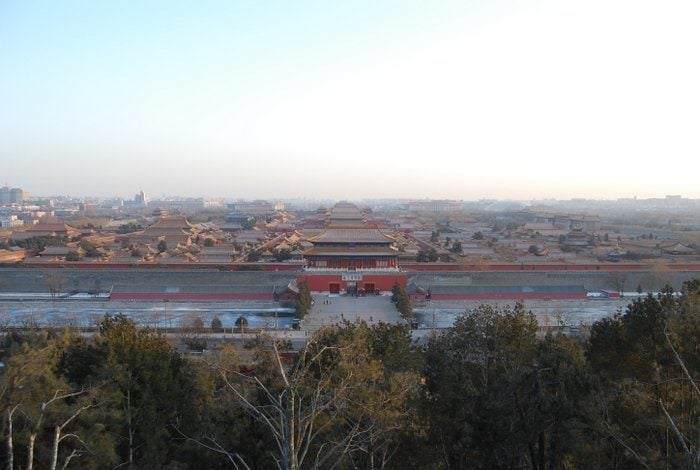
While you can fill your days in Beijing by sticking to the well-trodden tourist path, there are lots of great side adventures that you can add to make your trip a bit more interesting. Taking a bus for 1-2 hours in any direction can lead you out of the urban sprawl and to some pretty incredible places.
You can go rafting and bungee jumping out at Shidu, hike up to a serene Buddhist temple in the mountains, or hike on the wild Great Wall .
A major highlight of any visit to Beijing is indulging in the culinary and nightlife scenes. Beijingers know how to eat, and they sure know how to party. Whether you’re sampling the legendary Beijing roast duck or just eating weird shit on sticks at the Wangfujing night market, you’ll never go hungry in the ‘Jing.
If you’re looking to party, you’ve got several choices as well. With cheap drinks and good times abound in the student haunt of Wudaokou, there are more bars than you can count in the trendy Sanlitun district, or you can dance all night at the clubs around Worker’s Stadium. After a big night out, you can even hit a 24-hour dim sum restaurant to soak up some of that booze.
Need help deciding between Shanghai and Beijing ? Check out our helpful guide.
Backpacking Yunnan
The name of this province in southwest China literally translates to “South of the Clouds,” and you’ll quickly see why if you choose to visit Yunnan. Home to many stunning mountain ranges that literally touch the clouds, it’s a very appropriate name. If you’re into adventure travel, nature, and unique local culture, you’ve come to the right place.
Most trips to Yunnan will start and end in Kunming, a “small” city of 6 million. There’s enough to do here to keep you busy for a few days, such as strolling around the central Green Lake Park, hiking in the Western Hills, or visiting the quirky Bird & Flower Market.
Kunming is home to a sizeable expat population, and it’s one of your best bets if you’re thinking of sticking around a while to teach English in China or study Chinese.
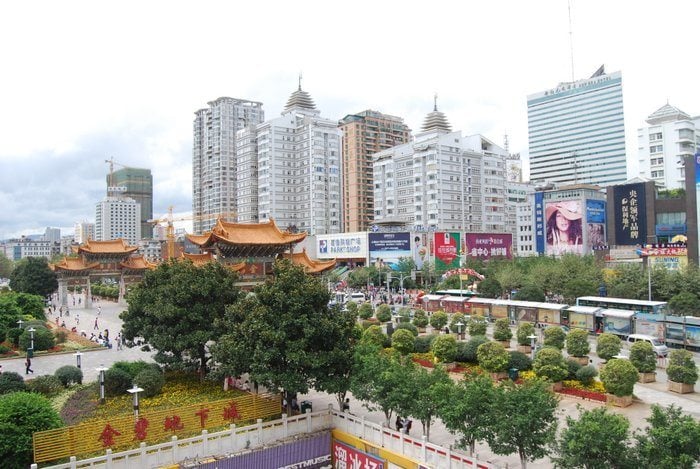
There’s a very established backpacker route through Yunnan that goes from Kunming to Dali , Lijiang , the Tiger Leaping Gorge , and Shangri-la . This is far and away one of the most beautiful areas of China , full of towering mountains and rushing rivers.
Forget those images you may have of giant cities full of traffic and smog. This is the reason backpacking China is such an incredible experience.
While each of these towns can seem overwhelmingly crowded and touristy, rest assured that it’s never that hard to escape. Chinese tourists tend to follow a herd mentality and stick to their tour bus.
Simply jump on a bicycle and start pedaling or skip the cable car and hike up that mountain and you’ll find yourself in near solitude. Check out our comprehensive guide to backpacking Yunnan to plan an epic trip to this corner of China.
Backpacking Sichuan
If you’ve ever eaten in a Chinese restaurant, you’ve probably had something labeled as Szechuan. That’s the old spelling of this province that’s famous worldwide for its cuisine.
The common flavor here is known as ma la in Chinese, meaning “numb and spicy.” Set your taste buds ablaze with classic Sichuanese dishes such as Kung Pao chicken, Mapo tofu, and of course, hot pot.
In the provincial capital of Chengdu, you can pay a visit to the massive giant panda base. This is far from a zoo, as it’s a fully functioning research facility and conservation center. It’s best to visit early in the morning when the cute and cuddly “bear cats” (the literal translation of their Chinese name) are munching away on bamboo.
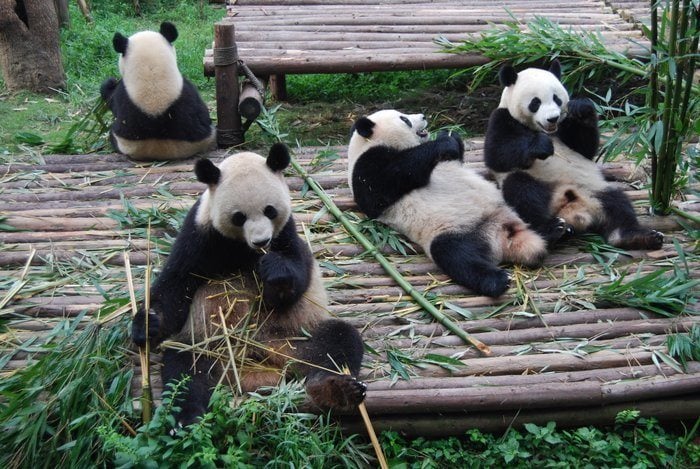
Chengdu is one of the coolest cities in China, so you might as well stick around a few days and explore. The people here are known to be super laid-back and friendly. Head to the People’s Park to soak up the local culture, which includes lots of tea sipping and group dancing. There are plenty of great hostels and bars here, so you’ll meet lots of fellow backpackers during your stay.
Sichuan is home to some of China’s most famous national parks . Jiuzhaigou is one of most picturesque places in the country, with turquoise lakes, epic mountain peaks, and massive waterfalls . Those looking for a serious adventure here will want to sign up for an eco-tourism trek in the nearby Zharu Valley . On this 3-day trip, you’ll reach the summit of a sacred Tibetan mountain at 4,200 meters. It’s one of the most challenging and rewarding adventures I’ve ever had in China and something I’d highly recommend.
Backpacking Guangxi
When it comes to backpacking China, it’s hard to beat the town of Yangshuo. Just a few decades ago, this was a sleepy rural Chinese town with little to no tourism infrastructure. When long-haired backpackers started showing up looking to scale the town’s beautiful karst mountains, a new industry was born.
Yangshuo is now one of the most popular backpacker destinations in the country, with a ton of hostels, restaurants, bars, and travel agents. It has also become a hot spot for domestic tourists, who flock here by the tour bus-load to crowd the West Street. Don’t be discouraged, though, as once again it’s very easy to escape the crowds. Just rent a bicycle or a motorbike, and you’ll find yourself out in some of the most unreal landscapes you’ve ever seen without a tour group in sight.
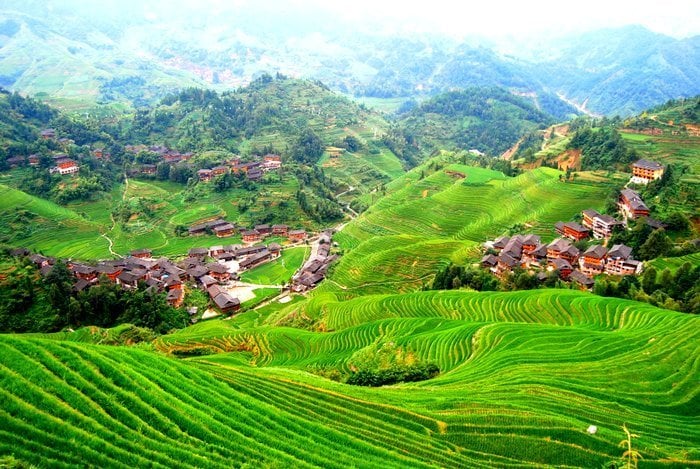
Another spot worth visiting is the area known as the Longji Rice Terraces . The name means “Dragon’s Backbone,” as the terraced rice paddies are said to resemble exactly that. Unfortunately, they decided to put a hideous cable car in here. Chinese tourists tend to be lazy and avoid hiking at all costs, so it’s not surprising. Despite this eyesore, it’s still a great place for a few days of casual hiking.
Backpacking Shaanxi
Shaanxi Province is home to one of the most famous sights in all of China – the Terracotta Warriors. As a matter of fact, this UNESCO World Heritage Site is said to be the most impressive archaeological discovery of the 20th century. This is the mausoleum of Qin Shi Huang, the first emperor of a unified China. As with many things in China, there’s a fascinating story behind it.
Qin Shi Huang survived three assassination attempts and was justifiably fearing for his life. The emperor became obsessed with finding an “elixir of life” in search of immortality. He also had a gigantic mausoleum constructed and had it surrounded by thousands of life-like statues of warriors and chariots to protect him in the afterlife. This was later discovered by workers who were digging a well in 1974, and it quickly drew international attention.
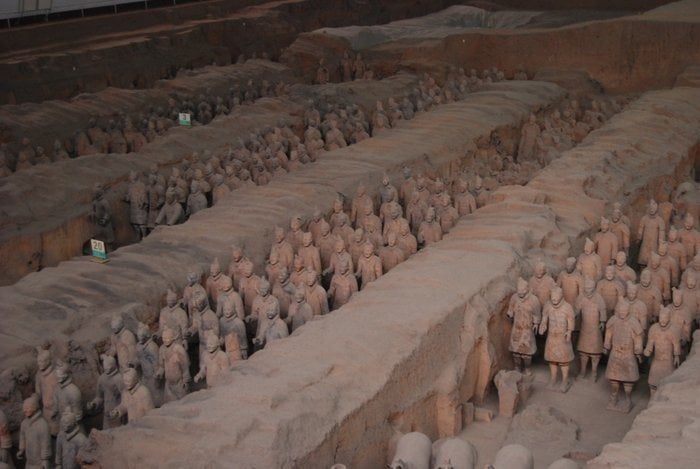
To visit the Terracotta Warriors, you’ll want to base yourself in the provincial capital of Xi’an. Set aside a day to explore the impressive site, and at least 1-2 more to see what Xi’an has to offer. Here you can rent a bicycle and ride around the entire length of the ancient City Wall.
Be sure to visit the Muslim Quarter in the evening, where you can find tons of delicious street food . Xi’an is famous for a few dishes, such as the yang rou pao mo lamb stew and rou jia mo , which are basically Chinese pulled pork sandwiches.
Backpacking China is all about adventure, and that’s precisely what you’ll find at Mt. Huashan. Proclaimed to be “the world’s most dangerous hike,” this one isn’t for the faint of heart.
Here you’ll walk along narrow pathways with precipitous drops off to the side. You’re strapped in for safety, but that doesn’t make it any less terrifying. If you survive, you’ll be able to say you conquered one of the Five Great Mountains in China.
Getting Off the Beaten Path in China
Those looking to skip out on matching hat-wearing, flag-following, selfie-snapping hordes of Chinese tourists will want to head straight for northwest China. Perhaps no place in China is more off the beaten path than the autonomous region of Xinjiang .
The area is home to numerous ethnic groups, including Uygurs, Kazakhs, and Mongols. It’s been the sight of some serious unrest in recent years, meaning most tourists stay far away.
While many in China will try to convince you that Xinjiang is far too dangerous, you just need to exercise some caution and patience and you can have a perfectly fine trip here. In addition to some of the most mesmerizing landscapes in the country, Xinjiang also has some of the most delicious food in all of China. It’s pretty hard to beat some spicy grilled lamb with a nice piece of naan. Despite their bad reputation across China, the Uyghur people are known to be incredibly hospitable and welcoming to visitors (unless you’re Han Chinese, that is).
While we’re talking about lesser-visited parts of China, we can’t leave out Inner Mongolia . If you can’t make it to actual Mongolia, this is a pretty decent backup. You can still sleep in a yurt in the desert and then go horseback riding in the seemingly endless grasslands. All of this can easily be arranged from one of the hostels in the capital of Hohot .
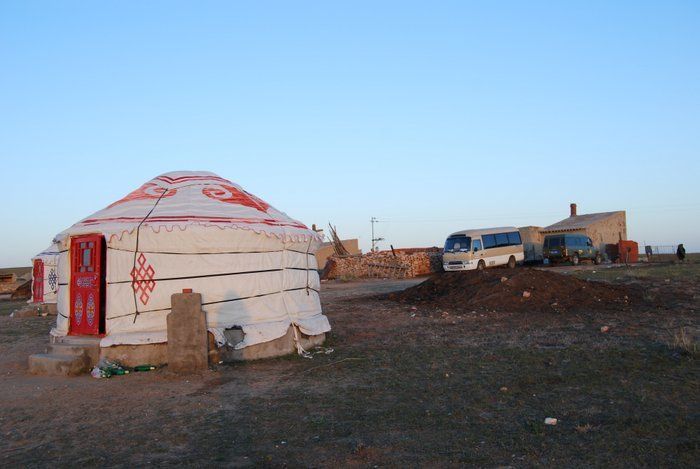
Another great spot for some off the beaten path adventures is Qinghai Province . This is one of the most sparsely populated regions of China, meaning you won’t have to share the stunning landscapes with a bunch of tourists. Here you can soak up the Tibetan culture without the added hassle of traveling to Tibet. You can also visit the largest lake in all of China.
It should be noted that by just being in China, you’re already sort of off the beaten path. Sure, the country gets a whole bunch of international visitors every year, but you’re still very much a novelty here.
Even in the big cities of Beijing and Shanghai , don’t be surprised to hear people shout “ Laowai ! (Foreigner!)” and point at you. They might even try to take a picture with you. Such is life when you’re traveling in China. Even though the country has been open for several decades, foreigners are still surprising to most locals.

We’ve tested countless backpacks over the years, but there’s one that has always been the best and remains the best buy for adventurers: the broke backpacker-approved Osprey Aether and Ariel series.
Want more deetz on why these packs are so damn perfect? Then read our comprehensive review for the inside scoop!
China is a country that’s so rich in experiences that it’s really tough to whittle them down to a Top 10 list. The country is full of historic sites, amazing nature, bustling cities, and some of the most delicious food in the world.
I personally love Top 10 lists, though, so I’m going to do my best! Here’s my top 10 things to to while backpacking in China!
1. Hike on the Great Wall
Chairman Mao once said that you aren’t a real man until you climb the Great Wall. While his famous remark may need to be adjusted for the modern PC era, you get the gist.
You simply cannot go to China without hiking on the Great Wall, one of the New Seven Wonders of the World. There are plenty of options for visiting the wall from Beijing, but they are definitely not all great.
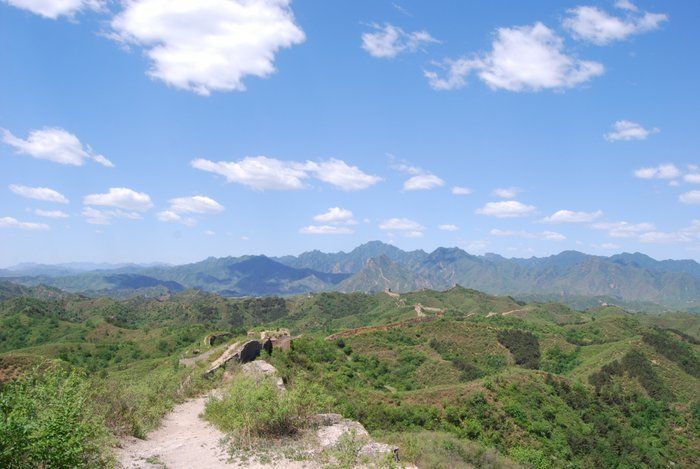
Whatever you do, stay far, far away from the Badaling section. That is unless you want to see what a Disneyland version of the Great Wall looks like. This restored part of the wall comes complete with a cable car and a neverending stream of tourists.
You’re better off visiting more remote sections such as Jinshanling or Jiankou. Better yet, why not bring your tent and camp on the Great Wall ? In my six years of living and traveling in China, nothing even comes close to that.
Perhaps it had something to do with the bag of ‘shrooms and bottle of wine we brought, but it’ll be an unforgettable experience even without psychedelics and booze.

2. Visit Jiuzhaigou National Park
It’s already been mentioned a few times in this guide, but that’s just how good Jiuzhaigou is. After years of living in the chaotic, polluted capital of Beijing, I couldn’t believe my eyes when I visited Jiuzhaigou. This massive national park in Sichuan is without a doubt the most beautiful place I’ve been in China.
Of course, it’s also one of the most popular. While the hordes of pushy tourists can diminish the experience a bit, all you have to do is venture off on one of the trails to escape them.
3. Harbin Ice and Snow Festival
If you’re planning on backpacking China in the winter months, be sure to schedule a trip to the northeastern city of Harbin . China’s Ice City is home to the biggest ice and snow festival in the world, and it’s absolutely incredible.
Artists from all over the world flock here to craft massive sculptures out of the ice and snow. In typical Chinese fashion, the ice sculptures are packed with plenty of neon lights to make for quite the trippy experience.
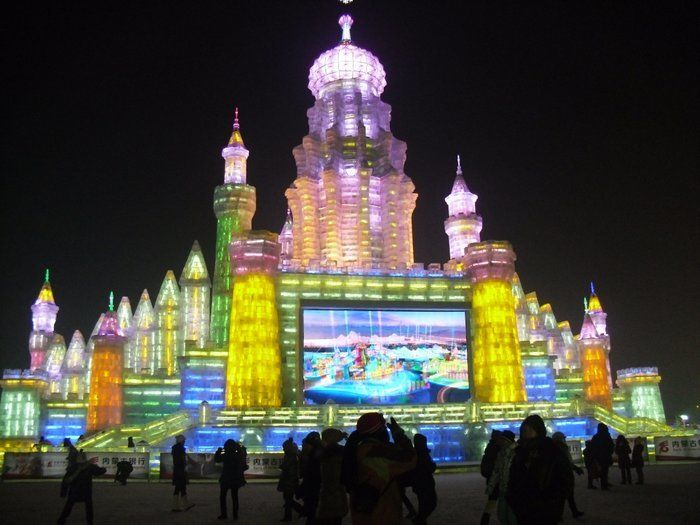
4. Visit the Fujian Tulou
The southeastern province of Fujian is home to the amazing tulou compounds. These massive circular structures are basically an entire village. On the lower floor, you’ll find common rooms and ancestral worshipping halls, while the upper floors are full of individual residences.
During World War II, the US government mistakenly thought these traditional compounds were missile silos. Fewer and fewer people are living in them today, as the rush to modernize has led many to move into bland high-rise buildings.
There are several you can visit, though, and a few days exploring them by bicycle is an experience you won’t soon forget.
5. Hike Tiger Leaping Gorge
If you’re backpacking in China, chances are you’ll end up hiking the Tiger Leaping Gorge at some point. This world-class hiking trail weaves high above the Yangtze River in the mountains of Yunnan is a can’t-miss experience. The hike takes 2-3 days depending on your speed, and it passes by some of the most stunning scenery China has to offer.
There are plenty of guest houses along the way, including the aptly named Halfway House, which has what just might be the most scenic toilet you’ve ever used. You’ll just have to go there and see for yourself.
If you smell something funky along the trail, that’s not your Grateful Dead t-shirt that you forgot to wash. It’s the wild weed growing high up here in the mountains of Yunnan. If you care for a toke, you can pick up a bag from the nice grannies along the trail. They even have bananas and Snickers for when you inevitably get the munchies.
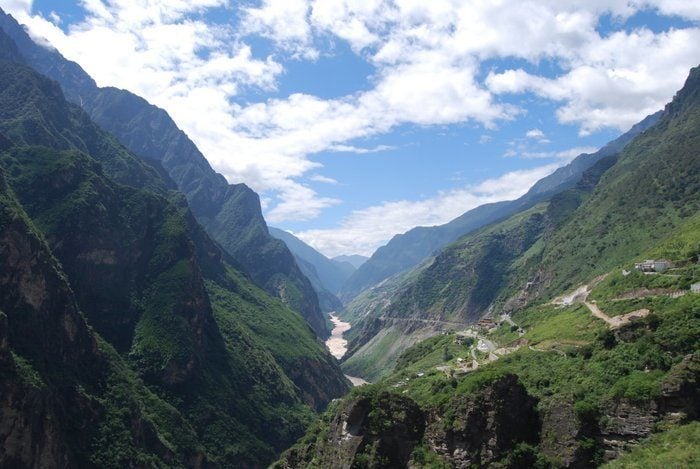
6. Take a High-Speed Train
Few countries can compete with China when it comes to train travel. The country is building high-speed rail lines at a rapid pace, adding more and more connections with each passing month. Take the lightning-fast train from Beijing to Shanghai, and it’ll make the US look like a 3rd world country.
These bad boys reach speeds of up to 350 km/h and will get you from one city to the next in just 4.5 hours. If you’re backpacking China, there’s really no need to buy flights. Forget making the trek out to airports on the outskirts of the cities, and stick to the impressive rail network.
7. Check Out Ancient Buddhist Grottoes
China is home to three different Buddhist grottoes – Longmen , Yungang , and Mogao . Visit one of these sites to see the impressive Buddhist carvings in the caves. These are considered to be some of the finest examples of Chinese Buddhist art, and they really are an incredible sight to behold.
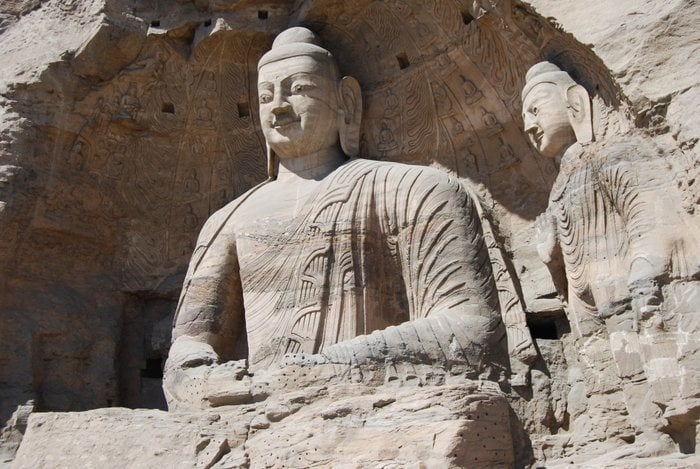
By visiting the Yungang Grottoes in Datong , you can also check out the awe-inspiring Hanging Monastery to make for an awesome short trip. A trip to the Longmen Grottoes in Luoyang is easily combined with a visit to X’ian, so you can cross two items off the list.
8. See the Pandas in Chengdu
The giant panda is known as China’s national treasure, and there’s no better place to get up close to these adorable bears than in Chengdu. The city is home to a massive giant panda research base, where you’ll see dozens of them snacking on bamboo and wrestling with each other. Just don’t expect any of them to start doing kung fu.
It’s super easy to arrange a tour here from your hostel and a visit only takes half a day. There’s all kinds of panda swag available in Chengdu as well if you’re looking for that perfect souvenir.
9. See the Terracotta Warriors
Yes, this is one of the most touristy places in China. Yes, it can kind of be a pain in the ass getting there. None of that matters. You can’t go backpacking in China and skip out on this amazing archaeological site.
Just imagine how much effort went into the construction of this massive tomb full of life-sized warriors and chariots, all of which was done to appease the first emperor of China as he neared the end of his life.
10. Outdoor Adventures in Yangshuo
Backpacking is all about adventure , and that’s exactly what you’ll find in this scenic town in Guangxi. Whether you’re into rock climbing, hiking, cycling, or simply jumping on a motorbike and exploring, Yangshuo has got you covered.
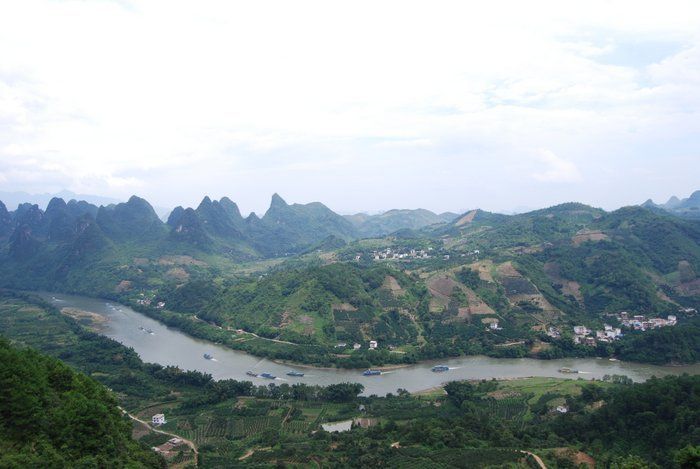
Sure the center of town is packed full of package tour groups, but this is still a backpacker’s paradise in China. However you spend your day, be sure to visit the legendary Monkey Jane’s at night for a rousing game of beer pong. Tell her the Grateful Gypsies sent you.

Wanna know how to pack like a pro? Well for a start you need the right gear….
These are packing cubes for the globetrotters and compression sacks for the real adventurers – these babies are a traveller’s best kept secret. They organise yo’ packing and minimise volume too so you can pack MORE.
Or, y’know… you can stick to just chucking it all in your backpack…
You may be surprised to hear it, but there are a lot of kickass hostels in China. While it may not be as popular as places like Thailand or Indonesia, China has enough domestic backpackers to support a thriving hostel scene. Even in random cities that draw very few foreign travelers, it’s possible to find a bed in a dorm in a cool hostel.
You’ve got tons of choices for hostels in cities like Shanghai and Beijing. Many of them can help arrange tours and have special events such as dumpling parties or movie nights.
Prices for hostels in China vary depending on where you are. It’s possible to get a bed in a dorm for anywhere from $10-20 a night, while private rooms tend to go from $30-50.
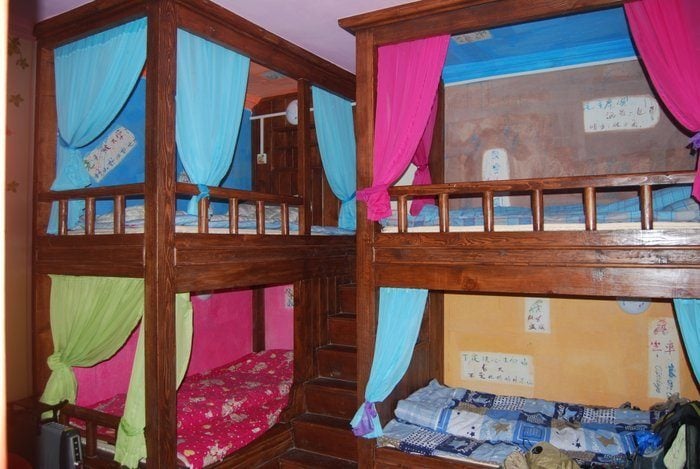
If you’re really looking to save on accommodation, Couchsurfing is also quite big in China. It’s possible to find both local and foreign hosts, especially in the big cities where you have lots of foreigners working and studying. We hosted upwards of 100 guests between our apartments in Beijing and Kunming and know of a few Chinese friends who also open their doors to Couchsurfers.
The Best Places to Stay in China
Your budget for backpacking in China will depend on a lot of things, namely how many places you go to and what level of comfort you need. Obviously, your budget will go up if you visit a ton of destinations and have to buy several plane and train tickets. Which type of ticket you choose will impact your budget as well, as soft sleeper train tickets are far more expensive than the dreaded hard seats.
The good news is that even in China’s big cities, it’s possible to get by on a budget of $40-50 a day. Public transport is cheap (around $0.50 to $2 for bus and subway tickets), and you can easily find a bed in a dorm for $10-15.
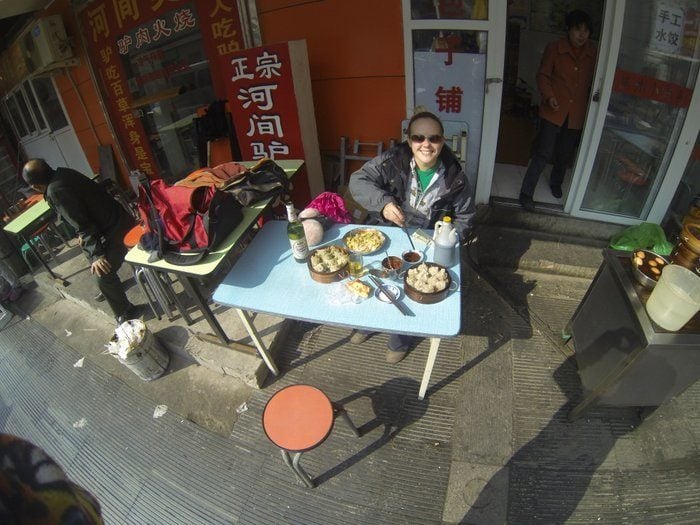
If you don’t mind eating like a local, your money will go a long way in China. Street food is readily available and is both delicious and cheap.
One of my favorites is a jian bing – this Chinese crepe with egg, green onion, chili sauce and a fried wonton only costs about $0.50 and will keep you going for a few hours. You can always find a bowl of noodles, a plate of dumplings, or a common dish like eggs & tomatoes on rice for $2-3.
One of the biggest expenses on your backpacking trip to China trip will definitely be entrance tickets. Entrance to the Forbidden City costs around $10, the Terracotta Warriors will set you back about $24, and a one-day pass to Jiuzhaigou plus the bus ticket runs almost $50. Be sure to do a bit of research into ticket prices so you can decide which places you can and can’t visit.
Thankfully, there are several free or cheap things to do in China as well. One of my favorite activities is finding a local park, such as Bei Hai in Beijing or Green Lake in Kunming. These are the best places to soak up the local culture and you can easily spend a few hours of your day without burning a hole in your wallet.
A Daily Budget in China
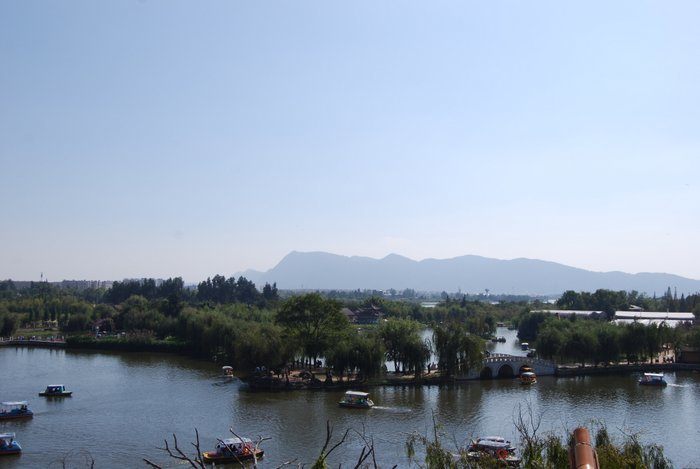
Money in China
China’s currency is the Renminbi (RMB). The current exchange rate is $1 = 6.3 RMB (April 2018). When talking prices with people, they’ll rarely say renminbi . The preferred terms are yuan or the slang kuai .
It’s not hard to find ATMs in China, but you may be charged a fee by both the local bank and your bank. If you’re American, you can sign up for a Charles Schwab checking account and have ATM fees reimbursed at the end of the month.
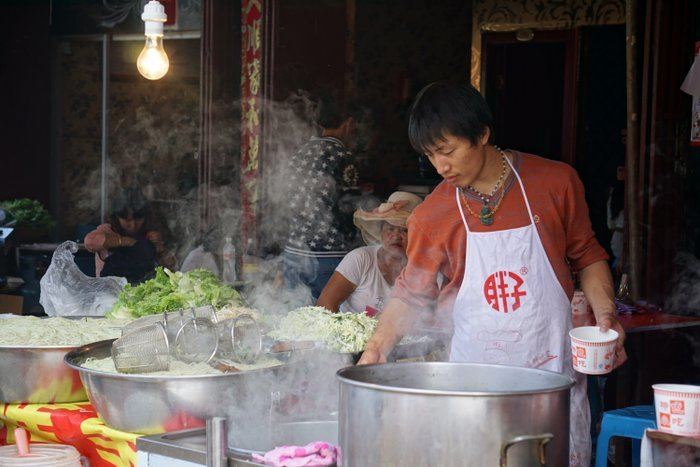
While cash was king in China for a long time, it’s all about the e-pay now. People in China prefer using WeChat to pay for just about everything these days. Sadly, you’ll need a Chinese bank account to be able to join them. Never fear, as it’s also very easy to pay with a credit card for most things in China.
Travel Tips – China on a Budget
- Camp : Camping in China can be a great option in rural areas, or even on the Great Wall! Wild camping in China is definitely in a grey area. It can be legal and it can be illegal. They are purposely vague on this subject in order to give authorities the freedom to choose what to do. As long as you stay under the radar, you should be fine. Check out our expert’s roundup of the best backpacking gear to get equppied for some outdoor adventures.
- Cook your own food: If you are on a tight budget, you can save money by cooking your own food – I recommend bringing a portable backpacking stove.
- Book your transportation early: Both plane and train tickets are much cheaper if you purchase them in advance.
- Couchsurf: Especially in the big cities in China, it’s not too hard to find a host whose couch you can crash on. They might be expats who are working there or locals. We hosted tons of Couchsurfers when we lived in China and always had a good time. Travelling with Couchsurfing is an amazing way to make some real friendships and see this country from the perspective of locals.
- Pack a travel water bottle : and save money every day!
Why You Should Travel to China with a Water Bottle
Plastic washes up on even the most pristine beaches… so do your part and keep the Big Blue beautiful
You aren’t going to save the world overnight, but you might as well be part of the solution and not the problem. When you travel to some of the world’s most remote places, you come to realise the full extent of the plastic problem. And I hope you become more inspired to continue being a responsible traveller .
Plus, now you won’t be buying overpriced bottles of water from the supermarkets either! Travel with a filtered water bottle instead and never waste a cent nor a turtle’s life again.

Drink water from ANYWHERE. The Grayl Geopress is the worlds leading filtered water bottle protecting you from all manner of waterborne nasties.
Single-use plastic bottles are a MASSIVE threat to marine life. Be a part of the solution and travel with a filter water bottle. Save money and the environment!
We’ve tested the Geopress rigorously from the icy heights of Pakistan to the tropical jungles of Bali, and can confirm: it’s the best water bottle you’ll ever buy!
Since China is such a massive country, the best time to visit China really depends on where you’re going. Generally speaking, the spring and autumn months are the most pleasant . In places like Beijing, Xi’an, and Shanghai winter can be painfully cold while summer can be hot and muggy. Weather is less of a concern in places like Kunming (it is called the Spring City after all) and Hong Kong (it’s always warm there).
As far as crowds go, they are definitely bigger in the summer months. Another thing to keep in mind is China’s holiday schedule.
Backpacking China during the Spring Festival (Chinese New Year) should be avoided unless you can plan things out super far in advance. Everything sells out and it’s absolute chaos as 1.7 billion people try to make it home for the country’s most important holiday. You could also always plan one of China’s many festivals into your backpacking trip if desired, with anything from cultural celebrations to dance parties, you’re bound to find something. It’s based on the lunar calendar, so be sure to look it up before planning your trip.
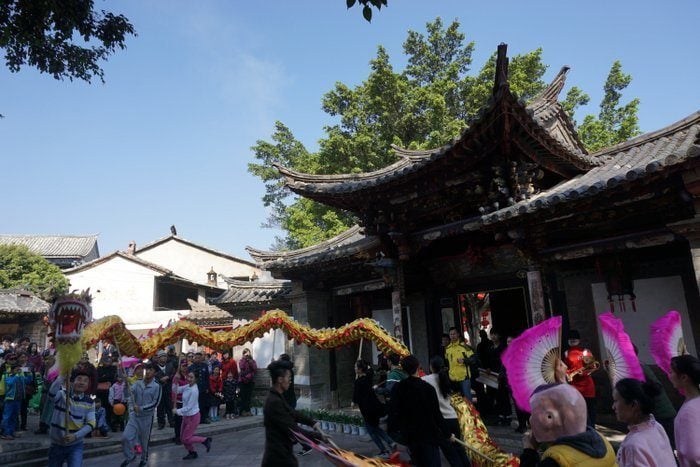
Other busy holidays in China include Labor Day (May 1st) and National Day (October 1st) . Labor Day isn’t so bad as far as crowds go, but it’s still a good idea to book things like train tickets well in advance. National Day is a “Golden Week” where people get a long holiday, so it’s quite crazy at that time as well.
In my humble opinion, the best time to go to China would be a few weeks before National Day or right after. The weather is pretty good across most of the country at this time, and you can just miss the crowds by going before or after the major holiday.
You could even stick around during National Day and soak up the patriotic atmosphere in Beijing. Just don’t expect to be able to get a train ticket out until after the holiday week.
Festivals in China
When it comes to Chinese holidays, nothing comes close to the Spring Festival . Also commonly called Chinese New Year , this festival lasts for 15 days in celebration of the Lunar New Year. It’s a fascinating and chaotic time in China, as everyone tries to get home to spend the holiday with loved ones. If your trip to China coincides with Spring Festival, be aware that transportation will be hard to come by, and that most businesses will be closed for a day or two.
China has many other traditional festivals throughout the year. One of the most interesting for visitors is the Dragon Boat Festival, which takes place sometime in June. There are several places where you can watch the amazing dragon boat races.
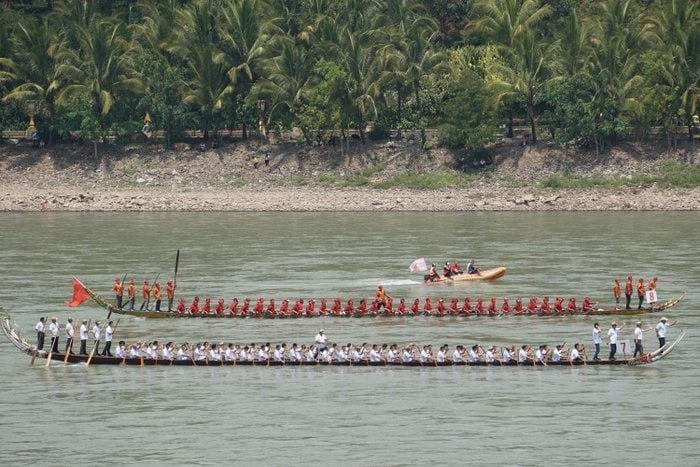
China loves drinking beer, so it should come as no surprise that there are several beer festivals. The biggest and most famous is the Qingdao Beer Festival in August. It’s a raucous affair with tons of food, carnival rides, live music, and of course a shit ton of beer. Those more into quality over quantity can find craft beer festivals in the big cities of Beijing, Shanghai, and Shenzhen.
Music festivals are catching on in a big way in China, with more and more being added every year. There are jazz festivals, rock festivals, and even psytrance festivals such as Spirit Tribe in Yunnan. Some festivals are in a city park while others are out in the countryside and include camping. Having been to several music festivals in China, I can say that it’s usually a good time.
What to Pack for China
What you pack for China travel really depends on where you’re going and what time of year it is. Definitely be sure to bring a good pair of hiking boots and some activewear for your adventures on the Great Wall and Tiger Leaping Gorge.
For regular sightseeing days, it’s nice to have some comfortable walking shoes and a hat/sunglasses. I also like to carry a small backpack to keep things like my water bottle, raincoat/umbrella, phone charger, and camera bag.
If you’re going to be spending time in the big cities and plan on going out, bring some decent clothes as well. Don’t worry if you forget something, as shopping for clothes is super cheap and quite fun in China.
My friend Claire also put together this great female packing list for China post – check it out!

Snoring dorm-mates can ruin your nights rest and seriously damage the hostel experience. This is why I always travel with a pack of decent ear plugs.

Hanging Laundry Bag
Trust us, this is an absolute game changer. Super compact, a hanging mesh laundry bag stops your dirty clothes from stinking, you don’t know how much you need one of these… so just get it, thank us later.

Sea To Summit Micro Towel
Hostel towels are scummy and take forever to dry. Microfibre towels dry quickly, are compact, lightweight, and can be used as a blanket or yoga mat if need be.

Monopoly Deal
Forget about Poker! Monopoly Deal is the single best travel card game that we have ever played. Works with 2-5 players and guarantees happy days.

Grayl Geopress Water Bottle
Always travel with a water bottle! They save you money and reduce your plastic footprint on our planet. The Grayl Geopress acts as a purifier AND temperature regulator. Boom!
Generally speaking, China is a very safe country to travel in. My wife always likes to comment to people that she felt safer stumbling down the streets of Beijing alone and drunk at 3AM than she does going downtown in my hometown of Detroit for a concert. Fair point, Rachel.
Of course, you have to exercise a bit of common sense when backpacking China just like any country.
Despite what my wife says, bad shit definitely can and will happen in the middle of the night, especially in bar districts. One of the biggest safety concerns in China is drunk locals trying to pick a fight. For some reason, Chinese men love to try and show off their drinking prowess (which they most certainly don’t have) in front of foreigners. Sadly, this sometimes leads to confrontations.
If you find yourself in such a situation, it’s best to just walk away. It’s never a one-on-one fight here, as the mob mentality always takes over. Plus, as a foreigner, you will immediately receive the blame and be the one who spends the night in a cold, miserable jail cell.
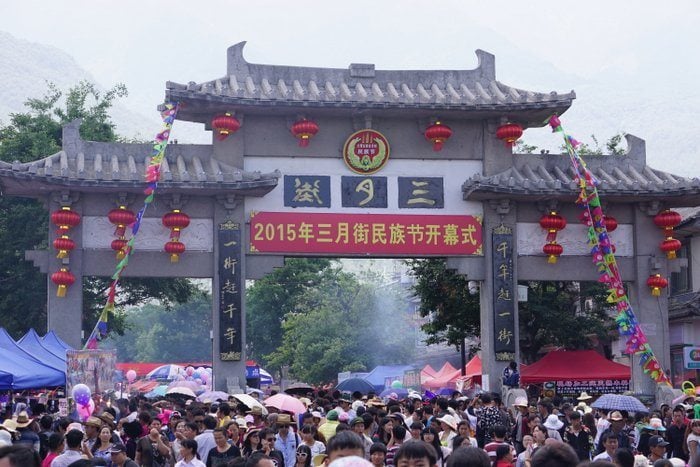
Just like many places around the world, pickpocketing is a huge concern when backpacking China. Be mindful of your things on public transportation and at crowded tourist sights. I once had a guy pick my wallet, grab the cash, and drop it on the ground in the blink of an eye when stepping off a bamboo raft in Yangshuo. These people are pros, so you have to be vigilant at all times.
For many travelers to China, the air pollution is a major concern. While you won’t have to worry about this when you’re out trekking in the mountains, it’s definitely a problem in the big cities.
It’s not a bad idea to invest in a good facemask with a filtration system if you’re going to spend a lot of time in the cities. Take it from me – I moved out of Beijing after 5 years because I couldn’t take the pollution anymore.
Extra Travel Tips for Safety in China
- For more information and safety tips, check out Backpacker Safety 101 for tips and tricks to stay safe whilst backpacking China.
- Pick yourself up a backpacker security belt to keep your cash safe on the road.
- I strongly recommend travelling with a headlamp whilst in China (or anywhere really – every backpacker should have a good headtorch!) – check out my post for a breakdown of the best value backpacking headlamps to take travelling.
Sex, Drugs & Rock ‘N Roll in China
While the Chinese like their booze, they really aren’t that good at making the stuff. Chinese beer is watered down and tasteless, and most of it is only 3-4%. Their wine is absolutely atrocious, so don’t even bother with it.
When it comes to strong stuff, China is all about baijiu . This spirit that is distilled from sorghum tastes somewhat like rocket fuel, and it could probably power your car if you ran out of gas. Some dude said you have to try the stuff 300 times or so to finally acquire a taste for it. I never made it that far and I doubt you will, either.
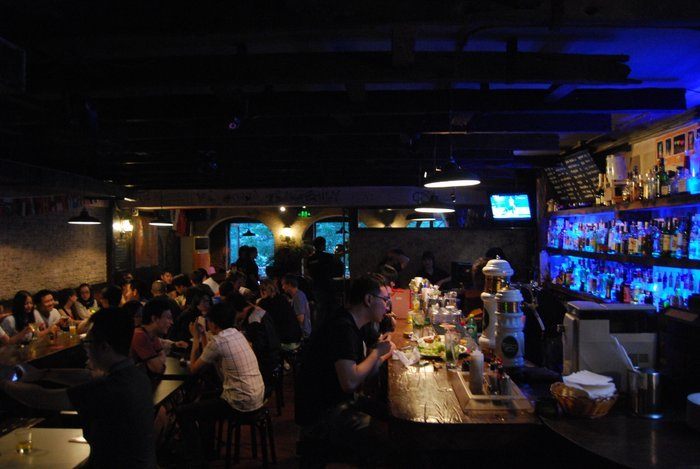
One thing about drinking in China is that things tend to escalate quickly (think the news team battle in Anchorman ). Drinking is somewhat a competitive sport in China, as men love to go glass for glass until one of them inevitably passes out. The concept of grabbing a casual drink at the bar is pretty foreign here, so you’ll have to go to the expat haunts if that’s what you’re looking for.
Drugs in China is definitely a grey area. When we lived in China, people back home were always so surprised to hear that we still puffed tough. “Don’t they have the death penalty there!?” was a common reaction.
While drugs are most definitely illegal in China, this isn’t Indonesia. If you’re caught with a bit of weed, the worst that will probably happen is that you’ll be forced to pay a fine and get deported.
As far as getting the goods goes, it’s not that difficult in the big cities of China. You name it, they got it. I won’t go into details here (my mom might be reading!), but we had some pretty wild nights while backpacking in China. From all night raves in the clubs of Beijing, to day “trips” in the mountains outside of Kunming. Our 3rd eyes were opened once or twice in China.
When walking around the alleyways of Beijing or Shanghai, you’ll most certainly notice several “hairdressers” with red lights in the window. Just like Amsterdam, you ain’t going to these places to get your hair cut. Prostitution is another grey area in China, but chances are nobody is going to bust in and arrest you if you go for a cheeky “haircut.”
Travel Insurance for China
Traveling without insurance would be risky so do consider getting good backpacker insurance sorted before you head off on an adventure.
ALWAYS sort out your backpacker insurance before your trip. There’s plenty to choose from in that department, but a good place to start is Safety Wing .
They offer month-to-month payments, no lock-in contracts, and require absolutely no itineraries: that’s the exact kind of insurance long-term travellers and digital nomads need.

SafetyWing is cheap, easy, and admin-free: just sign up lickety-split so you can get back to it!
Click the button below to learn more about SafetyWing’s setup or read our insider review for the full tasty scoop.
China has tons of international airports, meaning you have plenty of choices to start your trip. Your best bets for flying into China are definitely the bigger cities like Beijing, Shanghai, Guangzhou, or Shenzhen. There are direct flights from these cities to Europe, and North America.
In this section, we’ll take a look at entry requirements for China and how to travel around the country.
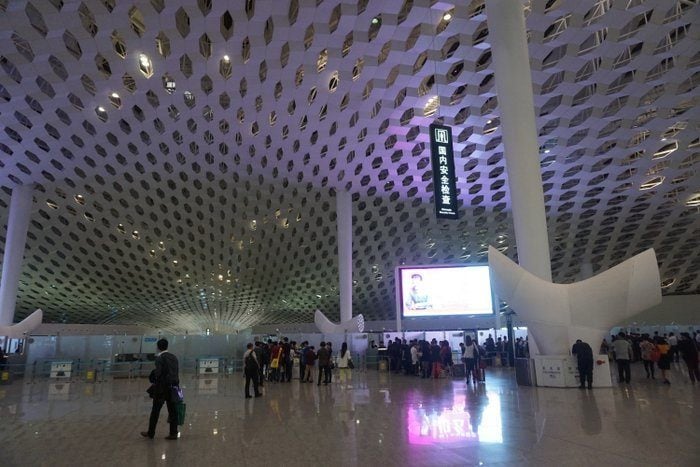
Entry Requirements for China
The visa policy of China is quite complicated. Your best bet is to study the Wikipedia page carefully to see if you need a visa and what kind you should apply for. You’ll want to arrange your visa beforehand at a Chinese consulate or embassy. Be sure to have all the necessary paperwork, as they tend to be very picky and look for any reason to send you out the door to a print or copy shop.
When applying for your Chinese visa, be sure to ask for the maximum amount of time and multiple entries. For example, Americans can now get tourist visas that are valid for ten years with multiple entries of up to 90 days each.
Even if you’ve only got a month-long trip planned, you might as well go ahead and ask for this visa. That way you won’t need to go through the painful process again!
If you’re just passing through China, the good news is that there are several cities you can now visit visa-free if just in transit. Big cities like Beijing and Shanghai now offer 144-hour visa-free visits, while several others give you 72 hours. This isn’t enough time to see much of China, but it does allow you to check out the highlights of a city before catching a connecting flight.

Get 15% OFF when you book through our link — and support the site you love so dearly 😉
Booking.com is quickly becoming our go-to for accommodation. From cheap hostels to stylish homestays and nice hotels, they’ve got it all!
Most major cities in China have an airport and tickets aren’t too expensive if you book in advance.
A word of warning on domestic air travel – China is notorious for long and unexpected flight delays. That’s because the military controls the airspace. I once sat on a plane for 3 hours waiting to take off for no apparent reason. Thankfully, you shouldn’t have to fly much in the country.
Traveling by Public Transport in China
As I’ve previously mentioned, the rail network in China is absolutely epic. There are now high-speed trains linking most of the major cities in the country. For example, taking a train from Beijing to Shanghai will take about the same amount of time as a flight (unless of course the flight is inevitably delayed) and it’s much more enjoyable. For checking train times and booking tickets, I highly recommend Travel China Guide .
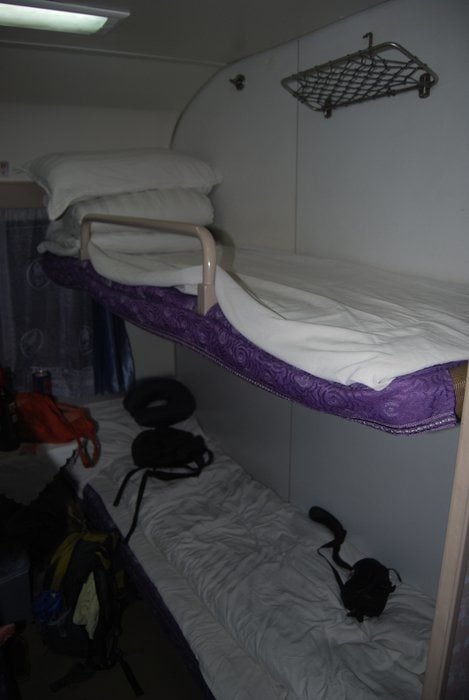
When it comes to buying train tickets, you usually have several choices.
The cheapest option is a hard seat (not just a clever name – these are not at all comfortable). A step up from this is a soft seat. On longer journeys, you can also buy a sleeper ticket. Hard sleeper means six beds to a cabin, while soft sleeper means four. In my experience, hard sleeper is usually the way to go. It’s much cheaper than the soft sleepers and way better than the seats.
Of course, you can always catch a bus to get from point A to point B in China. That’s one of the things I love most about backpacking China – no matter where you’re going, you can get there cheaply via public transportation. We even managed to get to a friend’s village way out in the mountains of Yunnan by a combination of train and bus!
Rather than just rocking up at the bus stop in the hope they will have space to fit you on, you can now book tickets in advance for most of Asia using Bookaway – I love Bookaway and use it myself pretty often when backpacking around Asia.
Hitchhiking in China
If you have patience, it’s definitely a viable option to hitchhike in China . That being said, you’ll definitely want to have a sign in Chinese and hopefully at least a beginner level of Chinese. Don’t expect that truck driver driving outside of Xi’an to speak any English.
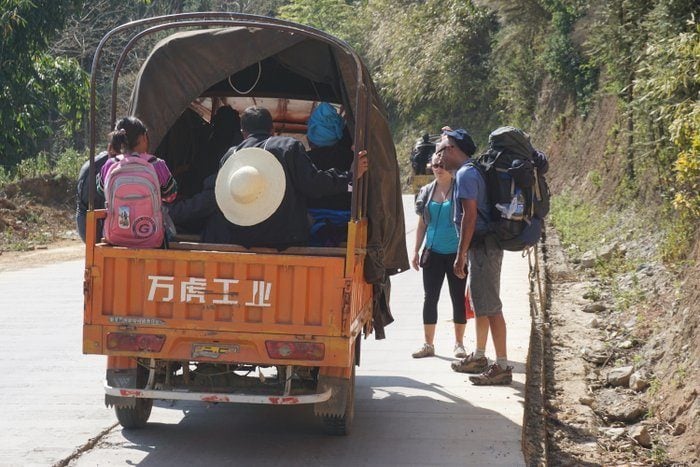
We never tried hitchhiking in China – I’d much rather take the train to guarantee I’m getting to where I’m going on time – but some Couchsurfers who stayed with us managed to get all the way from Beijing to Xinjiang in just ten days by hitchhiking. I thought they were nuts, but they pulled it off!
For more hitchhiking tips, check out our Hitchhiking 101 Post .
Onwards Travel from China
You’ve got nearly unlimited options for backpacking through China and onwards. If travelling by air, the country’s several international airports offer connections to just about anywhere in the world. Thanks to budget airlines like AirAsia, you can even get from Beijing to the Maldives for just $150!
If you’re looking to travel by land or sea, you’ve got plenty of choices as well. Those looking to go backpacking in Southeast Asia next can get from Yunnan or Guangxi to Vietnam by train or bus. You could also catch a 24-hour bus from Kunming all the way to Luang Prabang in Laos.
As for sea crossings, you could board a ferry in Tianjin or Qingdao travelling to South Korea .
One of the great train journeys in the world can bring you from Beijing all the way to Moscow. You can choose between the Trans-Siberian or Trans-Mongolian if you’d like to add a stop in Mongolia. There are tons of options for this trip, which you can plan online or with a travel agent in Beijing.
China has the largest and fastest growing economy on earth. As such, job opportunities are out there for all comers. Loads of multi nationals have operations in China and do need English speaking staff – however, to really exist in China’s economy a degree of fluency in Mandarin will be advantageous.
One notable exception is teaching English. China is crying out for native English speakers and fluency in Mandarin is usually not a requirement. Many ex-pat teachers have a very positive experience in China. Note that some institutions prefer American teachers, others English, and there have sadly been some reported instances of native speakers of colour being given low priority.

A new country, a new contract, a new piece of plastic – booooring. Instead, buy an eSIM!
An eSIM works just like an app: you buy it, you download it, and BOOM! You’re connected the minute you land. It’s that easy.
Is your phone eSIM ready? Read about how e-Sims work or click below to see one of the top eSIM providers on the market and ditch the plastic .
Work Visa’s in China
China Work visa (Z Visa) can be issued to those who have first obtained an employment permit, and intend to work in China. A Chinese government issued working permit or employment license is required. Z visa is usually issued for one entry.
It is normal for would be workers to China to arrange Visa’ through their employer prior to leaving home.
Au Pairing in China
If you have a way with children and don’t fancy teaching, being an Au Pair is a viable option. Global Work and Travel offer an au pair program, where you’ll be given a trip coordinator to support you throughout your stay. They even assist with VISA processing and an online au pair course should you need it.

Teaching English in China
Speaking English is a highly-valued skill all over the world. For locals, it opens up whole new worlds of employment opportunities and travel.
Perhaps one of the best options for backpackers wanting to explore China long-term and experience living in this truly incredible country is to get a Teaching English as a Foreign Language certificate online.

TEFL courses open up a huge range of opportunities and you can find teaching work all over the world. Broke Backpacker readers get a 50% discount on TEFL courses with MyTEFL (simply enter the code PACK50 ).
To find out more about TEFL courses and how you can teach English around the world, read our in-depth report on teaching English abroad .
Au Pair in China
Volunteer in china.
Volunteering overseas is a great way to experience a culture whilst doing some good in the world. There are lots of different volunteer projects in China which you can join ranging from teaching, to animal care, to agriculture to pretty much anything!
China may be an economic powerhouse, but there are still areas where backpackers can donate some time and skills and make a big difference to smaller communities. English teaching is in high demand all over the country, as is help in hospitality and online marketing. You’ll need to apply for an F-visa to volunteer in China, which lets you stay for up to 90 days.
Want to find some awesome volunteering opportunities in China ? Then signup for Worldpackers , a platform that connects local hosts with volunteer travelers. As a Broke Backpacker reader, you’ll also get a special discount of $10. Just use the discount code BROKEBACKPACKER and your membership is discounted from $49 a year to only $39.
Programs run through reputable work exchange programs, like Worldpackers, are generally very well-managed and highly reputable. However, whenever you are volunteering do stay vigilant especially when working with animals or children.
So, so much. It doesn’t matter how long your trip to China is, eat everything! The food is mind-blowing.
- Lanzhou Pulled Beef Noodles – As McDonald’s is to the US, Lanzhou Pulled Beef Noodles are to China. Apparently, there are over 20,000 shops selling it. It really seems like there’s one on every corner. A bowl of these delicious noodles will fill you up and only cost $1-2
- Hot Pot – This is one of the most fun dining experiences you can have. You order up a pot of spiced broth and it boils right there on your table. Then you can choose from a variety of meat, fish, and veggies to toss in the pot. Hot pot restaurants can be found all over China, but the best are in Sichuan and Chongqing.
- Dumplings – On the Chinese New Year’s Eve, families all around China make hundreds of dumplings to eat together. They’re filled with all sorts of things – pork and cabbage, eggs and leeks, lamb and carrot – the list goes on and on. A big plate of dumplings never disappoints!
- Kung Pao Chicken – This is one of the only items on Western Chinese restaurants that’s actually in China. Of course, it’s way better in the country where it’s from! A plate of kung pao chicken with some rice is always a good choice for lunch.
- Beijing Roast Duck – If you’re travelling in the capital, you just can’t miss out on a dinner of roast duck. The best places to eat it are Da Dong or Quan Ju De. This is a culinary experience you’ll never forget! That crispy duck will be one of the best things you eat on your trip for sure.
- Dim Sum – This is technically a Hong Kong dish, but then again Hong Kong is technically China. You can find dim sum restaurants in most Chinese cities, but nothing beats having it in Guangdong or Hong Kong. Come hungry so you can try everything.
- Street Food – There is so much delicious street food in China. From the awesome breakfast crepes known as jian bing , to the sticks of grilled lamb called chuan , it’s not hard to eat well in the street. Pull up a plastic stool and join the locals!
- Bai Jiu – If you’re in China, chances are someone will eventually offer you some bai jiu . I like to call it Chinese rocket fuel, because that’s exactly what it tastes like. This liquor distilled from sorghum is China’s favorite booze and can be found everywhere. It doesn’t taste very good, but when in Rome…
For Chinese cooking classes, check out this site for awesome deals.
It’s not hard to meet the locals in China. With a population of over 1.3 billion, it’s the most populous country on Earth. While everyone from China is considered Chinese, there are actually 56 different ethnic groups.
A vast majority of the people are Han (around 90%), but there are 55 other ethnic minority groups. Great places to experience ethnic minority cultures include Yunnan, Guangxi, Ningxia, Sichuan, and Xinjiang.
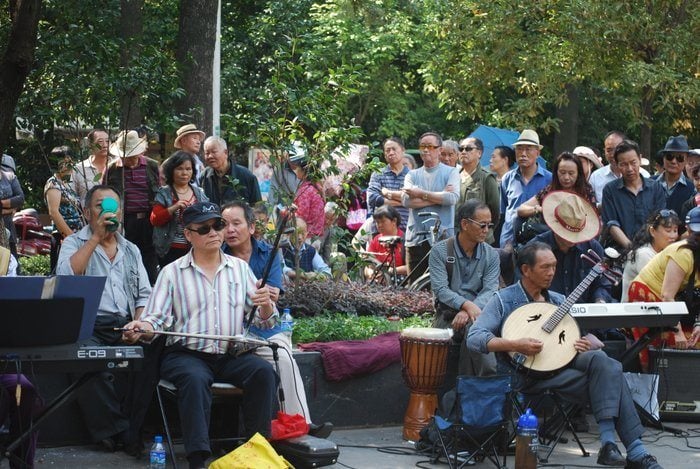
No matter where you are in China, the best place to meet people is in the local park. People love gathering at parks to do things like practice tai chi, dance, fly a kite, play chess, or just drink tea and chat. Sure, there will be a big language barrier if you don’t speak Chinese, but that shouldn’t stop you from interacting with locals. After all, they’ll probably stop you to take your picture anyways!
While people in China may seem a bit cold and standoffish at first, it’s usually just because they really aren’t that used to interacting with foreigners. A smile and a simple “Ni hao” really goes a long way here.
Learn a few phrases in Chinese and you’ll be making friends in no time. Don’t be surprised if people invite you to join them at a restaurant or bar and proceed to force-feed you tons of food and beer!
Dating in China
A common sight in the big cities of China is a local girl with a lao wai (foreigner) dude. The place is practically a gold mine for single foreign men. I once had a buddy who would wait until about 2AM and go down into the clubs in the Wudaokou area in Beijing in his pajamas to pick up girls. “Like shooting fish in a barrel,” he would say. He did pretty well, too.
My yellow fever was only temporary, so I can’t speak much on the subject. One thing I will say is that Chinese men get incredibly jealous and pissed off when they see foreign dudes picking up local girls. The ratio really sucks for them, so it’s hard enough as it is. That’s why I imported my American girl and gave up on the whole scene.
While far less common, you’ll definitely see foreign girls dating Chinese men. Cultural differences tend to get in the way, though, so many of these romances are short-term.
A Brief History of China
We might as well start the recent history of China lesson with the founding of the modern-day People’s Republic of China. After a long Civil War and years of Japanese occupation, the PRC was founded on October 1, 1949 by Mao Zedong. His Communist Party had won the war, and he took over as the new leader of a new China.
Although he’s still revered in China – his face is on every bill, after all – Mao put the country through hell. His disastrous policies during the Cultural Revolution and Great Leap Forward caused millions to starve and die, setting China back several decades. The official policy on Mao is that he was right 70% of the time, which makes you wonder who did that math.
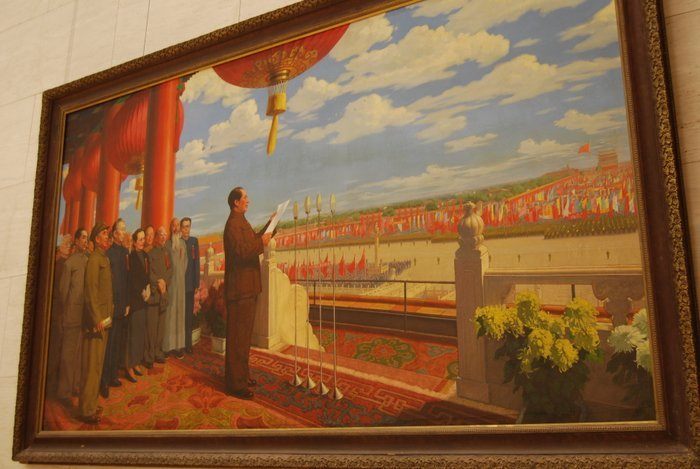
Things started to change in China during the time of Deng Xiaoping. His Reform and Opening policy ushered in a new era for China. The Chinese economy began opening up to the outside world and private enterprises finally started to spring up.
Deng was much more of a pragmatist than Mao, as he famously said, “ It matters not whether the cat is black or white, as long as it catches mice.” And this new Chinese economy most certainly caught some mice.
Over the next few decades, the Chinese economy boomed. The population also grew, breaking one billion by the 1982 census. Tourism finally started to open up, and foreign businesses began moving into China as well. The drab Maoist era seemed long gone as the Chinese started driving Audis, eating KFC, and dancing to jazz.
While much had improved for the people of China, many still wanted more reforms. In 1989, students protested in Tiananmen Square calling for democracy and more freedoms. Eventually, the government stepped in and declared martial law. Armed military officials and tanks were sent into the square to suppress the protests. In what came to be known as the Tiananmen Square Massacre, hundreds to thousands of people were killed (there are no official figures on the death toll). A dark cloud would hang over China for years as a result.
China in Modern Times
Under president Jiang Zemin, China continued to enjoy substantial growth. While many people still wish for a change in the government, they remained quiet after witnessing what had happened in 1989. The country did experience change in the 90s, as Hong Kong and Macau were both peacefully returned to China.

The next president of China was Hu Jintao, who served from 2003 to 2013. During his tenure, China’s economy continued to grow rapidly, eventually surpassing Japan to become 2nd in the world. While much of the developed world struggled to recover from the global financial crisis, China made it through relatively unscathed. During this time, China also began to extend its influence around the globe.
Next in line was Xi Jinping, who remains the president of China. While his predecessors have stuck to the two 5-year term limit, Xi recently passed reforms that removed this limit. It appears as if he is setting himself up for a long run as China’s head of state.
In borrowing a popular phrase from the US, he has been focused on achieving the “Chinese Dream” for the people of China. Only time will tell how things will work out.
Useful Travel Phrases for China
With its four tones and thousands upon thousands of characters, Chinese is definitely an intimidating language to learn . You’ll definitely need a bit of the language when backpacking China though, as English is not exactly prevalent there.
Here are some useful Chinese travel phrases to get you started:
Hello = Ni hao
How are you? = Ni hao ma?
I’m fine = Wo hen hao
Please = Qing
Thank you = Xiè xiè
You’re welcome = Bù kè qì
Goodbye = Zài jiàn
I’m sorry = Duì bù qi
No plastic bag – Wú sùliào dài
No straw please – Bùyòng x?gu?n
No plastic cutlery please – Q?ng bùyào sh?yòng sùliào c?njù
Where is the bathroom? = Xi shou jian zài na l??
What’s this? = Zhè shì shén me?
I want a beer = Wo yào yi ge pí jiu?
How much is it? = Duo shao qián?
If you’re interested in learning Chinese, you should follow the Chinese Language Blog . There are tons of articles on vocabulary and grammar as well as Chinese culture.
Books to Read about China
- Lonely Planet China Travel Guide : The OG of guidebooks, Lonely Planet’s China guide is packed full of useful information to get you through your trip backpacking China.
- River Town : Peter Hessler’s memoir about his time as a Peace Corps volunteer in rural Sichuan is one of the best books on China I’ve ever read. If you dig his style, he’s got a few other books set in China you can pick up as well.
- Factory Girls : If you’re going to read Hessler’s books, you might as well read his wife’s as well. Leslie Chang’s story of the lives of girls toiling away in China’s boomtown factories is an eye-opening read that will make you think twice every time you see that “Made in China” tag.
- Lost on Planet China : When I first moved to China in 2008, my mom bought me this book as a going away present. J. Maarten Troost’s hilarious tale of his misadventures in China perfectly sums up what it’s like traveling in this unpredictable country.
Internet in China
The internet in China sucks, plain and simple. This isn’t because of a lack of access or speed, but because of censorship.
These are the things you won’t be able to freely access in China – Facebook, Twitter, Instagram, YouTube, Google, and yes, it’s sad but true, porn as well. If you need these things in your life, you’ll want to get a VPN before heading to China. I always used Astrill when I lived there and found it to be the most reliable.
In the past few years, many companies have brought to market a plethora of VPN products and China is for sure a big market because of the reasons stated above. Depending on your budget, you can find VPNs starting from only $3/month, many will give you a 30 day free trial and much more. To find the right one for you and your needs, check this VPN list.
When you can actually get on the websites you want to use, the internet is just fine. Chinese people are absolutely obsessed with being online (who isn’t these days?), and you can find WiFi just about everywhere. Internet bars are also huge in China, that is if you want to join chain-smoking teenagers playing RPG games.
Oh, you may also find this SIM card For China post helpful.
When it comes to must try experiences while backpacking China, nothing tops camping out on the Great Wall. This isn’t possible on every section, but there are a few where you can get away with it. I’ve camped out on both the Jinshanling and Gubeikou sections of the Wall with no issues and would highly recommend giving it a shot.
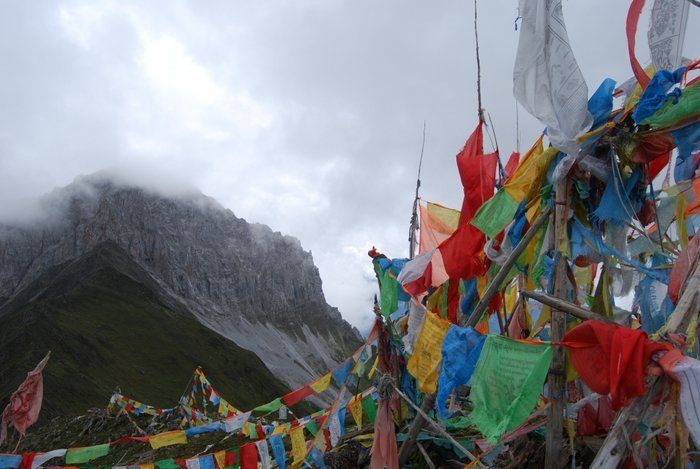
Other excellent hiking opportunities include the Tiger Leaping Gorge in Yunnan and the Zharu Valley eco-trek just outside of Jiuzhaigou National Park in Sichuan. You can do the Tiger Leaping Gorge on your own but will need to sign up for a trip with a local guide for Zharu Valley.
Yangshuo is one of the top backpacker towns in China and is full of must-try experiences. It’s also one of the only places in China where you can rent a motorbike. Get some wheels and explore the stunning countryside full of karst mountains, stopping to try some rock climbing or enjoy a bamboo rafting trip on the river.

Things go wrong on the road ALL THE TIME. Be prepared for what life throws at you.
Buy an AMK Travel Medical Kit before you head out on your next adventure – don’t be daft!
Trekking in China
I’ve already mentioned several of the best treks in China in other sections of the guide, but I’ll repeat myself in case you passed over them. Your best bets for trekking include the Tiger Leaping Gorge in Yunnan, the Zharu Valley in Sichuan, and the Longji rice terraces in Guangxi.
There are several mountains you can “climb” in China as well. I put climb in quotes because the Chinese way to climb a mountain is by walking up several thousand stairs. Not quite as adventurous as actually climbing a mountain…
On your first time visiting China, it may seem like an absolute free-for-all. People drive like maniacs. There’s litter everywhere. People spit on the sidewalk. Men binge drink and yell at their waitresses in restaurants. This may seem like an invitation for you to do the same, but you’re better than that.
As a foreigner in China, you’re representing all of us (they tend to group us all together). Perhaps by witnessing more civil behavior from tourists, these less than ideal habits in China may start to disappear.
That being said, a great thing about travelling in China is that there aren’t a ton of social norms you have to worry about. You can pretty much dress however you want, you can loudly slurp your noodles, and you can get blackout drunk at a bar and they’ll still serve you.
You can also pretty much say whatever you want since English is generally very lacking in China. However, there are a few things to consider.
When in China, you want to avoid talking about the “3 Ts” – Tiananmen, Tibet, and Taiwan. These are very sensitive topics and can easily cause a huge argument. You may have strong feelings on Tibetan independence, but mainland China is not the place to voice those. Having said that, if you’re looking to continue your travels after China, we highly recommend you go backpacking through Taiwan (Just don’t speak too much about it when you’re in China!)
Also, be sure to be respectful in important historical and cultural sights. This is especially true in places like the Forbidden City and Tiananmen Square. You’ll see tons of armed guards there, and they’re not messing around. Don’t go in areas that are blocked off, don’t take offensive photos… you know the drill.
It’s Time to Go Backpacking in China
China may not be on the top of many backpacking lists, which is understandable. The visa process can be time-consuming and expensive depending on where you’re from. It’s true that the pollution in the big cities can be pretty awful. And yes, the people in China can be a bit… shall we say, intense. However, the juice is definitely worth the squeeze if you put forth the time and effort for a massive backpacking trip.
Once you get home and reflect on all those amazing experiences – hiking on the Great Wall, eating some mouth-watering Sichuan cuisine, seeing the Terracotta Warriors, cycling amongst karst mountains – you’ll realize it was absolutely worth it. Hell, you’ll probably start scheming up a way to get back to China to do some of the things you inevitably missed on your first trip.
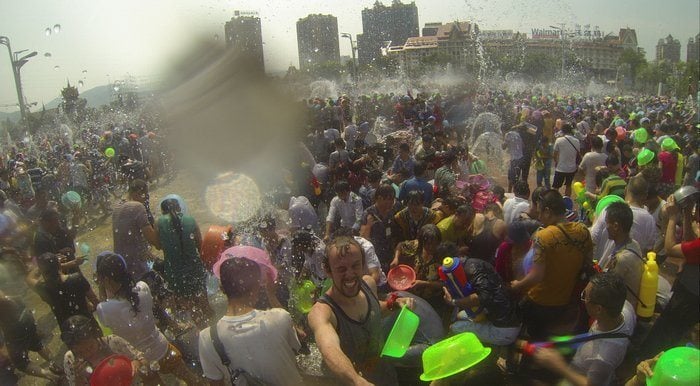
When I first moved to China, I thought I would stay a year and give teaching English a try. Then something happened. I fell in love with learning about other cultures and languages. I also fell in love with backpacking, which is great because those interests go hand-in-hand. For the next several years, I was fortunate enough to travel extensively around China, all the while trying the food, experiencing the holidays, and trying my best not to butcher Chinese.
Almost a decade later, and I’ve now lived in three countries and done extensive backpacking trips across South America and Southeast Asia. For me, it all started in China.
I know there are more glamorous places to visit in the region. I’m aware you can go visa-free to several others. I also know that there’s no place in the world quite like China and that you can’t really say you’ve traveled the world until you’ve visited her most populous country. So go ahead and apply for that visa, because trust me when I say it’s well worth it.
- Buying a sim card for China
- Most beautiful places in China to visit
- Backpacking South Korea
- Backpacking Japan guide

Share or save this post

Hi there, there’s a brand new train line connecting Kunming, China to Vientiane, Laos!
Yeah, when traveling to China I would choose new VPN providers as their servers are not blocked yet there. I used Surfshark during my last trip to China. It worked alright, speed was good enough and stable. Plus, with one account I could use it for a couple of devices I could use social media channel wherever I go. If someone is interested here is the code that I used: (Surf24) it still should work I guess.
Leave a Reply Cancel reply
Your email address will not be published. Required fields are marked *
Save my name, email, and website in this browser for the next time I comment.
Notify me of followup comments via e-mail.

TRAVEL to CHINA – Tips and Information Guide for 2024
Everything you need to know about planning travel to China in our comprehensive destination guide.
From hiking the Great Wall of China to conquering your fear of heights at the highest glass bridge in the world, these are just some of the reasons why you should travel to China.
China is one of the most amazing countries in the world that is deservedly on nearly every traveller’s bucket list.
There aren’t that many countries that possess such various geographical climates, rich biodiversity, stunning landscapes and culture that persisted as the result of over 4,000 years of accumulated historical heritage.
Whether you want to roam its markets or its mountains and jungles, China has something to offer for everyone.
This country boasts in the diversity in its cuisine in addition to that of its languages, people, climate regions and biodiversity.
When you visit China you will be thoroughly amazed that the diet and culinary options vary from region to region.
This in itself gives you more than enough reason to visit China from one end to the other.
So if you’re planning your trip to China and you want your trip to be packed with experiences, new sights, and exotic cuisine while being vastly different from any other previous trip you’ve taken, then our China travel guide should make the planning as fun as the travel experience itself!
China Travel Guide
Before heading towards China, check out some basic information you might need:
General Information
- Capital: Beijing
- Other Main Cities: Shanghai, Guangzhou, Urumqi, Shenzen, Chengdu, Xian
- Currency: Renminbi
- Language: Standard Chinese, Mongolian, Uyghur, Tibetan and Zhuang
- Population: 1,403,500,365
- Area: 9,596,961 sq.m2
- Electricity Voltage: 220V
- Electricity Sockets: Type A, C and I
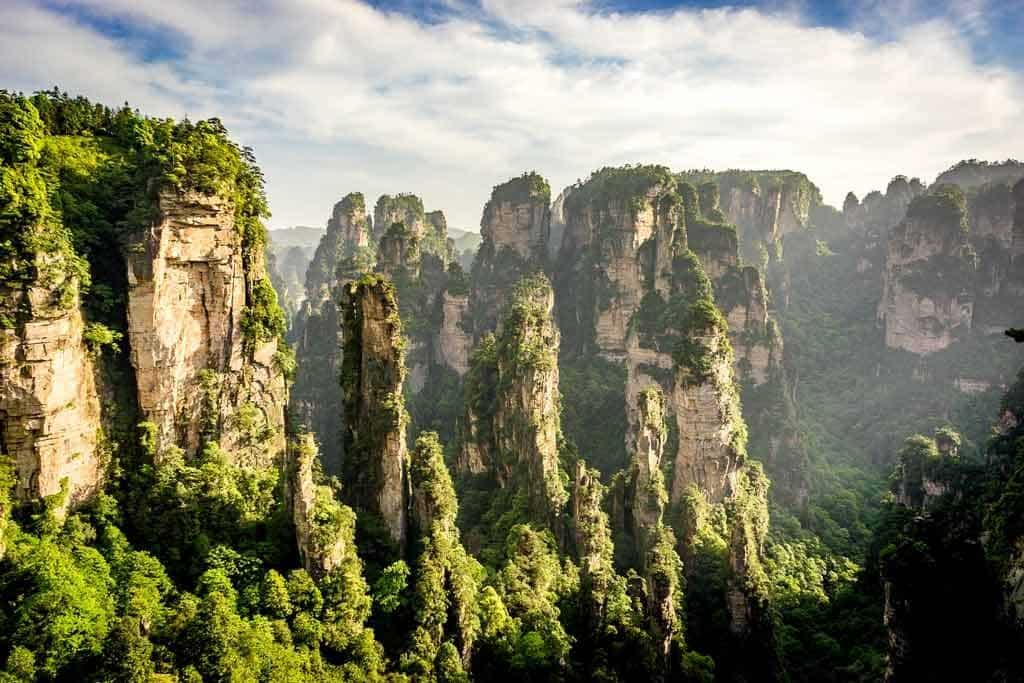
Top 5 Places to Visit in China
- Mount Huangshan – the UNESCO World Heritage is one of the most scenic highlights in the world. The impressive landscape features daunting peaks, thick forests composed of oddly-shaped pine trees and dense clouds covering the sky. It’s a perfect weekend trip if you want to see the most notable peaks and viewpoints of the Yellow Mountains .
- Suzhou – another UNESCO World Heritage site, a town nicknamed the ‘Venice of the East.’ If you’re visiting Shanghai, don’t miss the opportunity to pay a visit to this water town. The canals, gardens, narrow alleyways, picturesque pagodas and bridges make it a perfect day trip for some relaxation time.
- Hangzhou – one of the seven ancient capitals of China and one of its Four Garden Cities. It’s known for the West Lake and stunning and well-preserved nature. The lake area consists of about 60+ cultural sites and spots to enjoy its nature . You can book a guided cruise tour that combines the best of natural sites but also incorporates this city’s rich history.
- Guilin – this site has well-deserved its reputation for being one of the biggest natural gems in the world. The oddly-shaped hills (Karst Mountains), mysterious caves and its riverside decorated with the tall bamboo trees, paints a scenery unique to China.
- Beijing – C hina’s capital that is home to over 21 million people is not only the political center of the country but also has other impressive cultural and historical highlights that are not to be missed! Those include one of the World’s most recognizable landmark, the Great Wall of China and, equally as fascinating Forbidden City – today, a declared UNESCO World Heritage which was home to the rulers of the famous Ming and Qing dynasties.
Top 5 Travel Experiences in China
- Hiking the Great Wall of China – There are many sections of the wall that you can hike. We recommend the Jinshanling section, as most agrees it not only has the most beautiful scenery but is also the most accessible. The Chinese government has invested a lot into the infrastructure of this section, vastly improving the paths, cableway, roads and adding new hiking routes and even, organizing a shuttle bus. You can even camp on the Great Wall of China if you want!
- Walk Over the Zhangjiajie Glass Bridge – This is the longest and highest glass bridge in the World. It will be not only a memorable but also an adrenaline-inducing experience. This area is incredibly special, especially because of the Avatar Mountains and all the beautiful nature in this national park.
- Visit the Panda Reserve in Chengdu – if you’re an animal lover then you won’t regret taking the time to explore the reserve. The Chinese consider pandas sacred animals, and they are doing everything they can to ensure that we will be able to remove pandas from the endangered animals’ list. This gorgeous reserve is a testament to their dedication . Check out our post on how to spend 3 days in Chengdu .
- Mogao Caves , Dunhuang – More popularly known as the Caves of a Thousand Buddhas, these are a series of caves (492 caves) where ancient Buddhist carvings, manuscripts and murals from the 14th century can be found. This place is well worth the time, energy and money you’d need to see it. The world-class experts will guide you through over 41,800 meters of Buddhist history.
- Visit the Forbidden City – This UNESCO World Heritage Site in Beijing is incredibly important for the history and culture of the Chinese people. It is a wonderful example of traditional Chinese architecture, it’s home to the famous Palace Museum and it is the largest ancient palatial structure in the whole world!
Best Time To Visit China
When considering when to plan your trip to China one of the most important things to keep in mind are the season and the weather.
Some people plan their trips around certain events. While others plan around the seasons/weather.
When NOT to Visit China
When organizing your trip to China, a good starting point is to first decide when NOT to go!
A good rule of thumb is to avoid every public Chinese holiday ! But that might prove a little bit trickier than you’d expect since some follow the lunar calendar and are different year to year.
And it sounds counterintuitive to avoid China at certain times. But during public holidays China turns into an entirely different country for a traveller.
This is because transportation tickets are more expensive. Booking a train ticket will prove to be almost an impossible feat and all tourist sites will be overcrowded.
Not to mention that a lot of places will be closed for a couple of days or even a week. So you might miss an opportunity to visit locals’ favorite small eateries or some traditional venues.
So for visitors who really want to take their time and enjoy China’s main highlights, this would definitely be the worst time to visit.
Avoid the Spring Festival (more known as Chinese New Year/ Chunjie) – mid to late January to mid-February.
This is the most important holiday and you can expect to see millions of Chinese traveling all over the country.
It’s known to be the biggest annual mass migration in the world.
You should also avoid visiting China during the Golden Week or the week of National Day.
It’s from the 1st – 7th of October. And while the number of people that participate is lower than during the Spring Festival, there are still a lot of people moving and a lot of places closed to the public.
A lot of Chinese travelers also go abroad during this time so you can expect ticket prices for Japan and Thailand to go up.
If you want to visit during those dates, then just make sure to book well in advance and keep in mind that you will be paying more for everything – from accommodation to street food.
Other popular events are the Lantern Festival and the Dragon Boat Festival .
Those events should not interfere with your travel but expect slightly larger crowds at certain sites.
When to Visit China
So now that we tackled when NOT to visit China, what is the best time to visit China?
China occupies a landmass with various climates spanning all over the country.
The best times for a visit are generally in spring (March-May) and autumn (September–November).
If you’re having trouble deciding when to visit, a useful trick is to also divide China by regions and seasons.
As we said, spring is a great time to travel pretty much all over China.
But in the north, it might be colder during early spring or late fall. But the weather should still be manageable.
The exception is Tibet . This is because it is closed to foreign visitors for two months every spring.
From April to June, you can visit just about anywhere.
The best times to visit some places in northern China, Hainan or Tiber are during mid-summer.
Some destinations are almost unbearably hot during summer and if you are sensitive to high temperatures, you should keep that in mind.
The places that we would avoid during the summer are:
- Nanjing (Jiangsu)
- Wuhan (Hubei)
- Chongqing (Sichuan)
- Inner Mongolia
Other Travels Seasons
The factor that you should include when planning when to visit is the rainy season.
From April to August if you’re planning to visit southern China, your flight just might be delayed or even cancelled due to bad weather conditions.
At this time of year, it’s best to travel via high-speed trains – they’re rarely delays, fast and comfortable.
As with many other places in the world, in July and August students are on a school break and many families use that time to go on a summer vacation.
Prices will be higher in summer and you should plan well in advance.
Autumn is ideal if you want to visit spots that otherwise experience unbearably high temperatures in summer.
We would suggest during autumn that you plan to visit the Great Wall, Hong Kong and Xinjiang.
To see the incredible feat of mankind, the Great Wall, surrounded and bathed in autumn colours, is a visual experience like no other.
If you’re thinking to book your trip during your winter holidays you will be rewarded with fewer crowds and cheaper prices if you can withstand the cold.
During winter you can visit the Harbin Ice Festival (24th of December to 25th of February).
The snow and the scale of ice sculptures that are illuminated at night are an amazing sight to see.
The necessity of warm clothing can never be overemphasized as the temperatures drop during night low as -24 °C and are hardly ever over zero during the day.
A less known fact is that Tibet is great for winter traveling.
During the high season, there is a limited time how much you can spend at the Potala Palace . But you can spend as long as you wish during winter.
The capital of Tibet, Lhasa, also has warmer winters than Beijing.
If that’s not a good enough reason to travel to Tibet during winter, we will also mention that it’s definitely a more economical option and permits to enter the region are easier to get.
You will get a more authentic experience during winter because that’s also when many pilgrims arrive in Tibet.
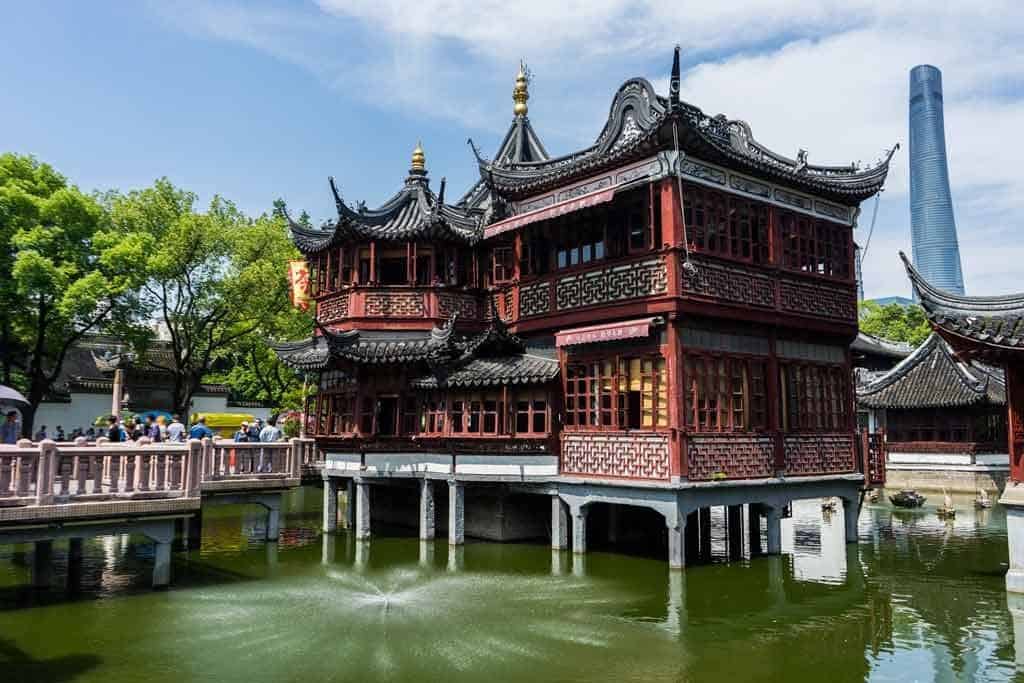
Food In China
- Beijing Duck – This dish is a must when you’re in Beijing, the birthplace of this iconic dish. The sweet and savory duck is served with spring onions, cucumbers, pancakes and other different sides (every restaurant has its own spin on this Chinese classic).
- Hot Pot – This can be an amazing choice or an utter disaster if you do not understand the Chinese spices and ingredients. It’s a pick your own destiny. First, choose the soup for your pot. This dish is all about the spice, but if your counterpart can’t handle the spice as well as you, you can split the pot into two. After choosing from a wide array of vegetables and meats you walk over to the sauce bar. The sauce bar offers barbecue sauce, freshly cut herbs, sesames and pastes, meats and vinegar. Ask a local to guide you through the process and help with their suggestions.
- Hong Shao Rou – This means red braised pork belly. It’s a dish that originated in Shanghai and is popular all across China. It’s cooked with garlic, chilli peppers, rice wine, ginger, soy sauce, sugar and deeply aromatic spices.
- Dumplings – These can be eaten at any time of the day. They are usually dipped in soy sauce or vinegar with garlic. Dumplings are a staple of Chinese cuisine and there are many variations to cater to all tastes. The dumpling dough can be based on potatoes, flour or bread and the filling can be made from almost anything – various meats, fish, vegetables or cheese.
- Chow Mein – This is a dish made popular by the locals of Northern China, which today has reached global fame. It’s a dish made out of thin noodles (bean and cornflour dough) and is accompanied by sliced meats, Chinese vegetables and an egg.
Travel Itineraries Suggestions for China
China is vast. As the 3rd largest country in the world, China has much to offer by way of travel experience.
But trying to see the entire country can be daunting.
Here is a suggested 12-day itinerary to give you the best chance to see the highlights in the least amount of time we’d recommend when you visit China.
Beijing (3-4 Days)
Perhaps the biggest reason why people go to China is to see the Great Wall of China.
Our main piece of advice is to skip the Badaling , which is the busiest section of the wall.
Visit a part of the wall that is unrestored but still tourist-friendly, such as Jinshanling, Huanghuacheng or Gubeikou .
The easiest section to visit would be to take a bus to Mutianyu .
There you won’t have the wall to yourself. But you will have successfully avoided most of the crowds and will see beautiful views.
The second day, go and roam Beijing’s hutongs.
These are a network of alleyways and courtyard houses that make up Beijing.
There are day tours that usually include the Wudaoying Hutong , Houhai Lake, the Lama Temple and the Bell and Drum Towers .
B ut if you have the time, the best way is to simply let yourself get lost.
If you have a budget set aside for activities, hutong tours are interesting as you’d get to learn more about history and culture.
On your third day, make sure to go and see the Tiananmen Square that carries a portrait of Mao right over the entrance to the Forbidden City.
The Forbidden City is huge and you could spend a full day there.
But for most travellers, even two hours is enough to see all the highlights before starting to feel overwhelmed.
For the rest of the day, go to Jingshan Park and enjoy the views of Beijing and the Forbidden City!
Xi’an (2 Days)
Rent a bike at one of the main gates of the wall and do a round trip tour around the ancient wall.
When you get off the wall, take some time to explore the art district near the South Gate .
The area is brimming with small shops and souvenirs.
This stunning neighborhood is a joy to photograph.
Take one afternoon to go roaming around the Huimin Jie Muslim market.
From bargaining for interesting souvenirs to bring back to your loved ones to eating some of the most delicious and cheapest street food you’ll ever have.
Also, you are only a day trip away from Xi’an are the terracotta warriors.
You can see rows upon rows of life-sized terracotta warriors.
Jiuzhaigou and Huanglong (2 Days)
Hiking through Jiuzhaigou is one of the most beautiful trails you’ll encounter. It is full of crystal lakes and rivers that will mesmerise you.
The waters are so crystal clear that they reflect the sky.
The next day visit Huanglong , known for its calcite deposit pools.
These vibrantly colored pools are why Chinese have nicknamed the Huanglong – “fairyland.”
Songpan (1 Day)
If you’re a fan of horses then definitely don’t miss out on a horse trek across the Tibetan plateau.
You will be able to travel with a local guide that will show you parts of China that most visitors don’t get to see.
Chengdu (2 days)
A bus ride to Chengdu is four to six hours (there are flight options available too). This will leave you just enough time in the afternoon to explore teahouses and the city’s scenic gardens.
For dinner, you should go and get the traditional eating experience – the hot pot (from Chongqing and Sichuan).
The next day you might want to take the two-hour trip to see the largest Buddha in the world.
There are many tourist buses that operate on a daily basis.
One of the highlights of Chengdu is their Panda Reserve .
Morning visits are the best because that’s when the pandas are most active.
They also have a baby area, where you can observe cubs play with toys and roll around.
Shanghai (2-3 days)
To visit Shanghai, try to have at least two full days available to give this city justice.
Some of Shanghai’s highlights are: the Bund, the Yu Yuan Gardens , the French Concession and Jing’an Temple .
A lot of visitors claim that the best soup dumpling eatery is outside the Yu Yuan Gardens. Just follow the queue.
To see the ever-rising skyscrapers expand before you in every direction you look, just go up to one of Shanghai’s buildings.
The usual go-to observatory spots are the Shanghai World Financial Center and the Jin Mao Tower .
Visa Requirements For China
If you are travelling to China you will have to apply for a visa from the Chinese embassy or their consulate.
This is unless you are a citizen from one of the visa-exempt countries.
An important side note : Hong Kong and Macau, have their own independent border control policy.
This means that they have their own visa requirements for which you have to apply separately from your Chinese visa.
There are only seventeen countries that are allowed to travel without a previously issued visa to China.
The countries that are exempt from visa are :
Stay up to 90 days:
- Bosnia and Herzegovina
Stay up to 60 days:
Stay up to 30 days
- Seychelles
- United Arab Emirates
Stay up to 15 days:
For further information and up-to-date changes, click here .
READ MORE: Our experience with getting a Chinese visa in Vietnam .
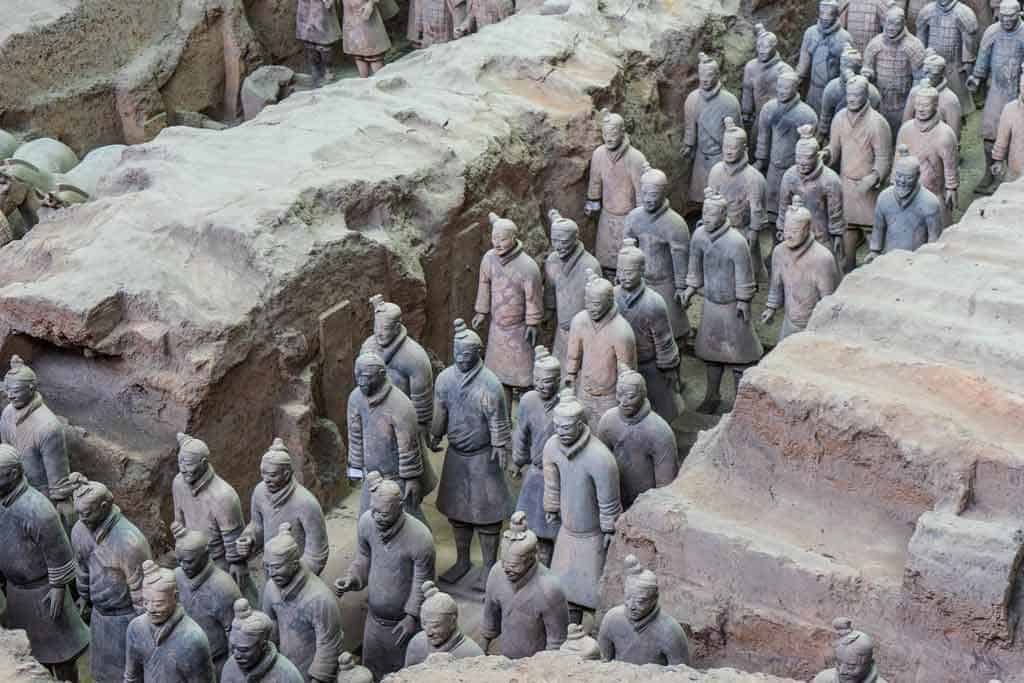
How to Travel to China
There are plenty of ways to travel to China. Whether you prefer to travel by air, land or sea you will find many options and rates for your travel into the country.
Flying is the fastest and most convenient way to travel from most countries in the world to China.
China air transport hubs are:
The biggest and most used airlines are:
- China Eastern Airlines
- China Southern Airlines
- Hainan Airlines
International flights connect China with major cities all around the world. Further, Chinese domestic flights connect all major cities within the country.
The only two cities in China that have two airports are Shanghai (Hongqiao International Airport and Pudong International Airport) and Beijing (Nanyuan Airport and Capital International Airport).
So be mindful of that when booking your flight.
There are eighteen cities in China that offer 72-hour visa-free transit so visitors can have a short stay in the most popular cities. Just note that these also tend to be the most expensive ones too.
From Europe:
Getting to China from Europe could be tricky and it most likely requires transfers.
That being said, you can still get to China from many European cities, such as Amsterdam, Milan, Rome, Brussels, Paris, Frankfurt, Manchester, Madrid, London, Zurich, Barcelona and Helsinki.
From the US:
It is possible to catch a direct flight from the US to China.
Most flights originate in San Francisco, Seattle, Detroit, Los Angeles, Seattle or Chicago and terminate in either Beijing or Shanghai.
Of course, pricing and availability vary. And you can expect the flights to be operated by one of the three big companies: Delta, American or United Airlines.
There are a variety of ways and border crossings when you want to visit china overland.
Travelling by train and vehicle are the most common.
The most usual way to get from Europe to China via train is to hop on the Trans-Siberian railway.
The Trans-Siberian train is a lot easier to arrange when it comes to booking a ticket or organizing your visas. And it is significantly faster.
The Trans-Siberian route, from Moscow – Beijing, is just one train. So in terms of being pragmatic and budget-friendly, this is the option we would recommend.
But that said, there’s another possible route: the Silk route via Kazakhstan.
Here you have the following options :
- London – Moscow
- Moscow – Astana or Almaty (Kazakhstan). This is the direct route for China
- Moscow – Bishkek (Kyrgyzstan)
- Moscow – Tashkent (Uzbekistan), if you wish to start from Uzbekistan
- Tashkent – Samarkand – Bukhara and Urgench for Khiva, these trains link Tashkent with three cities in Uzbekistan
- Tashkent – Almaty
- Almaty/ Astana – Ürümqi, which is the next step to China
- Ürümqi – Xian – Beijing
Train tickets are more expensive than traveling by air and transit times are longer too.
But i f you do want to spend some time in Uzbekistan, Kyrgyzstan or Kazakhstan then taking this route is a nice way to do sightseeing.
If you’re coming from USA/Canada, the easiest way would be to book your ticket to Moscow and then decide whether you want to take the Silk or the Trans-Siberian route.
We do not suggest driving because you could only drive to China, not inside the country.
International driver’s licenses are not valid in China.
So even if your starting point is from one of the neighbouring countries, it’s less hassle to book a train or hop on an airplane.
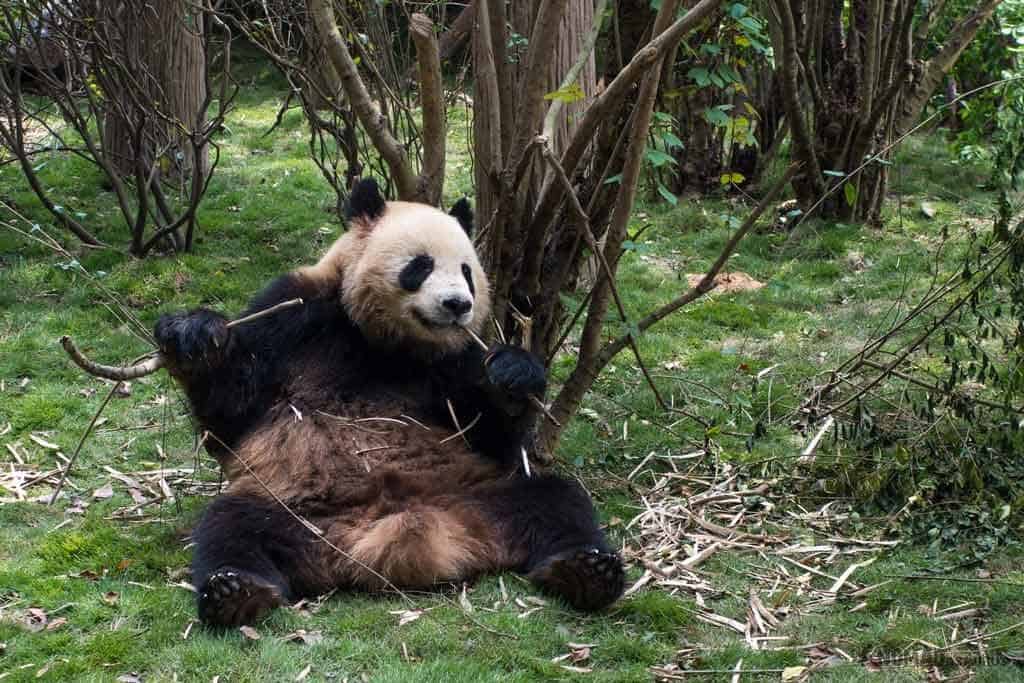
China Travel Tips
If you’re not from China or eastern Asia, you could find the culture and way of interacting to be quite strange.
The way of expressing emotions and opinions is quite different in China as compared to Western cultures.
But that’s just the beauty of cultural variety.
Besides that, there are certain things that you should pay attention to in order to have a good time in China.
And there are also things that you should know so that you will be respectful towards the locals.
Here are some tips we have for you during your stay in China:
- Don’t be afraid of raised voices! A lot of the time you will encounter Chinese people talking very loudly. In most cultures that would signalize that a heated discussion is about to turn into a brawl. But actually, Chinese people can tend to just talk loudly and passionately.
- Be sure to have Travel Insurance for the duration of your trip. One incident can cause a major impact on your wallet – not to mention your travel plans.
- Don’t tip. This might go against your personal beliefs, but Chinese don’t tip and neither should you. This will only confuse them or some may even find it insulting.
- Buy a VPN. There are a lot of useful websites that are not accessible in China (like Facebook or Google!) We recommend ExpressVPN. Use this link to get 30 days free when you sign up.
- The preferred method of payment is cash. Most places only accept cash unless you are visiting upscale hotels and restaurants.
- Use the Yuan currency only. The Hong Kong dollar or US dollar won’t be accepted.
- Install Pleco – the best app for Chinese language for travellers.
- Haggle. When merchants see that you are not a native Chinese, they will almost always rise the market price. It’s not unusual to haggle. Some merchants even respect you more if you do.
- Bring toilet paper and hand sanitizer. In a lot of toilets in China, you won’t always find these essentials.
- If in need of help, turn to the youth. Statistics have shown that a majority of Chinese under the age of 25 speak conversational English.
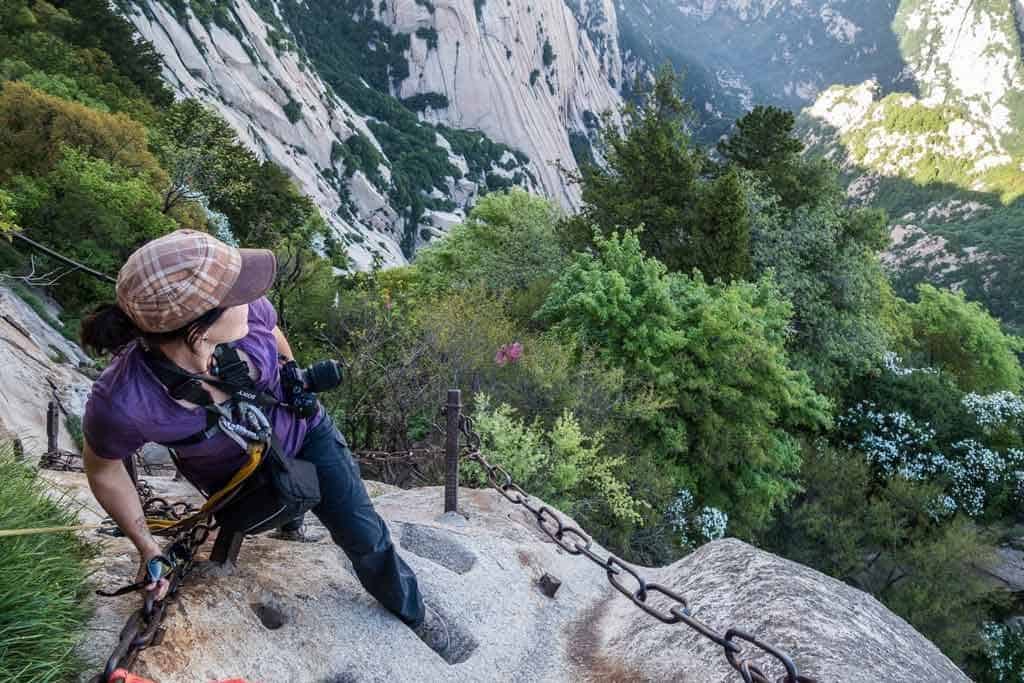
Budget for Travelling in China
China is a huge country and prices vary significantly depending on what region and what time of the year you’re visiting.
Since you’re probably interested in the range of prices of certain things you’ll definitely spend money on, we’ve decided to help.
Here’s a list of some essential expenses and their general cost range as you travel to metropolitan areas:
- Accommodation : $4 – $400+
- Food : $0.50 – $45+
- Drinks : $0.40 – $15
- Domestic/Local Transportation : $0.30 – $30
- Tours : $15 – $600+
When it comes to accommodation, the cheapest form is hostels.
In less touristy areas you can find mixed dorm beds from $4 USD per night.
Even in major cities, like Beijing and Shanghai, the prices start from $3 USD per night!
As for food, the best way to save money is to eat street food or visit a food court at a shopping mall.
The street food in China is not only cheap but also incredibly good. Even the wealthiest love to indulge in street food.
A filling meal from a street vendor would cost you up to $5 USD. But it’s usually less than that.
For transport costs, you can rent a bike, which is around $3 USD, depending on how much terrain you want to cover.
If you don’t have a budget for cultural activities, you’ll be relieved to know that there are many museums that don’t charge admission!
Flashpacker
There are a lot of mid-range accommodation options, from private rooms in hostels to private rooms in shared Airbnb and hotels.
Private rooms in hostels cost a little bit more than two beds in a mixed dorm room (around $8 USD per night) or a private room in an Airbnb (from $20 USD per night).
Mid-range hotel prices start from around $30 USD per night.
Eating out in local restaurants usually costs from $10-15 USD per meal.
The cost of an average alcoholic beverage in a bar would be around $8-10 USD.
Transport costs, such as taxi, could cost from $9 USD, of course depending on the time of the day (night fare is more expensive) and the distance you will cover.
But always ask for the price in advance before getting into the taxi!
Double rooms in a luxury hotel or a private home booked through Airbnb start from around 120$ USD per night.
Eating out at the most excellent restaurants (hotel restaurants or local ones) will cost you from $45 USD per meal.
There is an array of cultural activities available to all tastes and depending on your interest – whether it’d be visiting the Chinese national opera or the hottest night club – prices vary.
If you’re used to travelling in luxury through other countries, you can expect that China not only delivers the luxury to which you’re accustomed but also costs considerably lower when compared to other countries.
You could treat yourself to one of the most luxurious tours, such as a Zhujiajiao Water Village Tour from Shanghai.
Transportation In And Around China
China is a huge country and if you plan to travel around it – you’ll need some help.
Keep in mind that renting a car won’t be an option, since no international driver’s licence is valid in China!
Here are all the other ways to travel in cities and between them:
Chinese airlines are safe and comfortable.
There are over 1,200 routes and nearly 1,000 are domestic routes.
The most popular airports for domestic travel are in Shanghai, Guangzhou and Beijing.
Besides Macau and Hong Kong, there are over 200 airports in China that connect over a hundred internal cities and eighty foreign cities.
The most popular and reliable airlines are:
- Eastern Airlines
- Air China Limited
- Shandong Airlines
- Southern Airlines
- Shanghai Airlines
- Xiamen Airlines
- Shenzhen Airlines
- Sichuan Airlines
Public buses are generally crowded, but very affordable.
Try to avoid peak hours, as traffic jams occur in large and populous cities quite often.
The buses generally run from 6:30 in the morning to 7:30 in the evening.
In some cities they run through the night.
When you board the bus, at the front door there will be a coin box where you are expected to pay for your fare.
However, some buses have a ticket conductor that oftentimes charges according to how much distance you will cover.
The Intercity Long-Distance Bus
The intercity long-distance bus is another increasingly popular option attributed to the development and extension of highways.
All cities have coach stations which are located at the city’s railway station.
The long-distance buses operate between almost all Chinese cities.
The run time is usually from early morning to late in the evening, and for longer distances – there are fewer services throughout the day.
The buses usually have a toilet, TV, air-conditioning and some might even have a sleeping berth if it’s an overnight trip.
Mini-buses operate to try and alleviate the pressure of bus transportation.
The tickets are a bit higher in price and they’re determined by the distance you take.
Still, it is best to avoid peak hours which are from 7 am–9 am and 5 pm–7 pm.
Pay close attention to your belongings as pickpockets operate most during rush hour.
Tour buses usually feature a Chinese character ‘游’ in front of the bus number.
Tour buses are commonly seen in major Chinese cities where there are many famous highlights.
They have a predetermined scenic route and usually have a tour guide on board to share interesting bits of history and fun facts.
Trolleybus/Electric Buses
From 2010, trolleybuses have joined the public transit system in 14 Chinese cities.
All trolleybus systems in China hail from after the 1950s except in Shanghai.
Shanghai’s trolleybus system was opened in 1914 and is still operating – making it the oldest operating trolleybus system in the world.
Traveling by railway is the main means of transportation in China and its network is one of the biggest in the world.
The mileage of operating railways adds up to 124,000 kilometres and the number of passengers has surpassed 2.5 billion.
Out of the 124,000 kilometres of railway, the 22,000 kilometres are utilized by the high-speed railways.
The Chinese railway connects almost every place in China – even the most remote ones – and is the backbone of the Chinese traffic network.
The domestic trains are divided into five categories:
- High-speed/bullet trains
- Fast trains
- Tourist trains
- Express trains
- Normal trains
The High Speed/Bullet Train
This remarkable train, on average, operates fast as 250-300 km/h.
The price of tickets depends whether you want to buy first, second or business class as well as if they have a VIP category.
Some overnight trains offer soft and luxury soft sleeper options.
Many trains sell standing room tickets which cost the same as second class tickets.
The facilities are similar to those of an airplane.
The seats can be adjusted and you have use of a foldable table. Further, electrical sockets and meals and snack services are provided at a price.
This website will help with booking tickets and schedules.
The major cities have metro systems either already in operation, in planning stages or under construction.
The underground transit is developing at rapid speeds.
This is because one of the priorities to make China a greener country is to reduce the pollution of its cities and improve the quality of living.
Chinese metro systems are immaculate. They transfer large amounts of people, are very frequent and nearly always on time.
This contributes to diminishing the traffic jams and above ground transit.
The Shanghai Metro is the longest metro system in the world.
Taxi is a very convenient mode of transport and surprisingly not too expensive.
In major cities, all vehicles have a meter.
If you’re situated in a smaller town, ask at your hotel for a price estimate.
And if you’re thinking of covering a long distance, it’s possible to negotiate a deal.
Taxis are available at nearly all times and everywhere.
Chinese taxi drivers have a reputation of being very honourable. But it is always good practice to exercise caution.
China has over 110 thousand kilometres of navigable streams, lakes, rivers and canals.
The Grand Canal is 1794 kilometres long. It connects seventeen cities (from Beijing to Hangzhou) and five rivers (Huaihe, Qintang, Haihe, Yangtze and Huanghe.)
Since so many railways and highways have been built in recent years, waterway transport has diminished.
But there are still ways to move around the country via waterway – especially the Yangtze cruise (Baidi to Yichang), Beijing-Hangzhou Grand Canal and the Li River cruise (Guilin – Yangshuo).

Accommodation in China
There is a lot of variety and options when it comes to accommodation in China.
On one hand, you can stay in a very cheap hostel (which doesn’t mean that it lacks quality!).
But China is also full of luxurious hotels and villas.
When picking a place to stay, you should be aware of the fact that, in the Chinese language, there are different words for hotel and they indicate the status of the place.
- Dajiudian – “Big wine shop” – luxury accommodation
- Shan Zhuang – “Mountain resort” – accommodation in the countryside
- Binguan & fandian – a general term for a hotel and can mean anything from an average hotel to a smart hotel.
- Kèzhàn – Basic guesthouse
- Zhāodàisuŏ – Hostel
- Lǚguăn/ lǚshè – inn
- Zhùsù – accommodation
China is one of the best places in the world when it comes to the number of affordable accommodation options!
The network of hostels in China is ever-expanding and most of them are affiliated with the International Youth Hostel Association.
They tend to have clean and modern facilities, nicely designed social spaces, friendly and English speaking staff and fast Wi-Fi.
Getting around China is challenging if you don’t speak the language, but the staff from hostels usually are willing to help you on your way.
They will gladly write the places that you need to visit or a couple of useful phrases to ease day to day communication.
Also, even booking a private room in a hostel is considerably cheaper when compared to European countries.
The quality of hostels is good and the prices tend to be very low.
If you’re in Shanghai, staying at the Mingtown Nanjing Road Youth Hostel will cost around $9 per night.
The dorms have 6 beds and male and female dorms are separate.
A deluxe private room in Beijing’s Chinese Box Courtyard Hostel costs around $50 and breakfast is included in the price.
The hostel also has a couple of free thematic nights, such as the free vegetarian dumpling party or the professional and traditional Chinese Kongfu tea course!
When it comes to cheap hotels, you will usually find these located near bus or train stations.
Chinese locals usually rent beds and not rooms, so doubling up with strangers isn’t uncommon, especially as a means of saving money.
But foreigners are not allowed to share a room with Chinese people.
Instead, they have to rent a whole room. But usually, you will be able to negotiate a good price.
If you’re an avid camper, just know that it is only possible to camp in Hong Kong.
There are free campsites all over the New Territories and in the beautiful nature of Qinghai, Gansu, Inner Mongolia, Xinjiang, Yunnan, Sichuan and Tibet.
But just know that to camp, you would have to obtain a government-issued permit.
Hong Kong, Macau and few southwestern provinces have a number of privately owned guesthouses.
They range in size and quality, from tents to family mansions.
A double room in one of these guesthouses is usually cheaper than in a hotel.
There is at least one mid-range hotel in every town in China.
But the quality of the hotel is hard to predict from the price itself.
An old hotel with faulty bathrooms and washed out sheets could charge you the same as a newly opened establishment.
The general rule is to always try to book the newer place.
In more isolated places, you should be able to find a double room for $20 USD per night. But in bigger cities from $40 USD per night.
One thing you can always rely on when staying in a Chinese hotel is that you will be left with a pair of plastic or paper slippers and a vacuum flask of hot water that can be refilled by the staff!
If you’re in Chengdu, the Chengdu Rising Butterfly Hotel is one of the best options.
Either a business twin room or a queen room costs a little over $50. And in some cases, breakfast is included in the price.
The Holiday Inn Express Yizhuang in Beijing will be a great experience.
The price of a standard room with free breakfast for two is usually around $70. But you can often find discounts and pay around $40!
Luxury hotels are situated in larger cities and offer the same level of service as any four or five-star hotel anywhere else in the world.
They have the same facilities that are to be expected: gyms, swimming pools and business centers.
The price of a double room will be from $120 upwards and an additional 15% service charge will be added.
The Niccolo Chengdu hotel is one of the most popular of its kind.
The very luxurious hotel will offer an incredible experience that will satisfy any type of guest – all for the price of $150 per night!
The Upper House in Hong Kong is the epitome of glamour and it’s especially great for business travel.
It has the largest hotel rooms in Hong Kong, along with ocean views and an amazing location.
The prices start at around $400, but the largest penthouse costs over $2000!
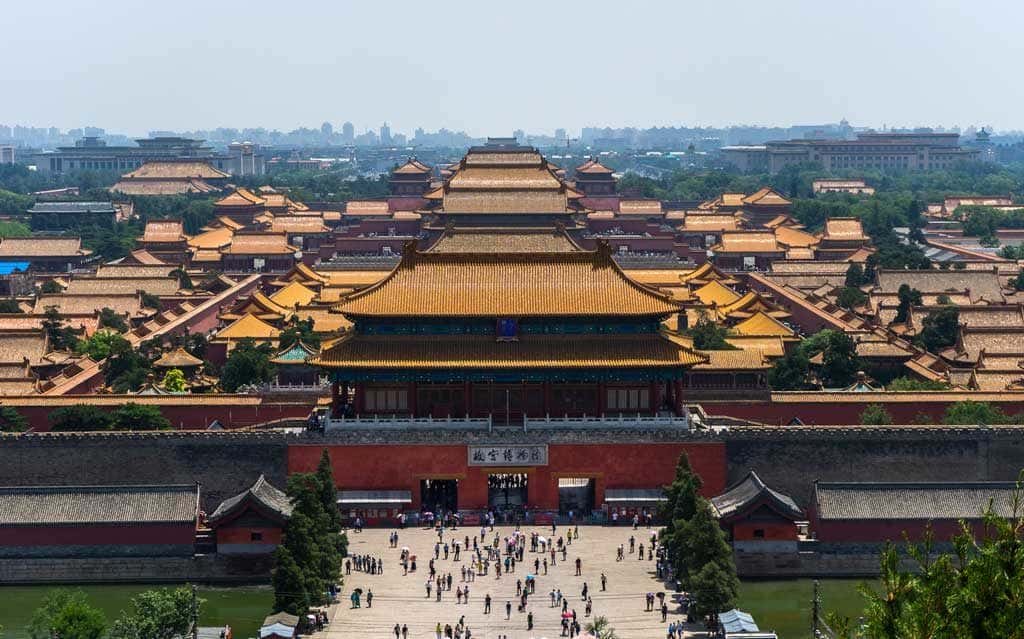
Safety While Travelling in China
China is regarded as a pretty safe and non-violent country.
If there is unrest it’s typically contained within certain areas.
Petty Crime
The biggest dangers are petty crimes such as pickpocketing – which with administering precaution is preventable.
Travellers are targets for pickpockets and thieves.
These thieves usually operate near train and bus stations, hard-seat train carriages, intercity but also long-distance buses (especially take precaution if you’re boarding the sleeper bus) and public toilets.
It is not advisable for women to travel solo.
Always check your restaurant bill to make sure you are not being charged extra for hidden expenses and avoid paying by credit card so you can make sure they won’t add any extra charges.
Safety in Taxis
The most widespread scam are the taxi scams at the Beijing Airport.
Always queue at the taxi rank and insist that the driver uses his meter.
Avoid pedicabs and motorized three-wheelers. Many times these drivers will agree on an initially negotiated price and then after you arrive at the destination they insist on a different sum, which sometimes can even be 10x the initial agreement.
Traffic Accidents
One of the dangers when traveling in China are the high numbers of traffic accidents.
The World Health Organization (WHO) made an estimate that there are approximately 600 vehicular deaths per day.
When taking a long-distance bus you’ll find that there are no seatbelts. Even taxis outside of major cities oftentimes don’t have rear seatbelts fitted.
The biggest danger is crossing the street no matter how ridiculous it sounds.
In China there are a large number of electric cars and hoverboards that run silently and you probably wouldn’t even hear them until it’s too late.
The red lights in China don’t mean much for Chinese drivers as they often run through them. So even the green figure signaling that it’s safe to cross doesn’t always mean that.
Medical System In China
The healthcare system in China is a mix of public and private services.
Major cities such as Beijing and Shanghai have hospitals with world-class care and specialist services.
Rural regions sometimes lack even the very basic healthcare services.
Sometimes healthcare options are limited to only types of traditional medicine such as acupressure, herbal remedies and acupuncture.
You should always travel with travel insurance ! A comprehensive travel medical insurance is mandatory for visitors.
If you are treated at a private hospital the price difference between a private and a public hospital is significant.
If you’re suffering serious health issues and at the time of medical assistance you’re in one of the more remote areas, you will have to organize an expensive airlift.
Preparation is key to easy and safe travels.
Make sure that your policy includes medical evacuation, translation service and private hospitals to ensure maximum comfort.
Packing List For Travel To China
While there is always a variety of packing options depending on the season and length of travel, these are the travel essentials we recommend for your trip to China.
Note: This list is intended for trips during spring and summer.
Clothing And Wardrobe For Men And Women
- 3x Comfortable, long pants
- 5x Short-sleeved shirts
- 2x Long-sleeved shirts
- 1x Wool sweater
- 1x Windbreaker/rain jacket
- 1x Fleece jacket
- 1x Flip flops
- 1x Adventure sandals
- 1x Waterproof shoes
- 1x Hiking shoes
- Undergarments
- Breathable socks
Miscellaneous Items
- Extra SD memory card
- A cellphone (make sure to have an offline Translator App, phrasebook, copies of needed travel documents and ids, currency converter, copy of your insurance card/policy and emergency contact info)
- Portable battery
- Power adapter
- Sunhat with a wide brim and a chin strap
- Insect repellent
- Toilet paper
- Hand sanitizer
- Guide book and a map
- Pocket knife
- Book with everyday phrases in Chinese
- Reusable water bottle
Check Out Our China Travel Blogs
Surviving the world’s most dangerous hike – mt huashan, the 10 best things to do in hangzhou, china (2024 guide), 26 awesome things to do in beijing, china (2024 guide), the perfect 3 days in taipei itinerary [2024 guide], 3 days in chengdu, china – the perfect itinerary, tianducheng – china’s strange city of paris, mount cangshan – hiking high in dali, falling in love with shaxi, china, the ‘real’ china – the ancient village of chengyang, camping on the great wall of china (the complete guide), a day in kashgar – china’s eclectic uyghur city, karakul to mutzagh ata – trekking the karakoram highway.

- Visa Application Helpline
Subscribe to our newsletter
Learn how to live a sustainable long-term travel lifestyle.
By signing up, you agree to the our terms and our Privacy Policy agreement.
Top 27 Places to visit in Darjeeling, Explore the Beautiful Hills of Darjeeling
Top 10 things to do when traveling to shimla: shimla travel guide, the ultimate paris travel guidelines for first timers | top attractions & things to do.

The Ultimate China Travel Guide: Unlocking China’s Splendors
China, a country of immense beauty and captivating diversity, is a destination that promises to leave you with an indelible impression on every traveler. With its rich tapestry of ancient history, breathtaking landscapes, vibrant culture, and modern marvels, this vast nation offers something for every type of adventurer.
In this blog, I will share with you the ultimate China Travel Guide to assist you in uncovering the most unforgettable experiences that this extraordinary country has to offer.
Find the best time to visit China, plan your trip, explore top destinations, and budget for your adventure to make the most out of your trip to China!
WHAT IS COVERED IN THIS ARTICLE?
The Ultimate China Travel Guide: How to Plan a Trip to China

A trip to China can be an exciting adventure, as it offers you a rich tapestry of cultural experiences, breathtaking landscapes, and historical marvels. However, to make the most of your journey and avoid unnecessary hiccups, thorough planning is essential.
But why should you put so much effort on planning this trip? Thorough planning is essential for a successful trip to diverse China as it:
- It maximizes your overall experience.
- It eases communication with locals.
- Planning simplifies the visa application process.
- It helps in optimizing your budget for the trip.
- It also allows customization of your visit to match your interests.
Step-by-Step Guide on Trip Planning
Here’s a step-by-step guide to help you plan your trip to China effectively:
Determine Your Travel Goals: Identify the regions and attractions you want to explore, whether it’s the Great Wall of China, the Terracotta Army, or the bustling streets of Beijing.
Set a Budget: Determine how much you’re willing to spend on your trip and allocate funds for different expenses such as flights, accommodations, food, and activities accordingly.
Check Visa Requirements: Depending on your nationality, China’s visa requirements may vary. Research and apply for the appropriate visa well in advance.
Choose the Best Time to Visit: China experiences different climates in different regions. Consider the weather and your preferred travel dates when deciding the best time to visit.
Book Flights: Search for flights to China, compare prices, and book your tickets. Major international airports like Beijing, Shanghai, and Guangzhou are common entry points.
Accommodation: Research and book your accommodations, considering your budget and preferred location. Options range from luxury hotels to budget-friendly hostels.
Create an Itinerary: Plan your daily activities and sightseeing. Include popular attractions, local experiences, and time for relaxation.
Learn About Local Culture: Familiarize yourself with Chinese customs and etiquette, which can enhance your travel experience.
Pack Smart: Pack suitable clothing and essential items for your trip, considering the weather and activities.
Stay Informed: Keep an eye on travel advisories and any specific travel restrictions or health-related guidelines related to China, especially if you’re traveling during unusual times.
By following these steps, you’ll be well-prepared for your adventure in China and can focus on immersing yourself in the country’s wonders!
Tips on Visas, Flights, and Accommodations
- Visas: Check the Chinese embassy or consulate website for the most up-to-date visa requirements. Ensure your passport is valid for at least six months beyond your intended departure date.
- Flights: Use flight comparison websites or apps to find the best deals on airfare. Be flexible with your travel dates to potentially score lower prices.
- Accommodations: Consider booking your accommodations through trusted platforms like Airbnb, Booking.com , or directly through hotels’ websites. Read reviews and select lodgings that cater to your preferences.
Best Time to Visit and Travel Restrictions
Here is a complete guide covering all the seasons:
Spring in China
Spring in China is a beautiful time to visit, with landscapes bursting into bloom. The weather is mild and sunny, with average temperatures ranging from 10 to 20 degrees Celsius. This makes it ideal for sightseeing and outdoor activities, such as hiking, biking, and visiting temples and gardens!
Some of the best places to visit in China during the spring include:
- Beijing : The Forbidden City, the Great Wall of China, and the Temple of Heaven are all must-see attractions in Beijing. During the spring, the city’s parks and gardens are also in full bloom.
- Shanghai : Shanghai is a vibrant city with a lot to offer visitors. In the spring, you can enjoy the city’s many parks and gardens, visit the Bund waterfront, or take a boat trip on the Huangpu River.
- Xi’an : Xi’an is home to the Terracotta Warriors, one of the most amazing archaeological discoveries of all time. In the spring, you can also visit the city’s many temples and mosques, or take a day trip to Mount Huashan, a sacred mountain known for its challenging hiking trails.
- Guilin : Guilin is known for its stunning scenery, including limestone karsts, rivers, and lakes. In the spring, you can take a boat cruise on the Li River to see the karsts up close, or visit the nearby town of Yangshuo for its laid-back atmosphere and scenic bike trails.
Summer in China
Summer in China can be hot and humid, especially in the south. Average temperatures range from 25 to 35 degrees Celsius, with high humidity levels. However, there are still many things to see and do in China during the summer, such as visiting beaches, hiking in the mountains, and attending festivals!
Some of the best places to visit in China during the summer include:
- Sanya : Sanya is a popular beach resort town in southern China. In the summer, you can enjoy the city’s many beaches, go swimming, snorkeling, or diving.
- Lijiang : Lijiang is a UNESCO World Heritage Site known for its well-preserved ancient town. In the summer, you can enjoy the town’s many canals and bridges, or take a day trip to Jade Dragon Snow Mountain.
- Harbin : Harbin is the capital of Heilongjiang province in northeastern China. It is known for its cold winters and its annual International Ice and Snow Festival.
Autumn in China
Autumn is another beautiful time to visit China. The weather is mild and sunny, with average temperatures ranging from 15 to 25 degrees Celsius. The leaves on the trees turn red and yellow, creating stunning scenery throughout the country.
Some of the best places to visit in China during the autumn include:
- Beijing : The Forbidden City and the Temple of Heaven are especially beautiful in the autumn, when the leaves on the trees turn red and yellow.
- Jiuzhaigou National Park : Jiuzhaigou National Park is a UNESCO World Heritage Site known for its stunning lakes, waterfalls, and forests. In the autumn, the park’s leaves turn red and yellow, creating a magical landscape.
- Huangshan Mountain : Huangshan Mountain is a sacred mountain in Anhui province. It is known for its towering granite peaks, pine trees, and clouds. In the autumn, the mountain’s leaves turn red and yellow, creating a breathtaking sight.
Winter in China
Winter in China can be very cold, especially in the north. Average temperatures range from -10 to 5 degrees Celsius, with snowfall common in many parts of the country. However, there are still many things to see and do in China during the winter, such as skiing, visiting hot springs, and attending festivals!
Some of the best places to visit in China during the winter include:
- Harbin : Harbin is known for its cold winters and its annual International Ice and Snow Festival. During the festival, you can see giant ice sculptures, snow castles, and ice slides.
- Yabuli Ski Resort : Yabuli Ski Resort is one of the largest ski resorts in China. It is located in Heilongjiang province and offers a variety of ski trails for all levels of skiers and snowboarders.
- Guilin : Guilin is also a popular winter destination, as the weather is mild and there are fewer tourists than in the summer.
No matter what time of year you choose to visit China, you are sure to have a memorable experience!
Top 10 Tourist Attractions in China
1. the great wall of china.

First on this list is The Great Wall of China , an architectural marvel that is etched into history. It beckons you to embark on an awe-inspiring journey through time. Located in northern China, this UNESCO World Heritage site is a testament to human ingenuity and perseverance.
You must visit here to experience the majestic allure of China’s rich history and resilience. Visiting this iconic structure allows you to walk in the footsteps of emperors and soldiers, offering a profound connection to the nation’s past.
The main attractions you must visit along the Great Wall include popular sections like Badaling, Mutianyu, and Jinshanling, each with its unique features and scenic vistas. You can hike along the wall, explore watchtowers, and capture breathtaking panoramic views of the surrounding landscape!
Best Time To Visit The Great Wall of China: The best time to visit is during the spring or autumn when the weather is pleasant, and the landscapes burst with color. To avoid the crowds, consider weekdays and early mornings for a more serene experience.
2. The Terracotta Army

Next is the Terracotta Army , an archaeological wonder nestled in Xi’an that invites you to delve into the fascinating world of ancient history and artistic mastery. This UNESCO World Heritage site is a testament to the power and legacy of China’s first emperor, Qin Shi Huang!
You must visit here to view this testament to human ingenuity and artistry. It’s an ancient marvel that showcases the craftsmanship of thousands of life-sized clay soldiers, horses, and chariots, created over two millennia ago to guard the tomb of Emperor Qin. A visit offers you a rare glimpse into the depths of China’s rich imperial history!
The main attractions you should visit within the site include the three massive pits containing the Terracotta Army, each revealing different aspects of the ancient soldiers’ roles and weaponry.
Best Time To Visit The Terracotta Army: The best time to visit is during the spring or autumn when the weather is pleasant and the site is less crowded. Arrive early in the morning to make the most of your visit and avoid the midday rush.
3. The Forbidden City

Another amazing place to visit in China is The Forbidden City , a UNESCO World Heritage site that beckons you to embark on a journey through the heart of imperial China. Located in the heart of Beijing, this historic palace complex is a must-visit destination if you seek a glimpse into the rich tapestry of Chinese history.
You must visit Forbidden City because it is an unparalleled repository of Chinese culture and heritage. As the former imperial palace for over five centuries, it offers you a unique opportunity to witness the grandeur and opulence of the Ming and Qing dynasties.
The main attractions within the Forbidden City you must visit include the Hall of Supreme Harmony, the Palace of Heavenly Purity, and the Imperial Garden. Don’t miss the Palace Museum, which houses countless treasures, or the awe-inspiring Meridian Gate!
Best Time To Visit The Forbidden City: The best time to visit is during the spring or autumn when the weather is mild, and the gardens are in full bloom. Avoid the peak summer and winter months to enjoy a more comfortable experience.
4. The Li River Scenic Area

The next best place to visit in China is The Li River Scenic Area . Here, You get to explore an enchanting natural landscape that has inspired poets and artists for centuries. Located in the Guilin, Guangxi Zhuang Autonomous Region of China, this destination beckons you to experience the sublime beauty of the region.
You must visit here to experience the otherworldly karst landscape, where picturesque limestone peaks rise dramatically from the water’s edge. As you drift along the river on a leisurely cruise, you’ll be surrounded by breathtaking scenery straight out of a traditional Chinese painting.
The main attractions you must not miss within the Li River Scenic Area include the unique karst formations such as Elephant Trunk Hill, Nine Horses Mountain, and the Yellow Cloth Shoal. The charming town of Yangshuo, with its vibrant street markets, is another highlight you must explore.
Best Time To Visit The Li River Scenic Area: The best time to visit is during the spring or autumn when the weather is pleasant, and the landscape is at its most picturesque. The lush greenery of spring and the golden hues of autumn enhance the region’s natural beauty.
5. The Zhangjiajie National Forest Park

Next place on this list is Zhangjiajie National Forest Park which is a natural wonder that invites you to step into a realm of surreal landscapes and captivating beauty. Located in Hunan Province, this UNESCO World Heritage site is a must-visit destination for nature enthusiasts and adventure seekers!
If you love nature, you must visit here to explore its towering sandstone pillars and lush greenery, which served as inspiration for the breathtaking landscapes in the movie “Avatar.” It offers an otherworldly experience that feels like a journey through a fantasy world!
The main attractions within the park you can explore include the Avatar Hallelujah Mountain, the mesmerizing Tianzi Mountain, and the awe-inspiring Golden Whip Stream. The Zhangjiajie Glass Bridge, the world’s highest and longest glass-bottomed bridge, is also a thrilling addition to your visit.
Best Time To Visit The Zhangjiajie National Forest Park: The best time to visit is during the spring or autumn when the weather is comfortable, and the landscape is at its most vibrant. To avoid crowds, aim for weekdays and early mornings.
6. Potala Palace
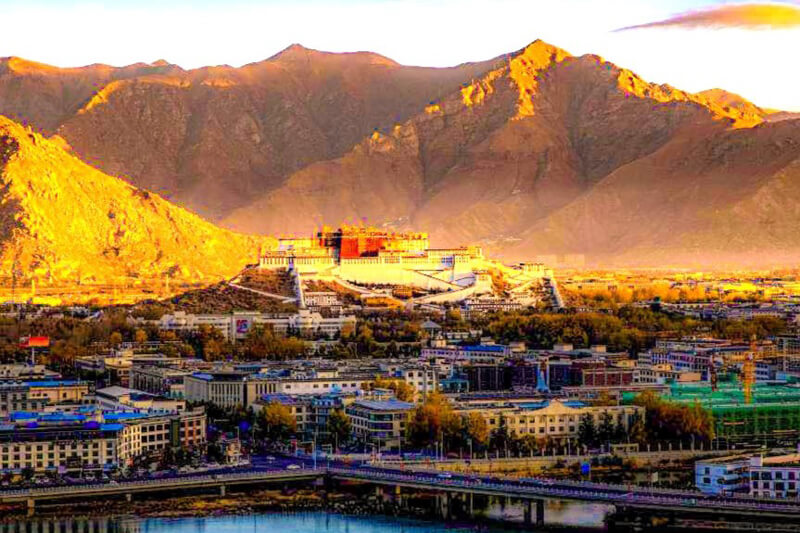
The Potala Palace , a UNESCO World Heritage site in Lhasa, Tibet, invites you to embark on a spiritual and architectural journey like no other. Perched on the Red Hill, this iconic palace is a testament to Tibetan culture, history, and the enduring legacy of Buddhism.
You must visit here to explore this symbol of Tibetan Buddhism and a reflection of Tibet’s rich heritage. It’s not only an architectural masterpiece but also a pilgrimage site for Buddhists worldwide. Visiting here is an opportunity for you to immerse yourself in the spiritual and cultural heart of Tibet!
The main attractions within the Potala Palace include the White Palace, the Red Palace, and the sacred chapels and shrines. The murals, sculptures, and ancient artifacts provide you a glimpse into Tibetan history and artistry.
Best Time To Visit The Potala Palace: The best time to visit is during the spring or early autumn when the weather is relatively mild, and the skies are clear. Be aware that the palace has limited daily visitor slots, so it’s advisable to book your tickets well in advance.
7. Emperor Qinshihuang’s Mausoleum Site Museum

The next amazing place to visit in China is the Emperor Qinshihuang’s Mausoleum Site Museum . Located in Xi’an, China, it is an archaeological wonder that invites you to journey back in time to the ancient Chinese empire. This UNESCO World Heritage site is a testament to the First Emperor’s grandeur and the rich history of the Qin Dynasty.
You must visit here as this museum is home to the renowned Terracotta Army, an army of life-sized clay soldiers and horses that were buried alongside the First Emperor to protect him in the afterlife. It’s also a remarkable display of ancient craftsmanship and an extraordinary historical artifact.
The main attraction within the museum is, of course, the Terracotta Army, but it also includes various other artifacts and exhibits that provide you insights into the life and times of Emperor Qin Shi Huang. The Bronze Chariots and Horses Exhibition Hall is a must-see addition.
Best Time To Visit Emperor Qinshihuang’s Mausoleum Site Museum: The best time to visit is during the spring or autumn when the weather is comfortable, and the crowds are less overwhelming. Be sure to arrive early to avoid the peak visitor hours.
8. The Bund

The Bund , a historic waterfront promenade in Shanghai, is another gorgeous place for you to experience the city’s rich past and vibrant present. This iconic destination is a testament to Shanghai’s evolution from a trading port to a modern metropolis.
You must visit here to experience this captivating juxtaposition of old and new. On one side, you’ll find a collection of colonial-era buildings showcasing European architecture, while on the other, you’ll be greeted by the futuristic skyscrapers of Pudong.
The main attractions along The Bund you can visit include the Peace Hotel, Customs House, and the Bund Sightseeing Tunnel, which takes you beneath the river to Pudong. The area comes to life at night when the buildings are illuminated, creating a breathtaking urban spectacle!
Best Time To Visit The Bund: The best time to visit is in the evening, as the Bund truly comes alive with its dazzling lights and stunning skyline views. The months of spring and autumn offer the most pleasant weather for exploring this iconic waterfront.
9. Leshan Giant Buddha

The Leshan Giant Buddha is another perfect place to visit in China. Located near Leshan City in Sichuan, It is a monumental masterpiece of ancient art and engineering that calls you to explore its serene majesty. This UNESCO World Heritage site is a captivating symbol of Buddhism’s enduring influence and a testament to human ingenuity.
You must visit here to see the largest stone Buddha statue in the world, standing at a towering 71 meters (233 feet) in height. Carved into the cliffside during the Tang Dynasty, it’s not just a testament to religious devotion but also an incredible engineering marvel. Visiting here offers a profound sense of reverence and appreciation for both history and culture!
The main attraction is, of course, the Giant Buddha itself, which you can explore from various vantage points, including a boat ride on the river. The surrounding area also includes temples, shrines, and stunning natural scenery, providing a well-rounded experience.
Best Time To Visit Leshan Giant Buddha: The best time to visit is during the spring or autumn when the weather is pleasant and the crowds are relatively smaller. Plan your visit in the morning to avoid the midday rush.
10. Chengdu Research Base of Giant Panda Breeding

The last, but certainly not the least, best place to visit in China is the Chengdu Research Base of Giant Panda Breeding , nestled in the heart of Sichuan. It offers you a unique opportunity for panda enthusiasts and nature lovers to witness the world’s most beloved endangered species up close. This renowned research facility is a sanctuary for giant pandas and is dedicated to their conservation and breeding.
You must visit here and get a rare chance to observe giant pandas in a semi-wild environment. As the leading center for panda research and breeding, it plays a crucial role in preserving these iconic creatures. Your visit not only supports their conservation but also offers a remarkable educational experience!
Of course, The main attraction is the giant pandas themselves. You can watch them roam, play, and even eat bamboo, which is their favorite food. The base is also home to other wildlife species, including red pandas, which adds to the experience.
Best Time To Visit Chengdu Research Base of Giant Panda Breeding: The best time to visit is during the morning when the pandas are most active and before the crowds arrive. Spring and autumn are ideal seasons, as the weather is comfortable, and the pandas are often more active.
The Best Part of China to Visit
China, a diverse and culturally rich country, offers a range of regions for you to discover, tailored to your preferences as a traveler.
- Coastal Cities:
- Shanghai : A modern hub where you can enjoy shopping and vibrant nightlife.
- Beijing : Immerse yourself in history at the Forbidden City and Great Wall.
- Hong Kong : Experience a unique blend of eastern and western influences in this bustling city.
- Scenic Natural Landscapes:
- Guilin : Delight in picturesque karst landscapes and explore ancient villages.
- Zhangjiajie : Hike among the breathtaking “Avatar Hallelujah Mountain.”
- Jiuzhaigou Valley: Find serenity in crystal-clear lakes and cascading waterfalls.
- Historical and Cultural Sites:
- Xi’an : Discover the Terracotta Army and walk along the ancient city wall.
- Chengdu : Experience history, culture, and savor delicious Sichuan cuisine.
- Pingyao : Step back in time in a well-preserved walled city from the Ming and Qing dynasties.
- Ethnic Minority Regions:
- Yunnan : Immerse yourself in unique cultural experiences and explore ethnic diversity.
- Tibet : Embark on a spiritual and adventurous journey to discover Tibetan culture and high-altitude landscapes.
In conclusion, the best part of China for you to explore depends on your specific interests as a traveler.
How Much Does It Cost to Visit China
The cost of visiting China can vary widely depending on your travel style, preferences, and the cities you plan to explore. Here’s a breakdown of typical expenses for a trip to China:
- Accommodation: Accommodation costs vary from budget to luxury options. In major cities like Beijing and Shanghai, a mid-range hotel might cost $80 to $100 per night, while luxury hotels can exceed $200. Budget travelers can find hostels or guesthouses for $30 to $50 per night.
- Food: Chinese cuisine is diverse and budget-friendly. Street food and local restaurants offer affordable meals for as little as $5, while dining in upscale restaurants can cost $20 or more. A daily food budget can range from $15 to $40, depending on your preferences.
- Transportation: Transportation in China is efficient and budget-friendly. Subway and bus rides are usually under $1, while long-distance bullet train tickets range from $50 to $200. Domestic flights cost $100 to $300, but consider economical high-speed trains for city-to-city travel when budgeting.
- Activities: Entrance fees to popular tourist sites vary, with some costing $10 to $30, and others being free. Cultural activities, shows, and guided tours may add to your expenses. Budget an extra $10 to $30 per day for activities.
Budgeting tips:
- Opt for local street food and eateries to save on food costs.
- Consider using public transportation and walking to explore cities.
- Plan your trip during the shoulder seasons to find better deals on accommodation and flights.
- Purchase a local SIM card or use Wi-Fi to avoid international data roaming charges.
China offers a wide range of options to suit different budgets, from affordable backpacking to luxurious travel. Careful planning and research can help you make the most of your budget and have a memorable experience in this diverse and culturally rich country.
China offers everyone a wide array of attractions, each steeped in history and culture. Planning a trip to China involves thoughtful consideration of expenses and preferences. From choosing accommodations to savoring the diverse culinary scene and utilizing efficient transportation, you can personalize their experiences to match their budgets and interests.
With all the incredible wonders and experiences China has to offer, doesn’t the charm of this country call out to you?
If you enjoyed reading about ways to make the most of your China trip, do check out our other travel inspiration blogs. If you have your own adventurous stories to share, we would love to hear from you.
Frequently Asked Questions (FAQ’s)
What are five fun things to do in china.
Five fun things to do in China include exploring the Great Wall, visiting the Terracotta Army, enjoying traditional tea ceremonies, experiencing vibrant street markets, and trying authentic Chinese cuisine.
Is China cheap or expensive?
China’s cost can vary, but it’s generally considered an affordable travel destination, offering both budget and luxury options.
What is China unique for?
China is unique for its rich history, diverse cultures, stunning natural landscapes, and the Great Wall, one of the world’s most iconic landmarks.
Is China tourist friendly?
China is generally tourist-friendly, with many English-speaking services and a growing tourism infrastructure.
Who visited China the most?
China’s most visited by tourists from within Asia, with countries like South Korea, Japan, and the United States also contributing significant numbers.
What is a popular activity in China?
A popular activity in China is practicing Tai Chi in parks, a traditional martial art that promotes health and relaxation.
What is China’s favorite food?
Popular Chinese foods include dishes like Peking duck, dumplings, and various regional cuisines, with rice and noodles being staples.
Related Posts
Maldives travel guide: tourist places, culture & budget breakdown to plan a trip to maldives, top 25 best countries to visit: your ultimate travel destination guide, the 20 best things to do in medina: make your pilgrimage even more satisfying, the top 13 highest motorable roads in the world: dangers & route details.
Save my name, email, and website in this browser for the next time I comment.
This site uses Akismet to reduce spam. Learn how your comment data is processed .
Type above and press Enter to search. Press Esc to cancel.
- 86-19138970032 (GMT+8 18:00~09:00)

- Beijing Xian Tours
- Shanghai Beijing Tours
- Hong Kong Guilin Tours
- Hangzhou Suzhou Tours
- Kunming Lijiang Tours
- Shanghai Yangtze Cruise Tours
- Chengdu Tibet Tours
- More Short Stay Tours
- China Tours in January
- China Tours in February
- China Tours in March
- China Tours in April
- China Tours in May
- China Tours in June
- China Tours in July
- China Tours in August
- China Tours in September
- China Tours in October
- China Tours in November
- China Tours in December

- High Speed Trains
- China Yangtze Cruise Tour
- Photography
- Desert Adventure
- Ethnic Villages
- Biking Tours
- Kung Fu Tours
- Heritage Sites Exploration
- China Spring Tours
- China Summer Tours
- China Autumn Tours
- China Winter Tours
Notice! 2024 available cruise routes include 4~5 days Chongqing-Yichang(most classic) and 11~12 days Chongqing-Yichang-Shanghai(limited).

- Best-value Yangtze Cruises
- Top Family-friendly Cruise Ships
- Top 3 Luxury Yangtze River Cruises
- Yangtze River Highlights
- Yangtze River Cruise Routes
- Upstream or Downstream?
- Dining & Drinking
- Accommodations
- On-board Activities
- Yangtze Cruise Booking Steps

- Inner Mongolia

- Fanjingshan
- How to Plan Your First China Tour
- How to Plan Beijing Tour
- How to Plan Xian Tour
- How to Plan Shanghai Tour
- How to Plan Guilin Tour
- How to Plan Sichuan Tour
- How to Plan Family Tour
- 2024 China Travel Ideas
- Best Time to Visit China
- What to Pack for Your China Journey
- Make Payment in China
- Updated China Travel News
- Ultimate Chinese Visa Guide
- Chinese Visa Types
- Chinese Visa Requirements
- Do I Need a Visa for China
- Chinese Visa Application
- Chinese Visa Exemptions
- 144-hour Visa Free
- Shenzhen Visa on Arrival
- Hainan 30-day Visa Free
- Embassies & Consulates
- Invitation Letter
- Useful Visa FAQs & Tips
- Entry Regulations
- Baggage Allowance
- Customs Declaration
- Exit Regulation
- How to Book Train Tickets
- How to Collect Train Tickets
- How to Cancel & Alter Train Tickets
- How to Read Train Tickets
- China High Speed Train Types
- Seats Class & How to Choose
- Friendly Facilities on the Train
- The Train Station Departure Process
- Available Food and Drinks on the Train
- Western Toilets on the Train
- Luggage Racks & Baggage Allowance
- Beijing Train Stations
- Shanghai Train Stations
- Guilin Train Stations
- Xian Train Stations
- Chengdu Train Stations
- Hong Kong West Kowloon Railway Station
- Beijing - Xian
- Beijing - Shanghai
- Guangzhou - Shanghai
- Shenzhen - Shanghai
- Chengdu - Xian
- Shanghai - Hangzhou
- Shanghai - Xian
- Chengdu - Chongqing
- Kunming - Lijiang
- Beijing Capital International
- Beijing Daxing International
- Shanghai Pudong International
- Shanghai Hongqiao International
- Guangzhou Baiyun International
- Hangzhou Xiaoshan International
- Chengdu Tianfu International
- Chengdu Shuangliu International
- Xian Xianyang International
- Shanghai - Beijing
- Hong Kong - Shanghai
- Guangzhou - Beijing
- Chengdu - Lhasa
- Shanghai - Guilin
- Shanghai - Sanya
- Travel in Spring Season
- Travel in Summer Season
- Travel in Autumn Season
- Travel in Winter Season
- Weather in January
- Weather in February
- Weather in March
- Weather in April
- Weather in May
- Weather in June
- Weather in July
- Weather in August
- Weather in September
- Weather in October
- Weather in November
- Weather in December
- Top 10 China Destinations
- Top 15 Things to Do
- China World Heritage Sites
- Top 10 Best Natural Beauties
- Top 10 Museums in China
- Top 10 Old Towns & Villages
- Five Great Mountains in China
- Top 10 Monasteries & Temples
- Top 10 Ski Resorts
- Top 10 Beautiful Lakes in China
- 7 Best Beaches in Sanya
- Top 6 Beautiful Waterfalls
- Panda Volunteering
- Having fun on Ice and Snow Festival
- About Us Who We Are Our Team Why Travel with Us Feedback & Reviews Travel Stories Travelers' Gallery Payment Guide Customer Support Contact Us
- Tour Experiences
Destinations
- Travel Guide

- Customize China Tour
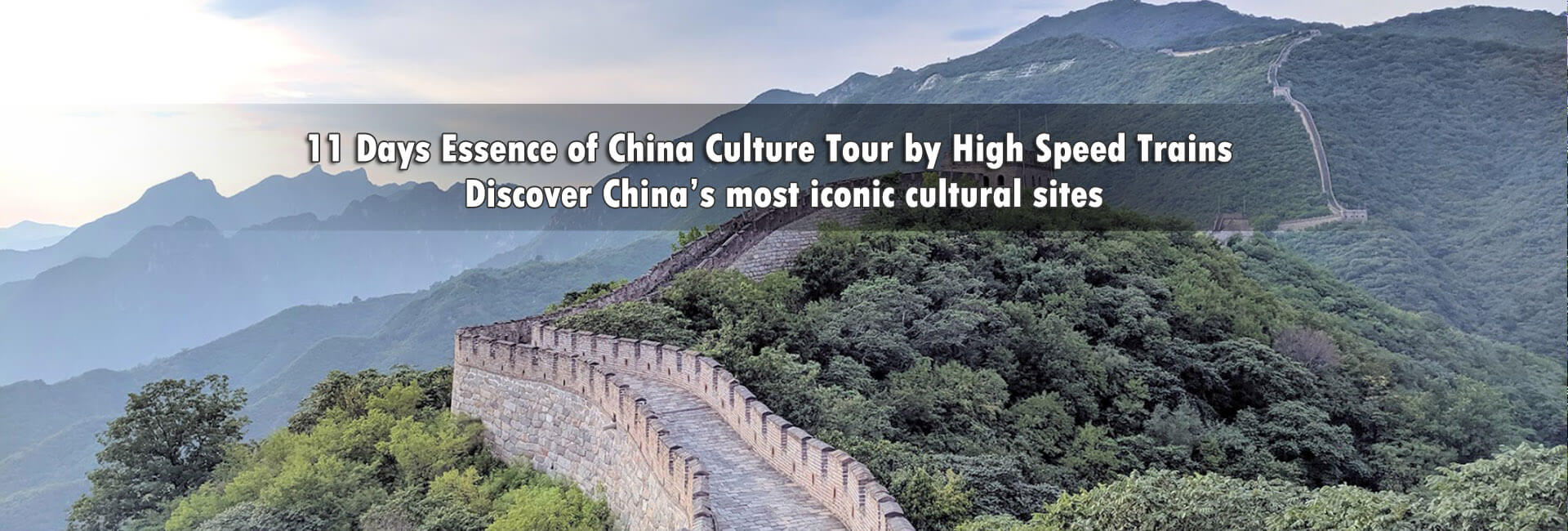
China Tour Packages & Top China Vacations for 2024/2025
China is so big, so diverse and so fast-changing. No matter it’s your first time to visit China or your tenth, you’ll be amazed by the time-honored history, profound culture, stupendous natural scenery, and friendly Han people and ethnic minorities...
To take you out of the guidebooks and into the real world of China, we are here to offer you the private China vacations with best travel experience possible. From our TOP 10 China vacation tour packages and the most classic China vacations, you’re bound to find something that’s just right for you. From our China vacation tours from the popular gateway cities, you’re on the way to link your country and China in convenient way and enjoy unbeatable value for money.
Our PRIVATE CHINA VACATION Features:
- Flexibility: departure date depends on your plan;
- Budget: all arrangements are according to your budget;
- Private: No join-in groups; private guides, drivers, cars;
- Comfort: travel at your pace; highest quality travel service at the best prices;
- Peace of mind: our travel consultants will ensure that your trip to China and in China is totally worry free.
We are one of the few China travel agencies who have kept active and received lots of feedbacks and reviews during pandemic years
Best China Tour Packages - Perfect for the First-timers
We have made things easier for you. Here are the best 5 China tour itineraries which have been chosen by 85% fist-visitors, and have covered classic Beijing, Xian, Shanghai as well as beautiful Guilin, Zhangjiajie, Yangtze, Tibet, etc. Enjoy exclusive private tour package covering accommodation, flight/bullet train transfer, private car, own tour guide, meals, fun activities…
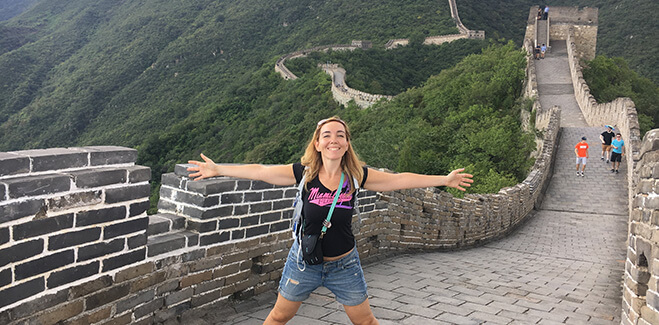
8 Days Best of China Tour
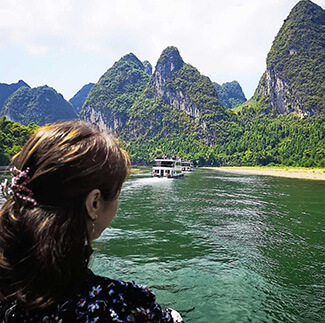
10 Days Classic China Tour
13 Days China Landscape Tour
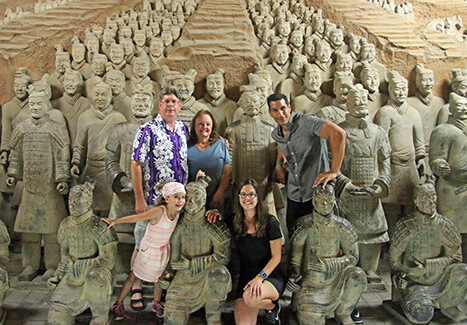
15 Days Panoramic Impression of China
17 Days China Paradise Tour with Yangtze Cruise
Find China Tours by Interests
Looking for unique China experiences? Want to get under the skin of every destination you visit? China and our team can always satisfy you. Culture exploration, nature fun, hiking, family holiday, honeymoon… no matter what travel style you want, you can always find an ideal tour with us.
- Classic China Beijing, Xian, Shanghai…
- Natural China Zhangjiajie,Guilin…
- Cultural China Xian, Silk Road…
- Family-friendly Chengdu, Shanghai…
- Adventure & Hiking Tibet, Xinjiang…
- Holidays & Resorts Club Med, Sanya...
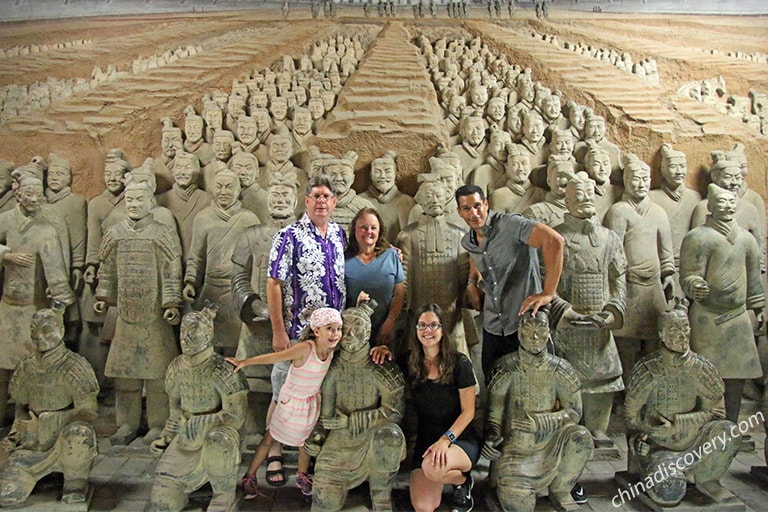
Beijing / Xian / Shanghai
trip details »
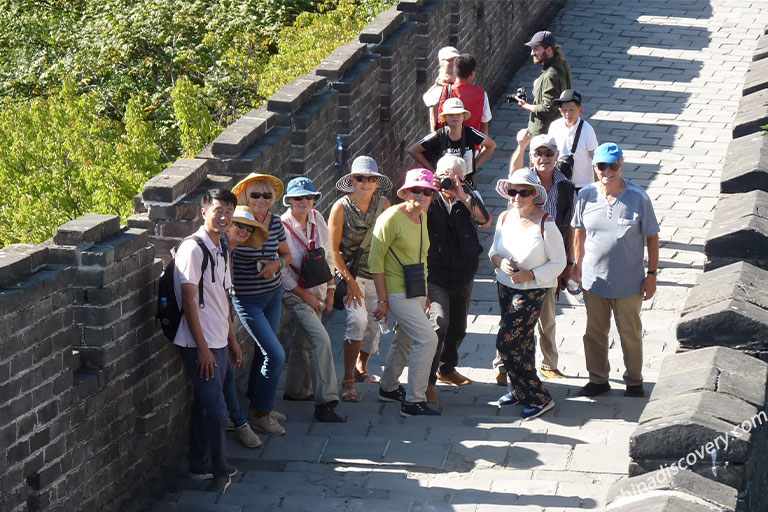
Beijing / Xian
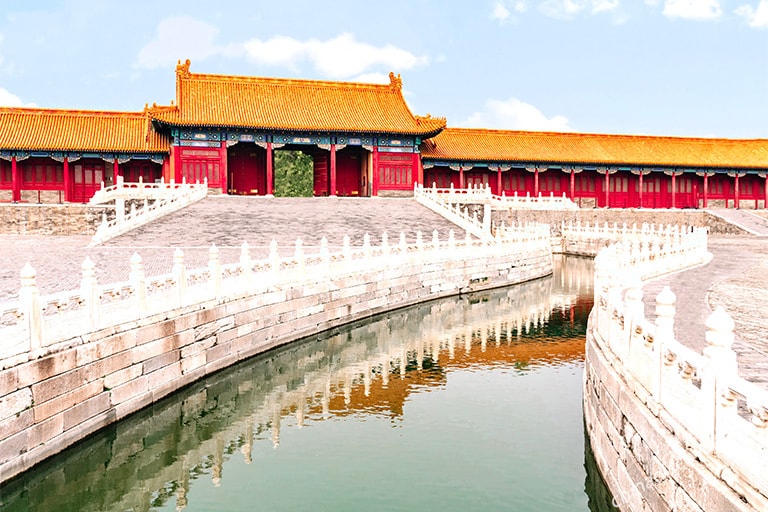
Hong Kong / Beijing / Xian / Guilin / Yangshuo / Guilin / Shanghai
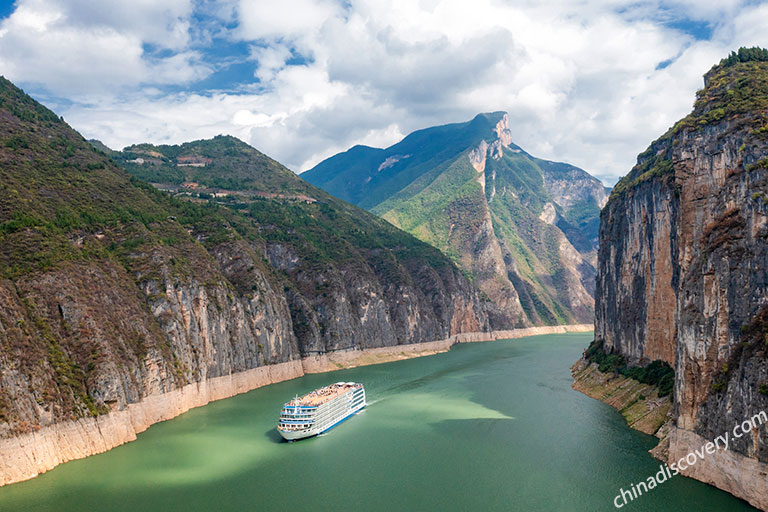
Shanghai / Yichang / Yangtze Cruise / Chongqing / Xian / Beijing
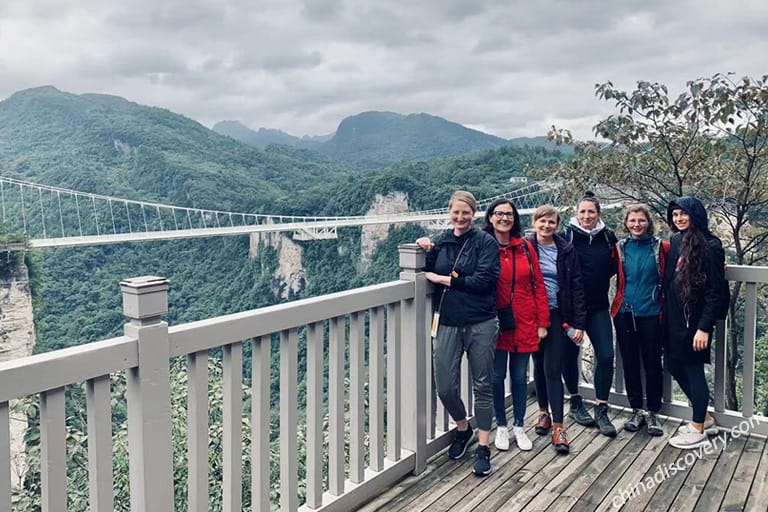
Hong Kong / Guilin / Chengdu / Yangtze Cruise / Zhangjiajie / Shanghai / Xian / Beijing
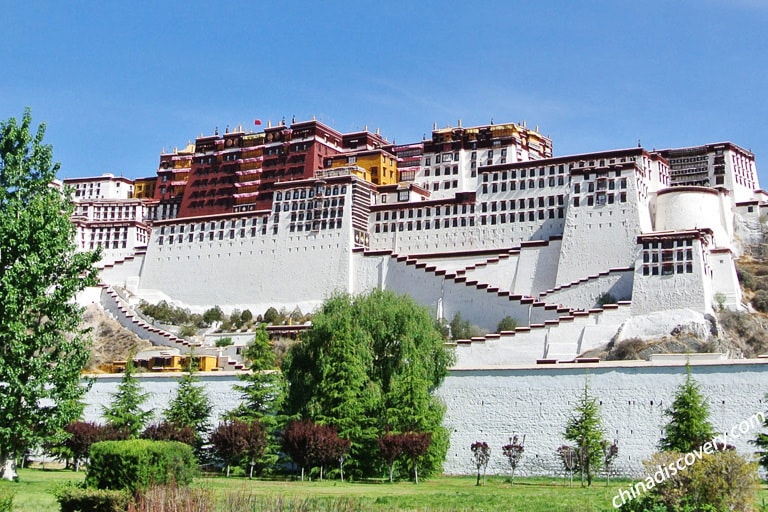
Shanghai / Guilin / Yangshuo / Guilin / Chengdu / Lhasa / Xian / Beijing
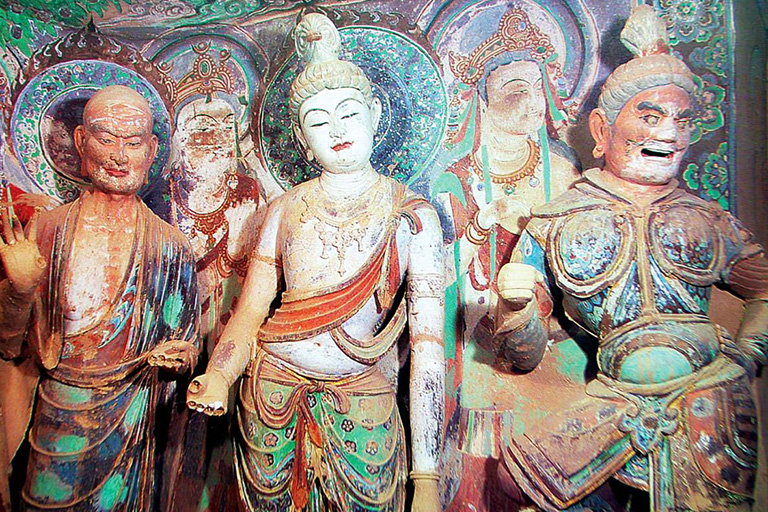
Beijing / Xian / Dunhuang / Turpan / Urumqi
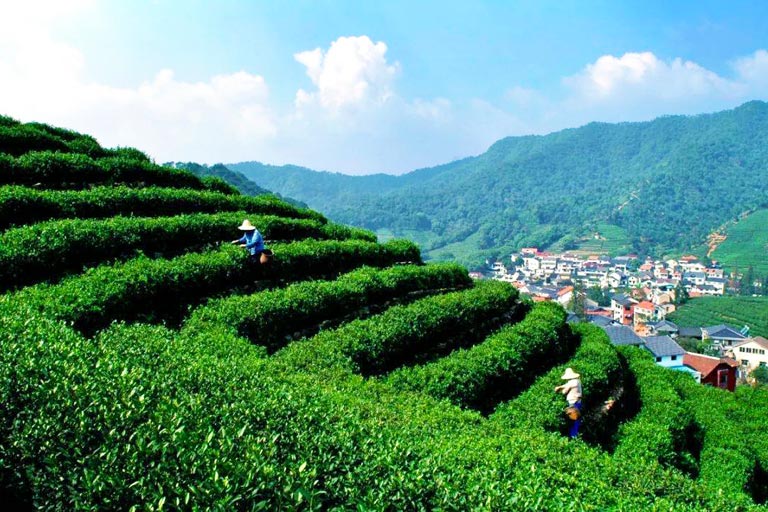
Luoyang / Shaolin Temple / Luoyang
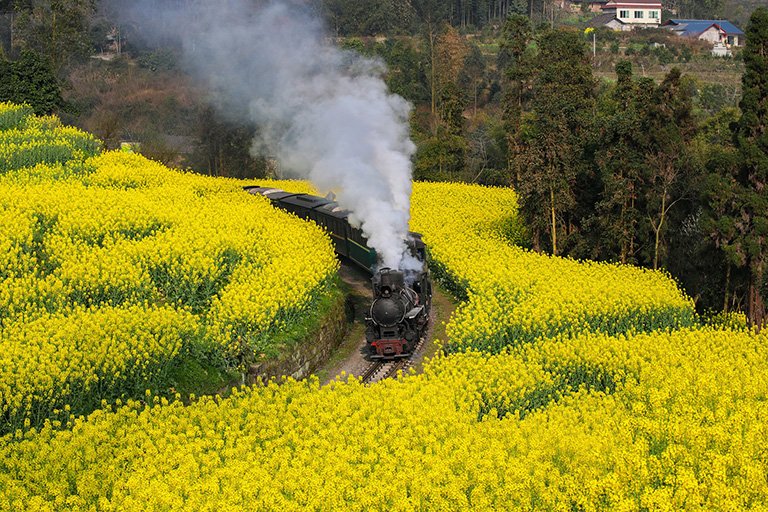
Chengdu / Leshan Giant Buddha / Jiayang Steam Train / Chengdu
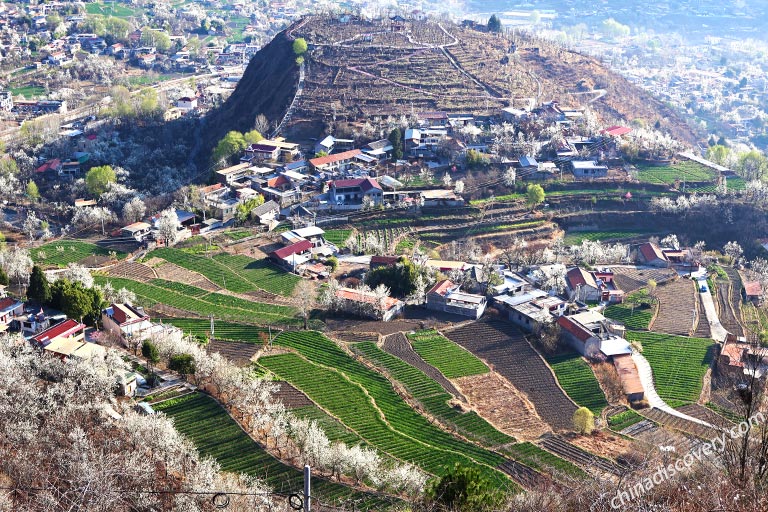
Chengdu / Siguniangshan / Jinchuan / Danba / Tagong / Xinduqiao / Leshan / Chengdu
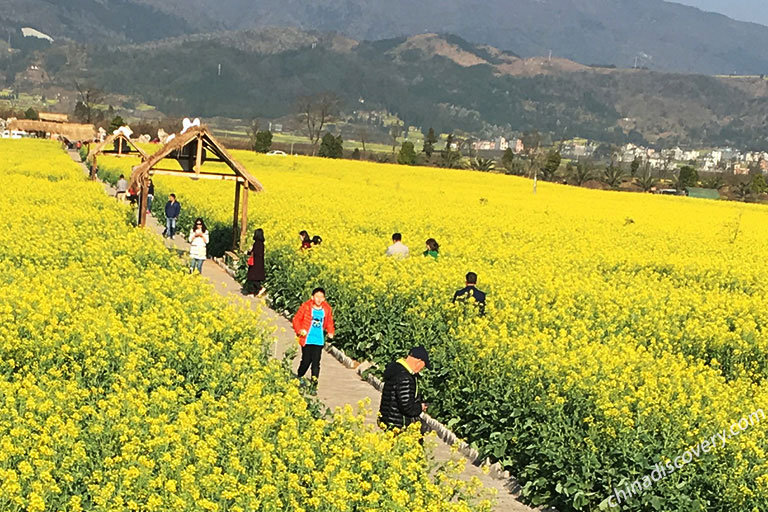
Kunming / Stone Forest / Luoping / Kunming
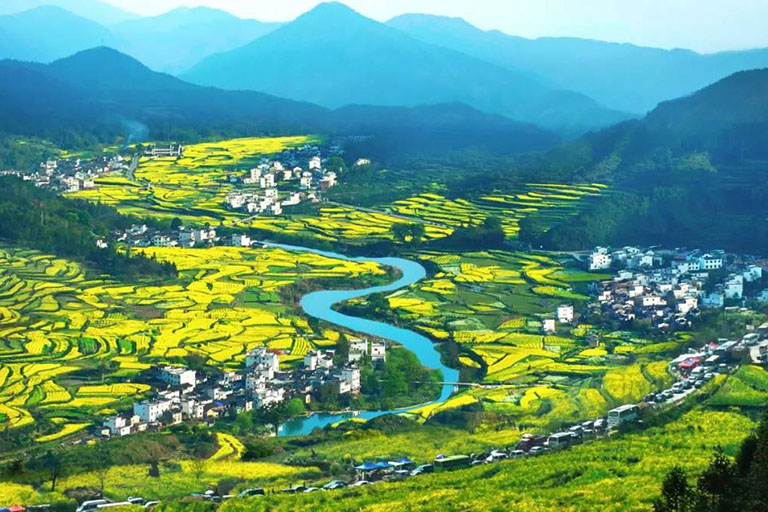
Huangshan / Wuyuan
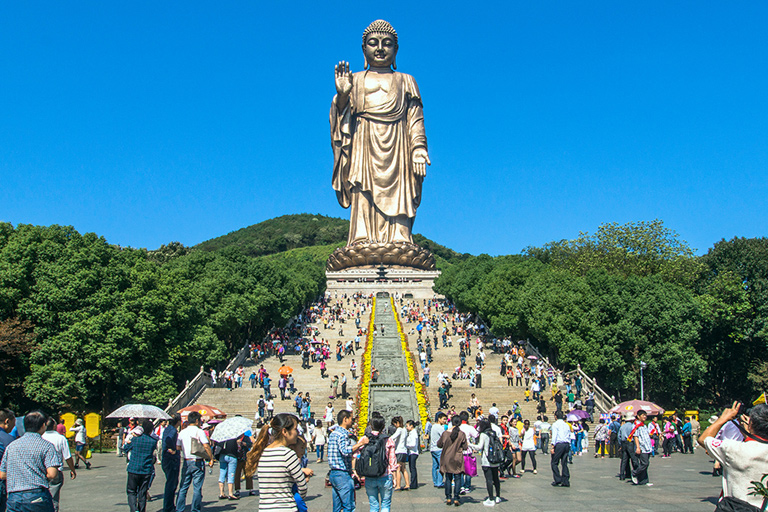
Guilin / Yangshuo / Longsheng
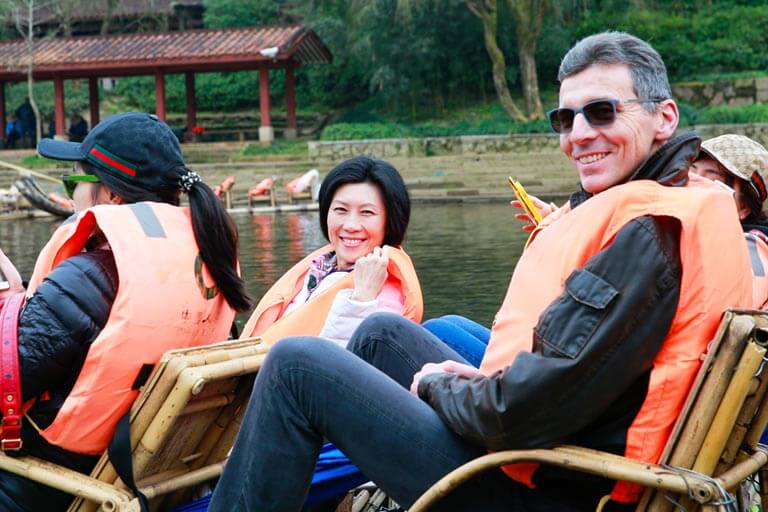
Xiamen / Nanjing Tulou / Yongding Tulou / Xiamen / Wuyishan
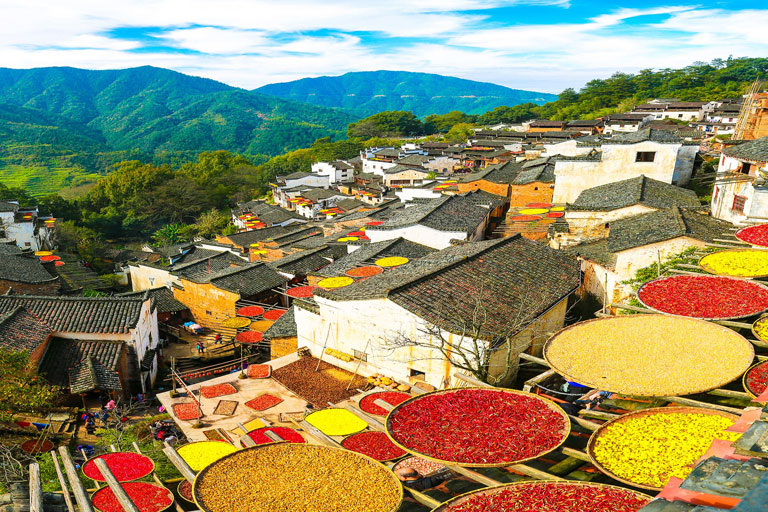
Jingdezhen / Wuyuan
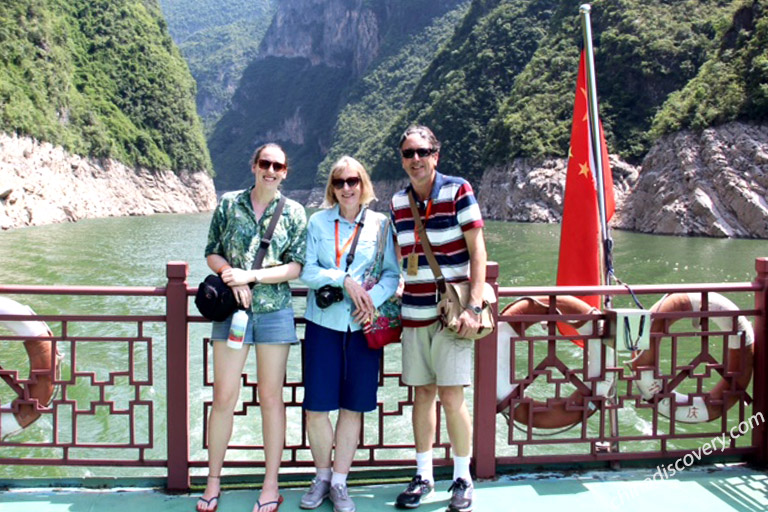
Beijing / Xian / Guilin / Yangshuo / Yangtze Cruise / Shanghai
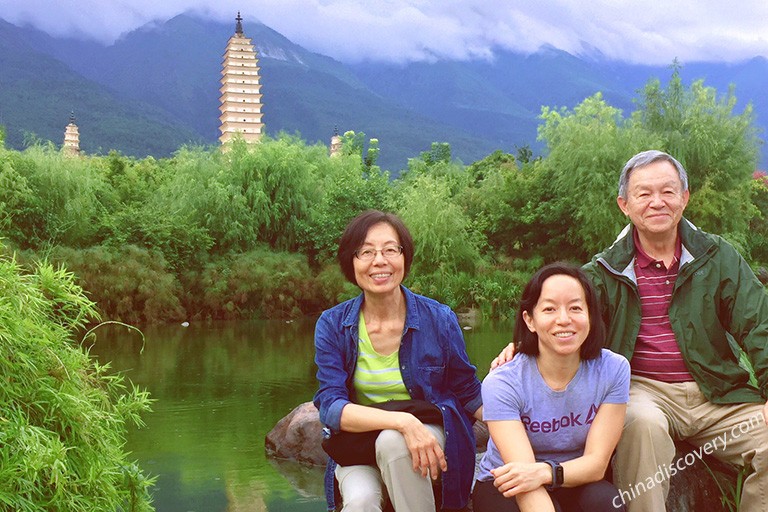
Kunming / Dali / Lijiang / Shangri-La
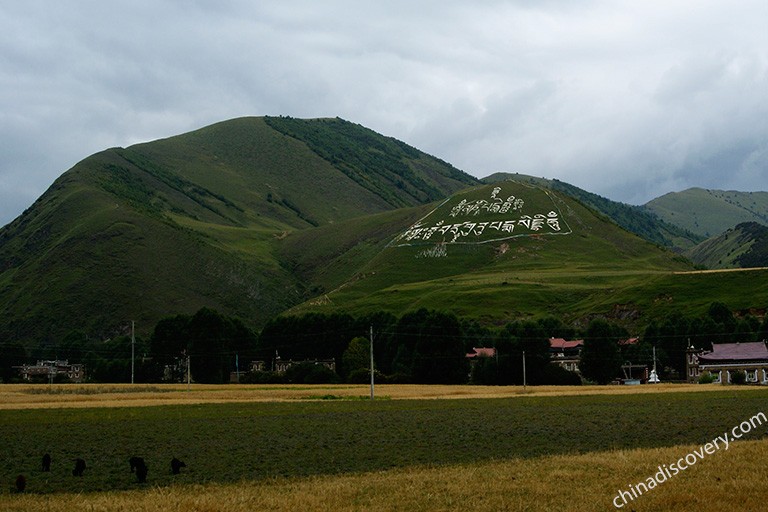
Chengdu / Wolong / Mount Siguniang / Danba / Tagong / Xinduqiao / Kangding / Chengdu
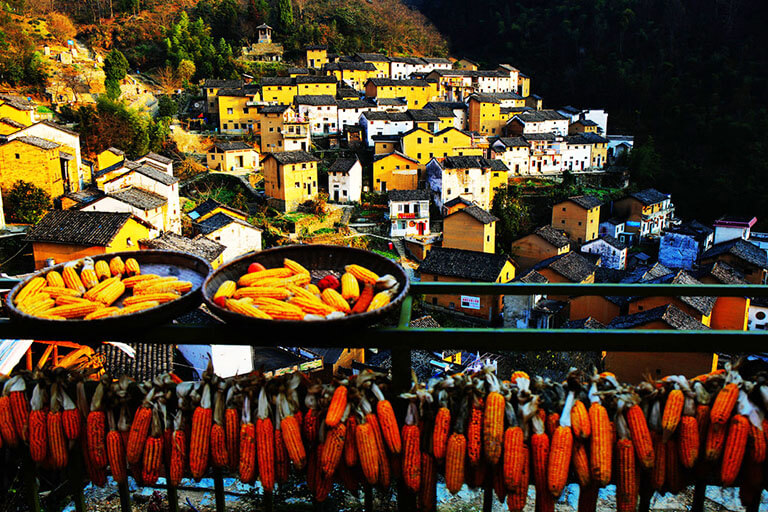
Yellow Mountain - Hongcun - Jiusha - Yangchan - Huangshan
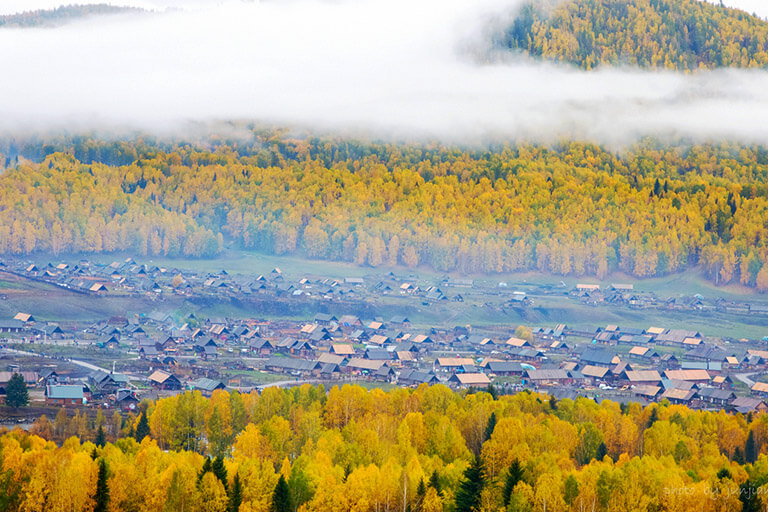
Urumqi - Wu'erhe - Kanas - Burqin - Urumqi - Turpan - Urumqi

Kunming / Dali / Lijiang
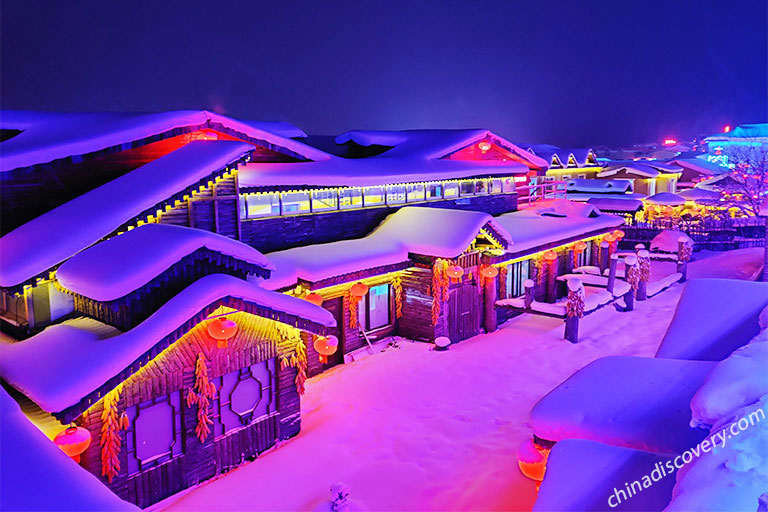
Harbin / China Snow Town / Harbin
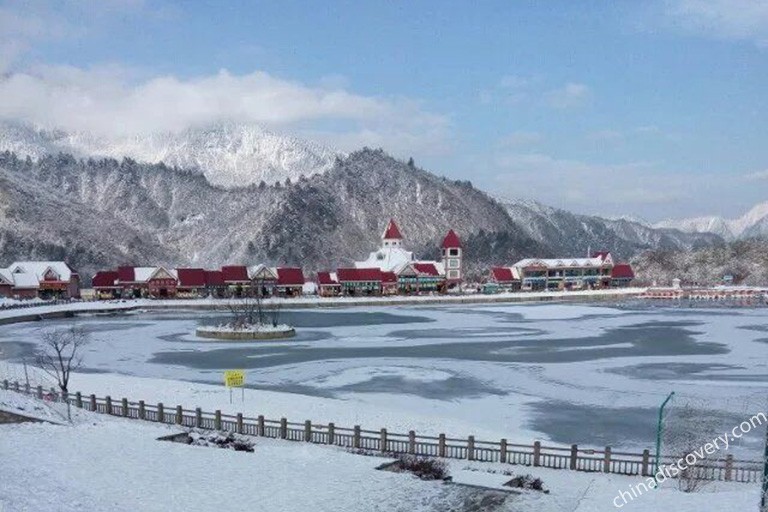
Chengdu / Xiling Snow Mountain / Chengdu
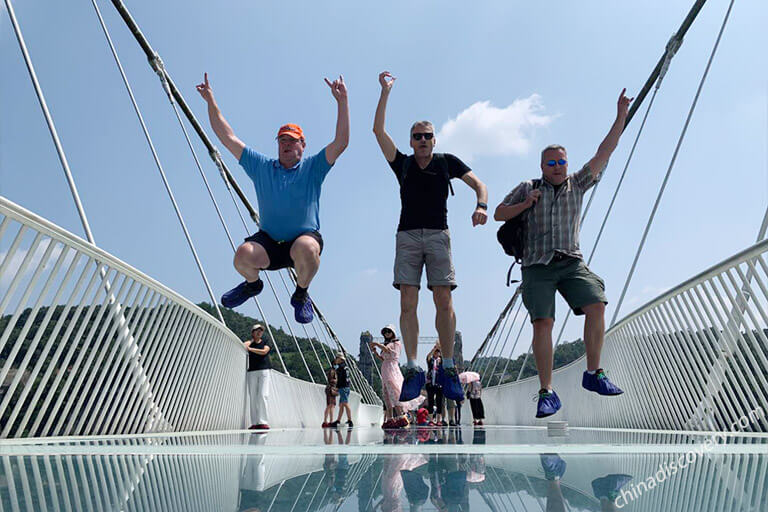
- Zhangjiajie

Changbai Mountain

Harbin / Yabuli Ski Resort / Harbin

Tunxi - Huangshan - Hot Spring - Hongcun

Jilin / Beidahu Ski Resort / Jilin
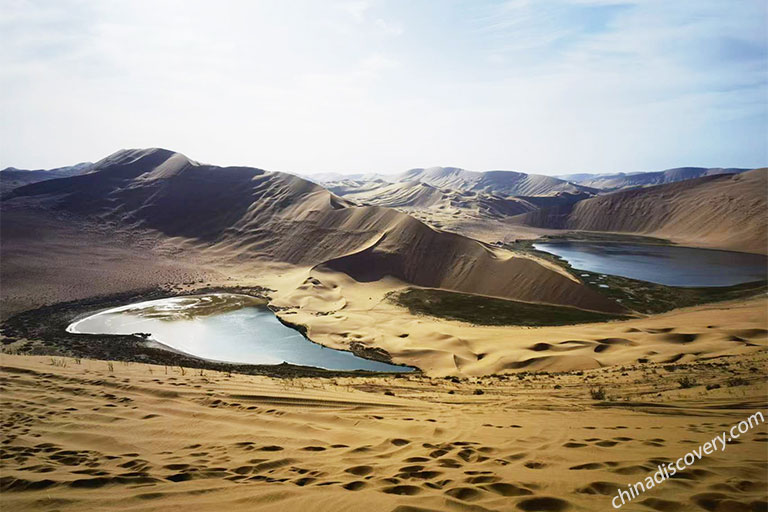
Xining - Zhangye - Badain Jaran Desert
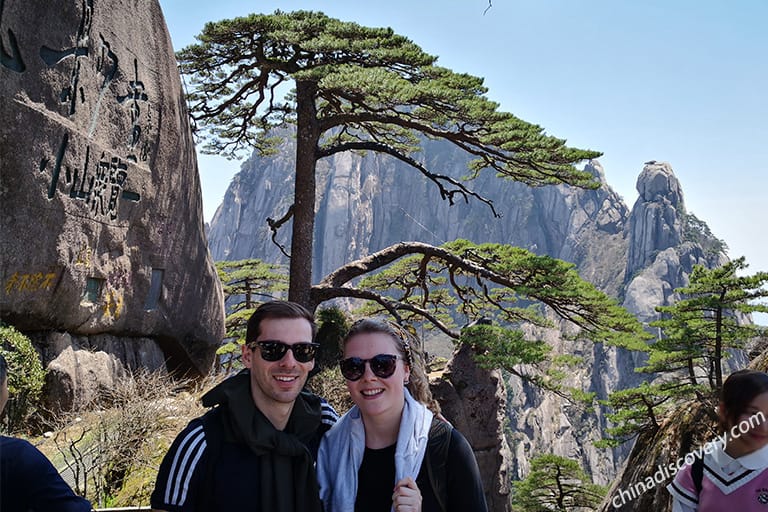
Shanghai / Suzhou / Hangzhou / Huangshan
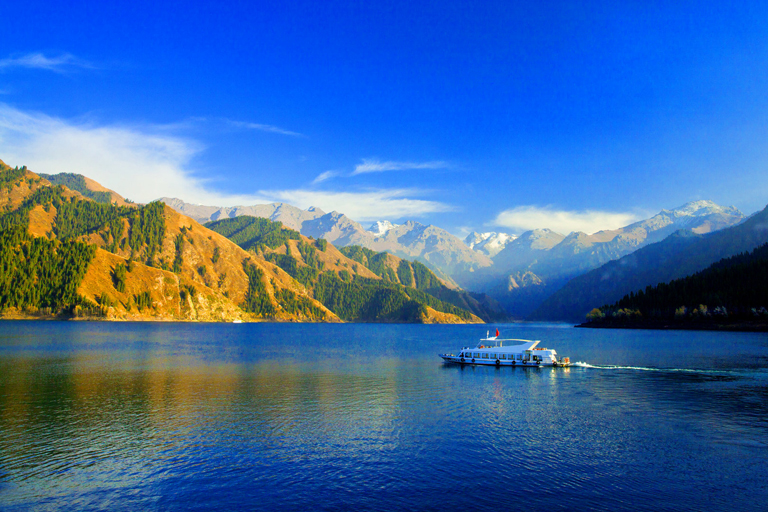
Lanzhou / Zhangye / Jiayuguan / Dunhuang / Turpan / Urumqi / Kashgar
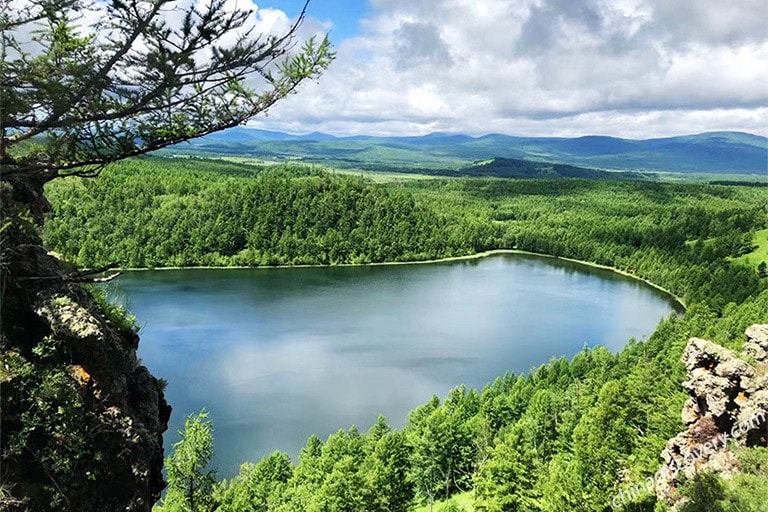
Hailar (Hulunbuir) - Erguna - Shiwei- Manzhouli - Arxan - Hailar (Hulunbuir)
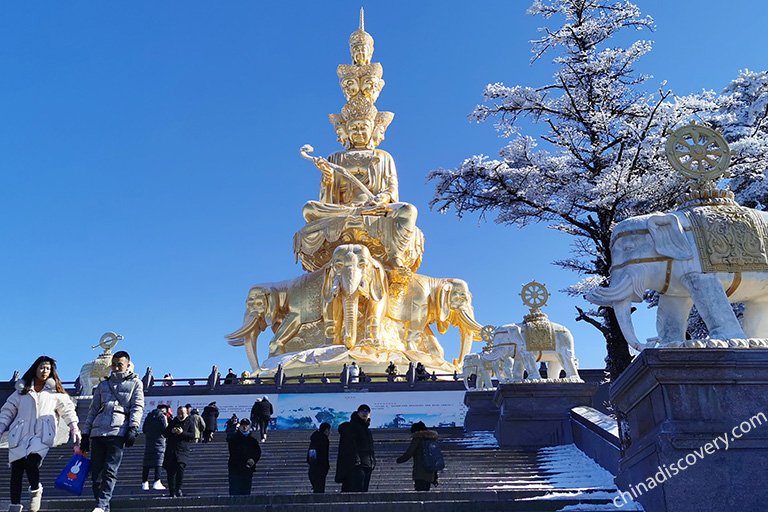
Chengdu / Leshan / Emei / Chengdu / Jiuzhaigou

Kunming / Stone Forest / Yuanyang / Jianshui / Kunming / Dali / Lijiang / Shangri-La
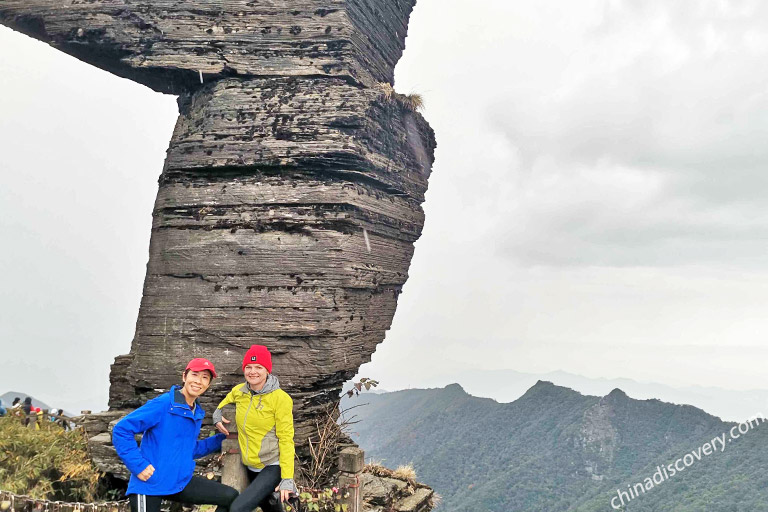
Guilin / Longsheng / Yangshuo / Zhaoxing / Kaili / Fanjingshan
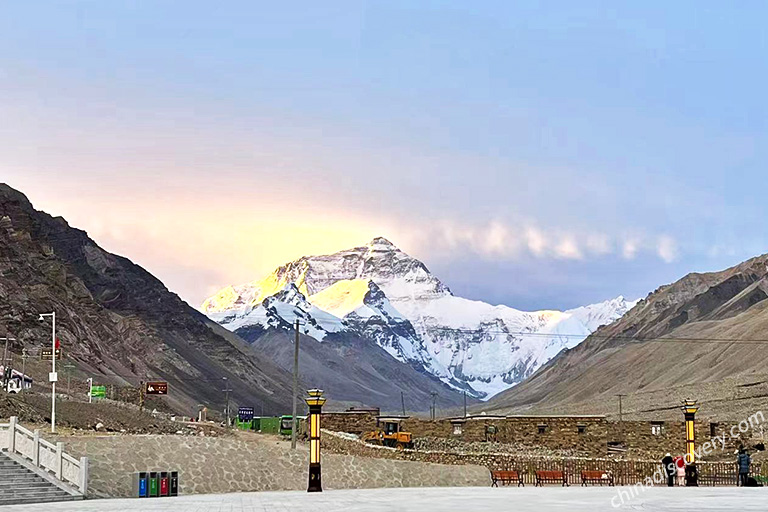
Lhasa / Gyangtse / Shigatse / Mt.Everest / Namtso Lake
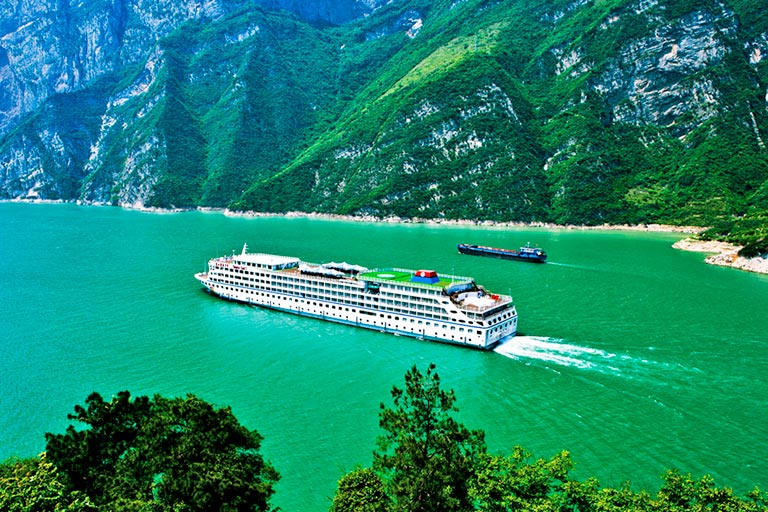
Shanghai / Guilin / Chongqing / Yangtze Cruise / Yichang / Zhangjiajie / Beijing
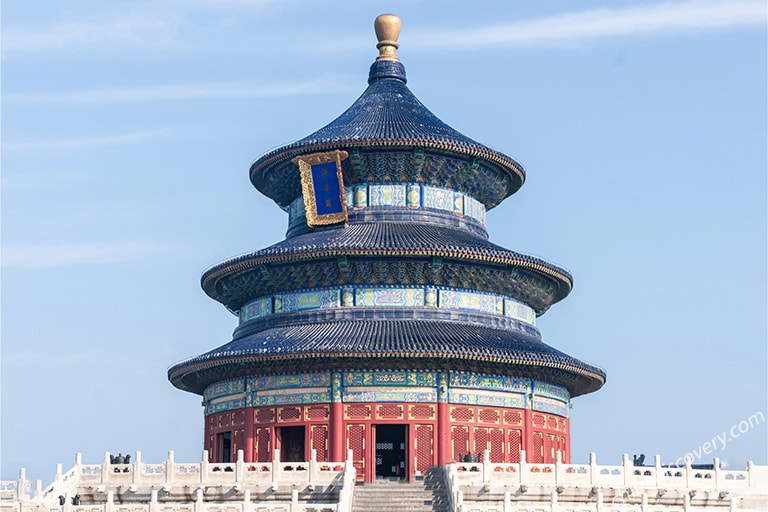
Shanghai / Xian / Beijing
.jpg)
Chengdu / Leshan / Emeishan / Xian / Beijing
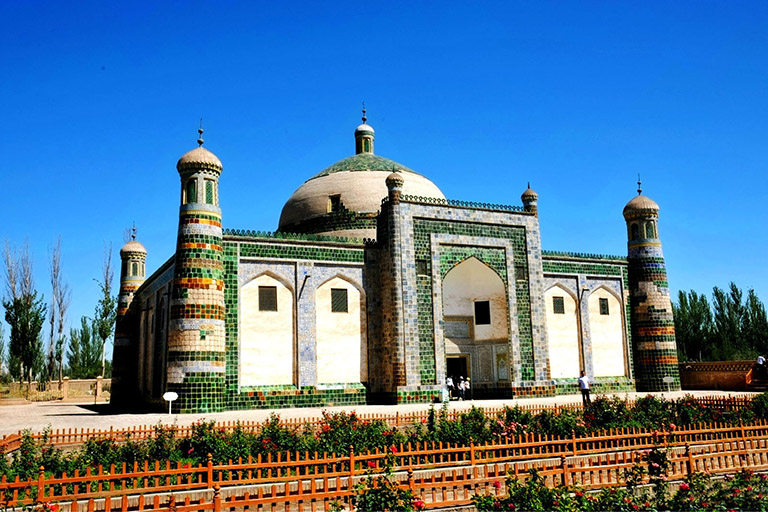
Xian / Dunhuang / Turpan / Urumqi / Kashgar
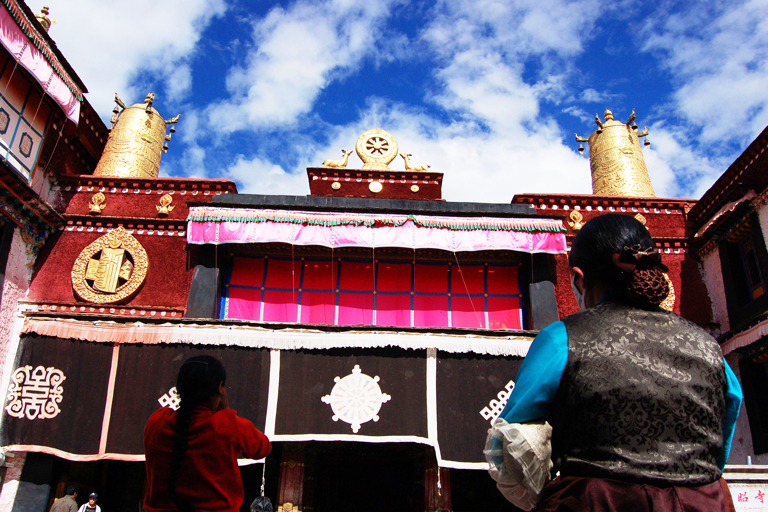
Beijing / Xian / Lhasa / Chengdu / Shanghai
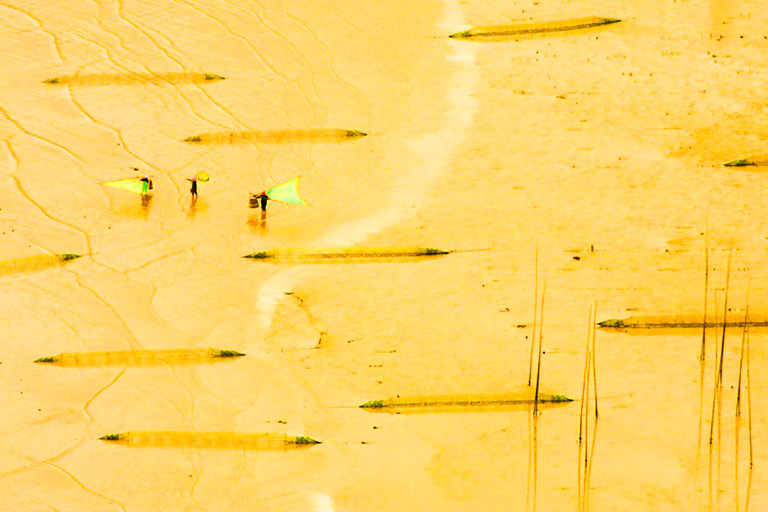
Shanghai / Hangzhou / Putuoshan / Xiapu / Xiamen / HK
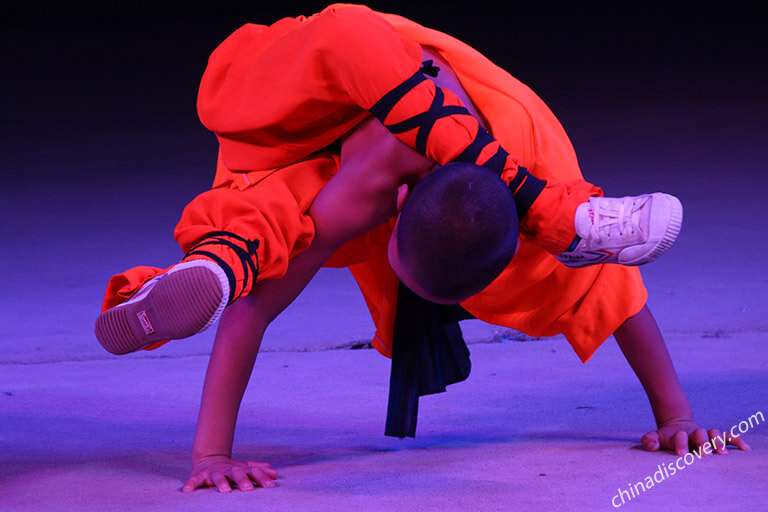
Beijing / Pingyao / Xian / Luoyang / Shanghai
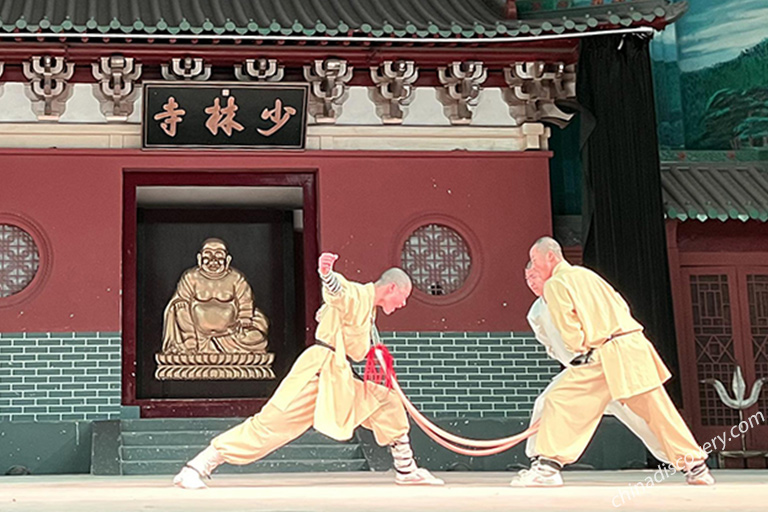
Beijing / Datong / Pingyao / Xian / Luoyang / Dengfeng / Zhengzhou

Beijing / Xian / Luoyang / Dengfeng / Zhengzhou / Shanghai

Beijing / Xian / Lhasa / Chengdu / Chongqing / Yangtze Cruise / Shanghai
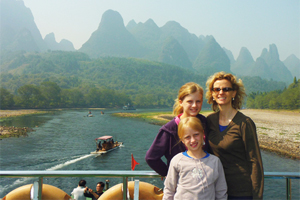
Beijing / Xian / Guilin / Shanghai
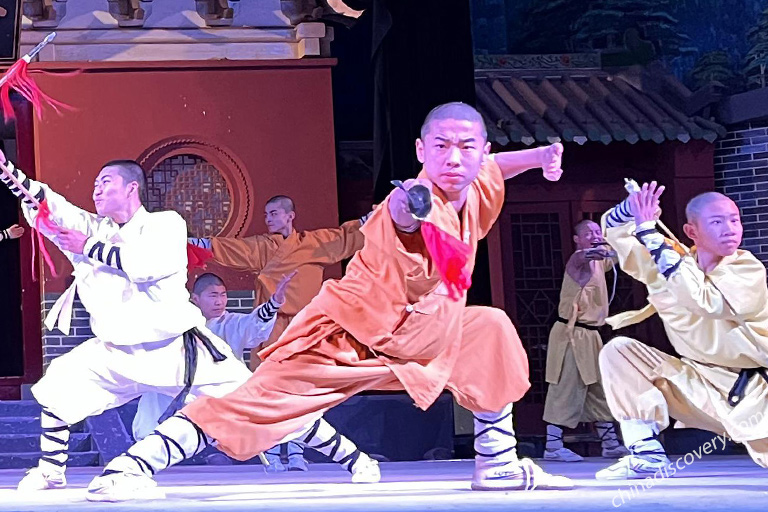
Beijing / Luoyang / Xian / Guilin / Shanghai

Beijing / Xian / Guilin / Yangtze River / Shanghai
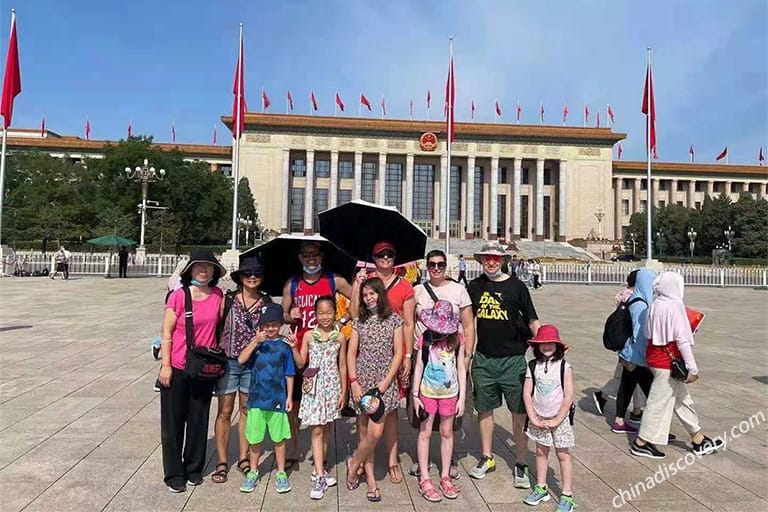
Beijing / Xian / Chengdu / Shanghai

Beijing / Chengdu / Yangtze Cruise / Shanghai
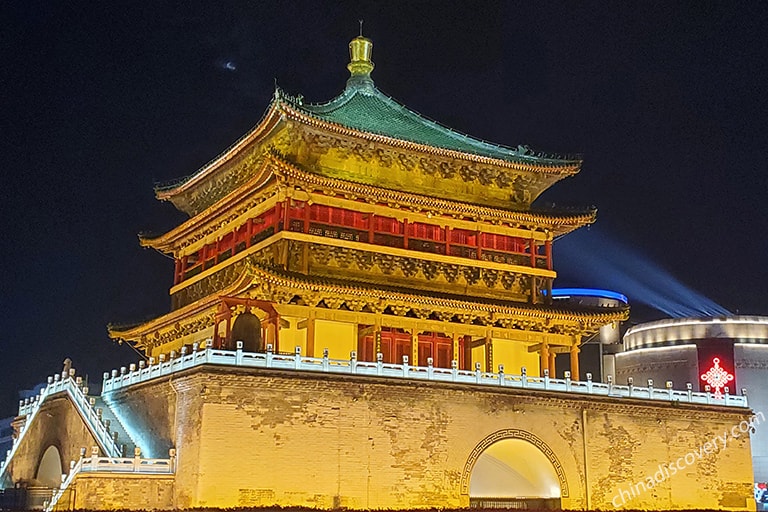
Beijing / Luoyang / Xian / Chengdu / Guilin / Shanghai
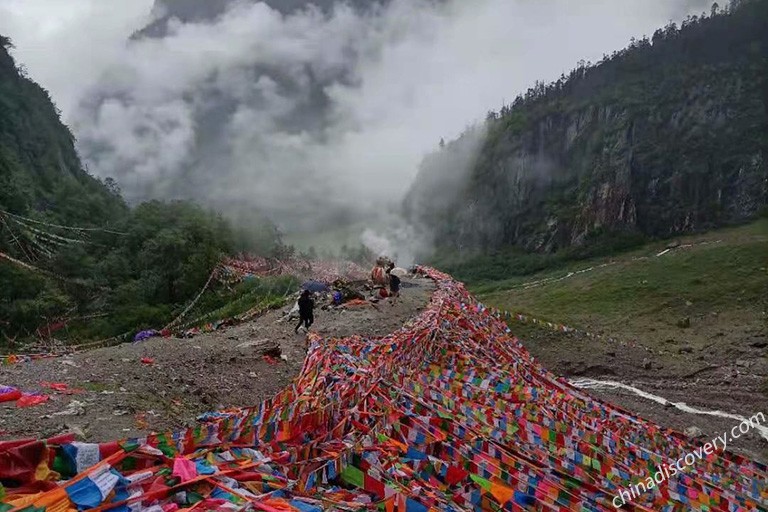
Shangri-La / Meili Snow Mountain / Yubeng / Shangri-La
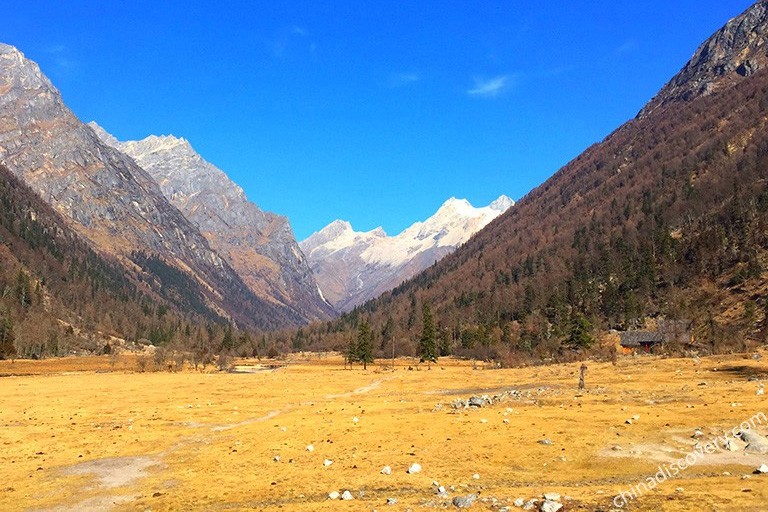
Chengdu / Mount Siguniang / Danba / Tagong / Xinduqiao / Leshan / Emei / Chengdu
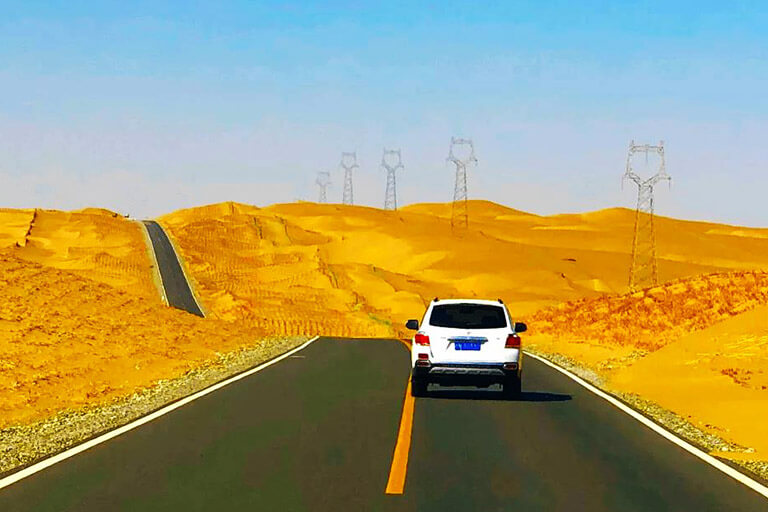
Kashgar / Karakul Lake / Hotan / Ala'er / Kucha / Urumqi
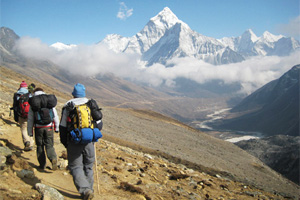
Lhasa / Gyantse / Shigatse / Everest
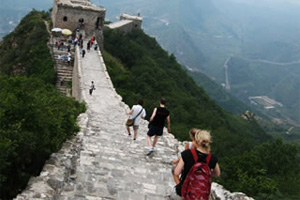
Shanghai / Kunming / Lijiang / Shangri la / Xian / Beijing
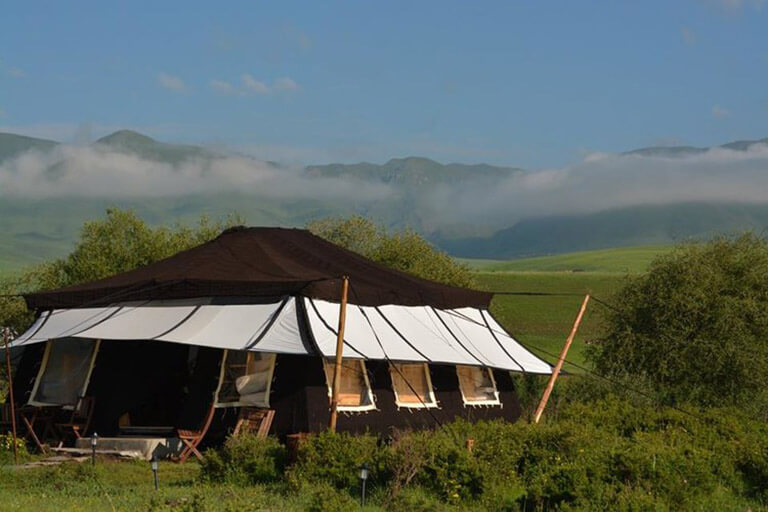
Lanzhou - Norden Camp - Lanzhou
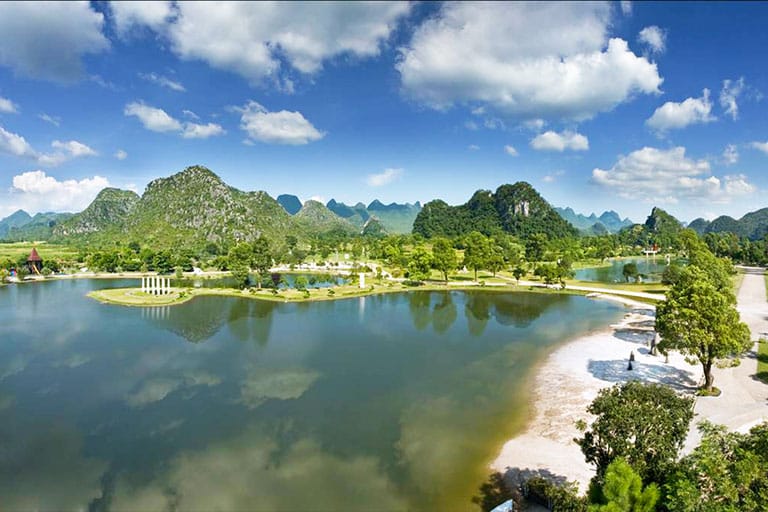
Guilin / Yangshuo / Guilin
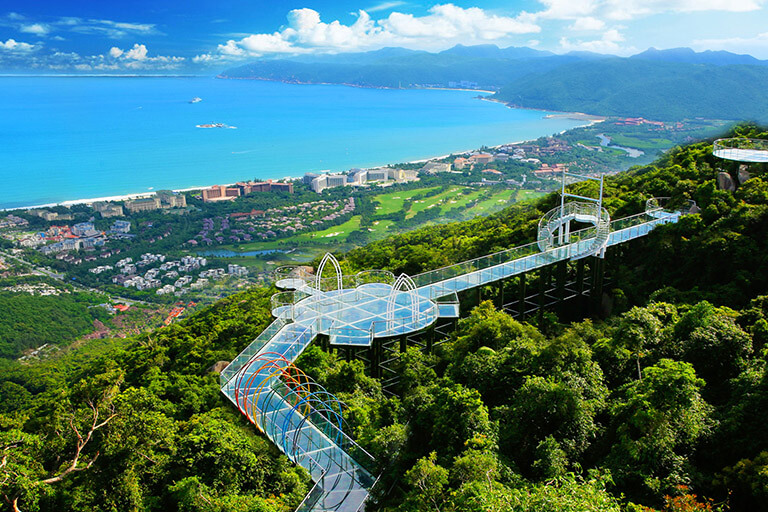
Lijiang / Shangri-La
China Tours Starting From Gateway Cities
For your convenience, we have created many valuable China tours which start from the most popular China gateway cities, such as Beijing, Shanghai, Hong Kong, Chengdu, Guangzhou, etc. Here are the most recommended tour packages:
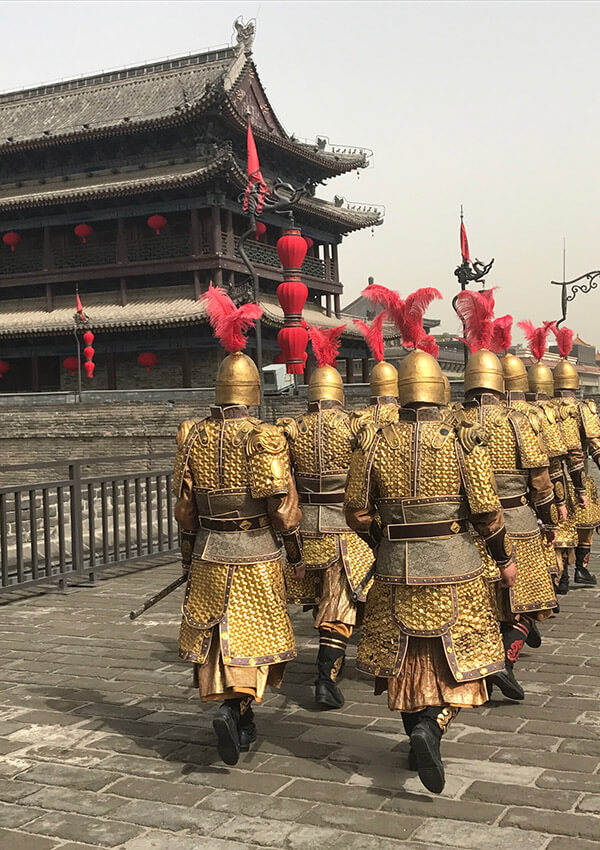
Find China Tours By Month
There is always a tour for you no matter when you come to China. To help find your idea China trip, we have selected some recommended tours for each month.
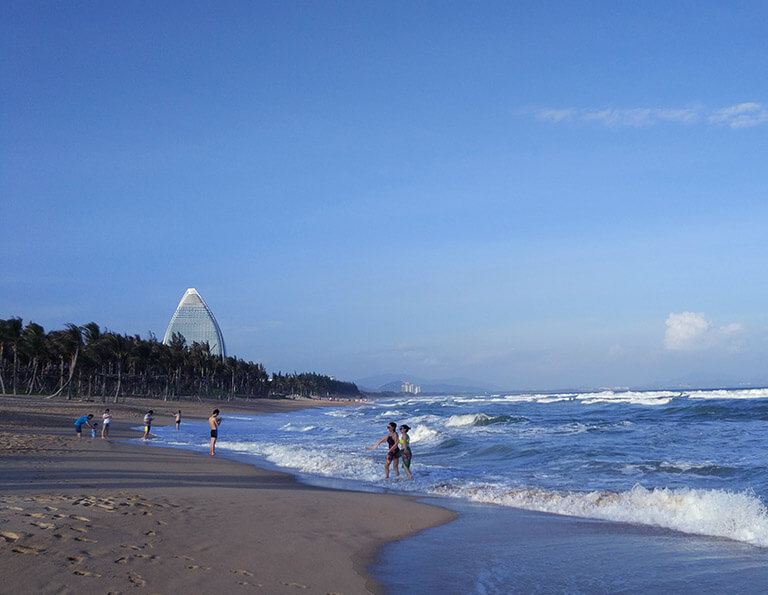
6 Days In-depth Luxury Sanya Tour with Two Free Days
Price from Request
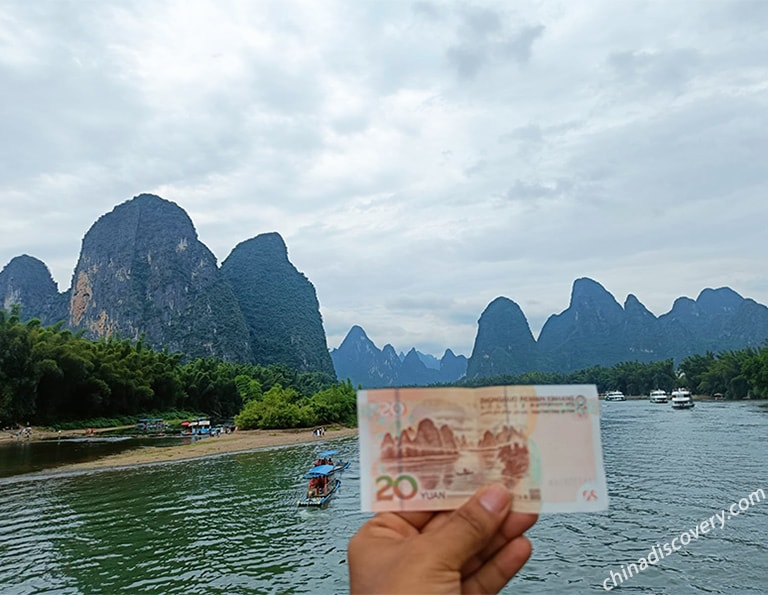
10 Days Most Classic China Tour
Beijing / Xian / Guilin / Yangshuo / Shanghai
Price from $1,999

17 Days China Paradise Tour with Yangtze River Cruise
Price from $3,499
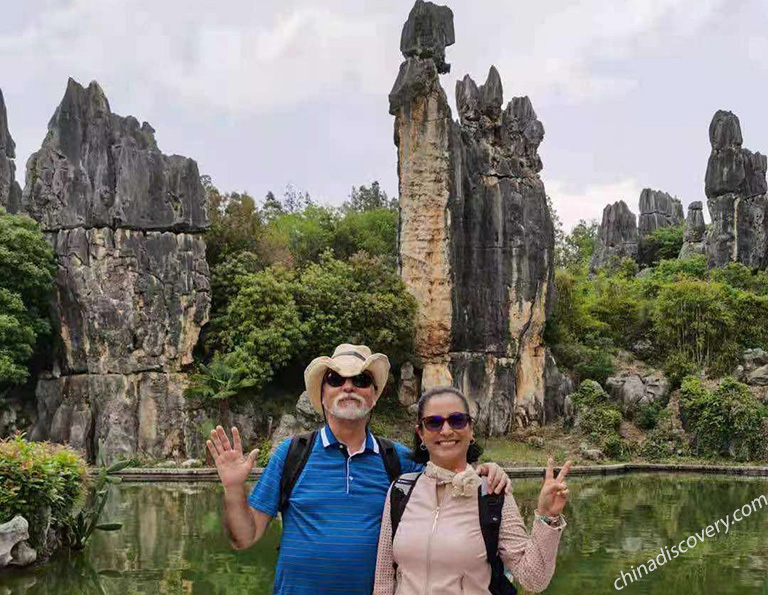
6 Days Kunming, Dali & Lijiang Essence Tour
Price from $972
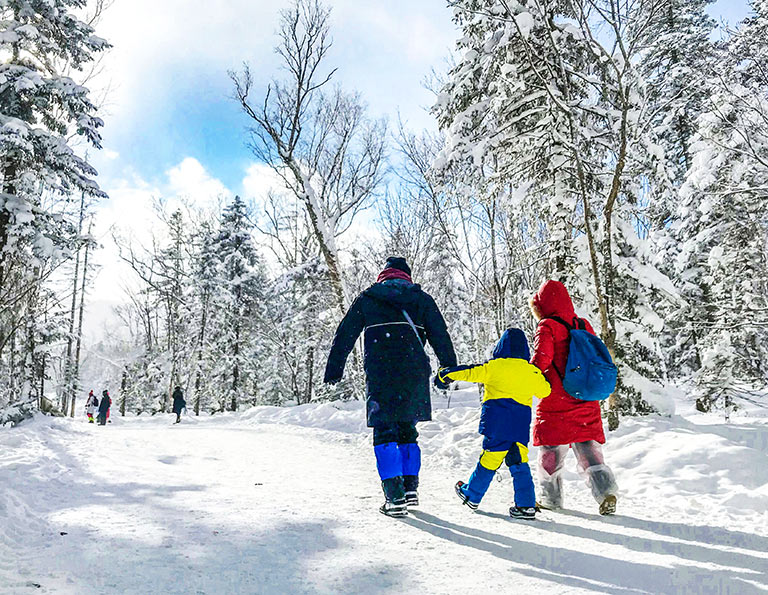
6 Days Harbin Tour with China Snow Town & Yabuli Skiing
Harbin / China Snow Town / Yabuli Ski Resort / Harbin
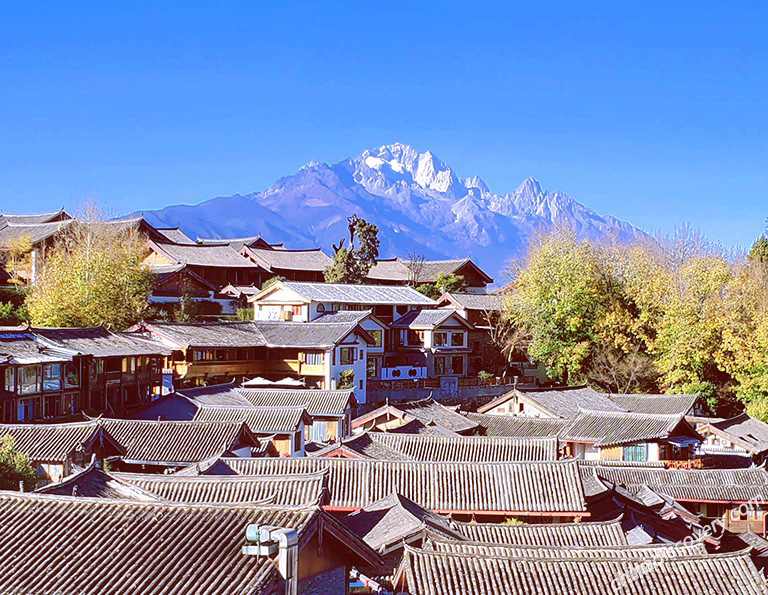
14 Days Wild China Tours from Shanghai to Yunnan on Expresses
Shanghai / Zhangjiajie / Kaili / Kunming / Lijiang / Shangri-la / Kunming
Price from $2,758
.jpg)
9 Days Pandas Terracotta Warriors Plus Great Wall Tour
Price from $1,529
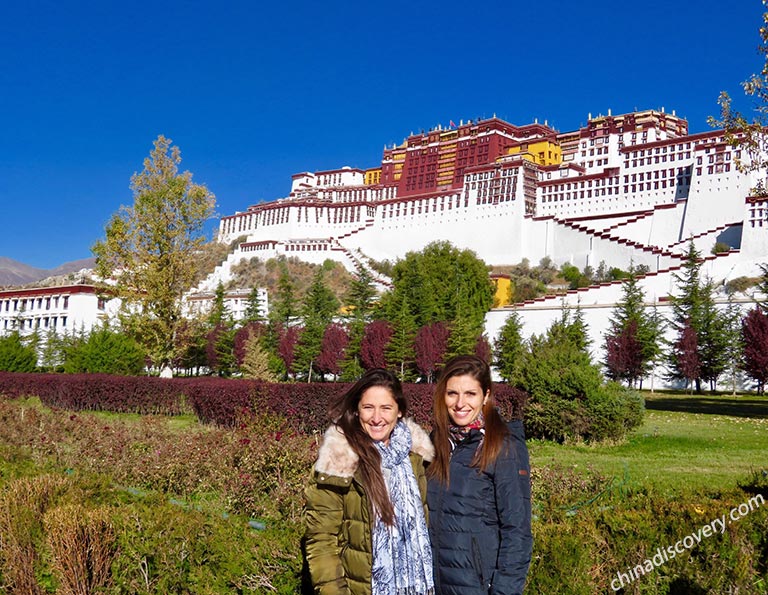
10 Days Classic Beijing Xian Lhasa Tour
Beijing / Xian / Lhasa
Price from $1524

11 Days Amazing Yunnan Tour
Price from $1859
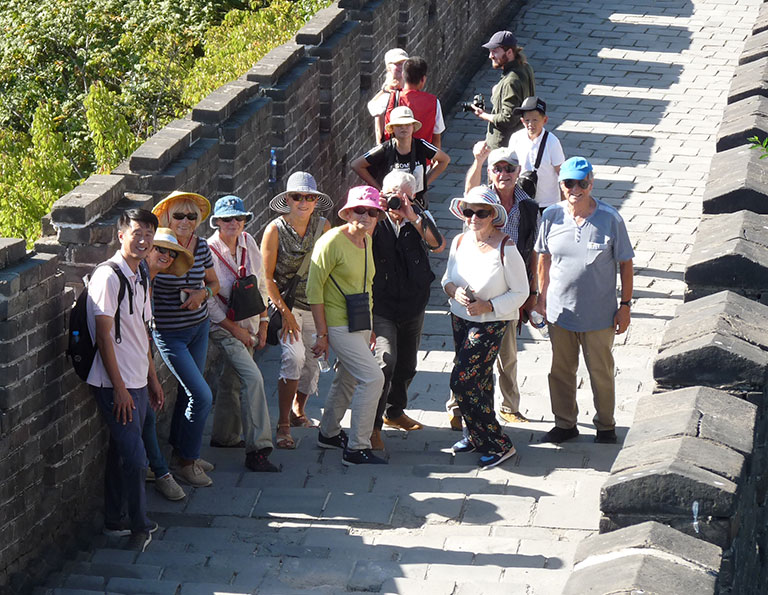
6 Days Classic Beijing Xian Tour
Price from $850
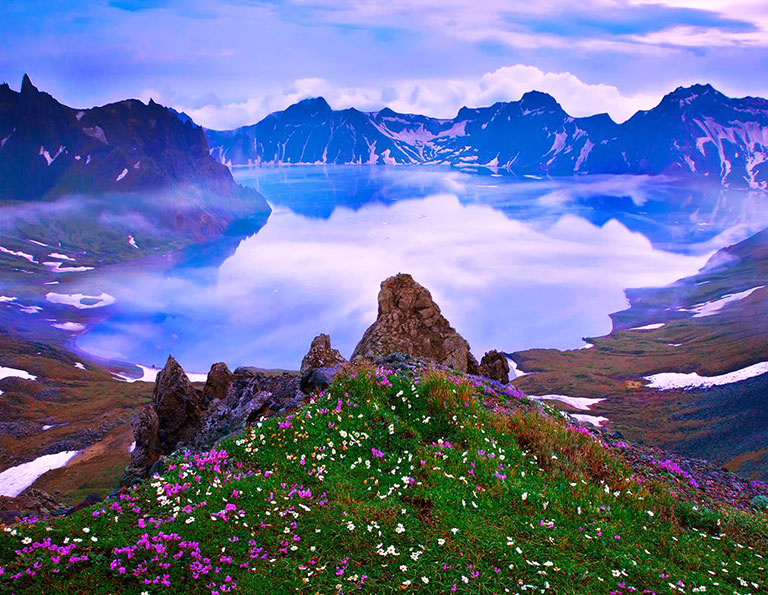
6 Days Harbin, China Snow Town & Changbai Mountain Tour
Harbin / China Snow Town / Changbai Mountain
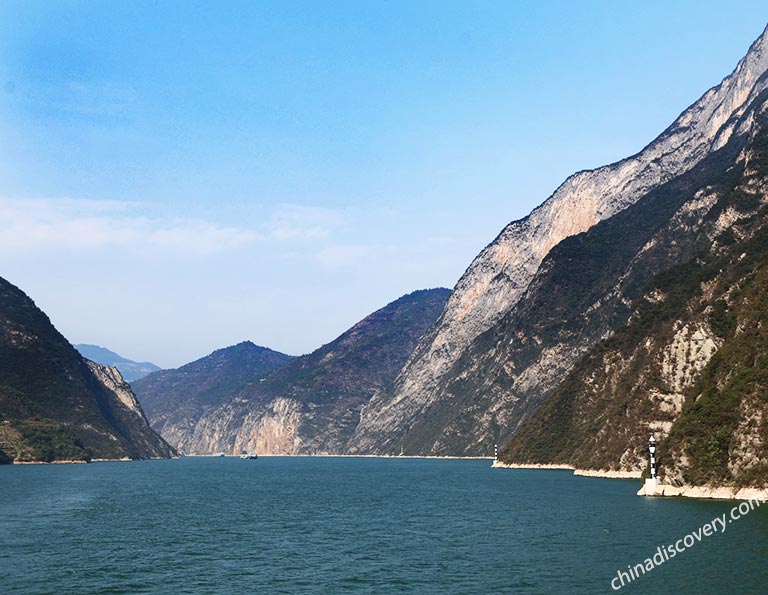
13 Days Best China Vacation
Price from $2,478
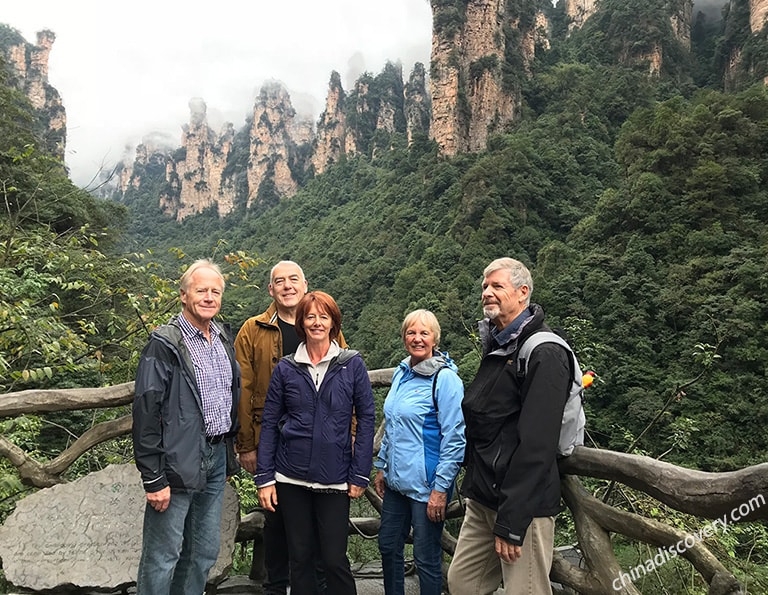
13 Days China Superb Landscape Tour including Zhangjiajie
Beijing / Xian / Zhangjiajie / Guilin / Shanghai
Price from $2,695

12 Days Wonders of China Tour (Flights + Comfortable Hotels)
Beijing / Xian / Guilin / Zhangjiajie / Shanghai
Price from $2375
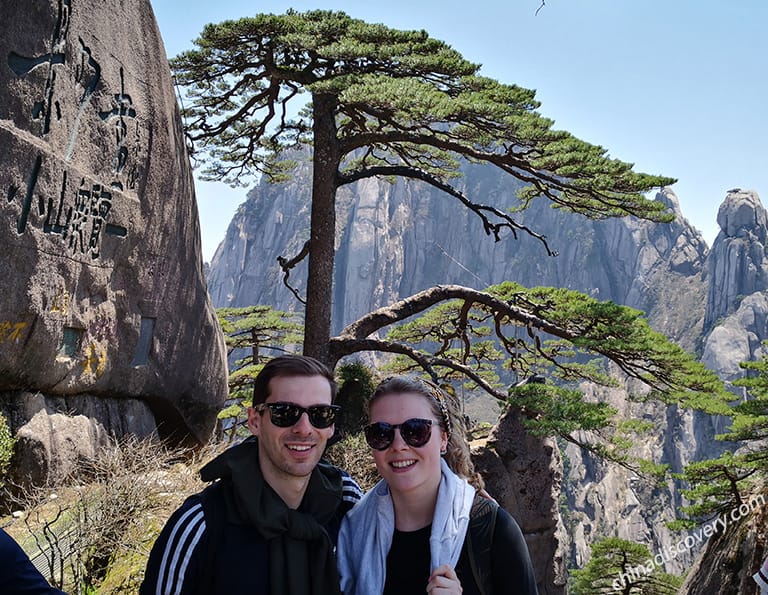
9 Days East China & Huangshan Mountain Tour
Price from $1,572
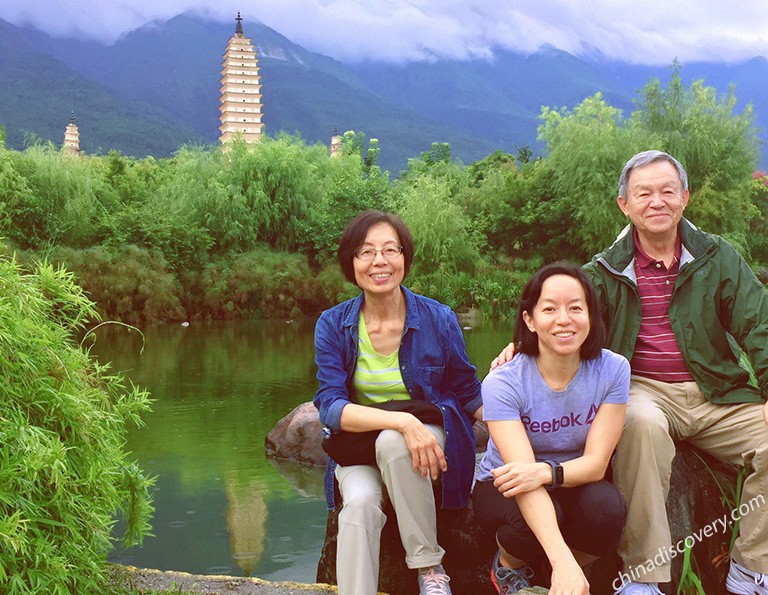
8 Days Classic Yunnan Tour
Price from $1,318
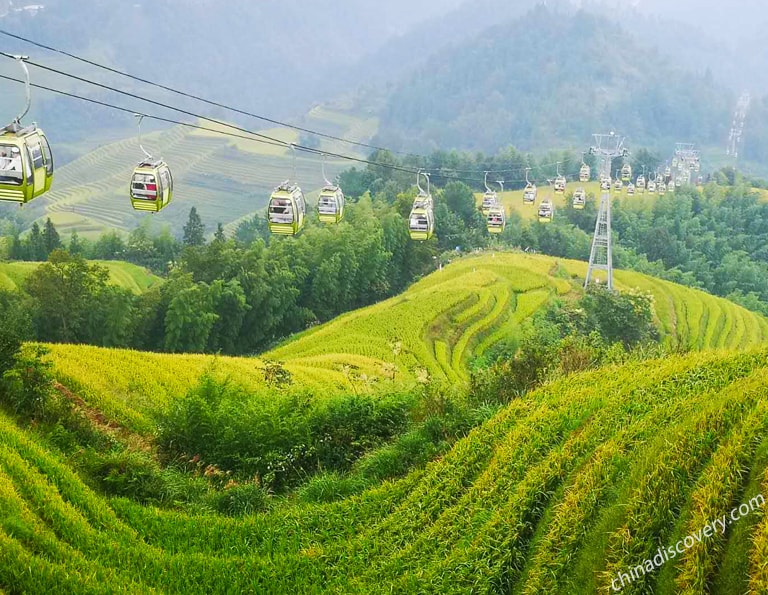
9 Days Guilin Guizhou Minority Culture and Landscape Exploration by High Speed Train
Guangzhou / Guilin / Yangshuo / Longji / Zhaoxing / Rongjiang / Kaili
Price from $1531
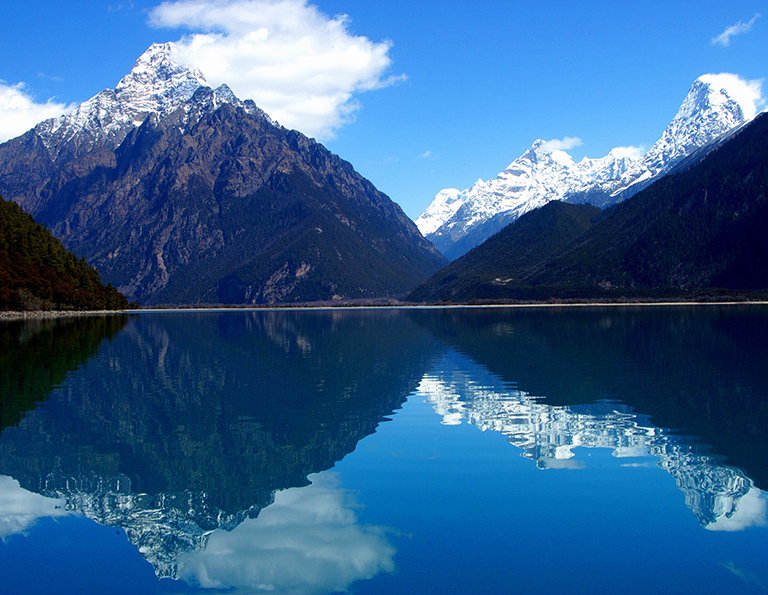
7 Days Scenic Tibet Private Tour
Lhasa / Nyingchi
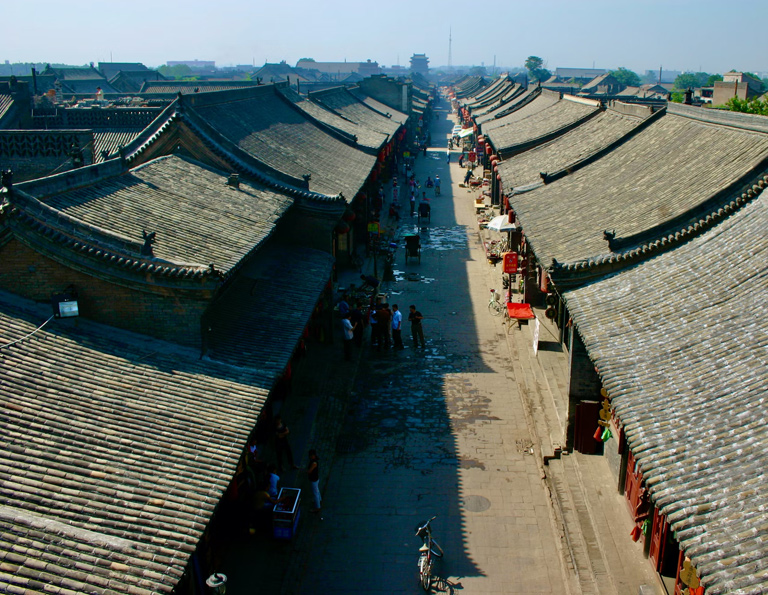
9 Days Ancient Treasures of China Tour
Beijing / Datong / Pingyao / Xian
Price from $1,388
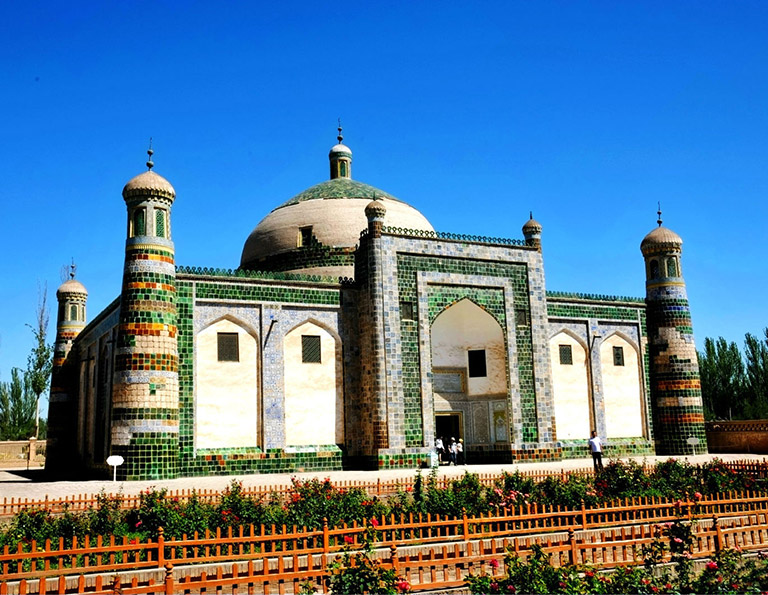
10 Days Classic Silk Road Tour
Price from $2,566
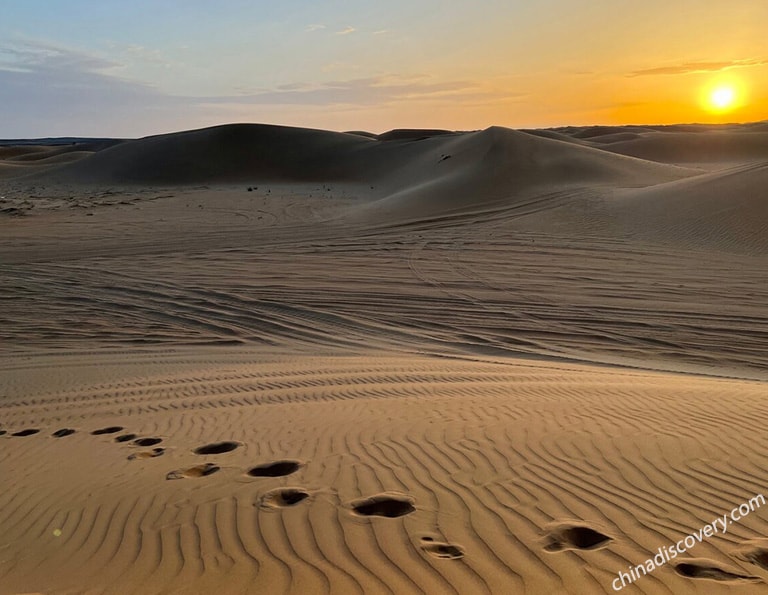
6 Days Inner Mongolia Bests Discovery Tour
Hohhot / Ulanqab / Huitengxile Grassland / Hohhot / Baotou / Yemingsha of Kubuqi Desert / Ordos
Price from $975
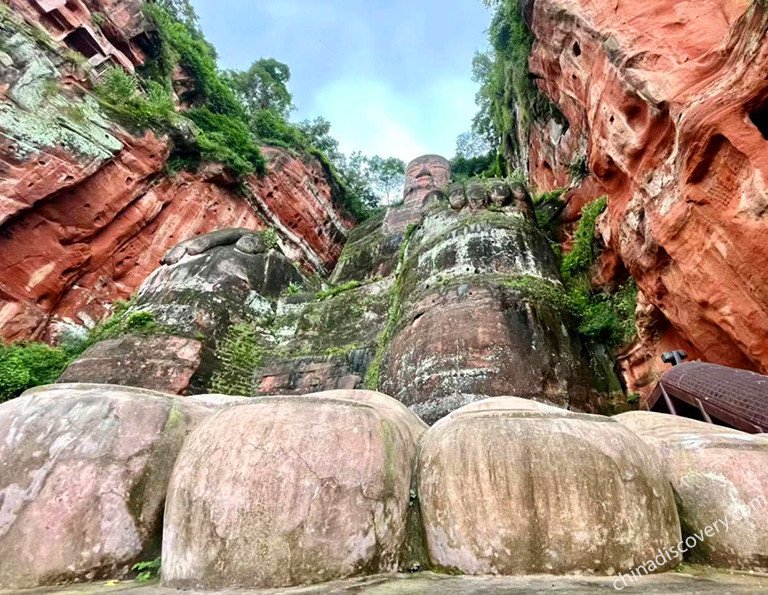
10 Days Classic Sichuan & Yunnan Highlights Tour
Chengdu / Leshan / Mount Emei / Lijiang / Shangri-La / Kunming
Price from $1757
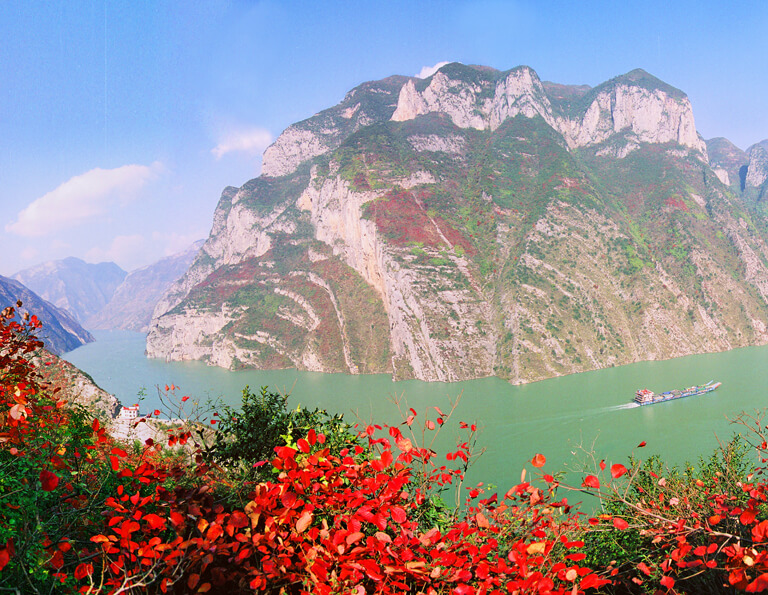
12 Days Shanghai Yangtze Cruise Xian Beijing China Tour
Price from $2,132
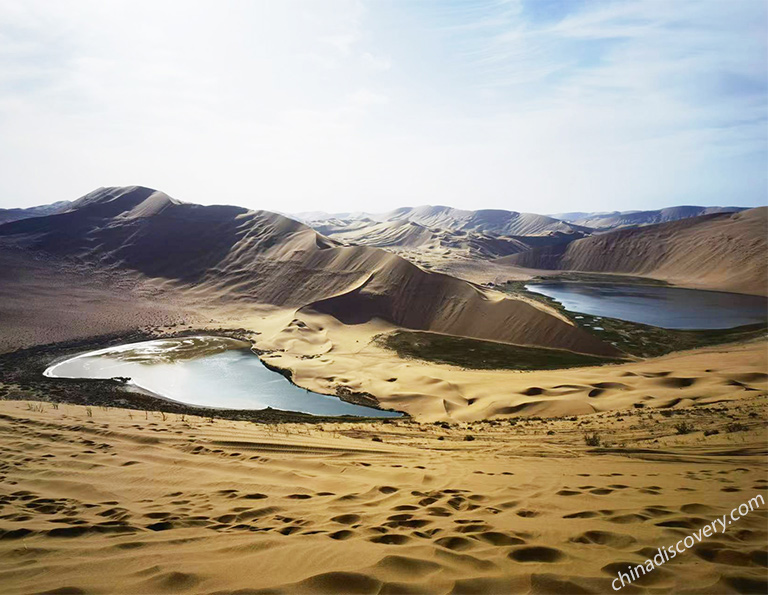
8 Days Zhangye Danxia and Badain Jaran Desert Tour
Price from $1657
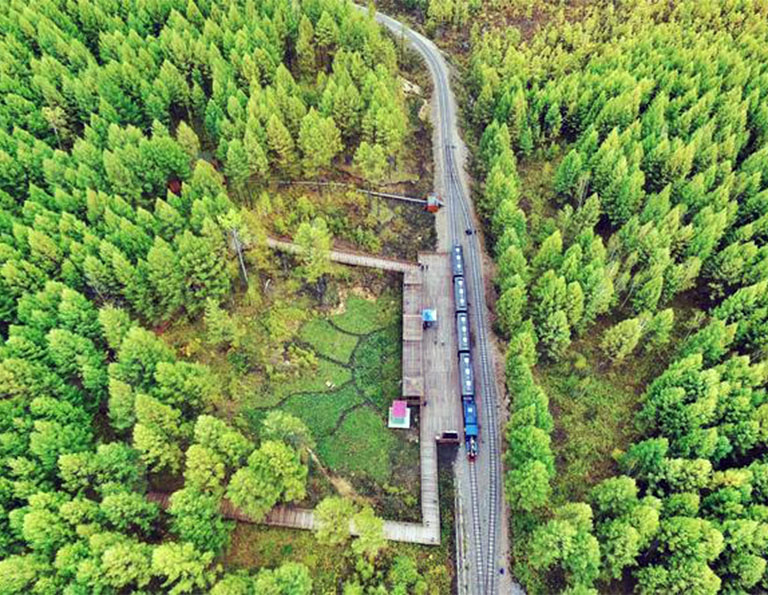
6 Days Hulunbuir & Greater Khingan Highlights Tour
Hailar / Hulunbuir Grassland / Erguna / Greater Khingan Range/ Shiwei / Heishantou / Hailar

14 Days Best China Zhangjiajie Landscape Tour with Yangtze Cruise
Price from $2439
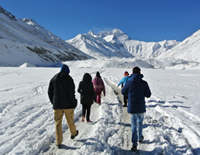
8 Days Classic Mount Everest Tour from Lhasa
Lhasa / Gyantse / Shigatse/ Everest
Price from $1,589
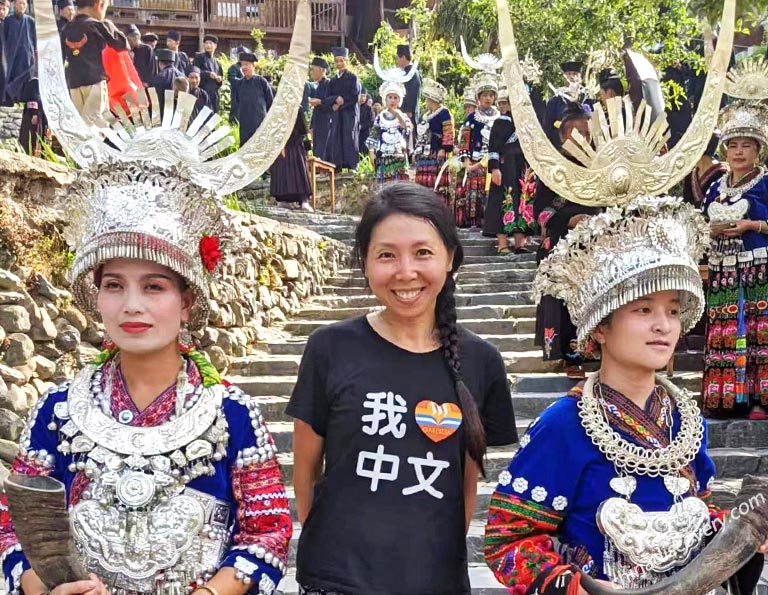
6 Days Diverse Guizhou Tour (Guiyang / Kaili / Fanjingshan)
Guiyang / Anshun / Kaili / Fanjingshan
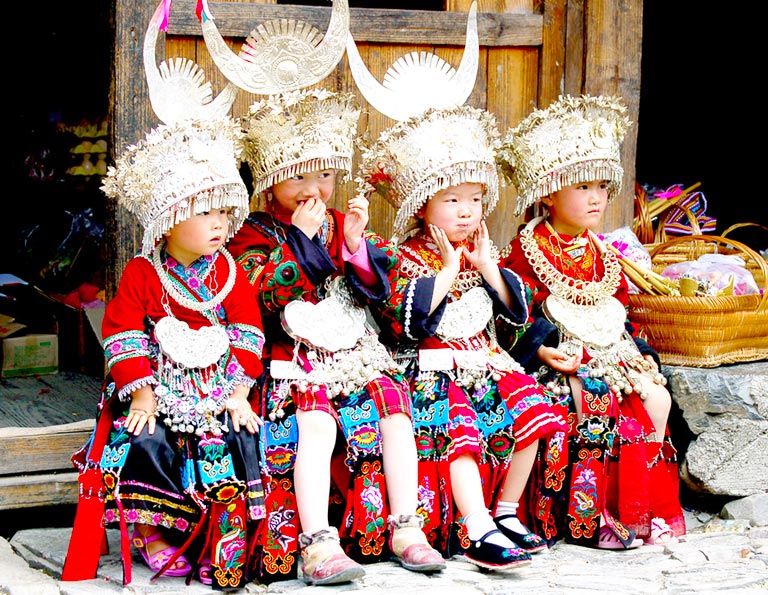
10 Days Yunnan & Guizhou Amazing Minorities Tour
Kunming / Lijiang / Shangri-La / Kunming / Fanjingshan / Kaili / Zhaoxing / Congjiang
Price from $1667
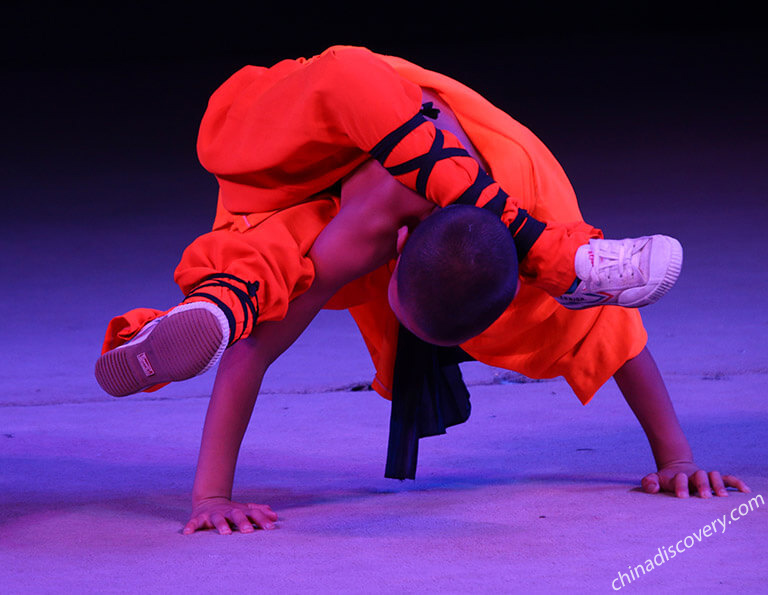
11 Days Essence of China Culture Tour by Bullet Trains
Price from $1,984
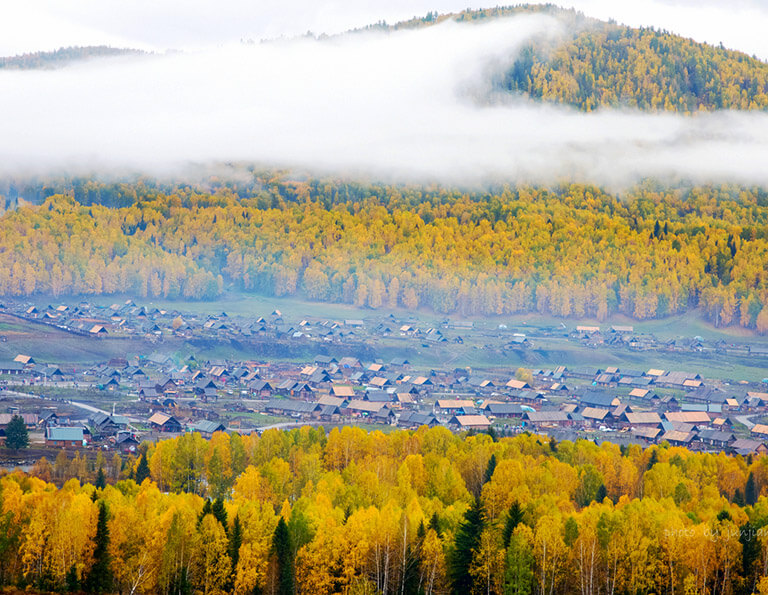
9 Days Kanas Lake Fairyland Tour from Urumqi
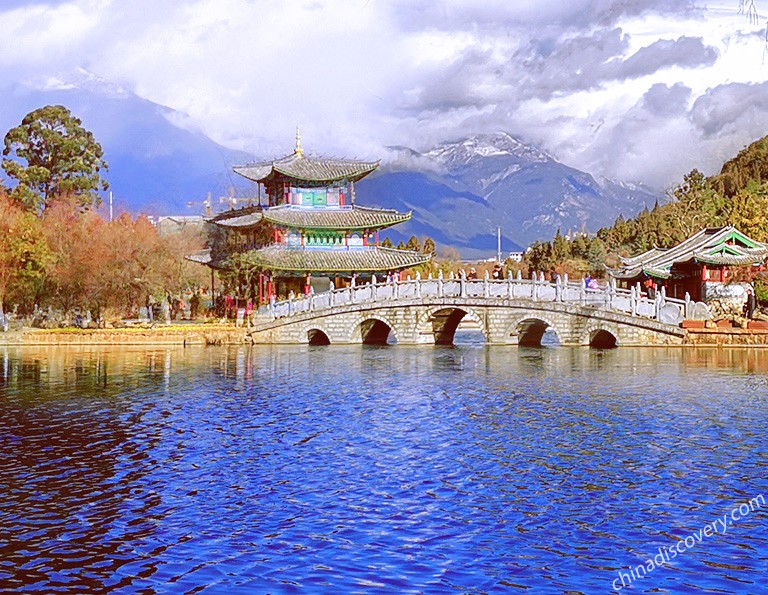
6 Days Best of Yunnan Tour
Lijiang / Shangri-La / Kunming
Price from $1,035
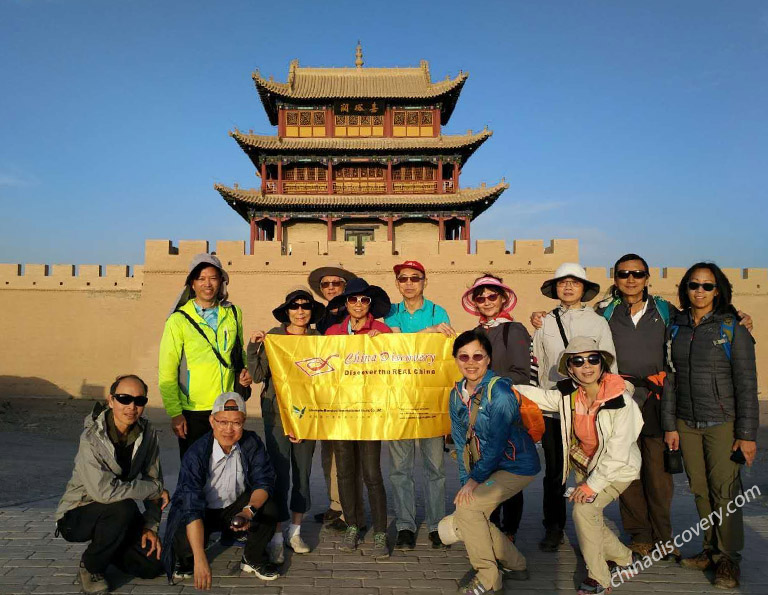
6 Days Zhangye Jiayuguan Dunhuang Tour
Lanzhou - Zhangye - Jiayuguan - Dunhuang
Price from $946
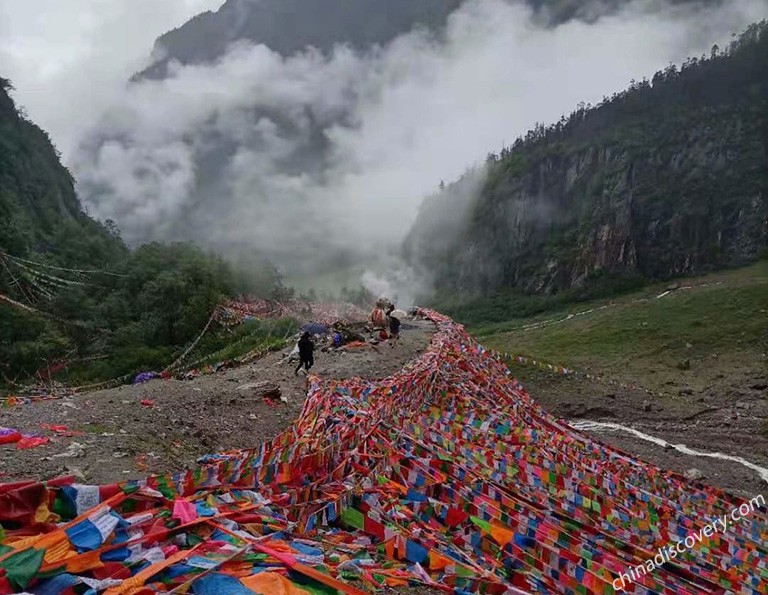
7 Days Shangri-La Tour with Meili Snow Mountain & Yubeng Village Hiking
Price from $1033
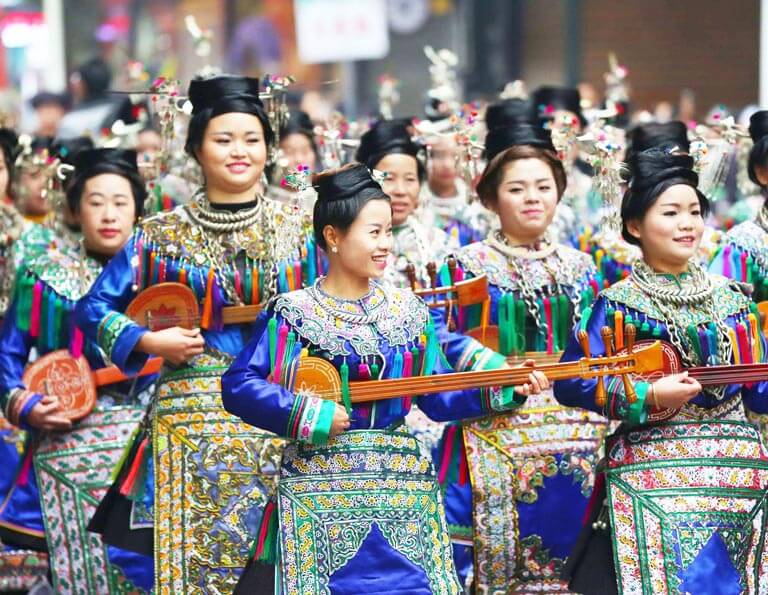
7 Days Best of Guizhou Tour with Nature & Culture
Guiyang / Anshun / Libo / Kaili / Congjiang / Zhaoxing
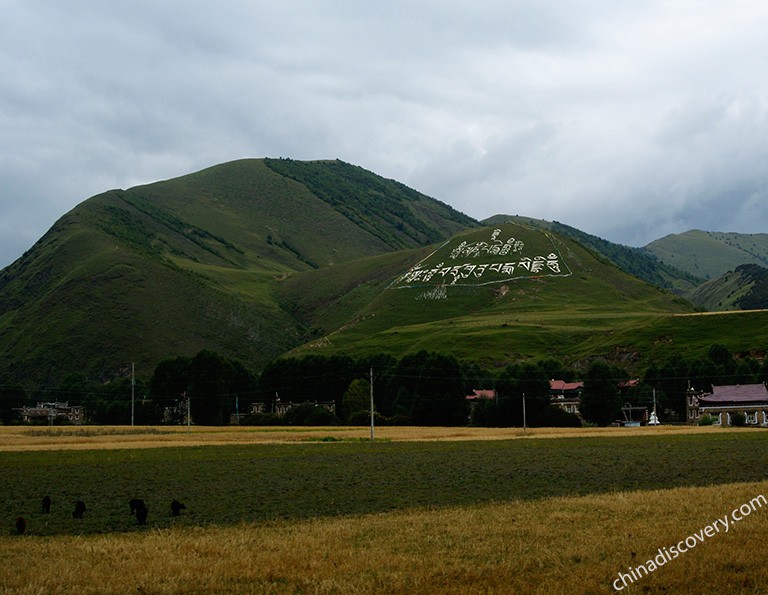
6 Days Western Sichuan Autumn Sightseeing Tour
Price from $1038
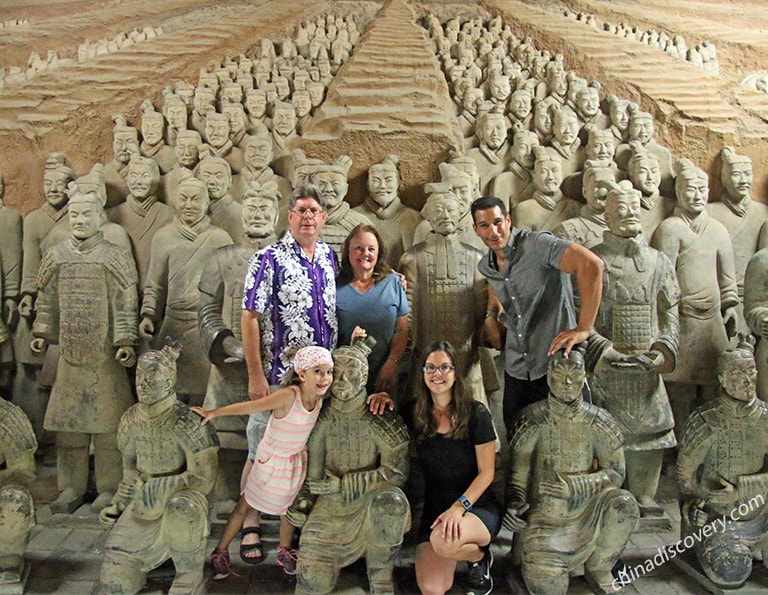
8 Days Best of China Tour (Flight/Bullet Train Covered)
Price from $1,432
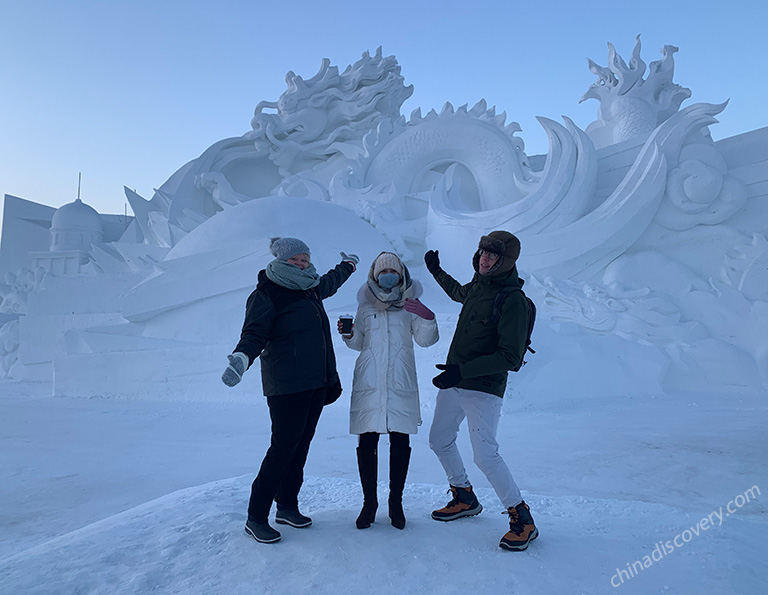
3 Days Classic Harbin Winter Tour
Frequent question asked by our clients.
Here we list out the most frequently asked questions that our former customers about tour planning, travel documents, itinerary, hotel, booking, dinning. You are also welcomed to submit your question to us, our travel experts are always ready to help. Read more tips »
All our tours are private tour packages except for some programs operated by our partners, such as Yangtze Cruise, Tibet Group Tour, etc. Private tour package means high standard of tour services and more flexibility. Travel with our tour package, you will have your own tour guide and vehicle who only serve for you. Besides, itinerary, hotels, meals and tour activities can all be customized according to your personal need. And for sure, all above services are covered in your tour price, which means you don’t have to worry about extra payment or hidden costs. While providing you the best tour service, we also ensure our tours are valuable and affordable for you.
Where to go? For the first-timer China tour, you can go to classic destinations, such as Beijing, Xian, Shanghai, Guilin, Zhangjiajie, Yangtze River, Tibet, etc. To add some different experience, you can travel classic destinations with some other unique destinations. For Nature Enjoyment : Yunnan, Tibet, Sichuan, Gansu, Guizhou, Huangshan, Inner Mongolia, Yangtze River; For Culture Exploration : Beijing, Xian, Shanghai, Tibet, Xinjiang, Guangzhou, Hangzhou, Pingyao, Luoyang, Hangzhou, Suzhou, Xiamen, etc. For Family with Kids : Shanghai, Beijing, Xian, Chengdu, Hangzhou, Suzhou, Xiamen, Guangzhou, Shenzhen, etc. For Adventure : Sichuan, Gansu, Xinjiang, Tibet, Yunnan, etc.
When to go? Since China is so large and diverse, you can always find suitable destinations to visit in each season, or each month. In the big metropolis, such as Beijing, Xian, Shanghai, Hong Kong and Chengdu, the season doesn't matter as much as visiting natural destinations, because their best highlights are all conveniently located in or near the city downtown, and it is always very easy to book flights, trains and hotels. But some destinations are only recommended to be visited in specific seasons. Generally speaking, autumn is the best season to travel China when the weather is pleasant and scenery is finest. To avoid the crowds, you can avoid traveling during the festivals, such as National Holiday, Middle Autumn Festival, etc.
Unless you are qualified for Visa-free policies, such as long-term residential visa, transit visa free, or you are from specific countries, you are required to have a Tourist Visa (L Visa) for your China tour. You can apply for Chinese visa in Chinese embassies or consulates in your country. To successfully obtain a Chinese Visa, applicants need to prepare some materials to prove his/her legal identity and purpose of visiting. The most important requirements are basic documents, including your passport and a completed visa application form. And supporting documents relate to your itinerary like flight ticket and hotel booking record and visiting schedule and Invitation Letter, etc. are also very helpful.
Making a booking with us is quite simple: 1) Send an Inquiry; 2) Get a tour package with quotation from us; 3) Amend the tour according to your requirement; 4) You confirm the tour and pay a deposit; 5) Pay the balance; 6) Enjoy your tour.
You can make payment either by Wechat Pay, Alipay, or Bank Transfer, PayPal, even cash. Your travel consultant will instruct you to complete the payment.
If you must cancel your trip, please submit your cancellation in written form by email or fax with your signature as early as possible. The final refund amount depends on when we receive your cancellation notice or letter, and actual expense, such as hotel booking, tickets reservation, etc. Your travel consultant will help you with the detailed process.
It depends on your group size and budget. We have sedan car, SUV, business van (MPV), different types of buses available. No matter where you are going to visit, your vehicle is licensed, air conditioned, clean, and expertly maintained. To maximize your comfort, we use vehicles with extra space for you and your luggage.
In each destination, you’ll stay in a comfortable hotel with great location! We only use hotel with good-ratings, great locations, well-equipped facilities, cozy bed, high quality service and guests’ feedbacks. Choices are a lot ranging from luxury 5 star, comfortable 4 star to budget 3 star. You could decide where to stay to best suit for your budget and likes. Generally, the hotels have both Western and Chinese breakfast with a wide choices. If you have already got an ideal hotel, please feel free to tell our travel consultants and they'll book the hotel for you.
Ask A Question
86-28-85227275 / 86-28-85223685
Start planning your tailor-made holiday to China by contacting one of our specialists. Once enquired, you’ll get a response within 0.5~23.5 hours.

- Affordable and valuable price
- 100% tailor-made packages
- Highly rated customers reviews
- Efficient customer support
China Tours
- Top 10 China Tours
- Classic China Tours
- China Tours from Beijing
- China Tours from Shanghai
- China Tours from Hong Kong
- China Tours from Chengdu
- Short China Trips
- China Panda Tours
- Family Tour with Kids
- High-Speed Train Tour
- Silk Road Travel
- Yangtze River Cruise
- Hiking & Trekking Tours
- Photography Tours
- China Minority Travel
- Beijing Shanghai Tours
- Shanghai Yangtze Tours
- Chengdu Jiuzhaigou Tours
- Chengdu Lhasa Tours
- Suzhou Hangzhou Tours
- Guilin & Yangshuo
“Very good experience”
“WONDERFUL 25 DAYS IN CHINA - PRIVATE TOUR”
“Awesome China tour from northeast to southwest”
Any questions, please email us at: [email protected] or call us at: 86-19138970032 (Monday-Friday 9 a.m. to 6 p.m. GMT+8)
- Terms & Condition
- Privacy Policy
- Customer Support
Copyright © 2011-2024. All rights reserved.
Cookie policy
We use cookies to give you the best experience on our website. Continue using our website means you agree with our cookie policy. For more info, please read here .
- Privacy Policy

- Disclosure Policy
- Travel Tips
- 109 Genius Travel Hacks
- Teach Abroad
- Work With Us
Asia Guides
The best backpacking china itinerary for first-timers.
China is a captivating country that has plenty to offer; from hiking in the Avatar Mountains to awing at cute pandas. The variety of activities China has to offer makes it essential for every traveller to go backpacking China at least once in their lifetime! Here we have put together the perfect backpacking China itinerary. This itinerary takes 3 weeks to complete, but you can easily take your time and spend an entire 30 days in China.
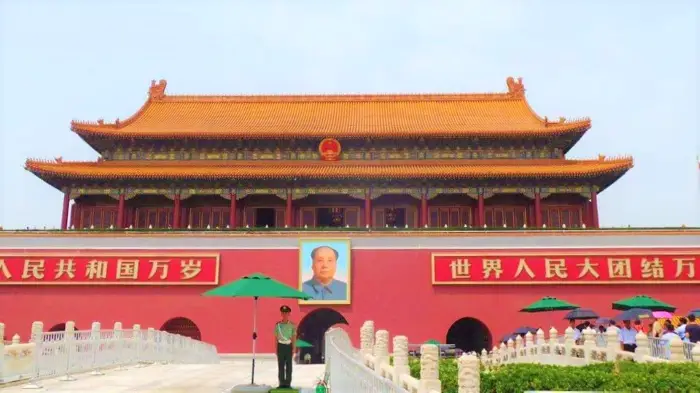
Disclosure: Untold Wanderlust contains affiliate links. If you click on these links and make a purchase, we will earn a small commission at no extra cost to you. You can find our full disclosure policy and privacy policy here.
Getting to China
Before going to China, make sure to have your visas ready and stamped into your passport! Citizens of Singapore, Brunei, and Japan or the only people who are granted visa-free access for 15 days. China can be reached both overland and by flight.
Macau to Guangzhou
If you’re starting your backpacking China journey overland, you can take a bus directly from Macau to the neighbouring port city of Guangzhou. In Macau, there are free buses from the big hotels and casinos that run directly to the border. Once you have stamped out of Macau and into China, you will exit into a shopping mall. Go down the escalators and go ahead straight towards the tourist information desk. The ticket booth is down another set of escalators to the left, marked CTS. The bus costs 70 Yuan ($10) and takes two hours to reach Guangzhou.
Backpacking China itinerary
This backpacking China itinerary takes 3 weeks to complete at a fast pace. For a more relaxed pace, the itinerary can easily be spread over 4 weeks. In total, we spent 27 days in China. Below is a quick rundown of the cities and towns you will stop at in order.
- Zhangjiajie
Guangzhou itinerary
Day 1 – explore the local area and see the skyline of guangzhou.
Local area – After a day of crossing borders and sitting on buses, it could be late afternoon by the time you arrive. Spend the rest of the afternoon getting to know your surroundings and trying local foods.
Huacheng Square – In the evening, head to Huacheng Square to see the night skyline of Guangzhou. The square boasts some of the best views of the city. Take the opportunity to take some stunning pictures of the skyline and the rainbow-coloured Canton Tower.
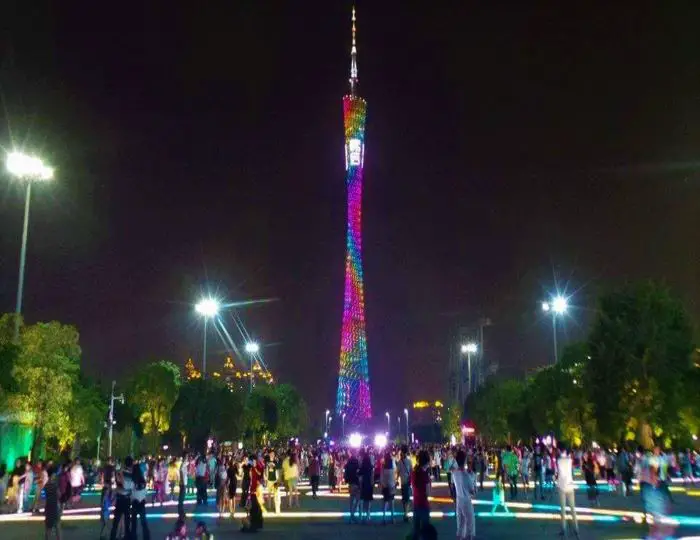
Day 2 – Baiyun Mountain, cable car, Shamian Island, Beijing Pedestrian Street
Baiyun Mountain and Park – At the foot of the mountain there is a stunning and colourful park. The cost to get into the park is 10 Yuan ($1.43) per person. Here you can take many pictures of the beautiful scenery.

Cable car – After taking a stroll in the park, take the cable car up the mountain for panoramic views of the city in the distance. When you reach the top of the mountain there is a small bird aviary and a few eateries. The cost to go up the cable car is 25 Yuan ($3.57), and the cost to go back down is 20 Yuan ($2.86).
Shamian Island – Across the road from the park, take bus number 217 which will take you directly to a subway station (it is the last stop on the bus). From here, take a short ride on the subway to Shamian Island. The island is a pretty place to look around and sit for a drink. The streets are lined with historical buildings influenced by European colonial times.
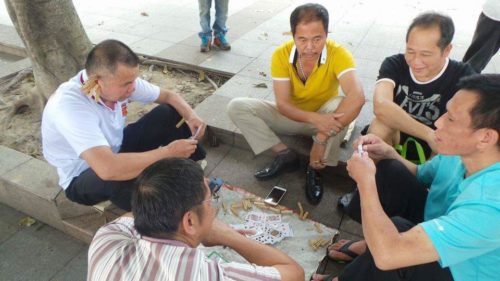
Beijing Pedestrian Street – After a day of taking in some cracking scenery, head towards Beijing Pedestrian Street for some tasty food. The street is filled with all kinds of food options, entertainment, and shops.
Where to stay in Guangzhou
Feeling luxurious: White Swan Hotel – Looking for some relaxing time? This hotel has a huge swimming pool and spa facilities. It is also close to the metro for easy access around Guanzhou.
Budget private room: Elves BNB (Guangzhou East Train Station) – Apartment-style accommodation. The rooms are clean, modern, spacious and overlook the city.
Dorm life: Alley Time Youth Hostel – Close to local markets and street food. It has a great social environment that is equipped with a pool table.
For more prices and deals on properties in Guangzhou, CLICK HERE.
Yangshuo itinerary
Day 3 – take the bullet train to yangshuo.
It’s time to take the first train journey on this backpacking China itinerary. In Guangzhou, you will need to take the subway to Guangzhou South Railway Station. The bullet train from Guangzhou to Yangshuo costs 117 Yuan ($16.71) per person and takes 2.5 hours. When you arrive in Yangshuo you will see a bus ticket office to the right of the train station. Take a 45-minute bus, which costs 20 Yuan ($2.86) per person, into the centre of Yangshuo. This bus will take you to a bus station located a 5-minute drive away from West Street (the main strip in Yangshou).
Day 4 – Ten-Mile Gallery and West Street
Ten-Mile Gallery – Rent a bicycle or an electric scooter and cruise down this fairy-tale-like road. You will be surrounded by mini green hilltop mountains. The average cost of bicycle rental is 20-30 Yuan ($2.86 – $4.28) per bike for the day. To rent an electric scooter, expect to pay between 50-60 Yuan ($7.14 – $8.57) for day hire.
Along the path, there are many attractions. Below is a list of the attractions:
- The Ancient Totem Path
- Butterfly Spring
- Big Banyan Tree
- Assembling Dragon Cave
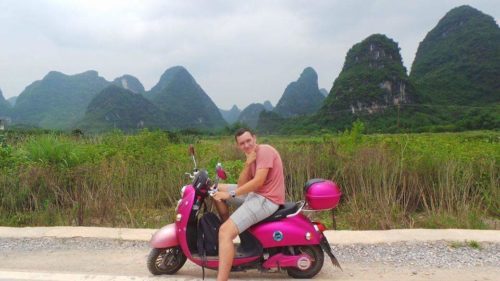
If like us, your budget doesn’t allow you to visit all of them, then we highly recommend the cave, located by Moon Hill. The price at the ticket office is 73 Yuan ($10.42) per person for a tour of the cave, the mud bath, and the hot springs. HOT TIP: Many local people are hanging around that will offer to get your ticket for you at a discount price. We took the risk and it certainly paid off. We managed to bag the ticket for a discount price of 50 Yuan ($7.14) per person.
West Street – Filled with eateries and shops, you will be sure to find something to satisfy your taste buds. At night the street sparkles with lights from the temple-shaped shops and quaint bridge. This is a perfect chill-out spot to eat food, and maybe chug down a drink or two.
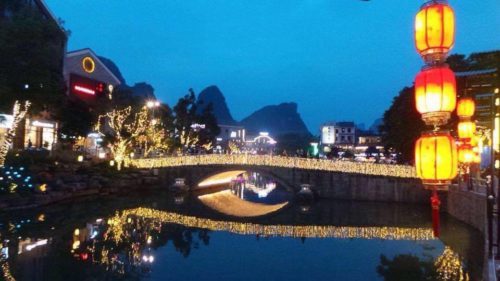
Day 5 – Visit Xingping
Make sure your electric bike is fully charged, and head out on an hours-long drive through the mystical hilltops, into the ancient town of Xingping. The stone streets and buildings give this place an old, but authentic feel. Besides the ancient town, you can see the viewpoint of the 20 Yuan note. It is a great spot for snapping away on your camera!
For a more detailed guide, check out these things to do in Yangshuo.
Where to stay in Yangshuo
Feeling luxurious: Longting Hotel – Large spacious rooms with a classy finish. The hotel also boasts a stunning swimming pool for relaxing at the end of a busy day exploring.
Budget private room: Riverside Retreat Hotel – A stunning hotel that overlooks the mountains. The hotel provides a delicious breakfast and a swimming pool.
Dorm life: Yangshuo 11 Youth Hostel – A small hostel that has a female dorm room, and a mixed-bed dorm room. Great value for money!
For more prices and deals on properties in Yangshuo, CLICK HERE.
Changsha itinerary
Day 6 – make a quick stopover in changsha, whilst on your way to zhangjiajie.
From Yangshuo town centre, you will need to make your way to the North Bus Station. Here, board the bus bound for Guilin (psst…if you have extra time, check out why you should visit Guilin ). The ticket offices all display signs in English, unlike most other places in China. Find the ticket office that is displaying the Guilin Express sign. The bus takes 1.5 hours and costs 27 Yuan ($3.86) per person.
When you arrive in Guilin, you will need to walk about 500 meters from the bus station to the train station. The cost of the bullet train is 192 Yuan ($27.42) and takes 3.5 hours. The train stops at Changsha South Railway Station. From here make your way to your accommodation for the night.
The next morning, your train will leave for Zhangjiajie from Changsha Railway Station (not the one you arrived at yesterday). This train takes 6 hours and costs 54 Yuan ($7.71) per person.
Zhangjiajie itinerary
Day 7/8 – zhangjiajie national park.
Zhangjiajie is probably going to be the most scenic stop on your backpacking China itinerary. It’s home to the famous Avatar Mountains; yup that’s right…the mysterious and beautiful mountains that you have seen in the movie, Avatar, are real. Zhangjiajie National Park is massive, and it can easily take you 4 days that your ticket is valid, for you to cover it all. Whilst in the national park make sure to take a ride on the world’s longest outdoor lift and a cable car ride over the magical green-shrouded mountains.
The cost to enter the park in peak season is 248 Yuan ($35.41). The price includes access to all areas of the park and buses around the park. The cost for the outdoor lift is 72 Yuan ($10.28) one-way and an additional 72 Yuan ($10.28) for the cable car.
Day 9 – Tianmen Mountain
Arrive at Tianmen Mountain’s lower cable car station early in the morning, ready to take the longest cable car in the world to the top of this spectacular mountain. When you reach the top, you will feel like you are walking on cloud nine, as you will be way above the cloud level.
Whilst on the mountain you can walk around the cliff edge walkway to witness incredible views. If you’re brave enough, you can even walk along the glass walkway as you peer down at the never-ending drop below. Finally, hop on a bus to make your way around then the famous 99 road bends to the bottom of the mountain.
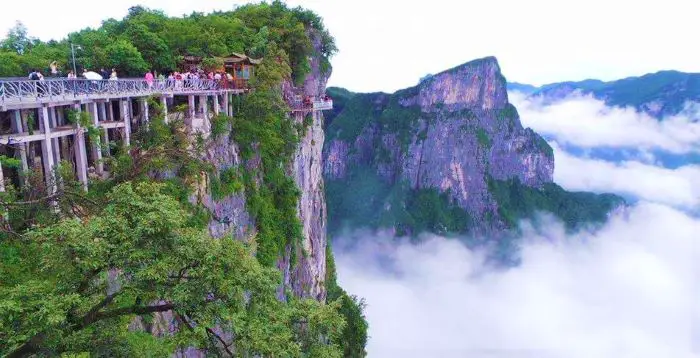
The cost to enter the mountain is 258 Yuan ($36.80) in peak season. The price includes a one-way cable car ride and a one-way bus ride around the 99 bends. Therefore, you must choose which way you would like to go up and down the mountain.
Check out our more detailed review of Tianmen Mountain .
Where to stay in Zhangjiajie
Feeling luxurious: Pullman Zhangjiajie Hotel – Has a MASSIVE swimming pool and plentiful facilities such as a bar, karaoke, and fitness centre. Perfect for those who want to explore the mountains, but also want a relaxing time.
Budget private room: Xiao Wu Ding Inn – Perfect for couples! Offers clean double rooms and a buffet breakfast for you to fill up on ready for a day of exploring.
Dorm life: Zhangjiajie Cloud Youth Hostel – Great value for money, with a variety of dorm rooms to choose from. It also boasts a balcony with spectacular views of the mountains.
For more prices and deals on properties in Zhangjiajie, CLICK HERE.
Chengdu itinerary
Day 10 – train day to chengdu.
Today is a big travel day! You will travel from Zhangjiajie to Chengdu via Changsha. You will need to get up bright and early today to reach Zhangjiajie Train Station first thing in the morning. If you stay in downtown Zhangjiajie, then you will be able to lie in bed for an extra hour. Otherwise, if you’re staying in Wu Lingyuan scenic area you will need to take a mini-bus to the bus station. The minivan will take 1 hour and 15 minutes and is a flat rate of 20 Yuan ($2.85).
Take a train back to Changsha that costs 86 Yuan ($12.27) and takes 4.5 hours. Our train left at 8:15 am and arrived in Changsha at 12:50 pm. From Changsha take an overnight sleeper train to Chengdu for 456.5 Yuan ($36.59).
Day 11 – Panda Research Base and Jinli Ancient Street.
Panda Base – One of the most awesome and interesting facts about Chengdu , is that it is home to the giant panda. Make sure to get up bright and early to see the cute Pandas rolling around at the Chengdu Research Base of Giant Panda Breeding. We recommend you arrive as early as 7:30 am; the time when the pandas are most active. The cost to enter is 58 Yuan ($8.27). If you want to hold a panda, you must book in advance, as it is not an option to book and pay on the day.
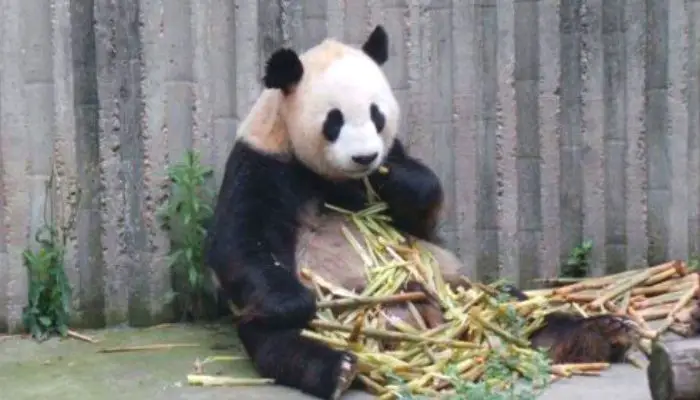
Want to know more about a trip to the panda sanctuary? Click here.
Jinli Ancient Street – After a long day of walking around the Panda Sanctuary, head over to Jinli Ancient Street for some delicious street food. You will be spoiled for choice!
Day 12 – Leshan Giant Buddha and Kuanzhai Ancient Street
Giant Buddha – To see the Leshan Buddha, you will need to make the 2-hour bus journey to Leshan from Chengdu. The bus costs 48 Yuan one-way from Xinnanmen Bus Station. The cost to enter the scenic area around the Buddha is 90 Yuan ($12.84). Alternatively, you can see the Buddha from a boat ride on the river which costs 70 Yuan ($9.99) per person.
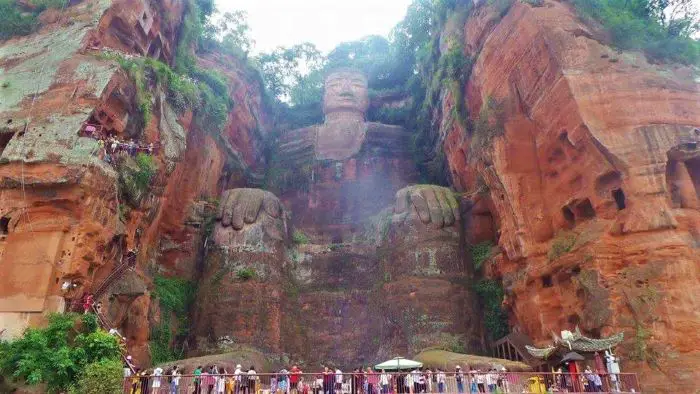
Want more info about the giant Buddha and how to get there? Check out our more detailed blog post here.
Kuanzhai Ancient Street – At night, head to the pretty lantern-filled ancient town for some food, and maybe a drink or two in one of the many bars.
Day 13 – Renmin People’s Park and Dongmen Bridge
Renmin People’s Park – After two fun-packed days, today is the day you can take a little rest. Head to the stunning park and spend some time taking in nature. There is also a pretty lake where you can rent slow boats for 40 Yuan ($5.71) per hour.
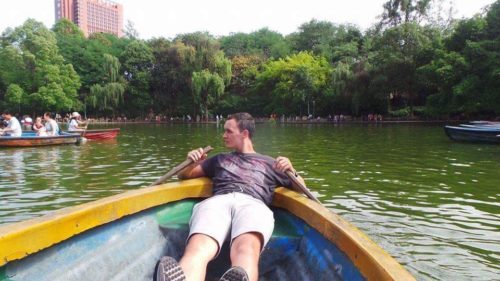
Dongmen Bridge – In the evening head to see the bright-coloured bridge, and tuck into some traditional Chengdu food from the street vendors nearby.
Where to stay in Chengdu
Feeling luxurious: Felton Gloria Grand Hotel – Elegantly decorated rooms with plentiful facilities. There is also an indoor swimming pool for guests to enjoy.
Budget private room: Travelling with Hotel – Cozy place to stay with a great social vibe. The hotel has free games and table tennis.
Dorm life: Chengdu Flipflop Hostel Poshpacker – Fantastic location! The hostel boasts a cosy lounge area with games and books for guests. They also offer tour services.
For more prices and deals on properties in Chengdu, CLICK HERE.
Xi’an itinerary
Day 14 – train from chengdu to xi’an.
Today you will need to pack up your bags and spend the day chilling out in one of the many tea shops, whilst you wait for your train. Your next stop is Xi’an; home to the Terracotta Warriors. Take an overnight sleeper train from Chengdu to Xi’an. The cheapest train costs 244 Yuan ($34.82) for a hard sleeper. The length of the journey differs from 10 to 18 hours, depending on the train. It’s impossible to fit everything into a 21-day trip to China, so in this itinerary, we have only allocated 1 full day in Xi’an to see the Terracotta Warriors, but if you have more time in Xi’an there is so much more to see and do. Check out this awesome Xi’an itinerary.
Day 15 – Terracotta Warriors and the Muslim Quarter
Terracotta Warriors – A visit to the Terracotta Army is a must when backpacking China, so make sure to dedicate a day to admiring this amazing work of art. The easiest way to get there is to go to Xi’an Railway Station. From the railway station take bus 306 (line 5) which goes directly to the Terracotta Warrior site in a swift 1 hour. The bus costs 7 Yuan ($1) one-way. The cost to enter the Terracotta Warrior site is 150 Yuan ($21.41) per adult. The cost of an audio guide is 40 Yuan ($5.71). If you want a human guide to take you around, this can also be arranged.
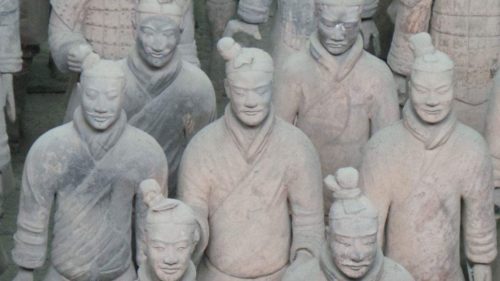
Muslim quarter – In the evening explore the Muslim quarter. Many local street stalls sell all kinds of foods. The area is buzzing, and you’re bound to find some delicious treats.
Where to stay in Xi’an
Feeling luxurious: New Century Grand Hotel – The hotel has on-site spa services, a swimming pool, and a restaurant. Perfect for couples looking for a relaxing time together.
Budget private room: Alley Youth Hostel – Clean hostel with a range of bed types; dorm, single private, or double private. There is also a restaurant and a tour desk. The hostel is a great place to connect with other travellers.
Dorm life: Alley Youth Hostel – As mentioned above, the hostel offers a range of beds and room types. It’s also in a fantastic location!
For more prices and deals on properties in Xi’an, CLICK HERE.
Beijing itinerary
Day 16 – travel to beijing.
Beijing is the last stop on your backpacking China trip! The easiest way to get to Beijing is by taking the high-speed rail. You can reach Beijing in a quick 4.5 hours as opposed to a long 13-hour road journey. The cost of a second-class seat will set you back 515 yuan ($73.50). When you arrive in Beijing, it may take you a while to get to your accommodation, due to the long queues at the subway station, and the sheer size of Beijing. By this point, you may want to grab something to eat and take a rest. P.S. If you plan to head to Mongolia after Beijing, it’s a good idea to apply for your Mongolian visa on your first day in Beijing.
Day 17 – Forbidden City, Beihai Park and Wangfujing Snack Street
Forbidden City – Today you will explore the famous Forbidden City ; where the Emperors of China, from past dynasties, once lived. The complex is one of the largest in the world and you can easily spend a few hours here admiring the amazing architecture and structures. The cost to enter is 60 Yuan ($8.56). TIP: Don’t forget to bring an ID as this is required to buy a ticket.
Beihai Park – Located just 1 km from the exit of Forbidden City. The park costs 10 Yuan to enter and is a nice way to relax after walking around the huge Forbidden City complex.
Wangfujing Snack Street – After a long day, take a trip to this famous snack street. You can try anything from delicious dumplings to fried spiders and scorpions. If you’re still hungry for more Chinese delicacies, make sure to check out these other food markets in Beijing too.

Day 18 – The Great Wall of China at Mutianyu
It’s time to tick off that bucket-list goal! For spectacular views of the wall head to the Mutianyu entrance. You can easily reach the wall by public transport. The cost to enter the Great Wall is 45 Yuan ($6.42) per person. You can also take opt to take the cable car, chair lift, or toboggan up and down for a total cost of 110 Yuan ($15.70). Don’t fancy going it alone? look into booking an organised tour.
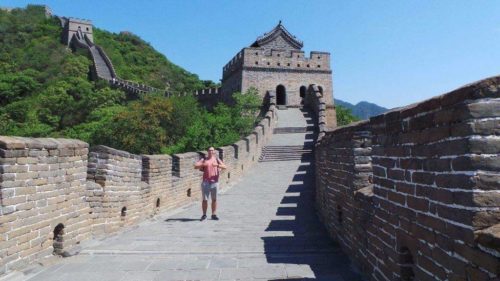
Click here for more information about the Great Wall at Mutianyu and our experience.
Day 19 – The National Museum
Take some time to learn about the history of China at the National Museum. You can easily spend a couple of hours here absorbing all the country’s history and dynasties. The best thing…the museum is free to enter.

Day 20 – Last-minute shopping
This is the last day before heading off home, or continuing your travels in other parts of the world. Take some time to explore the streets and go shopping for a bargain in Beijing.
Day 21 – Time to leave
After a whirlwind of a time backpacking China, it is finally time to pack up and leave. For us, it was time to make the journey overland from China to Mongolia for an awesome backpacking Mongolia adventure.
If you are not ready to leave China just yet, why not check out these historical places in China?
Where to stay in Beijing
Feeling luxurious: Asia Hotel Beijing – Offers an indoor swimming pool, garden area, and fitness facilities. In a great location for travellers interested in sightseeing.
Budget private room: Beijing Together Hostel – Offers dorms and twin double rooms. Great for couples that want to socialise with others but also want the privacy of their room.
Dorm life: Lab Hostel – Has a wide range of bed types to choose from and has a great social space. The hostel boasts a bar that serves cocktails and a room to watch films.
For more prices and deals on properties in Beijing, CLICK HERE.
Costs of backpacking China
Currency: The local currency of China is Renminbi. However, the currency is often referred to as Yuan or Quay. All three mean the same thing. The current exchange rate is 7 Yuan to $1.
Daily budget: We recommend a budget of $40/ 280 Yuan per person per day.
Accommodation: For a private double room with a bathroom expect to pay between $20 – $26.
Food and drink: For chow mien or egg fried rice, in a small local eatery, prices range from 15 – 25 Yuan ($2.14 – $3.57). A small bottle of water from a shop costs 3 Yuan ($0.43).
Local transport: The transport systems within the cities and towns are extensive and fairly cheap. For a 40-minute journey on the subway expect to pay around 6 Yuan ($0.86).
Across-country transport: China is a massive country! Therefore, the prices of trains can vary massively. The cost depends on the type of train and the length of the journey. The cheapest train we rode was 70 Yuan ($10), whilst the most expensive was 515 Yuan ($73.54). However, if you want to save on costs, consider cycling in China , which will certainly allow you more freedom.
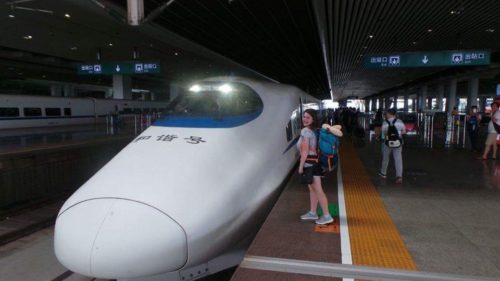
Backpacking China travel tips
Book trains in advance – Backpacking China isn’t easy when it comes to transport. Unlike in Southeast Asia, transport needs to be booked in advance as seats get filled quickly. We recommend booking your train to your next destination at least 2-3 days before you want to leave. At peak times we recommend booking even sooner.
Download a VPN – For social media addicts out there, you may want to download a VPN before entering China. A VPN will allow you to use your fave social media sites. The two free VPN apps that we used were VPN Master and VPN Robot, but the former has malware risks, while the latter no longer works in China. You may alternatively choose to consider paid VPN apps that tend to be safer and more reliable.
Use Ctrip – Ctrip is a site where you can book flights, trains, and hotels in advance. However, there is a small charge for doing this. Even if you don’t book through Ctrip, you can use it to jot down the train code, to make it easier for you to book the train at the counter.
Download word translator apps – People in China speak very little English, so having a word translator will help you a lot.
Lay off the beer – Beer is quite expensive, so try to limit your intake. Doing so will mean that you have more money for other fun activities.
Make use of the metro – The metro is very easy to use, and most cities and towns have one. It’s an easy and convenient way to get around.
Buy water before entering attractions – As with anywhere in the world, water and snacks are considerably more expensive inside attractions. Save money by purchasing water beforehand.
Keep an eye on your budget – Costs can quickly add up! We were surprised at how much we spent whilst backpacking in China. By keeping track of where you are spending your money, you will be able to cut out inessential items.
Essential resources for backingpacking China
Travel Insurance – No matter where you’re travelling to, it’s a good idea to make sure you’re covered for any accidents or losses. We spent days and weeks searching for insurance, but most insurers would not allow us to take out a policy as we were already abroad. Our personal choice is Safteywing . You can opt for automatic monthly payments, just like a subscription. More importantly, it is available in 180 countries and can be purchased whilst already travelling. There is no cap on the duration of travel.
Visa – Before you travel to any country, make sure to check if you need a visa. iVisa is a fantastic website that is super easy and quick to use. Just type in where you are from. and where you are going. to check if you need a visa. If you do, you can quickly make an application online.
Accommodation – Booking.com is our go-to when looking to pre-book accommodation online. Booking.com tend to almost always have the best rates and a FREE cancellation policy for most properties.
Tours & Activities – If you want to book tours and activities online, make sure to check out Get Your Guide . Get Your Guide takes the stress out of booking activities abroad. You will also find a range of benefits, such as skip-the-line passes, lunch included in your tours, and so much more.
Travel tips ebook -Before you head off on your adventure, make sure to download our free ebook. It has a whopping 109 budget travel tips to help you make your hard-earned cash go further. Click here to download your FREE ebook.
What’s next on your bucket list? Why not go from backpacking China, one of the world’s most densely populated countries, to backpacking Mongolia , one of the world’s least populated countries?
Like this post? Pin it!

Leave a Reply Cancel reply
You must be logged in to post a comment.
This site uses Akismet to reduce spam. Learn how your comment data is processed .

- Share full article
Advertisement
Supported by
Xi Visits Europe, Seeking Strategic Opportunity
The Chinese leader has carefully chosen three countries — France, Serbia and Hungary — that to varying degrees embrace Beijing’s push for a new global order.

By Roger Cohen and Chris Buckley
Reporting from Paris and Taipei, Taiwan
On his first visit to Europe in five years, the Chinese president, Xi Jinping, appears intent on seizing opportunities to loosen the continent’s bonds with the United States and forge a world freed of American dominance.
The Chinese leader has chosen three countries to visit — France, Serbia and Hungary — that all, to a greater or lesser degree, look askance at America’s postwar ordering of the world, see China as a necessary counterweight and are eager to bolster economic ties.
At a time of tensions with much of Europe — over China’s “no limits” embrace of Russia despite the war in Ukraine, its surveillance state and its apparent espionage activities that led to the recent arrest in Germany of four people — Mr. Xi, who arrived in France on Sunday, wants to demonstrate China’s growing influence on the continent and pursue a pragmatic rapprochement.
For Europe, the visit will test its delicate balancing act between China and the United States and will no doubt be seen in Washington as a none-too-subtle effort by Mr. Xi to divide Western allies. Chinese-French relations “have established a model for the international community of peaceful coexistence and win-win cooperation between countries with different social systems,” Mr. Xi said in a statement issued soon after he arrived in Paris.
He has timed his arrival at his second stop, Serbia, to coincide with the 25th anniversary of the deadly NATO bombing of the Chinese Embassy in Belgrade during the Kosovo war. That mistaken strike on May 7, 1999, for which the White House apologized, killed three Chinese journalists and ignited furious protests around the U.S. Embassy in Beijing.
“For Xi, being in Belgrade is a very economical way to ask if the United States is really serious about international law,” said Janka Oertel, the director of the Asia program at the European Council on Foreign Relations in Berlin, “and to say, how about NATO overreach as a problem for other countries?”
The Chinese government has continued to commemorate the Belgrade bombing, using it as an occasion to denounce what it sees as Western hypocrisy and bullying.
“The United States always views itself as the leader — or hegemon — of the world, so China is a competitor or adversary that is challenging its hegemony,” said Tu Xinquan, the dean of a trade institute at the University of International Business and Economics in Beijing. “The European Union does not have a hegemonic mind-set.”
The official doctrine of the 27-member European Union defines China as “a partner for cooperation, an economic competitor and a systemic rival.” If that seems a mouthful, and a perhaps contradictory one, it is because the continent is torn between how to balance economic opportunity in China with national security risk, cybersecurity risk and economic risk to various industries.
In March, China’s foreign minister, Wang Yi, told reporters that Europe’s formula was unworkable. “It’s like driving to a crossing and finding the red, yellow and green lights all on at the same time,” he said. “How can one drive on?”
Now, Mr. Xi would like to ease the lights toward green.
To that end, Mr. Xi’s first and most important stop will be in France, whose president, Emmanuel Macron, has often made the Gaullist point that Europe “must never be a vassal of the United States,” as he did last month at a speech at the Sorbonne . The French leader insists that the survival of the European Union depends on “strategic autonomy” and developing the military resilience to become a “Europe power.” He rejects the notion of “equidistance” between China and the United States — France is one of America’s oldest allies — but wants to keep his options open.
All of this is music to Mr. Xi’s ears.
“Macron is trying to bring a third way in the current global chaos,” said Philippe Le Corre, a prominent French expert on relations with China. “He is trying to walk a fine line between the two main superpowers.”
Just over a year ago, Mr. Macron was lavishly entertained during a visit to China that ended with a Sino-French declaration of a “global strategic partnership.” The French leader echoed the Chinese lexicon of a “multipolar” world, freed of “blocs” and the “Cold War mentality.”
Now, in anticipation of Mr. Xi’s visit, China has praised France as a great power and expressed hopes that their ties “will always be at the forefront of China’s relations with Western countries,” in the words of Lu Shaye , China’s ambassador to France, in People’s Daily.
Mr. Macron, who recently warned that “our Europe is mortal” and will be saved only if it can become “sovereign,” will host a state dinner for Mr. Xi on Monday in Paris before, in a personal touch, ushering him to a favorite childhood haunt in the Pyrenees.
The chemistry between the two men appears to lie essentially in a shared view that the postwar order is moribund and must be replaced by a new architecture that takes account of shifting power. That Mr. Xi is almost certainly the most repressive and authoritarian leader in recent Chinese history, and that China’s military threats to Taiwan have intensified, has not come between the two leaders.
In the past six months, Mr. Macron has visited both India and Brazil in a push to place France at a fulcrum between the BRICS group of developing countries, which includes China, and Western powers. At a time of growing tension between the “Global South” and Western powers, he sees France as a bridge.
From France, Mr. Xi will move on to the warm embrace of Serbia, where China is the second largest trading partner, and Hungary, where its prime minister, Viktor Orban, has backed enormous Chinese investment and used his country’s position as a European Union member to dilute criticism of China. Both countries bridle at American power.
Beyond these two friends of China, there are, however, serious European differences with Beijing, whose economy was roughly the same size, measured in dollars, as the European Union’s when Mr. Xi last visited in 2019. China’s economy is now some 15 percent bigger.
Last fall, the European Union opened an investigation into whether electric vehicles made in China benefited from unfair subsidies, with a decision expected by this summer. That has caused tensions with Beijing and with Germany, whose presence in the Chinese auto market dwarfs that of other European countries. China accounts for at least half of Volkswagen’s annual profits.
German manufacturers, with plants in China, fear that any imposition of European tariffs could affect its own exports from China, as well as cause tit-for-tat retaliation.
The European Union Commission president, Ursula von der Leyen, will join the talks in Paris with Mr. Xi. Chancellor Olaf Scholz of Germany, whose relations with Mr. Macron have been strained, dined with the French president in Paris this past week. All of this is clearly part of an attempt to forge a united European front.
That, however, is always elusive.
Anger toward Russia in Europe runs highest in frontline states with Russia, like Poland and the Baltic States. They are perhaps the most fiercely attached to the alliance with the United States that Mr. Macron wants to offset by building a sovereign Europe. They are also the most wary of China, which has never condemned Russia’s war in Ukraine.
Mr. Macron, like Mr. Scholz during a visit to China last month, believes that Chinese leverage in bringing an end to the war in Ukraine is critical. Only Beijing, in the French analysis, can bring real pressure to bear on President Vladimir V. Putin of Russia, who will be sworn in for a fifth term during Mr. Xi’s European visit.
The issue, as it was last year during Mr. Macron’s visit to Beijing, is that China has shown little or no inclination to do so. Indeed, Mr. Xi is scheduled to host Mr. Putin in China later this month.
“It’s hard to imagine another discussion on Ukraine,” François Godement, a special adviser and resident senior fellow at the Institut Montaigne in Paris, said of the talks between Mr. Macron and Mr. Xi. “Those dice have been rolled.”
Still, there is little doubt that Mr. Macron will try again to enlist Mr. Xi’s support ahead of a Ukraine peace conference in Switzerland in mid-June.
At a deeper level, Mr. Macron appears certain to try to use Mr. Xi’s visit to advance an agenda that guarantees Europe’s relevance in the coming decades. He is wary of a United States that may re-elect former President Donald J. Trump in November, with unpredictable consequences.
Mr. Wang, the Chinese foreign minister, has said , “As long as China and Europe join hands, bloc confrontation will not occur, the world will not fall apart, and a new Cold War will not take place.”
For all of the fundamental differences in governance between China’s one-party state and Western liberal democracy, the leaders of the three European countries Mr. Xi has chosen to visit appear to embrace that Chinese statement.
Reporting was contributed by Olivia Wang from Hong Kong, Keith Bradsher from Beijing, Christopher F. Schuetze and Melissa Eddy from Berlin and Ségolène Le Stradic from Paris.
An earlier version of a picture caption with this article misstated the year of the NATO bombing of the Chinese Embassy in Belgrade. It was 1999, not 1993.
How we handle corrections
Roger Cohen is the Paris Bureau chief for The Times, covering France and beyond. He has reported on wars in Lebanon, Bosnia and Ukraine, and between Israel and Gaza, in more than four decades as a journalist. At The Times, he has been a correspondent, foreign editor and columnist. More about Roger Cohen
Chris Buckley , the chief China correspondent for The Times, reports on China and Taiwan from Taipei, focused on politics, social change and security and military issues. More about Chris Buckley
China set to launch high-stakes mission to moon's 'hidden' side
- Medium Text
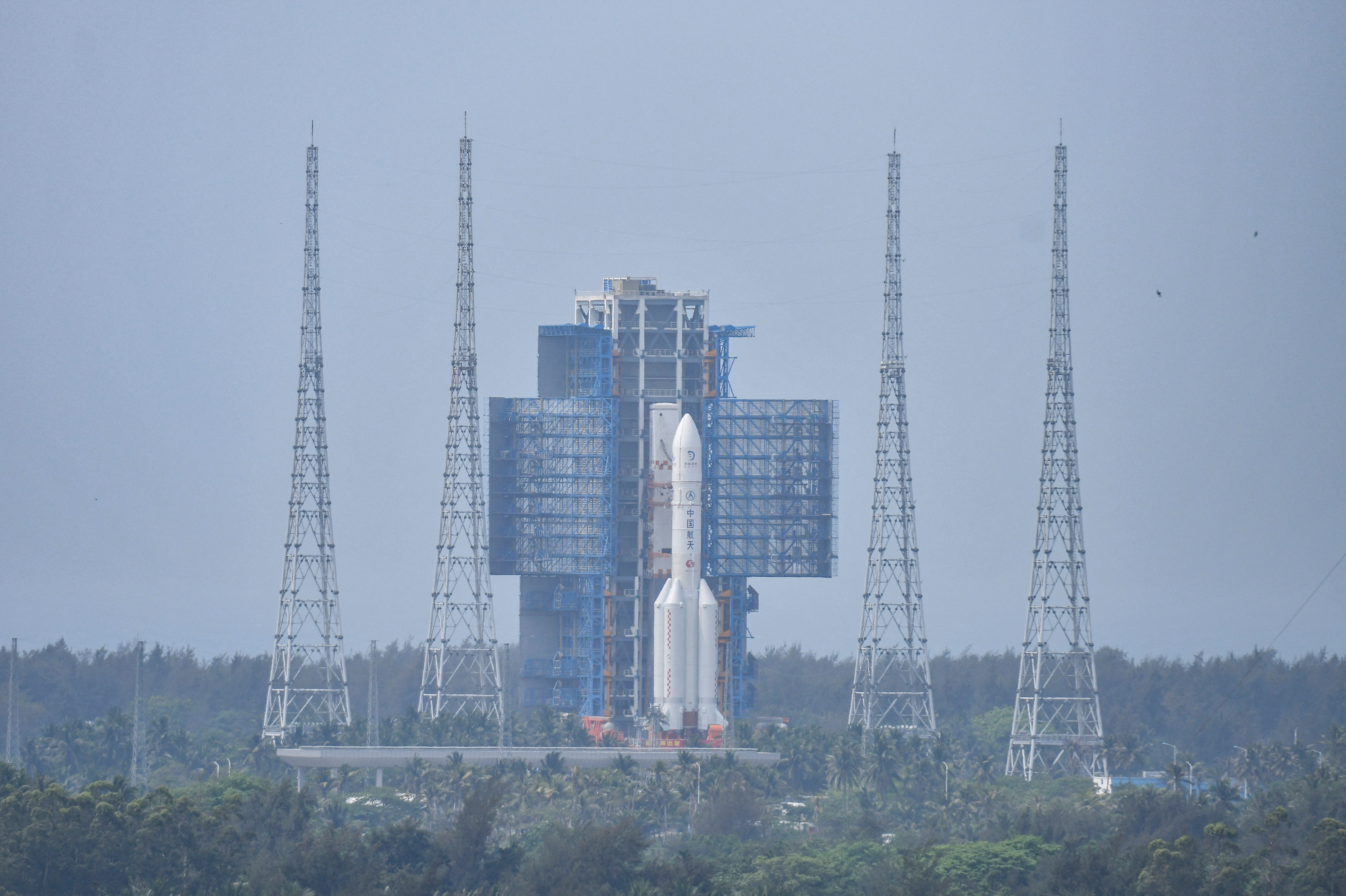
- China expected to launch Chang'e-6 lunar mission this week
- Chang'e-6 to return with soil samples from moon's far side
- Chang'e-6 mission expected to last 53 days
SOUTH POLE AMBITIONS
Sign up here.
Reporting by Albee Zhang and Ryan Woo. Editing by Gerry Doyle
Our Standards: The Thomson Reuters Trust Principles. New Tab , opens new tab

German company HyImpulse successfully launched on Friday a candle wax-powered rocket capable of carrying commercial satellites on a test suborbital flight into space for the first time.

Technology Chevron

Kretinsky and Layani face off in battle for distressed IT firm Atos
The battle for debt-laden IT consulting firm Atos pits Czech billionaire Daniel Kretinsky against French businessman David Layani, indicative offers, presenting widely different tactics to strengthen the company's finances, showed on Monday.

Synopsys will sell its software integrity (SIG) unit to a private equity consortium led by Clearlake Capital and Francisco Partners in a deal valued at $2.1 billion, the chip designer said on Monday.

We've detected unusual activity from your computer network
To continue, please click the box below to let us know you're not a robot.
Why did this happen?
Please make sure your browser supports JavaScript and cookies and that you are not blocking them from loading. For more information you can review our Terms of Service and Cookie Policy .
For inquiries related to this message please contact our support team and provide the reference ID below.

COMMENTS
4. 3-Week China Itinerary (Beijing-Silk Road-Shanghai) The Silk Road. Three weeks allows you to experience a more colorful China. After a 4-Day Beijing Highlights and Great Wall Night Tour, you can travel to West China, where you can feel a sense of exploration and freshness. You will see many relics along the Silk Road.
9.6 Visiting the Beijing Olympic Park. 9.7 798 Art District. 9.8 Where to stay in Beijing. 10 Great Wall of China: Day 3. 10.1 How to get to the Great Wall of China. 11 Suzhou: Day 4. 12 Shanghai: Day 5-6. 12.1 Visit the Bund and Modern Shanghai. 12.2 Explore the French Quarter.
Ratnakorn Piyasirisorost / Getty Images. Gansu Province has so much to offer travelers to China it would be easy to spend an entire trip just exploring the province from north to south.. In the north, visitors can travel the ancient Silk Road routes on the edges of the Gobi Desert, visit UNESCO-listed Mogao Caves and ride camels through the dunes.
Hong Kong. It's a very packed one-month itinerary for China, but it is feasible. If you have more time in China, I'd also recommend the following places that I have since visited: Yunnan: Travel in Yunnan takes you through a diverse landscape that shifts from dramatic snow-capped mountains to sprawling rice terraces.
Best for minority culture & natural beauty. Duration: 2-3 weeks Route: Kunming > Yuanyang > Jinghong > Dali > Erhai Lake > Lijiang > Tiger Leaping Gorge > Zhongdian Yunnan is China's coolest province, a traveller's favourite. It offers a wide variety of scenery and peoples: half the population belongs to one of around 27 minorities, each with its own culture.
Itinerary #1: China's Ancient Capitals & River Cruise. Not only does this two-week itinerary include visits to China's historic capital cities of Beijing, Zhengzhou, Luoyang, & Xi'an, but you'll also take a stroll along the Great Wall and round out the trip with a cruise down the Yangtze River. Enjoy a cruise down the Yangtze.
Why Book with China Discovery. Affordable and valuable price. 100% tailor-made packages. Highly rated customers reviews. Efficient customer support. All about china travel in our China Travel guide, including destinations, attractions, transportation, weather, hotels, maps, visa and trip ideas for traveling.
Thanks to the new high-speed train line, the once 9-hour train ride between Beijing and Pingyao take just over 4 hours now. The most convenient departure for travellers is at 7:46 am from Beijing, arriving at 12:08 in Pingyao. The cost of the train is either 183 yuan (second class) or 254.5 yuan (first class).
China Travel Guide. Last Updated: April 29, 2024. There are few countries in the world with a culture as distinct as China. A country of contrasts, China offers thriving metropolises like Beijing, Shanghai, and Hong Kong as well as beautiful mountains, valleys, rivers, and plains in the West and Southern parts of the country.
Cruise the beautiful Yangtze River. A Yangtze river cruise is one of the most memorable experiences you can have in China. We'll take you to some of the most extraordinary stops on the Yangtze, including the 12-storey cliff-top temple of Shibaozhai, and the mystical shrines and monasteries of Fengdu's 'Ghost City'.
Backpacking China Travel Guide (Tips + Secrets for 2024) Backpacking China is an attack on the senses. From the unbelievable sight of the Great Wall stretching off to infinity to the mouth-numbing sensation of hot pot, to the soothing sounds of an old man playing an erhu in the park. Get ready for sensory overload on any visit to China.
Below Top 10 China Tours are more recommended as the first-timer China trips which covers the most classic travel destinations in China, such as Beijing, Xian, Guilin, Shanghai, Zhangjiajie, Chengdu, etc. If you want a tailor-made tour, you can use our helpful China Tour DIY Tool. The perfect China tour of your own is only several steps away by ...
Train: The most usual way to get from Europe to China via train is to hop on the Trans-Siberian railway. The Trans-Siberian train is a lot easier to arrange when it comes to booking a ticket or organizing your visas. And it is significantly faster. The Trans-Siberian route, from Moscow - Beijing, is just one train.
How do I plan a trip to China now that international travel is back? Mar 28, 2023 • 3 min read. Food and Drink. What to eat and drink in China. Oct 10, 2022 • 6 min read. National Parks. The ultimate guide to things to do in China. Oct 29, 2021 • 11 min read. National Parks.
The Ultimate China Travel Guide: How to Plan a Trip to China Summer in Sanya. A trip to China can be an exciting adventure, as it offers you a rich tapestry of cultural experiences, breathtaking landscapes, and historical marvels. However, to make the most of your journey and avoid unnecessary hiccups, thorough planning is essential.
Price from $1757. More Tours ». 12 Days Shanghai Yangtze Cruise Xian Beijing China Tour. Shanghai / Yichang / Yangtze Cruise / Chongqing / Xian / Beijing. Price from $2,132. 10 Days Most Classic China Tour. Beijing / Xian / Guilin / Yangshuo / Shanghai. Price from $1,999. 13 Days China Superb Landscape Tour including Zhangjiajie.
Day 3 - Take the bullet train to Yangshuo. It's time to take the first train journey on this backpacking China itinerary. In Guangzhou, you will need to take the subway to Guangzhou South Railway Station. The bullet train from Guangzhou to Yangshuo costs 117 Yuan ($16.71) per person and takes 2.5 hours.
China's Xi Jinping is visiting Europe for the first time in five years - his goodwill tour will be an uphill struggle ... Xi's trip - with stops in France, Serbia and Hungary - is an ...
May 5, 2024 Updated 12:01 p.m. ET. On his first visit to Europe in five years, the Chinese president, Xi Jinping, appears intent on seizing opportunities to loosen the continent's bonds with the ...
China will send a robotic spacecraft in coming days on a round trip to the moon's far side in the first of three technically demanding missions that will pave the way for an inaugural Chinese ...
Rao also indicated that if Taiwan agreed to resume direct sea passenger routes from Pingtan county in Fujian, residents of the southeastern province could travel in groups to the island.
May 3, 2024 at 3:31 AM PDT. Listen. 2:30. Russian President Vladimir Putin plans to visit China little more than a week after starting his new term in office, underscoring the growing importance ...